.webp)

Everest Base Camp Trek
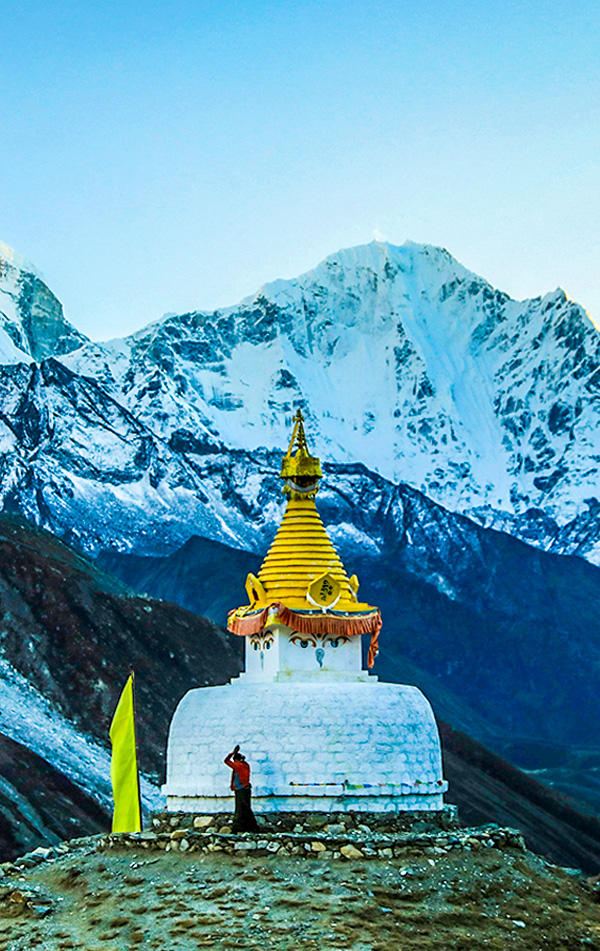
Kathmandu |
Kathmandu | Nepal
Max Altitude
Trekking Km
Help & Support
67000 /person $ /person.
- October-2024
- November-2024
- +5% GST (Goods and Services Tax)
- USD 1500 +5% GST for Non-Indians
- Services Kathmandu to Kathmandu
- Lukla flight, Food & Stay in Kathmandu included
Offload 5300
Backpack offload is optional
Choose add-ons during booking. If missed, log in and add them later.
Book off-load at least 10 days before the trek.
For offline bookings at the base camp, a convenience fee of Rs. 6000 applies.
Cancellations made before the trip date will receive a full refund.
For more information. Please complete this form.
Help & Support
Trek Name: Everest Base Camp Trek
Adventure Type: Trekking
Base Camp: Kathmandu
Season: Summer | Autumn |
Month: March | April | May | September | October | November |
Country: Nepal
Altitude: 18200 Ft.
Grade: Difficult
Rail Head: Kathmandu is not connected to any Railways
Stay: Hotel and teahouse
Food: Meals while on trek & at Hotel/Guesthouse (Veg & Eggs)
Location: Kathmandu
Distance: 108 Km.
Trail Type: One way trail | Camping in various locations, starting and ending at the different point.
AirPort: Kathmandu (Tribhuvan International Airport)
Why Everest Base Camp Is A Must-Do Trek
When it comes to trekking in the Himalayas, Mt. Everest is the most celebrated peak and not just in our country but all across the globe. For avid trekkers and mountaineers, getting up close to the highest mountain peak in the world is a once-in-a-lifetime experience. This classic trek takes place in the Bagmati Zone of Nepal and allows you to experience the immense beauty of the surroundings. Along your trek, you will get to witness 4 of the 6 highest mountain peaks in the world — Cho Oyu (8,201 m), Mt. Makalu (8,470 m), Mt. Lhotse (8,516 m), and Mt. Everest (8,848 m).
Everest Base Camp is a teahouse trek, which means you will stay at some of the highest villages in the world and get a close look at their cultures and traditions, and life in the remote corners of the Himalayas. Staying at the Sherpa villages you will get to learn a lot about the mountain lifestyle and how inextricably the people are connected to the mountains. There are many notable junctures throughout the trek and Kala Patthar is one such point. Standing at an altitude of 5,500 m it offers an astonishing view of Mt. Everest . EBC trek presents a wonderful opportunity to experience the grandeur of the Himalayas, the imposing challenge and thrill of the climb, and the charming culture of Nepal.
Trekking in Nepal is all about trekking amidst the biggest mountain ranges and on this trek, you will see mountains surrounding you. All along the way, you can feel the sense of legacy left behind by the greatest mountaineers. Crossing the route beyond Namche Bazaar, you will come across, Tenzing Norgay Stupa, a tribute to the great mountaineer, who was the first to scale Mt. Everest along with fellow mountaineer Edmund Hillary. Also, just near Dughla on Everest highway, there are memorials for distinguished mountaineers who dedicated their lives on the slopes.
Reaching Everest Base Camp means trekking through the traditional Sherpa villages, with warm and friendly villagers, hidden Gompas, picturesque mountain views, and exceptional natural beauty. Those who take part in such a trek will never forget the amazing experience.
About The Trek
Your journey will start at Kathmandu from where you will take a short flight to Lukla. The iconic trek starts at Lukla in the southern part and the trail weaves towards Namche Bazaar in the north. We will stay a day here, acclimatizing to the higher altitudes. It then diverges in the northeast direction towards Pheriche and Dingboche. Once we reach Dingboche, we will spend a day at Dingboche as a rest day. From Dingboche, the route continues to Lobuche. Everest Base Camp is a little further east from here and the Kala Patthar viewpoint can be seen towards the west.
There are other variations to the trek route as well, where the trek bifurcates towards Gyoko Ri early on at Namche Bazaar. The route then follows the left side to arrive at the Base Camp. Sometimes people also prefer trekking from Jiri village instead of Lukla, Jiri is a short bus ride away from Kathmandu. However, trekking from Jiri adds a couple of days to the trek as Jiri is considerably further away from Lukla. The EBC trek follows a gradual ascent up to the base camp, following which there is a steep descent. The entire journey lasts for 13 days and in between, we also have acclimatization days as well.
What Can You Expect At The Trek
It is a difficult grade trek. Trekking to the Everest Base Camp requires exceptionally high physical fitness and while the trek is not dangerous, you need to prepare well for it. A variety of factors add to the difficulty of the trek like the terrain, the duration of the trek, the distance covered every day, and the number of days spent at high altitude and a difficult exit in case of emergencies. While all trek is not especially tricky but it is surely an endurance test.
It is a high altitude trek and as such chances of AMS are quite high but with adequate hydration, proper rest, and a well-planned itinerary taking into consideration the acclimatization criteria will help counter such issues. Our trek leaders are mountaineering-certified individuals with a keen understanding of AMS and other high-altitude issues. They can detect the signs of AMS early on and adopt necessary measures for the prevention of the same. Our Trek Leaders are also all Wilderness First Aid Responders, who are diligent in handling emergencies.
The trek from Lukla to Everest Base Camp is 50 km and it takes 13 days to complete the trek starting from Kathmandu. To mitigate the risks of being at a higher altitude for such a long time, we have incorporated acclimatization and rest days in the itinerary. Mt. Everest can be spotted multiple times on the trek even in the initial part of the trial.
In cold conditions, batteries drain pretty quickly be it phones, cameras, or Kindles. Make sure to bring spare batteries with you. Some teahouses allow you to charge your phone and other electronics but they will charge you for it.
Be prepared for extreme weather conditions as the weather at high altitudes is unpredictable. Layer properly to regulate your body temperature and stay comfortable while trekking. When its sunny, the weather can get quite warm and you may even have to discard a couple of layers in the first few days of trekking, however, the temperature at night drops pretty quickly. Make sure to drink a lot of water to stay hydrated and avoid altitude sickness. Also, remember that sunburn happens much quicker at higher altitudes so always wear sunscreen and keep your sunglasses ready.
Accommodations at Everest Base Camp will be in teahouses in Sherpa villages or mountain lodges. Also, keep enough cash with you as there are no ATMs in Lukla. Also, if you want to do some last-minute shopping for trekking gear and equipment, Kathmandu is a good place to do so.
- Who can Participate
- Important Links
- How to Reach
- Trek Essential
Who Can Participate
Age; 15 years.
Experience of any high altitude trek, at least 1 treks of 4,000m/13,100ft.
The climber must be fit and have sufficient stamina to cover 5 km of distance in 30 minutes without stress.
The climber should be able to carry a 12-16 kg backpack.
Pulse rate at rest must be in between (60 to 90 beats per minute)
Blood Pressure Reading must be in between (DIASTOLIC 70 – 90, SYSTOLIC 100 - 140 mm Hg)
Respiratory rate at rest must be in between (12 to 20 breaths per minute)
Should not have Liver and kidney issues
Should not have Diabetes Mellitus, Bronchial Asthma, Heart problems, Hypertension etc
No pacemaker implant
People with the Sinus issues, Epilepsy please contact to trek coordinator before booking the trek
If your BMI is not normal, Please contact our Trek coordinator before Trek booking.
Medical & Disclaimer Form (Mandatory Documents) Click here to download Medical & Disclaimer Form
- Government Employees can avail the benefit of Special Casual Leave (SCL) when you join us for a trekking expedition. As per the rules of the Pay Commission, Special Casual Leave can be availed for up to 30 days in a calendar year for trekking/mountaineering expeditions through a registered organization. Trek The Himalayas is a registered adventure tour operator by Indian Mountaineering Foundation (IMF) and Ministry Of Tourism (MOT)
- Trekkers have to apply for leave at least 20 days before trek departure date,
- This service is exclusive to Indian government employees and is applicable only for treks within India.
- Do mail at info@trekthehimalayas to apply and mention your booked trek date and trek name.
Junior trekkers (below 15 years) should have a company of parents/guardians.
Trekkers between 15 to 18 years can come solo with the disclaimer form signed by parent/guardian.
- Medical & Disclaimer Form (Mandatory Documents) Click here to download Medical & Disclaimer Form
Exercise For Difficult
Fitness Regime For:
Calculate Your Bmi
Your BMI value is
Congratulations, your body is in good conditions!
Arrive At Kathmandu
- Altitude: 1,400 m/ 4.600 ft.
- Spend the day exploring Kathmandu.
- A short briefing session in the evening.
- Stay: in hotel (included in cost).
Welcome to trekkers’ paradise, Nepal. Nepal is characterized by beautiful Himalayan summits, rich natural biodiversity, and beautiful culture and history. Once you arrive at Kathmandu airport, you can take a taxi to the booked hotel in Kathmandu. There are loads of taxis available at the airport and you can easily find one to drop you off at the hotel. Once you check-in to the hotel, you can freshen up, and in the evening, you will receive a briefing session where you will learn about the trek and your schedule for the upcoming days. If you have any questions about the trek, then you can clear them at the time of the briefing session. Post the briefing session, you can explore Kathmandu and do some last-minute gear and equipment shopping if you want.
Note that, from April 2019 most flights have been diverted to Ramechhap airport due to construction and crowding at Kathmandu Airport. Ramechhap is a small Airport Ramecchap in Manthali and 4 hrs drive away from Kathmandu. In this case, your flight will be booked for the next day. So take an early night flight to Kathmandu and get ready to leave Kathmandu City by 1 o’clock so that you can take an early morning flight from Ramechhap airport.
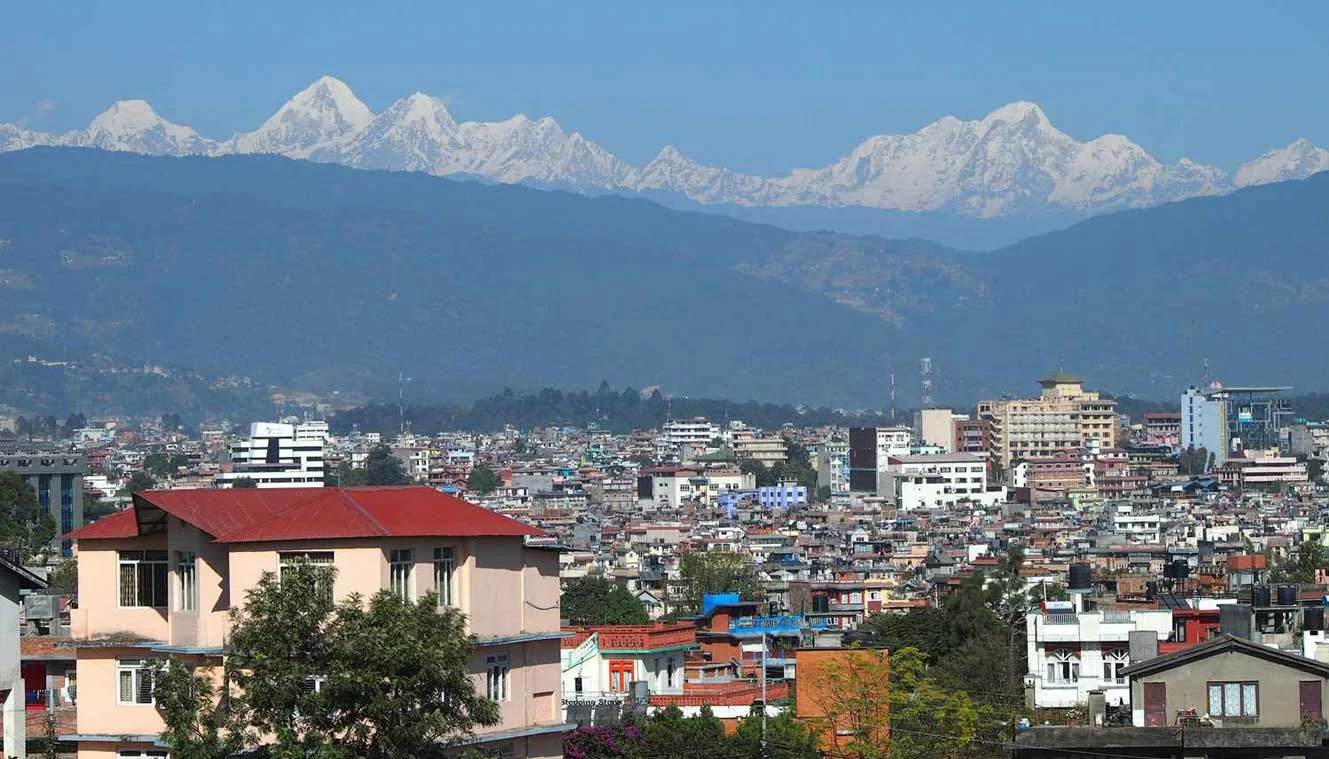
Fly to Lukla, Trek To Phakding | Enjoy A Scenic Flight Journey
- Altitude: Lukla - 2,850 m/ 9,350 ft; Phakding - 2,600 m/ 8,500 ft.
- Altitude Gain: 1200 m/ 3,900 ft.
- Early morning flight to Lukla (30 minutes).
- Trek to Phakding: 9 km | Duration: 4 to 5 hrs.
- Easy and gradual descent.
- Cheplung village lies en route from where you can see Mt. Khumbila.
- You can buy or refill your water bottles from teahouses on the way.
Get ready for a beautiful flight from kathmandu or ramechap to Lukla. Its a short flight of about 35 minutes that will take you over a panoramic landscape. On these flights, the planes are quite small but the journey is quite scenic. Our representatives will meet you at Lukla airport and this is where your trek towards Everest Base Camp starts.
After arriving at Lukla, we will start our trek towards Phakding after some refreshments. The trail is 9 km long and passes through Nepali mountain villages, green mountains, suspension bridges, and forests to Phakding. It takes about 4 to 5 hrs to complete the trek. From Lukla, the trek begins with a gradual ascent, with a few ups and downs along the way. Along the route, you will witness amazing views of Kusum-Kanguru as you cross a suspension bridge on your way. After a short climb, you will arrive at Ghat Village and after another one and a half hours of gradual walking, you will arrive at Phkading. En route, you will also spot boulders that are carved with Buddhist Prayers. We will stay overnight in Phakding.
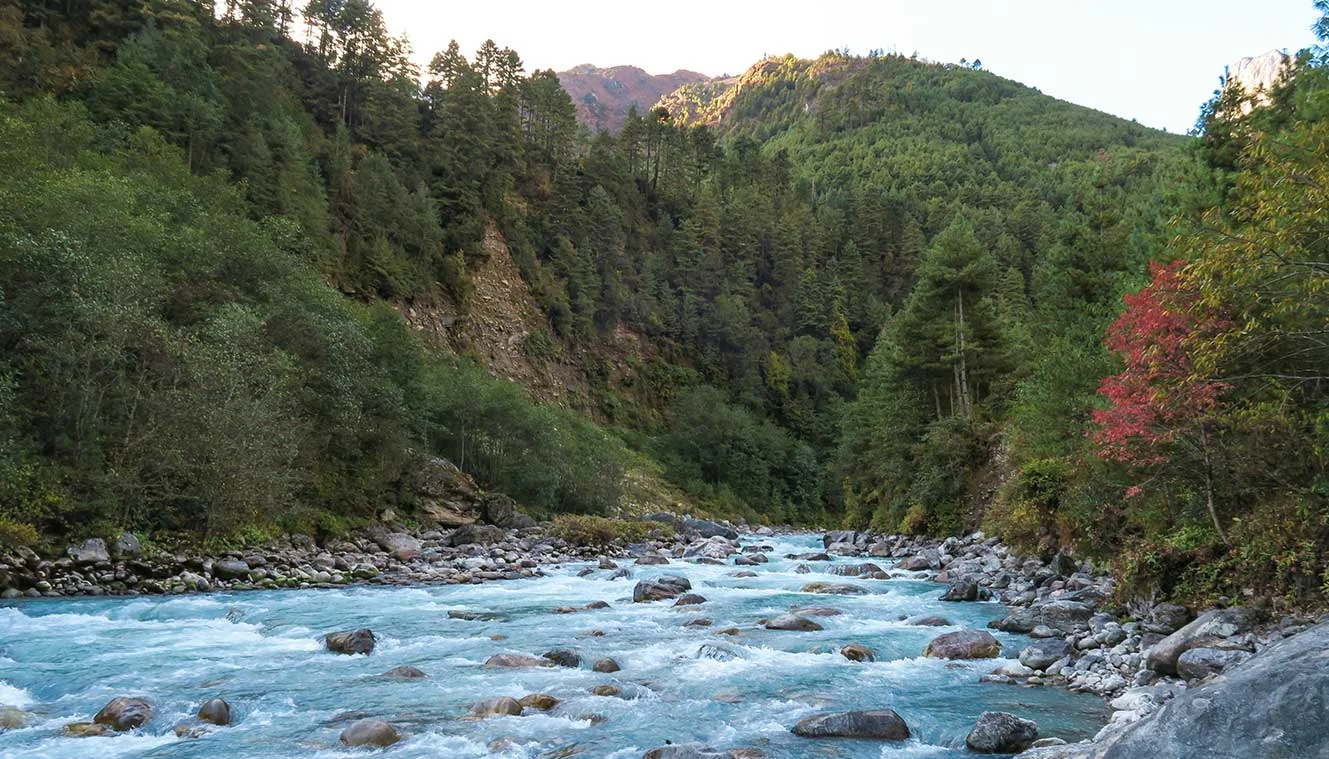
Phakding To Namche Bazaar | A Major Trading Hub In Khumbu
- Altitude: 3,450 m/ 11,300 ft
- Trek: 10 km | Duration: 7 hrs.
- Altitude Gain: 850 m/ 2,800 ft.
- Moderate level of climb and steep climb before Namche Bazaar.
- Namche Bazaar is the capital of the Khumbu region.
- You will get the first views of Mt. Everest today.
- You will spot Kongderei and Thamserku peak.
- Monjo village is the mid-point of the trek.
- A swiss suspension bridge on Dudhkosi River. It is one of the major attractions.
- Dudhkosi River is considered as the lifeline of the Khumbu Region.
- Today you will enter into the Sagarmatha National Park (a UNESCO World Heritage Site).
Post breakfast, we will start our trek towards Namche Bazaar. The route today is surrounded by green mountains and will take you through suspension bridges over the Dudh Koshi and Bhote Koshi rivers. Before entering the Sagarmatha National Park, you will have to obtain permits and then the trail follows a steep ascent before arriving at Namche Bazaar. Namche Bazaar is an important trading hub of the Khumbu region.
We will start our trek early in the morning from Phakding and soon you will cross a suspension bridge over the Dudh Koshi River, the walk from here is easy and pleasant with short uphill and downhill climbs. You will cross another suspension bridge over the Bhote-Koshi River. It is a busy area and you may notice a multitude of trekkers and porters here. After a 20 minute climb from this area, you will arrive at Monjo. Monjo is a pit stop for many trekkers and many people also camp here. At Monjo, you will see interesting watermills that are used to grind barley, a staple diet of the Sherpas. Monjo is situated right below the majestic Thermasarkhu peak (6,608 m) and quite close to this village is the entrance to the Sagarmatha National Park.
Treading along the Dudh Koshi River, you will arrive at the Sagarmatha National Park. At this point, your trekking permit will be checked and the officials will keep a record of all the trekkers going ahead. Sagarmatha is a UNESCO World Heritage Site that showcases stunning mountain views and rich biodiversity. Here, you may spot rare Himalayan species like snow leopard and the lesser panda. The presence of Sherpa settlements with their unique culture makes the trek even more interesting. A gradual walk from Sagarmatha National Park will lead you to Namche Bazaar. From Namche Bazaar, you will catch the first glimpses of Mt. Everest. Namche Bazaar is a historic trading center of the Khumbu area and you can stock up on essentials from this point. At night we will stay here at a guesthouse.
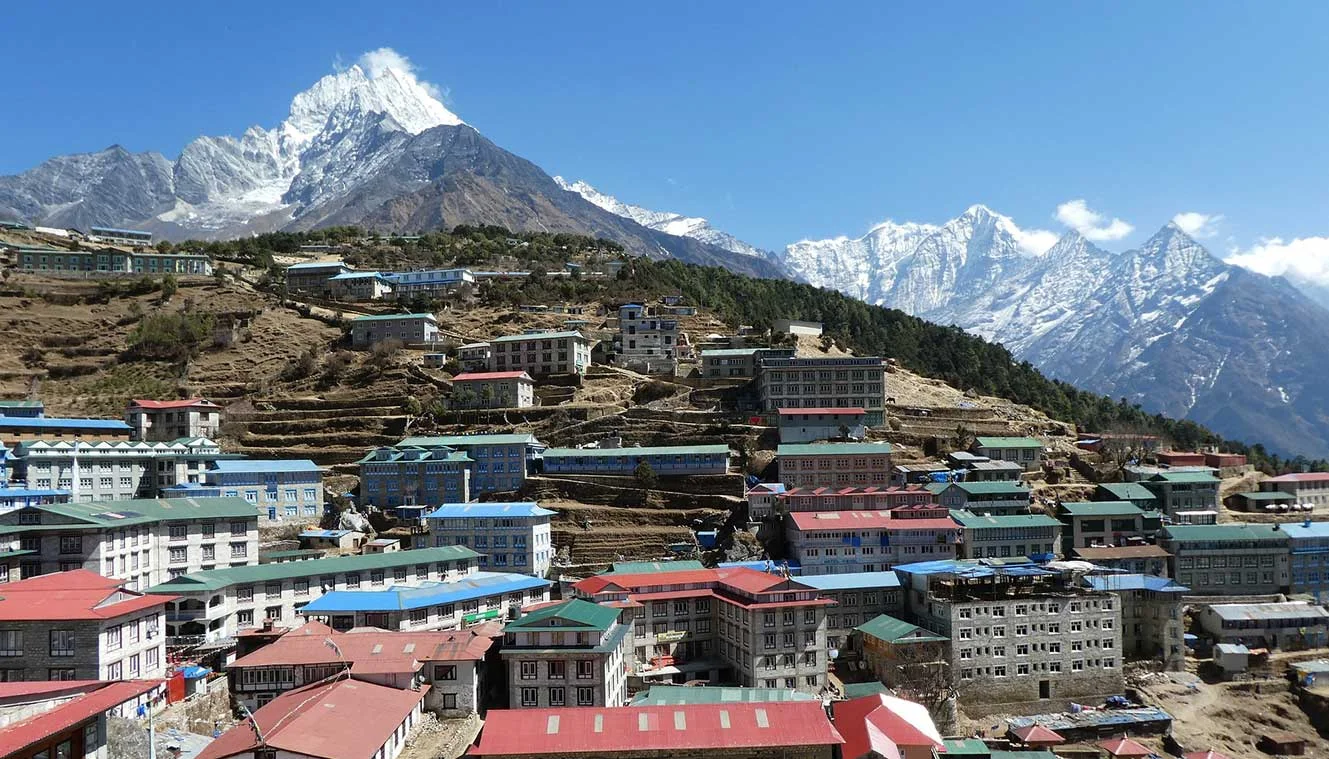
Acclimatization Day | Explore Namche Bazaar
Wake up to the beautiful views of the highest Himalayan peaks and enjoy a delicious breakfast. Today we will stay in Namche Bazaar allowing our bodies to acclimatize to high altitudes. You can spend the day exploring the surroundings and enjoy the culture and hospitality of Nepal. Namche Bazaar is a commercial hub so you can do any last-minute trek shopping from here. The market has a vibrant atmosphere and there are a couple of restaurants and coffee shops as well.
You can do a short hike to Sagarmatha National Park headquarters. From here, you can get a good view of Ama Dablam, Mt. Everest, and other Khumbu peaks. Sherpa Cultural Museum is close by and lies just above Namche Bazaar. The museum gives you a fair amount of details about the history of the Himalayas, the geographic and cultural aspects, mountaineering history, and information about the various flora and fauna in the region. You will see many pictures of Tenzing Norgay and Edmund Hillary from their climb and maps detailing their trails as well. In the evening, take acclimatization walks around the market, preparing your body for higher altitudes. Soak in the Nepalese Buddhist culture, food, and traditions. Namche Bazaar gained popularity during the time when Tibetan salt was traded for grains from Nepal\\s lowlands. Nowadays, you can see a roaring trade of rugs, clothing, dried meat, and salt in the village center. There are many shops that also offer locally made handicraft items, you can buy them as souvenirs or gifts for your friends and families. You will stay the night at a guesthouse in Namche Bazaar.
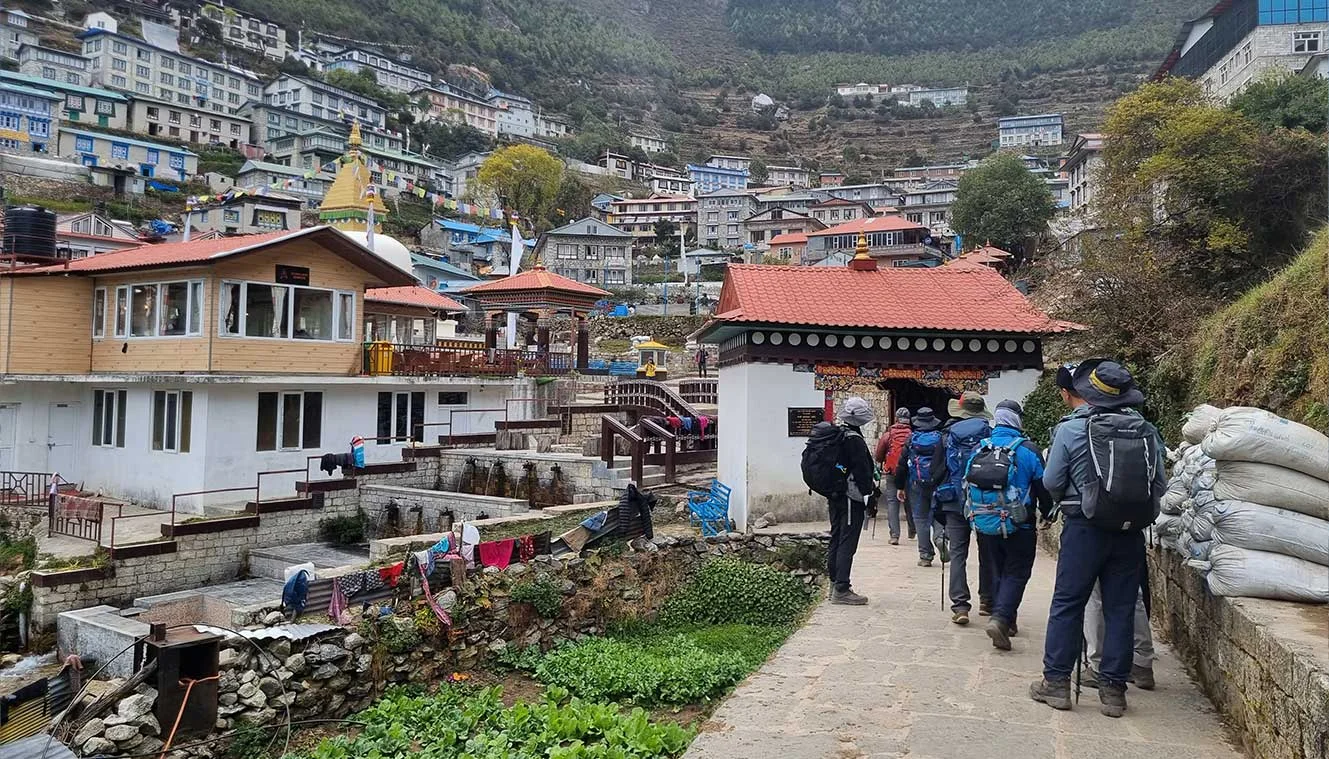
Namche Bazaar To Tengboche | Visit The Largest Buddhist Monastery Of Khumbu
- Altitude: 3,850 m/ 12,650 ft.
- Altitude Gain: 400 m/ 1,350 ft.
- Trek Distance: 8 km | Duration: 5 to 6 hrs.
- Mixed ascent till Phunki Tenga.
- Steep ascent after Phunki Tenga to Tengboche.
- Tengboche has the biggest monastery in the area.
- You can attend a prayer ceremony held by the monks to invoke protection on your expedition.
- Cross another high bridge at the village of Phunki Tenga.
Start your day with a delicious breakfast and get ready for your trek to Tengboche from Namche Bazaar. It’s an 8 km long trail and is a fairly easy trek accompanied by the views of the majestic Himalayas. You will also spot Himalayan Wildlife on the way as well.
Tengboche is a small alpine valley that is situated at an altitude of 3860 m and the trek starts with an easy walk. The trek from Namche Bazaar to Tengboche is extremely beautiful and along your trek, you will get a bird’s eye view of Dudh Koshi River down below and the epic mountain views as Thamserku (6,608 m), Kantega (6,782 m), Ama Dablam (6,812 m), Lhotse (8,516 m) and Everest (8,849 m) comes into view.
A 20-minute walk from Namche Bazaar will take you to the top of Namche Bazaar. From here the trek descends to Khumjung, a Sherpa village and then climbs up the sides of the mountains through some stairs and then diverges from the Everest Highway at Sanasa. You will be able to catch glimpses of Lhotse, Nuptse, and Mt. Everest from here. This is probably the best view of Mt. Everest you will get until you reach Gorakshep when climbing to Kala Patthar. Two hours of pleasant walking will bring you to Sanasa. Up to Sanasa, it is a walk-through forest covers of Oak and Rhododendrons. It is a great location for bird watching and you may spot the Danphe Pheasant, the national bird of Nepal. Musk-deer and Himalayan Tahr, a Himalayan goat that looks like an antelope are commonly spotted in these areas. You will also spot the Tengboche monastery from here which you will reach in the later part of your trek.
Next, following a gradual descent, you will reach the Imajtse River at Phungitenga at an altitude of 3,250 meters. Phunki Tenga is a small Himalayan settlement with teahouses and army posts. The climb down can be a little tougher as the terrain is rocky and uneven. You will reach a suspension bridge over the river and after you make the crossing, you will need to get permits at a checkpoint to proceed further in your trek. From here it is a strenuous climb of about an hour that will take you to a Buddhist monastery just before Tengboche and finally to Tengboche village. This is the last part of today’s trek and you can expect the trail to be rocky with a couple of switchbacks. Don’t push yourself too hard, take it slow and steady as you make your trek uphill.
Tengboche Monastery, locally known as Dawa Choling Gompa is the largest monastery in the Khumbu region. It overlooks the beautiful region and the mountain landscapes around. There are daily prayers that occur around 7:00 am and once around 3:30 pm. You can take part in the prayers if you truly want a cultural experience. It is one of the important cultural aspects of the EBC Trek. Enjoy the serenity at this revered place of worship and at night your stay will be in the guesthouses at Tengboche.
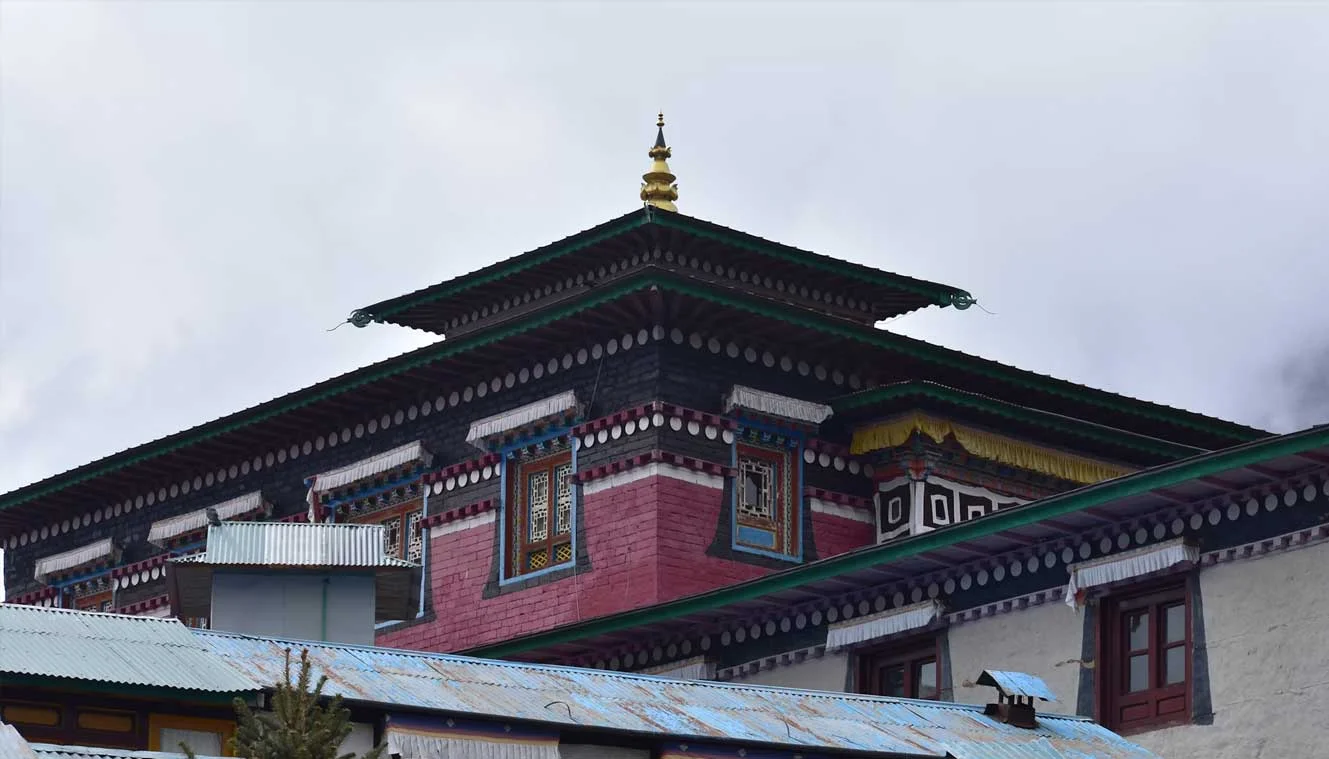
Tengboche To Dingboche | Stunning Views Of Ama Dablam
- Altitude: 4,350 m/ 14,250 ft.
- Altitude Gain: 500 m/ 1,600 ft.
- Trek Distance: 9 km | Duration: 6-7 hrs.
- Gradual descend and little bit of ascent after Lobuche River to Dingboche.
- The trail passes through lush forests of birch, conifer, and Rhododendron trees.
- The route offers amazing views of Ama Dablam standing over you.
- The trail crosses the Imja River to reach Pangboche.
- Continue along the Imja Valley and Lobuche River before ascending to Dingboche.
Today, we will begin our trek towards Dingboche. From Tengboche, cross bridges and rivers accompanied by beautiful mountain views all the way to Dingboche. Stone steps will lead you through forests of Rhododendrons, conifers, and birches, and at the bottom of the forest lies the Deboche village. From here, the trail rises up and enters into the alpine meadows and Dingboche. Dingboche is the only place in the entire Khumbu region where barley is grown. The views of the Himalayas are amazing from Dingboche. Start your trek from Tengboche and walk towards Pangboche Village, you will get to see some beautiful views of Mt. Ama Dablam and from Pangboche we will trek towards Pheriche and to Imja Valley. The beautiful Lobuche River passes through Imja Valley and from here a steep hike will take you to Dingboche. The trek takes about 6 to 7 hrs and for the most part, the difficulty is moderate.
At the beginning of the trail, you will first descend into a forest trail passing the small settlement of Deboche. As you trek from Tengboche to Dingboche, the scenery changes as you gain altitude, greenery slowly giving way to barren landscapes, and the trails gradually becoming more rugged and it will also start getting cold and windy. In the initial part of the trek, you will pass by a wall with stone inscriptions and a small stream will keep you company along the trail. You will have to cross the stream to the left-hand side of the valley. The majestic Ama Dablam dominates the skyline ahead of you. About two hours into the trek, you will arrive at Pangboche, a mountain village, where you get beautiful views of Mt. Everest. From Pangboche, you will hike upwards towards the valley and throughout the trek, you will slowly gain elevation. Although the trek is mostly uphill, the slope is relatively easy without extremely steep inclines. Ama Dablam continues to stay in view, however, you will only get to see a tiny silver of the top of Mt. Everest. Lhotse and Nuptse become quite prominent now.
Soon you will arrive at the village of Shomare, your last village before Dingboche. Ama Dablam still remains in view but now you will get to see a different angle of the mountain from what you have seen before. The trail continues winding to the valley side and you will cross another river before entering Dingboche village. Dingboche is a lovely Himalayan hamlet and you will see agricultural fields protected by stone walls. Once at the village, we will check into a guesthouse and we will stay the night in the guesthouse.
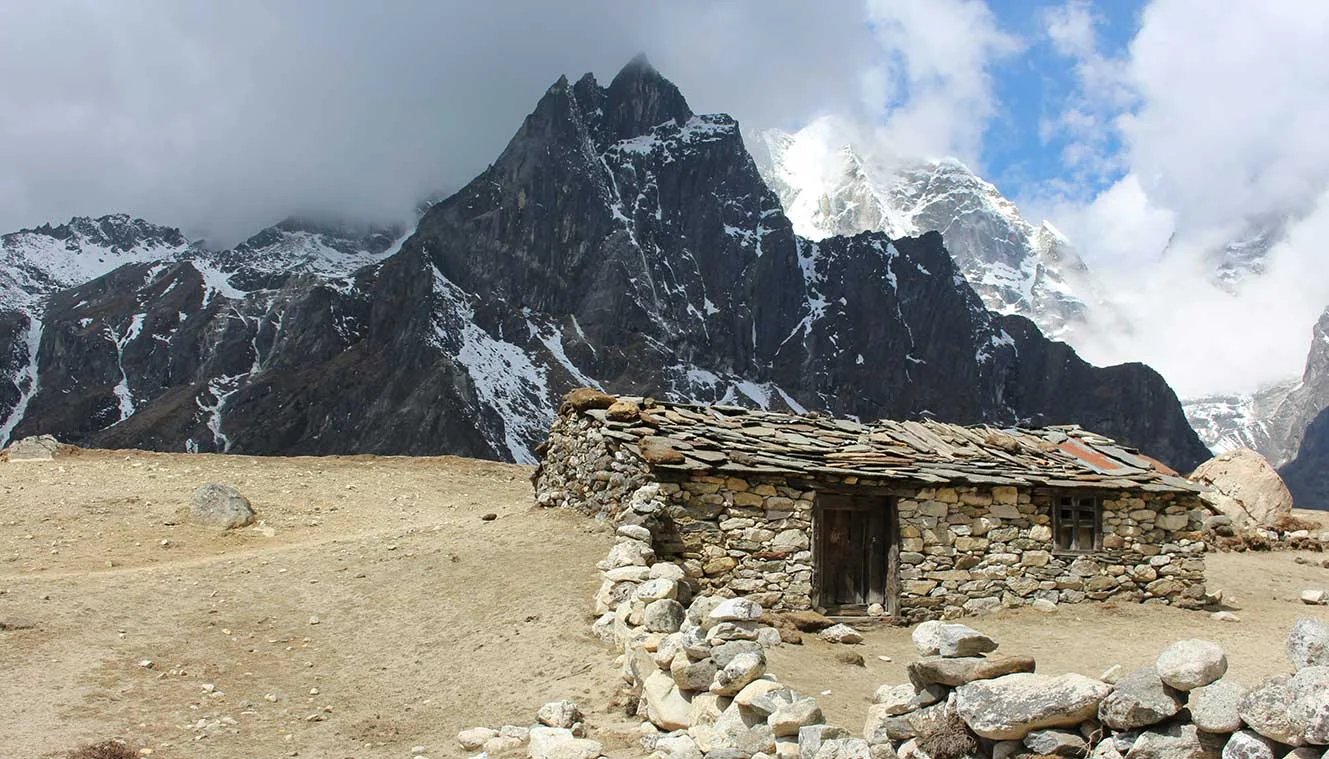
Dingboche (Rest Day) | Acclimatize To Higher Altitudes
Today is a rest day at Dingboche, which will help us acclimatize to the high altitude. As we exert a good deal of energy on the trek, our body needs to get accustomed to less oxygen at higher elevations. So instead of taking a rest day, if continue to gain elevation it can result in altitude sicknesses like dizziness, nausea, and headache or potentially even more dangerous conditions like cerebral or pulmonary edema. To prevent these issues, we start our acclimatization process at the 11,500 ft mark. Since Namche Bazaar is quite near that elevation, we start our acclimatization process from Namche Bazaar itself.
For acclimatization, you can walk around the village. Dingboche village has many farms and crop fields sparse across the village, native crops include barley, potatoes, and buckwheat. You can also do a short hike around the village to Chukung. Its a 3 - 5 hrs trek that takes you to an altitude of 4,730 m. Chukung lies in the Imjatse Valley towards the east. Although the trek is gradual you can feel the effects of thinning air. Chukung has a couple of teahouses as well and you get a superb view of the surrounding areas from here. Some of the views are exceptionally beautiful as you continue to climb higher and higher. Explore the valley and the surrounding areas, return back to the guesthouse. This hike will prepare your body for the next few days at higher altitudes.
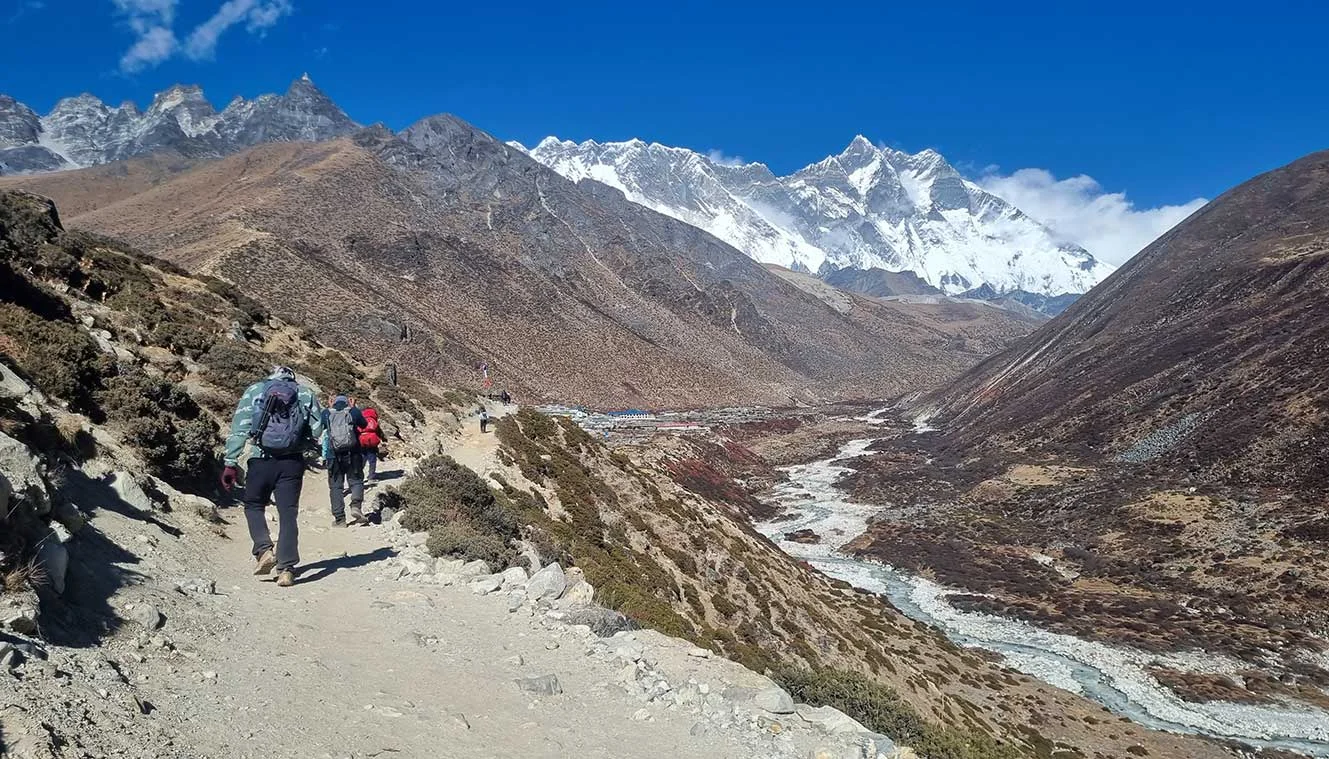
Dingboche To Lobuche | Pay Your Respects In Everest Memorial
- Altitude: 4,950 m/ 16,200 ft.
- Trek Distance: 7 km | Duration: 6 hrs.
- Altitude Gain: 600 m/ 1,950 ft.
- Tricky climb on moraine and rocky terrain.
- You can visit the memorial shrine.
- The top of the ridge is filled with prayer flags and stones which are memorial shrines for climbers who lost their lives on Mt. Everest.
- As you cross Khumbu Glacier, you will see Mt. Nuptse (7,861 m).
Today’s walk will take you from Dingboche to Lobuche through alpine pastures and in the summertime, you can see Yaks grazing in these pastures. You will trek towards the end of the moraine of the Khumbu Glacier offering spectacular views of Mt. Nuptse. At the moraine, you will see stone monuments, these are dedicated to six Sherpas who died in an avalanche along with monuments dedicated to other mountaineers. From here, it’s a steep climb towards Lobuche where you will get a magnificent view of Mt. Nuptse and the sunset over this mountain peak is even more spectacular. From Dingboche, you will have to ascend a small ridge behind the village, towards the north you can see Lobuche Peak (6119 m) and the snowfields of Cho La. Later you will cross Khumbu Khola, the huge glacier moraines of the Khumbu Glacier flowing from Everest. Crossing the memorial cairns, and following the valley stream, you will arrive at Lobuche in the early afternoon. The 6 hrs trek covers 7 km and brings us much closer to the Everest Base Camp.
Start the hike from Dingboche along the inclined path running alongside the mountain’s wall and go further into the valley. As you make your turn along the path and inside the valley, you arrive at the village of Pheriche, we will be staying here on our way back from the base camp. For the next 2 to 2.5 hrs, you will follow into the valley, while the incline is not very difficult but you are at a high altitude, so take it slow and steady and avoid using too much energy too quickly. A river lies in front of you and crossing the river, you will arrive at the village of Thukla. This is a great spot to rest for a couple of minutes, refuel yourself and continue on the trek.
The next part is going to be the toughest part of the trek today as you climb to Lobuche. The climb takes you along a zig-zag path all the way to the Thukla Pass and it becomes steeper and steeper as you climb until you reach the edge of the Khumbu Glacier and the Everest Memorial. The oxygen gets less and less from here and the temperature also starts to get lower. The remaining part of the trek follows the left side of the glacier as you reach the village of Lobuche and you will also gain a little elevation from the glacier as you arrive at Lobuche. In front of you, you get to see a beautiful view of Nuptse in front of you. Lobuche is a small Himalayan village with only a handful of teahouses. We will stay the night here before we head out to the last village on the trek tomorrow.
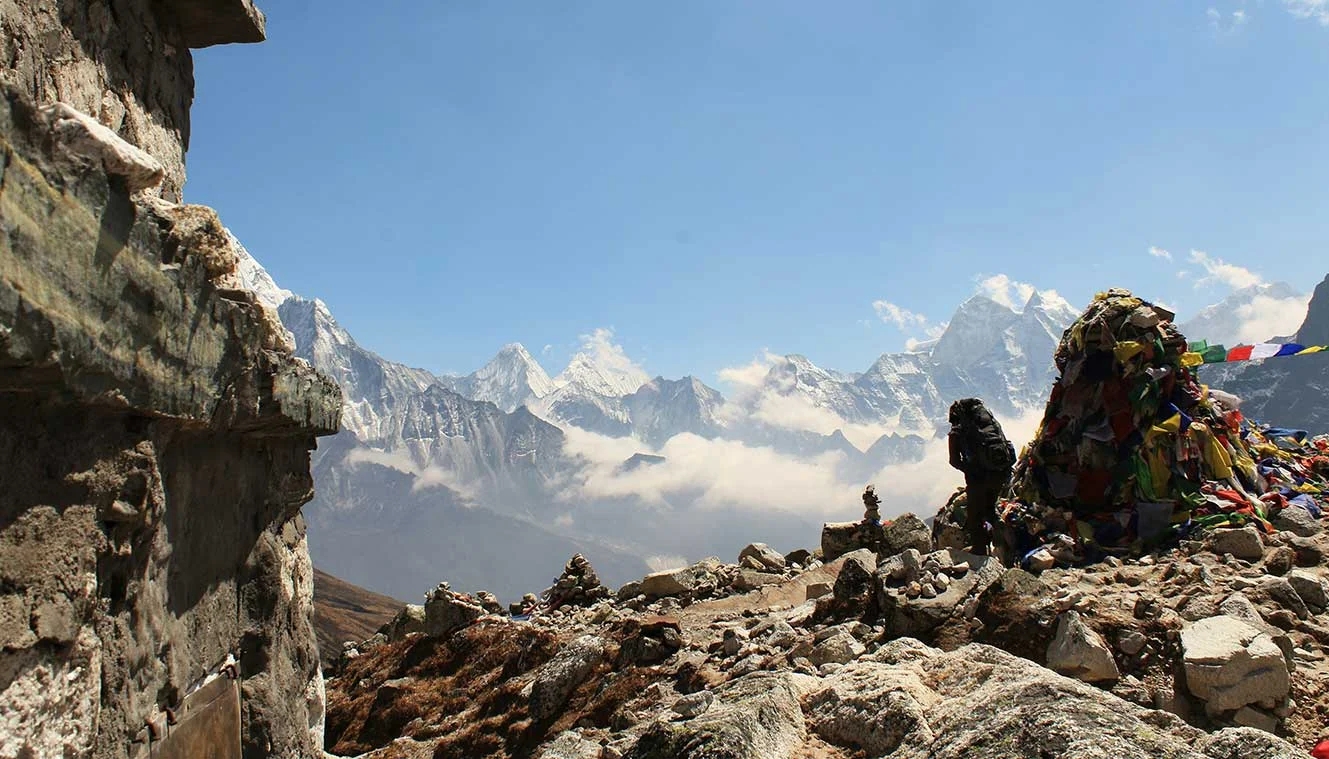
Lobuche To Gorkhashep | Excursion To Everest Base Camp
- Altitude: Gorakshep - 5,150 m/ 16,900 ft & highest point - 5,350 m/ 17,750 ft.
- Altitude Gain: 200 m/ 700 ft.
- Lobuche To Gorakshep: 6 km | Duration: 4 hrs.
- Gorakshep To EBC: 3 km away each.
- It’s Everest Base Camp Day Today.
- Good steep climb to Gorakshep.
- It takes about 3 to 4 hrs to reach Gorakshep.
- Lunch is at Gorak Shep.
- A steeper climb to Everest Base Camp.
- The trek to Everest Base Camp is not very difficult.
- Trekker\\\\\\\\s stop point is just below the actual base camp.
- Most tour groups are not allowed to enter or stay in EBC.
- Make sure you carry your day pack since you will need water.
- You can enjoy amazing views of Nuptse, Khumbutse, and Pumori mountains from the base camp.
- Overnight stay in Gorakshep.
Note: Drinking water in Gorakshep is chargeable. We don’t include drinking water on the trek which you can buy from a number of places between $1 to $3 a bottle (it gets more expensive towards the base camp). The better alternative is to buy water tablets in Kathmandu/Pokhra for around $2 and treat the water.
Today is the most exciting day of the trek as you make an excursion to the Everest Base Camp. An adventurous journey and a great trekking experience await you. Waking up early, have your breakfast, and gear yourself up. We will follow the trail from Lobuche through narrow gaps in the mountains and glacial moraines along the Khumbu glacier to Gorak Shep, the last village on the trek. Post lunch in Gorak Shep, we begin our trek to the Everest Base Camp, the ultimate adventure of this entire journey. We follow the lead of Sherpas as the trail changes every season as the glaciers move. It takes about 7 hrs of walking to reach Everest Base Camp. Spend some time at the base camp, celebrate your victory, capture some stills and descend back to Gorakshep. Overnight stay will be at Gorakshep.
The trek today can be broken down into two parts, the first part is the trek from Lobuche to Gorak Shep and the second part is an excursion to EBC and back to Gorak Shep. After breakfast at Lobuche campsite, we begin our trek towards Gorak Shep. It is a 6 km hike that takes about 4 hrs. Walking along the sandy and rocky parts, you will gradually gain elevation as you walk alongside the Khumbu Glacier. Mt. Nuptse looms on the horizon in front of you. Some sections of the trail are a little steeper than others. On the way, you will pass Sherpa flag monuments indicating that you are getting closer to the Everest Base Camp.
The last section of the trail directs into a glacier before you reach Gorak Shep. the terrain is rocky and uneven with inclines and declines. Be cautious and watch your step in this part and always pay heed to the trek leader\\\\\\\\s advice to complete the patch safely. You can see a sliver of the top of Mt. Everest from here, right behind Nuptse. Soon the village of Gorak Shep comes into view guarded by Kala Patthar and Pumori in the back. Make your way into the guest house have some lunch, reenergize yourself and get ready for the next part of the trek.
From Gorak Shep, you will walk right along the Khumbu Glacier, the Everest Range lies right behind it. It is a vast glacier and as you continue walking along the side of the glacier, you will constantly gain elevation until you reach the base camp. The incline is not very steep and is slightly moderate. A technical terrain lays ahead of you with a mixture of sand and rocks and it can get pretty slippery at some points as well. As long as you watch your steps, you will be good. Continue on and you will reach a point where the Khumbu icefall comes into better view as it winds down from the mountain to the valley. More Sherpa prayer flags mark the way to the base camp. In the final stretch of the trail, you will see numerous prayer flags flowing in the wind and the popular Everest Base Camp Rock. You have made it to the Base Camp, congratulations! While this is not the actual base camp, it is a trekker’s base camp. Most tour groups are not allowed to enter or stay in EBC. Once you have had enough time to enjoy the area around EBC, it is time to head back to Gorakshep. Follow the rocky trail back to Gorak Shep. We will stay the night in Gorak Shep.
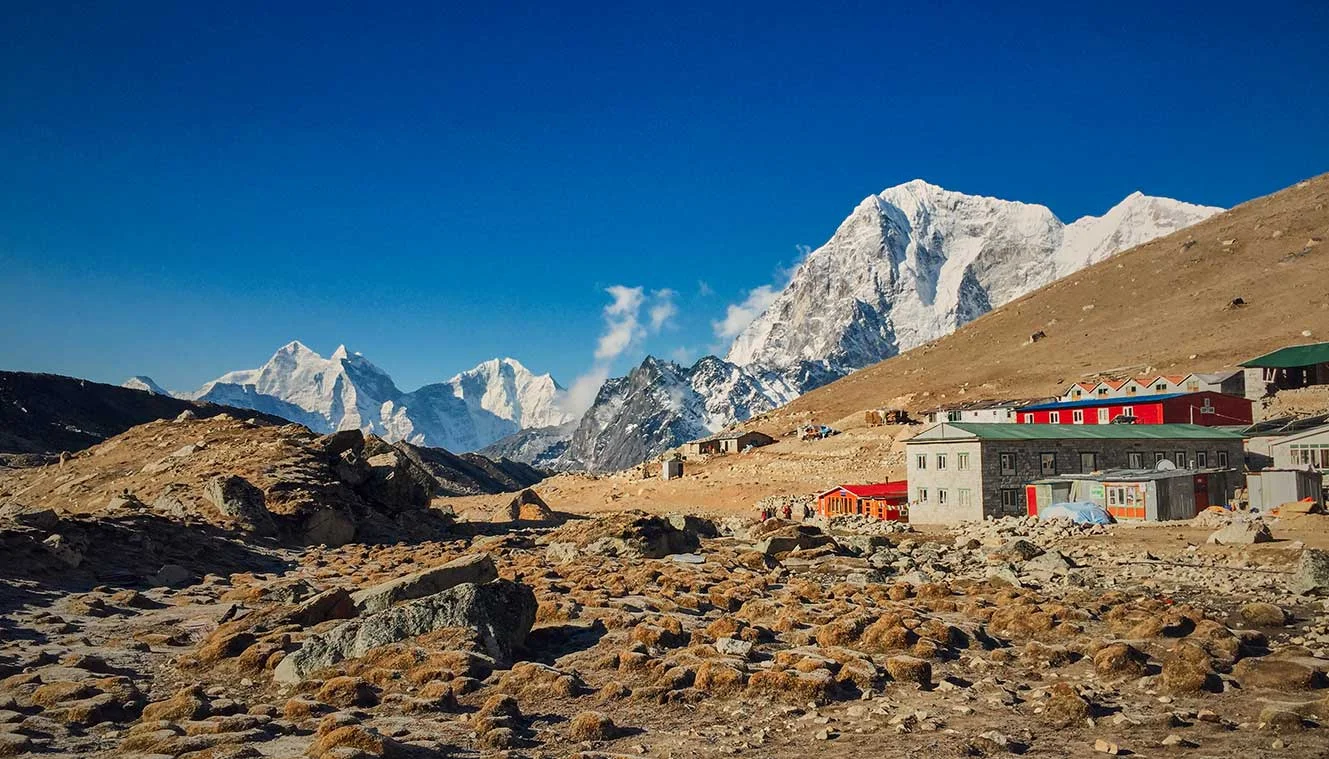
Hike To Kalapatthar And Retreat Trek To Pangboche | Enjoy Arresting Views Of Mt. Everest
- Altitude: Kalapatthar - 5,550 m/ 18,200 ft Pangboche - 4,300 m/ 14,100 ft.
- Gorakshep To Kalapatthar: 2 km each way | Duration: 3 to 4 hrs.
- Gorakshep To Pangboche: 25 km | Duration: 6 hrs.
- Altitude Loss: 850 m/ 2,800 ft
- Steep climb to Kalapatthar (difficult).
- Gradual descent to Pangboche.
- Start early in the morning to avoid early morning clouds.
- Kala Patthar is the rocky hilltop below Pumori.
- Views from the summit: Everest, South Col, Lhotse, Makalu, Khumbu Glacier & icefall, Pumori & Everest Base Camp.
- Breakfast at Gorakshep after Kalapatthar hike.
After your trek to EBC and back to Gorakshep, you are now ready to climb Kala Patthar. Gorakshep is also a good place to roam around, it has a couple of teahouses and it also used to be the base camp for climbing Mt. Everest in the 1950s. The trek starts with an easy walk from Gorakshep and you will be walking on sandy fields. After this, there is a steep climb of 45 minutes. After the strenuous climb, you will come to level fields and the walk is easy and gradual. You will have the comfort of walking for the next one hour, post which there is another steep climb to Kalapatthar for about half an hour. Mt. Everest from this point looks closer than you can imagine. From here, you will trek down to Pangboche.
Start your day early and leave your stuff at Gorakshep, only carry a daypack with the essentials as you will return to Gorakshep. As you cross the sandy trail and begin ascending, you will notice the Gorakshep village and Khumbu Glacier behind you including Ama Dablam. The top of Mt. Everest begins to peek out above the surrounding mountain ranges. The more you gain altitude the more Mt. Everest will come into view. The best part of today’s trek is that all along the trek you can enjoy the landscape of the surroundings and not just on the summit. The higher you get, the rockier and trickier the trail gets. Be mindful and watch your steps. The last patch is especially rocky.
The summit is a little difficult to navigate as well. You will know you are near the summit when the Sherpa prayer flags and weather reading device come into view. Take your time and dont rush to the summit to avoid any accidents. Once you reach the summit, you will get to see the breathtaking views of the entire Sagarmatha National Park but the main attraction is of course Mt. Everest itself. You will get the best view of Mt. Everest from here. Below Everest lies the Khumbu icefall that feeds into the Khumbu Glacier and to the right is the face of Mt. Nuptse. On the opposite side of the lake, you will see even more glaciers, lakes, and mountains, as far as your eyes can see. After spending some time at the top, descend the same path that you came in. When you are back in Gorakshep have a nice meal and refuel yourself as we will descend to Pangboche.
On the trek down, the first village will be Lobuche and throughout the trek, you will again be alongside the Khumbu Glacier. You have already completed this section while ascending up so you now have an idea of what to expect. The trek is a little tricky till Sagarmatha National Park sprawls out in front of you and the rest of the part is manageable. You can have some snacks at Lobuche before heading down to Pangboche.
As you descend, you will come to the intersection where one path diverges towards Dzonghla village, Cho la pass, and Gyoko Ri, and the one on the left heads towards Pangboche. Stay on the left side of the trail and you will come across another difficult patch of the trek. You will head down from the moraine wall of the Khumbu Glacier and descend to the Thukla Pass. Crossing the Everest Memorial, begin a tricky hike down to the river below and soon you will arrive at Pangboche.
Pheriche lies just below Dingboche so after crossing Thukla, you can take the lower path towards Pheriche instead of taking the higher path towards Dingboche. Once we arrive at Pangboche, you will check into a teahouse, have your dinner, and rest for the night before heading down to Namche Bazaar the next day.
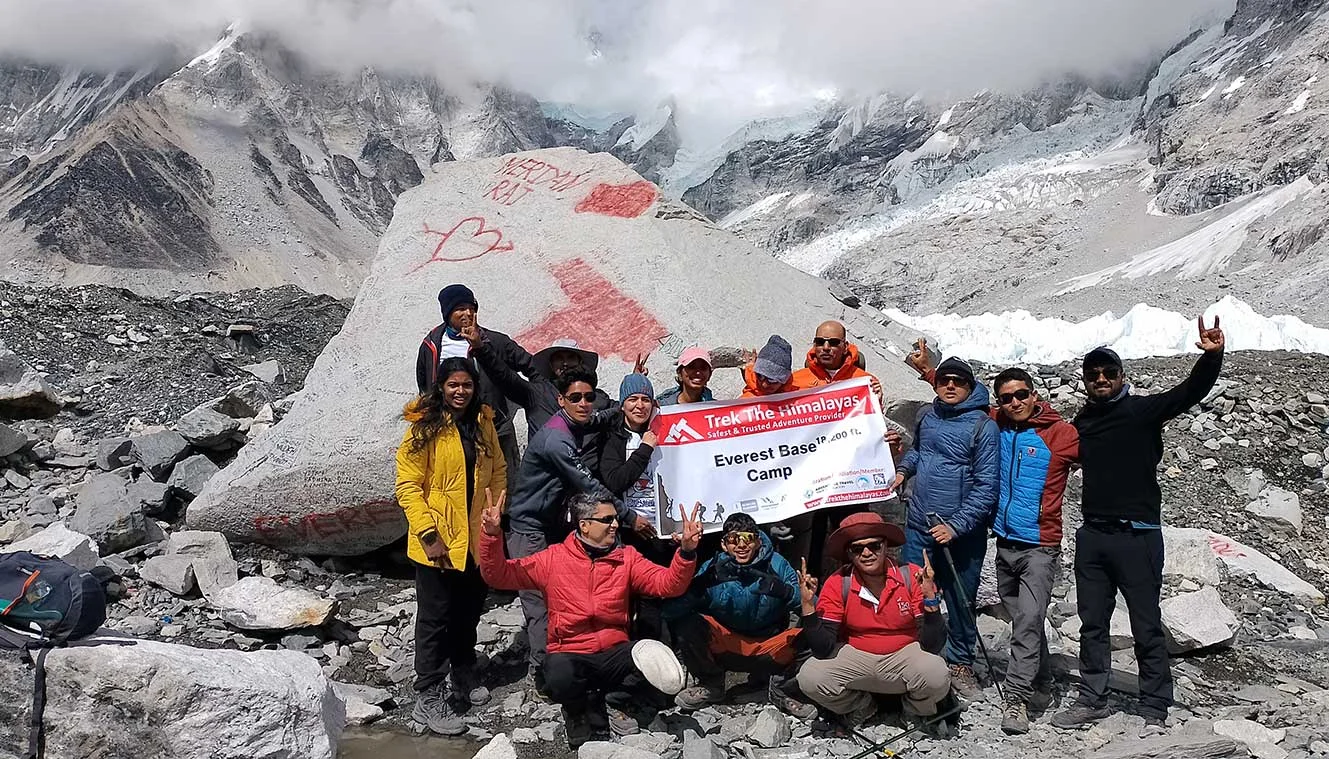
Pangboche To Namche Bazaar | Buy Some Souvenirs
- Altitude: 3,450 m/ 11,300 ft.
- Trek Distance: 15 km | Duration: 6 to 7 hrs.
- Altitude Loss: 850 m/ 2,800 ft.
- Moderately, continuous descent and short ascent just before Namche Bazaar.
After your descent to Namche Bazaar, the cumbersome part of the trekking is almost over. From here on the descent will be easy after having the Everest Base Camp trek. But we recommend starting early as it is a long walk. Start the journey by heading down to the village, across the river, and again climbing back up the valley wall. You can rest here for some time, catch your breath before resuming your decline down the valley.
Once you have declined the path, you will cross a suspension bridge followed by a 2 km incline along the valley wall. As you zig-zag up towards the trail, it becomes forested and once you have completed the uphill ascent, it is a fairly smooth walk for the remaining 5 km to Namche Bazaar. The path to Namche Bazaar is etched on a valley wall and there’s the river below. Soon the path bends inwards and you are welcomed with views of Namche Bazaar. Descend down to the village below and check into a teahouse. Rest well. Tomorrow will be the last day of your trek.
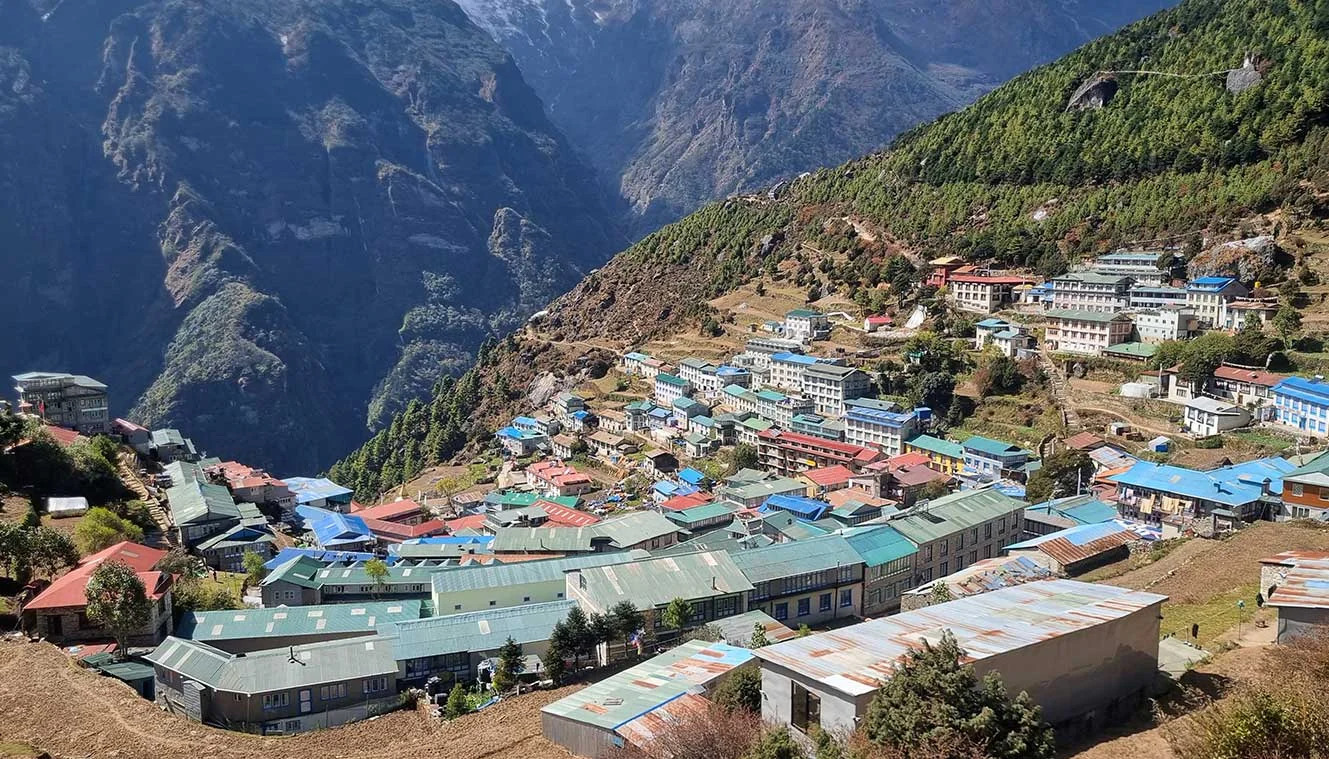
Namche Bazaar To Phakding To Lukla | Last Day Of Trekking
- Altitude: Phakding - 2,600 m/ 8,500 ft, Lukla - 2,850 m/ 9,350 ft.
- Altitude Loss: 600 m/ 1,950 ft.
- Trek Distance: 19 km | Duration: 7 to 8 hrs.
- Moderate, continuous descent till Phkading and gradual ascent to Lukla.
- Start your trek early in the morning as it is a long day trek.
- Stop at Phakding for lunch.
- Stay in Lukla.
Waking up to the lovely weather at Namche Bazaar, you can visit the place and roam around a little bit. You can explore the market and buy souvenirs from your trip to the Everest Base Camp and buy gifts for your friends and family. There are several local handicraft stores in Namche Bazaar as it is the biggest trade hub in the Khumbu region. You can also take a small walk-in around the Sagarmatha National Park and enjoy the local cuisine as well. Post which treks down to Phakding, it is an easy trek down to the village. The beauty of the distant mountains with several waterfalls adds to the beauty of your journey. This is the beauty of Nepal trekking, there will be a few uphill climbs but you will manage it very easily. The lush green beauty and forests will take your pain away. After this easy walk, you will reach Lukla. This will be your last day with the Sherpas and other crew members, so you would like to enjoy the day with a delicious dinner and a few drinks.
Right at the beginning of the trek, you will begin to lose elevation, after about 45 minutes of walking, you will arrive at a rest stop, the same that you came in on when ascending towards the basecamp. This is where you will get the last glimpses of Mt. Everest. After this point, there are no mountain views anymore only little peeks from behind the forest covers. You will cross a few suspension bridges and continue alongside the river as the initial steep decline eases into a more moderate decline. While most of the trek is downhill, there are a few uphill climbs as well. Pass by Sherpa stones into the village of Phakding. You are more than halfway to Lukla by now. We will stop at Phakding for lunch before descending further down the valley with river views, mountain ridges, and suspension bridges. You will also have several stair sections and an incline path all the way through. Passing by a few more villages, you will arrive at Lukla, your final stop for the day.
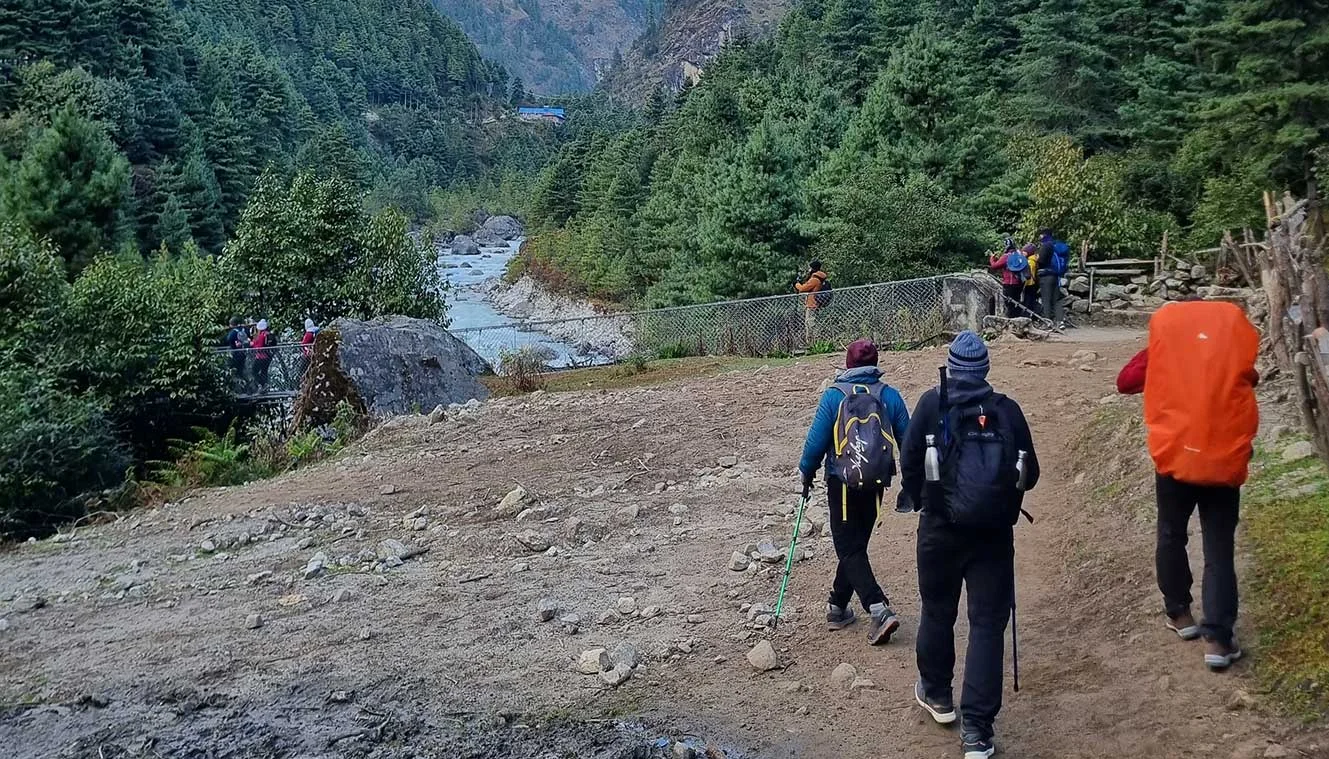
Fly Back To Kathmandu | Bid Adieu To The Mountains
Today you will have to wake up early as flights to Kathmandu are generally scheduled in the morning. This is because during the daytime, the weather is generally windy and there might be a delay in the flight timings. However, you can expect a slight delay in your early morning flight as well if the weather is not suitable. As you make your way through the security checks and your flight takes off from Lukla airport, you will have a magnanimous view of the surroundings. Drive back to Kathmandu from Ramechhap Airport and overnight stay in a hotel. You can book your further journey from here. We wish you a great journey towards your home with lots of memories.
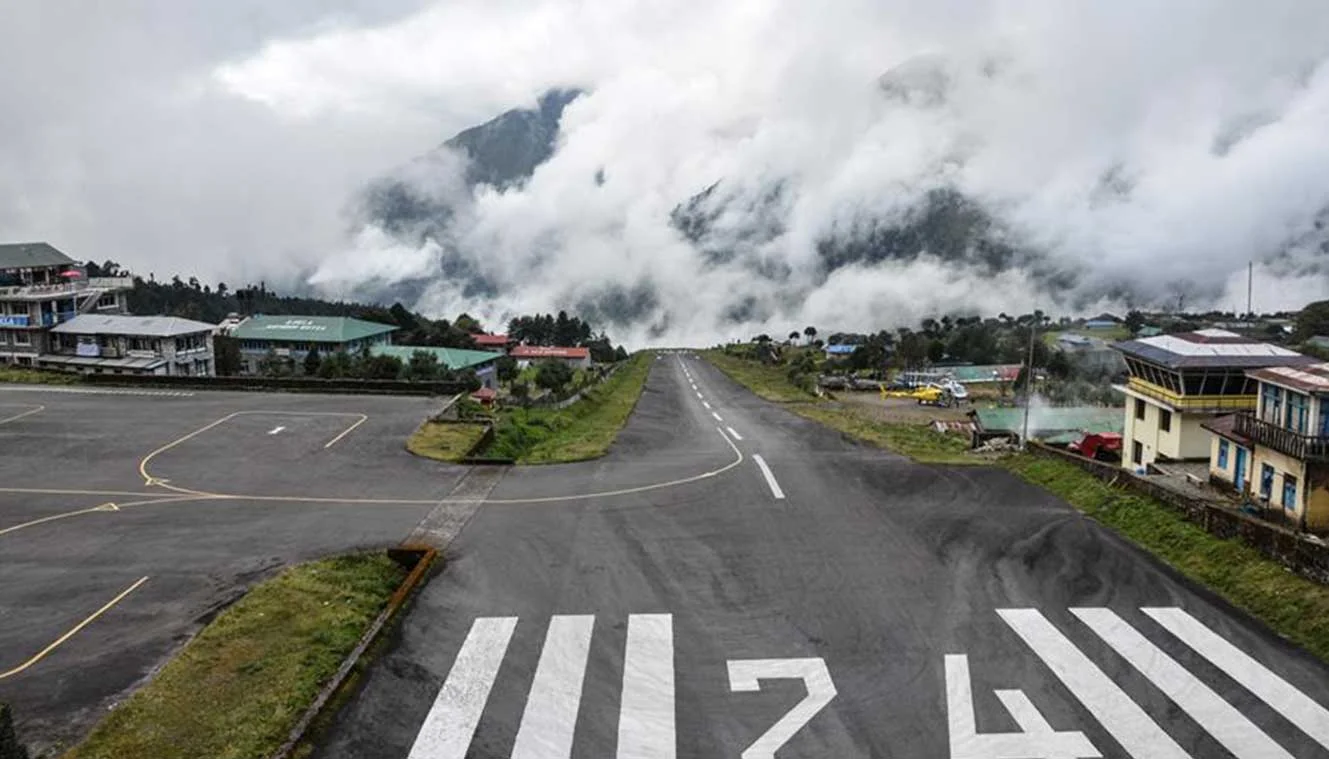
Day-1: Arrive At Kathmandu
Day-2: fly to lukla, trek to phakding | enjoy a scenic flight journey.
Note: Flights to Lukla are prone to delay due to weather, keep one or two buffer days in your plan.
Day-3: Phakding To Namche Bazaar | A Major Trading Hub In Khumbu
Day-4: acclimatization day | explore namche bazaar.
- Today is acclimatization day.
- You can hike up to Sherpa Cultural Museum to get a view of Everest and Ama Dablam.
- It’s worth exploring the town, a good place to buy trekking gear.
- ATMs, internet cafes, shops, and restaurants are available at extra cost.
- Stay in the guesthouse.
Day-5: Namche Bazaar To Tengboche | Visit The Largest Buddhist Monastery Of Khumbu
Day-6: tengboche to dingboche | stunning views of ama dablam, day-7: dingboche (rest day) | acclimatize to higher altitudes.
- Rest Day helps you acclimatize well to high altitudes.
- A small hike today will show you the world’s six tallest peaks including Lhotse (8,516 m), Makalu (8,463 m), and Cho Oyu (8,188 m).
- From another location, you can see the Imja Khola Valley and Dingboche Valley.
Day-8: Dingboche To Lobuche | Pay Your Respects In Everest Memorial
Day-9: lobuche to gorkhashep | excursion to everest base camp, day-10: hike to kalapatthar and retreat trek to pangboche | enjoy arresting views of mt. everest, day-11: pangboche to namche bazaar | buy some souvenirs, day-12: namche bazaar to phakding to lukla | last day of trekking, day-13: fly back to kathmandu | bid adieu to the mountains.
- Morning flight to Kathmandu.
- Your trek to Everest Base Camp is over.
- Spend the day in Kathmandu or fly back to your onwards destination.
- Hotel accommodation in Kathmandu is included in the cost.
Note: Weather conditions may cause flight cancellations. Delays are possible any time of the year but are more typical on summer departures. Keep one or two buffer days.
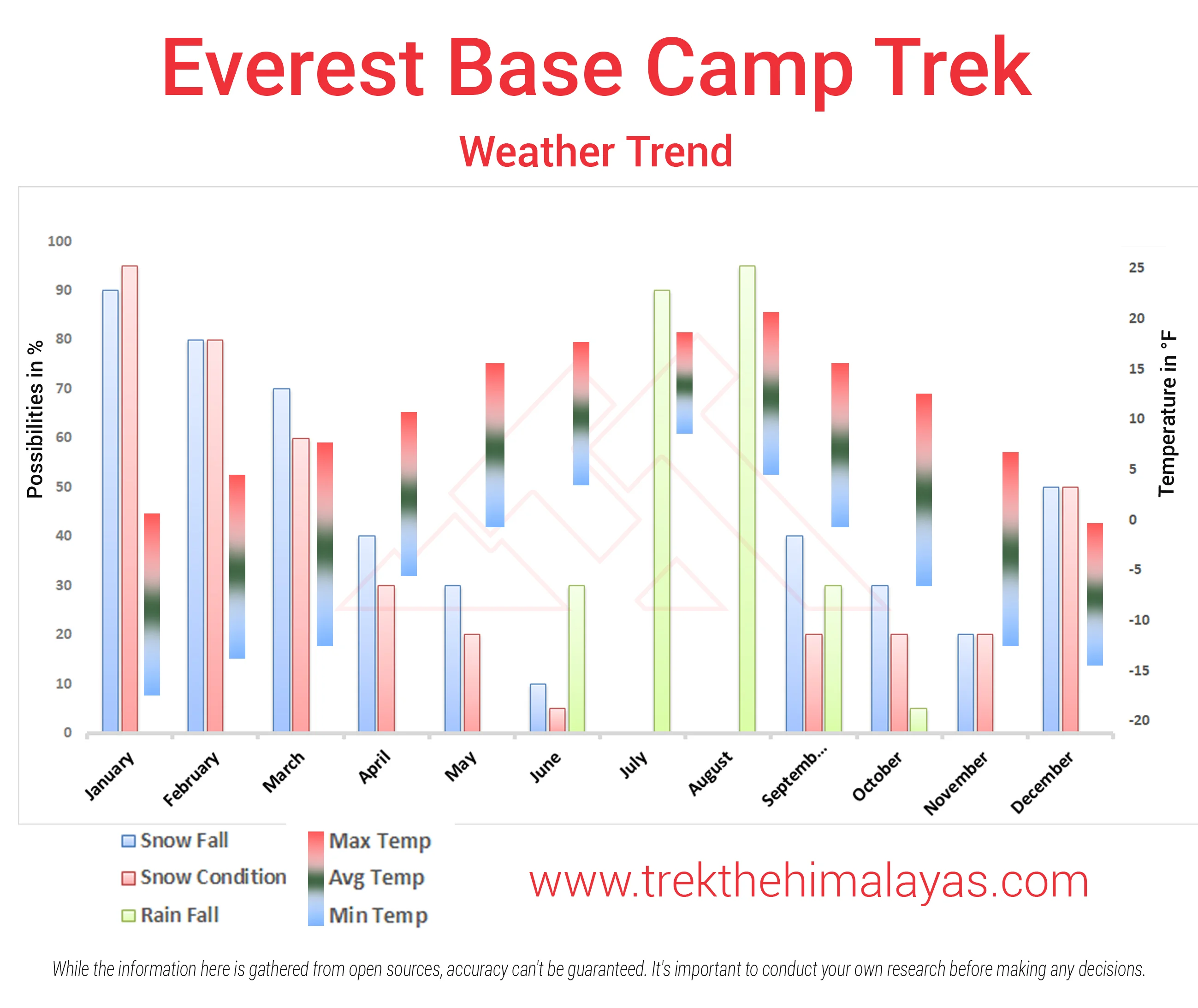
Medical & Disclaimer Form (Mandatory Documents) Click Here.
How To Reach
It is essential for everyone to arrive at Kathmandu (1:00 pm).
Upon booking the trek, you are required to come to our hotel. Your trek coordinator will provide you with details such as the name of the Kathmandu hotel, its location, and the contact person's number.
Options to reach Kathmandu.
The best way is to fly to Kathmandu Tribhuvan International Airport, which receives airlines mostly from South-east Asia and Europe. A number of direct flights fly from Delhi, Mumbai, Kolkata, Bangalore and Varanasi to Kathmandu. Popular airlines that operate regularly are Jet Airways, Air India, IndiGo and Nepal Airlines.
Delhi to Kathmandu by train + bus :-
Day 1: Take a train from Delhi to Gorakhpur. The Vaishali Express leaves Delhi at around 19:45 and arrives at Gorakhpur Junction at 09:10 next morning, or there's another train from New Delhi at 17:20 arriving Gorakhpur at 06:35 next morning. The fare is around Rs. 2440 (£35 or $54) in AC1, Rs. 1240 (£18 or $27) in AC2, Rs. 785 (£12 or $18) in AC3 or Rs. 315 in Sleeper Class - check current times and fares at www.indianrail.gov.in or www.irctc.co.in.
Day 2: Take a bus or jeep from Gorakhpur to the Nepalese frontier at Sunauli (Indian side) and Bhairawa (Nepalese side, often also called Sunauli). Journey time about 3 hours, Rs. 55 (£1 or $2).
Walk across the frontier, it's then a few minutes’ walk to the Bhairawa bus station. Take a bus or jeep on to Kathmandu. Buses take 9 to 12 hours, cost about 120 Nepalese Rupees or 230 Indian Rupees (£1 or $2). There are many buses daily, either daytime buses leaving regularly until about 11:00 or overnight buses leaving regularly from about 16:00 until 19:00. Indian rupees may be accepted here in Bhairawa, but not further into Nepal.
It's also possible to travel via Varanasi An overnight train links Delhi & Varanasi. Buses link Varanasi with the Nepalese border.
For your return journey from Kathmandu, you have the flexibility to choose between road or air transport options. Please note that our services extend only to the hotel, and the standard hotel check-out time is 11:00 am.
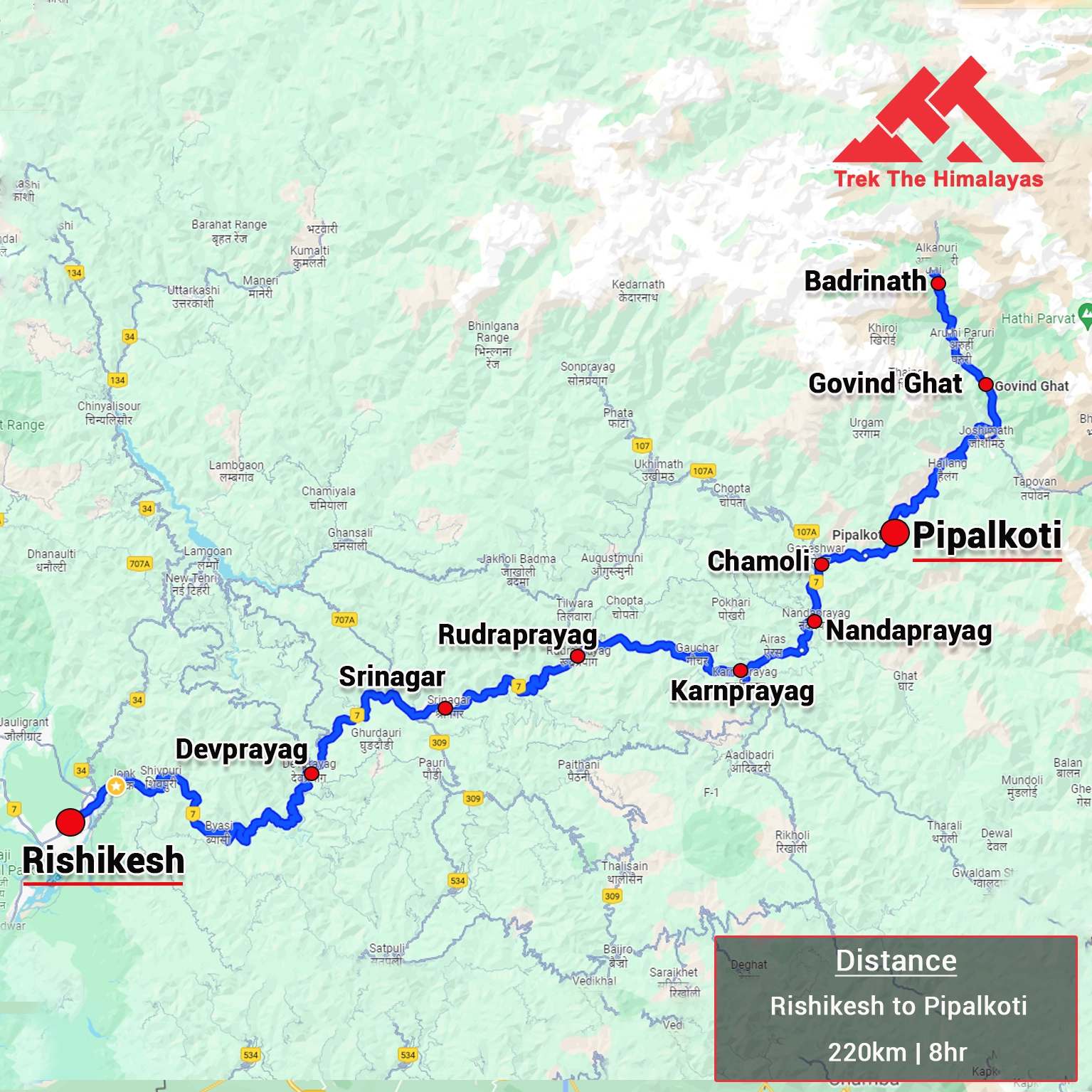
1. Accommodation (as per the itinerary):
- Day 1 and Day 13 Hotel Accommodation in 3 Star Hotel in Kathmandu with Bed & Breakfast.
- Day 2 to Day 12 Accommodation in Teahouse.
2. Meals (Veg + Egg):
- All meals Lukla to Lukla from Day 2 Lunch to Day 13 Breakfast
- Fresh fruit after dinner every day.
3. Support:
- 1 Versatile base camp manager: handles communication and deploys extra manpower in emergencies.
- 1 Mountaineering & First aid qualified professional trek Leader.
- Local experienced guides (Number of guides depending on the group size).
- Enough support staff.
4. Trek equipment:
- Sleeping bag.
- Gaiters & Crampon (if required).
5. First aid:
- Medical kit, Stretcher, Oxygen cylinder, Blood pressure monitor, Oximeter, Stethoscope.
6. Transportation (as per the itinerary):
- Arrival Departure Airport Transfer as per itinerary.
- Domestic airport transfers for Lukla.
- Kathmandu to Ramecchap /Lukla, and back.
7. Mules/porters to carry the central luggage.
8. Clock room facility available at the base camp for additional luggage.
9. All necessary permits and entry fees, Upto the amount charged for Indian.
10. Services from Kathmandu to Kathmandu .
11. TIMS card.
12. EBC Map.
13. Farewell Dinner in Kathmandu.
14. Trek Completion Certificate
15. Complementary Trekking Kit Bag (Duffle bag if opted for Porter facility).
1. Insurance (Mandatory).
2. Food during the transit.
3. Any kind of personal expenses.
4. Mule or porter to carry personal luggage.
5. Emergency evacuation, hospitalization charge or etc.
6. Anything not specifically mentioned under the head Inclusion.
8. Extra Expenses.
- Porters for the personal bag*.
- Wifi, charging batteries and hot showers.
- Customary gratuities for guides & porters.
9. Nepal entry visa (approximately $40 USD, Bring Two Passport Size photos) only for foreigners (Not for Indians).
10. Unforeseen costs due to flight cancellation, weather conditions etc.
11. Extra night accommodation Kathmandu.
Things can be provided on demand and availability (participant has to pay extra for these things).
1- Satellite phone/set phone - is a type of mobile phone that connects via radio links via satellites orbiting the Earth instead of terrestrial cell sites like cellphones. Therefore, they can operate in most geographic locations on the Earth's surface.
2- Gamow/PAC HAPO Bag (Portable Hyperbaric Bag) - is a unique, portable hyperbaric chamber for the treatment of acute mountain sickness (AMS), also known as altitude sickness.
3- AEDs (Automated External Defibrillators) - are portable life-saving devices designed to treat people experiencing sudden cardiac arrest, a medical condition in which the heart stops beating suddenly and unexpectedly.
Special Offer
Make a single payment and trek the number of times you want.
If you book a trek with Trek The Himalayas and cannot complete it, or if you've successfully completed the trek and wish to do it again, you can repeat it multiple times at no additional cost.
Terms and conditions
- This offer is non-transferable.
- This offer is valid for Trek The Himalayas limited fixed departures.
- This offer is valid for 5 years from the date of booking.
- This offer is not valid if the participant has received a cash refund or voucher at the time of cancellation.
- Participants don’t have to pay for the trek cost but have to pay for transportation and trek permit costs.
To reserve a spot for a trek or adventure program, you can either utilize our online booking form or call us at the provided number. For your confirmation, a deposit must be wired, including the initial payment.
Cancellation terms:
Cancellations prior to 25 days from the start of the Trip
Refund options
- 5% deduction of trek fee
- 100% cash voucher for any trip till one year
- Transfer your trek (any trek, any date) to your friend
Cancellation between 24 days and 15 days to the start of the Trip
- 30% deduction of trek fee
- 100% cash voucher for same trip till one year
- 85% cash voucher for any trip till one year
- Transfer your trek (same trek, any date) to your friend
Cancellation between 14 days and 10 days to the start of the Trip
- 50% deduction of trek fee
- 80% cash voucher for same trip till one year
- 70% cash voucher for any trip till one year
- Book the same trek, in the same season, with any other batch
Cancellation less than 9 days to the start of the trek
- No cash refund
- 20% cash voucher for the same trip till one year
- 10% cash voucher for any trip till one year
- Transfer your trek (same trek, same date) to your friend
Note- If a booking is made using a voucher or discount code, the policies related to vouchers and discounts cannot be modified.
In the unlikely event that TTH cancels a trek prior to the scheduled departure date:
While it is extremely rare for TTH to cancel a trek, we understand that unforeseen circumstances or natural disasters may occasionally require us to do so before the scheduled departure. These circumstances could include continuous rain or snow, thunderstorms, snowstorms, landslides, floods, earthquakes, or any other natural calamity that poses a risk to the safety of our trekkers. Additionally, unforeseeable events such as local riots, curfews, pandemics, lockdowns, government orders, or any similar situations that compromise the safety of the trekking experience may also necessitate a cancellation.
In the event of such a cancellation, TTH will provide you with a voucher equivalent to the amount you paid for the trek. This voucher can be redeemed for any of our treks within the next year, allowing you to still enjoy an adventure with us at a later date.
The issuance of a voucher is not applicable in situations where you are required to descend from the trek for any reason. The trek leader may make the decision to send you down from the trek due to factors such as insufficient fitness level, symptoms of Acute Mountain Sickness (AMS), high blood pressure, exceeding the designated turn-around-time, health concerns, or if you are found smoking, drinking, or violating the rules set for the trek. In such cases, the provision of a voucher does not apply.
In the rare event that TTH shifts a trek:
We would like to emphasize that weather conditions in high-altitude areas are highly unpredictable and can undergo sudden changes at any time, irrespective of the day. Additionally, circumstances beyond our control, such as natural disasters, political unrest, pandemics, and lockdowns, may impact the feasibility of conducting a trek. In cases where we are unable to proceed with an event due to such circumstances that are beyond our direct control, we will make every effort to provide you with an alternative trek that is safer and more suitable.
In such situations, we will issue a voucher to offset the cost difference between the originally scheduled trek and the alternative trek. This voucher can be redeemed at any time within one year from the date of issue. Please note that a refund fee or reimbursement of the cost difference is not applicable in these cases.
- Change of trek batch is dependent on the availability of seats in the batch
- In case of transferring a trek to a friend, he/she should satisfy all the mandatory requirements put forward by TTH
- TTH holds the right to change/cancel the policies, without prior notice
- Cash refund is applicable only in case of bookings made without using any promotional offer code or vouchers
Cash Voucher Terms:
- This is a non-transferable voucher
- The voucher cannot be merged with any other offer of Trek The Himalayas
- The voucher is valid for Trek booked directly with Trek The Himalayas in India
- To avail the voucher please use your register phone number or e-mail id
- All the other Terms of booking a trek with Trek The Himalayas are applicable to the voucher
- Trek The Himalayas holds rights to add/remove any of the Terms and Conditions without prior notice
Itineraries are based on information available at the time of planning and are subject to change. "Trek The Himalayas" reserves the right to change expedition dates, people or itineraries as conditions warrant. If a trip must be delayed or the itinerary changed due to bad weather, road conditions, transportation delays, government intervention, airline schedules, sickness, or other contingency for which TTH or its agents cannot make provision, the cost of delays and/or other changes are the responsibility of the participant. TTH reserves the right to decline, or accept, any individual as a trip member for any reason whatsoever.
Trek Essentials
PDF Of Trek Essential Download
Frequently Asked Questions(FAQ)
How to register/create an account with tth.
To register with TTH, visit our website - www.trekthehimalayas.com and create your account. To create your account you will need to use your email address and fill in all the details, set your unique password and your account is ready to use.
How to book a trek?
- To book a trek with TTH, you first need to register with us and create an account.
- Choose the trek that you want to do and click on available dates.
- You will land at the login page, fill in the required details.
- Add Participants, choose add-on services click on the Pay now button, choose your preferred payment method, and make the payment. TTH accepts multiple payment options, including credit/debit cards, net banking, and UPI.
- You will receive a confirmation email from TTH with all the necessary details about the trek, including the meeting point, transportation, accommodation, and other important instructions.
Made a payment but did not receive any confirmation.
please send an email to us at [email protected] or reach out to the numbers provided in the Help and Support section of your Trek Page. We will ensure that your issue is promptly resolved.
How to book off-load luggage and transportation?
To book services such as off-load luggage and transportation, you can find them listed as add-ons. These additional services can be booked at the time of your initial booking. If you miss booking add-ons during the initial reservation, you can log in anytime and easily book 4 days before the departure date add-ons through the platform.
If I have booked the wrong trek or date, how can I make changes?
In such a situation, please log in to your account and transfer your trek or date to the desired one within 12 hours or drop us an email at [email protected] 10 days before the departure date of the trek. After the initial 12-hour period, any changes will be processed according to the cancellation policy.
I am a beginner and confused which trek to book.
We recommend visiting our "Suggest Me a Trek" page. By filling out the form, our experts will contact you with the best possible trek options based on your preferences and experience level. Alternatively, you can reach out to us via email at [email protected] or give us a call using the numbers provided on our website for personalized assistance and recommendations.
How is family trek different from regular trek?
Family treks differ from regular treks by focusing on ease of difficulty, offering shorter durations for younger participants, Kid-friendly and easily digestible foods, child-friendly activities, maintaining a higher guide ratio for diverse age groups, and implementing additional safety measures for families.
Ideal treks for children.
Family Trek with Kids recommendation Only Dayara Bugyal and Chopta Chandrashila Trek.
Minimum age for children to trek with TTH.
Minimum age for TTH treks is typically 7 years, though this may vary depending on the specific trek.
Can we take children to high altitudes with their guardian?
Yes, you can take a kids to a high-altitude trek with a parent. Discuss with a trek expert before booking a trek.
Can we send kids without Parents/guardian?
Medical & Disclaimer Form (Mandatory Documents) Click here to download medical and disclaimer form
How to prepare a child for a high altitude trek?
Physical Fitness: Ensure your child is physically fit. Engage them in regular exercise, outdoor activities, and hikes to build stamina and endurance. Hydration: Emphasize the importance of staying hydrated at high altitudes. Encourage your child to drink water regularly, even if they don't feel thirsty. Proper Nutrition: Provide a well-balanced diet with sufficient carbohydrates for energy and foods rich in iron to prevent altitude sickness. Adequate Sleep: Ensure your child gets enough sleep in the days leading up to the trek. Quality rest is crucial for altitude adaptation. Educate on Altitude Sickness: Teach your child about the symptoms of altitude sickness, such as headache, nausea, and dizziness. Encourage them to communicate any discomfort immediately. Appropriate Clothing and Gear: Dress your child in layers to adjust to changing temperatures. Ensure they have appropriate trekking gear, including sturdy footwear. Positive Mindset: Foster a positive mindset. Encourage your child, and let them know it's okay to take breaks when needed. Medical Check-Up: Schedule a medical check-up before the trek to ensure your child is fit for high-altitude activities. Consult with a healthcare professional about any potential health concerns.
Kind of food will be served during the trek for children.
TTH takes special care to provide wholesome and nutritious food for children on treks. Here are some of the foods that are typically served for children: Breakfast: For breakfast, TTH serves a variety of options like porridge, cornflakes, bread, butter, jam, honey, boiled eggs, omelettes, and pancakes. Children can choose from these options to fuel themselves for the day's trek. Lunch: For lunch, TTH serves lunch which includes rotis, vegetables, rice, dal, and salad. The rotis are usually made fresh on the trek and are a good source of carbohydrates. The dal and vegetables provide protein and other essential nutrients. Snacks: TTH provides healthy snacks like fresh fruits, dry fruits, energy bars, cookies, and biscuits to keep the children energized throughout the day. Dinner: For dinner, TTH serves a hot and wholesome meal which includes soup, rice, dal, vegetables, and a non-vegetarian dish (if requested in advance). Children can also choose from a variety of desserts like custard, jelly, and fruit salad. Dietary requirements: If a child has any special dietary requirements, TTH can cater to those needs as well. For example, if a child is lactose intolerant or allergic to nuts, the kitchen staff can make arrangements to accommodate those requirements.
How to choose the right trek?
Choosing the right trek for a beginner can be a bit overwhelming as there are many factors to consider such as distance, elevation gain, terrain difficulty, weather, and time of year. Here are some tips that can help you choose the right trek for a beginner:
1. Determine fitness level: Assess the fitness level of the beginner to understand their physical capabilities. This will help you select a trek that is challenging but not too difficult.
2. Choose a well-traveled trail: A well-traveled trail will have more amenities such as signposts, water stations, and shelter. It is also safer as there will be other hikers on the trail.
3. Consider the length of the trek: For beginners, it is recommended to start with a shorter trek that can be completed in a day or two. This will help them get acclimatized to trekking and build their confidence.
4. Look for gradual elevation gain: Choose a trek with a gradual elevation gain rather than steep ascents. This will make the trek easier and more enjoyable.
5. Check the weather: Check the weather forecast before selecting a trek. Avoid treks during the monsoon season or winter when the trails can be slippery or dangerous.
6. Research the trail: Read about the trail to get an idea of the terrain, altitude, and difficulty level. This will help you select a trek that is suitable for the beginner.
7. Consult with an expert: If you are unsure about which trek to choose, consult our trek expert Mr. Nitin (+91 70600 59773) between 10 AM to 6 PM (Tuesday - Friday). Mr. Nitin will provide you valuable advice and guidance.
Overall, it is important to choose a trek that is enjoyable, challenging but not too difficult, and suitable for the beginner's fitness level and experience.
Can a beginner choose a tough trek?
It is not recommended for a beginner to choose a difficult Himalayan trek. Trekking in the Himalayas can be physically and mentally challenging, especially if you are not used to the high altitude, steep slopes, and rugged terrain. Choosing a difficult trek without the proper experience, fitness level, and preparation can be dangerous and put you at risk of altitude sickness, injury, and other hazards.
If you are a beginner, it is recommended to start with an easier trek and gradually build up your skills and experience. This will help you understand the challenges of trekking in the Himalayas, and also prepare you physically and mentally for a more difficult trek in the future. It is also important to choose a trek that matches your fitness level, experience, and interest.
What is the age limit for a beginner trekker?
There is no specific age limit for a beginner trekker. However, it is important to consider your physical fitness, health condition, and personal interests before embarking on a trek. Trekking in the Himalayas can be physically and mentally demanding, and requires a certain level of physical fitness and endurance.
If you have any pre-existing medical conditions or are above a certain age, it is recommended to consult with a doctor before embarking on a trek. It is also important to listen to your body and take breaks as needed during the trek to prevent exhaustion or injury.
If I am solo, can I join the trek in a group?
Yes, you can join the trek. We have fixed departure groups where you can simply book your trek and we will take care of curating a group.
How does my family get updated about my Trek?
Before you start the trek, it is recommended that you make all the necessary phone calls as during the trek you may or may not receive network coverage, once you come back to the Base Camp, you can reconnect with your family via phone once again. You can share your trek coordinator contact detail with your family members to get the latest updates about your trek batch.
What food can I expect?
At TTH, we provide wholesome and nutritious meals during the trek. The food is vegetarian and includes a variety of dishes such as rice, dal, vegetables, chapati, paratha, pasta, noodles, and soup. We also offer snacks such as biscuits, and salty, and dry fruits during the trek. Special dietary requirements such as vegan, gluten-free, or Jain food can also be arranged if informed in advance.
I am allergic to some foods.
If you are allergic to some foods, you need to let us know in advance so that we can make arrangements accordingly.
How safe is trekking with TTH?
TTH is a trekking company that prioritizes the safety of all its participants, including women trekkers. They have a comprehensive safety system in place, which includes a dedicated team of experienced and trained trek leaders and support staff who are equipped to handle emergency situations and provide first aid.
TTH also takes specific measures to ensure the safety and comfort of women trekkers. They have a separate tent accommodation for women trekkers, female trek leaders, and support staff. They also provide separate toilet facilities for women and encourage a safe and respectful environment for all trekkers.
Moreover, TTH has a strict policy against any kind of harassment and has a zero-tolerance policy towards such incidents. They have a designated Internal Complaints Committee (ICC) to investigate and address any complaints related to harassment or misconduct. Overall, TTH has a good reputation for safety and responsible trekking practices, and women can feel comfortable and safe while trekking with them.
How TTH will manage if I am the only woman in the group?
In case you are the only women in the group, we provide a single sleeping arrangement. Also, during the trek, the trek leader will always remain by your side to provide optimum safety and reassurance.
How can I know that other women are in the batch?
You can reach out to the trek coordinator to inquire about the number of female trekkers and their respective states who have booked the trek. Please note that the trek coordinator cannot disclose personal details of any trekker. Once you've confirmed your booking, a WhatsApp Group will be created for all the trekkers in your batch. This allows you to connect with fellow trekkers before the trek begins.
Can I know in advance, which trek is led by a women Trek Leader?
While many of our treks are led by female trek leaders, however, it is not possible to know which trek leader is assigned to which group. But nonetheless, whether the trek leader is male or female you can be completely assured of your safety and security with us.
Can I trek with periods? If yes, then where can I dispose of the sanitary pad?
Yes, it is possible to trek with periods. However, it is important to take some extra precautions and preparations to ensure a comfortable and safe trekking experience.
Here are some tips that can help you trek during your period:
1. Use menstrual hygiene products that you are comfortable with, such as tampons, pads, or menstrual cups. It is recommended to carry enough supplies for the entire duration of the trek.
2. Pack wet wipes, hand sanitizer, and plastic bags to dispose of used hygiene products.
3. Wear comfortable and breathable clothing that allows for easy movement and reduces friction. Avoid wearing tight or restrictive clothing that can cause discomfort.
4. Carry pain relief medication, such as ibuprofen or acetaminophen, in case of menstrual cramps.
5. Stay hydrated and maintain a balanced diet to support your energy levels and overall health.
6. Take breaks as needed and listen to your body. If you feel uncomfortable or experience any unusual symptoms, seek medical attention immediately.
It is also recommended to consult with a doctor before going on a trek during your period, especially if you have a pre-existing medical condition or are taking medication. By taking necessary precautions and being prepared, you can have a safe and comfortable trekking experience even during your period.
We provide proper disposal facilities for sanitary pad disposal during the trek.
How will the accommodation be during the trek?
We offer three person tents with twin-sharing for optimum comfort. A woman trekker will share a tent with another woman trekker and if you are the only woman in the group, you will be given a single accommodation for your comfort and privacy.
Are trek poles, Jackets and other equipment available for rent from Trek The Himalayas?
Yes, we do provide gears on rent. You can book it using you TTH account directly.
Who will be with us on the trek from Trek The Himalayas?
Mountaineering qualified Experienced and first aid certified Trek Leader, First Aid Certify local guide, Cook, helpers and supporting staff.
Who can not join the trek?
People suffering from Bronchitis, Asthma, High blood pressure, Epilepsy (got faints), TB , Heart problem or on higher BMI side are strictly not allowed to go on any Himalayan trek. Apart from this if you had any medical history, please let us know.
When it gets really cold can I consume alcohol?
No. Alcohol and smocking isn’t allowed while on trek. It is totally misconception that it will keep you warm. Your body need to acclimatize properly and for that eat properly and drink enough water; these things will keep you warm.
What type of toilet facility is TTH providing at the trek?
Toilet tents provide a convenient solution for answering nature's call in the great outdoors. Dry toilets, in particular, offer a highly sanitary approach. By digging a pit and utilizing mud and a shovel, you can easily cover up your waste. This method ensures cleanliness and hygiene while camping or exploring in the forest.
Remember to pack essential toiletries to complete your outdoor bathroom kit and maintain proper personal hygiene during your adventures. With these practices in place, you can enjoy nature while also respecting it.
How do I manage the negative temperatures on the trek at higher camps? Do I need special jackets?
Layer Up From Head To Toe Eat Full Meals, never sleep empty stomach You can keep warmee (if you’re more susceptible to cold). Use sleeping bag in right way and don’t leave free space in sleeping bag.
For upper body – Thermal layer – T-shirt (full-sleeves) – Fleece T-shirt (for extreme colds) – Fleece layer – Thick Jacket/Down Jacket – Waterproof or Windproof layer (outermost layer, when it is snowing or raining) - For Lower Body – Thermal layer – Hiking pants (normal) or Winter hiking pants
Based on how warm you feel you can skip any of the above layers. Your outer later should be windproof since it is windy at high altitude. The idea behind layering is that the more insulation you have the less cold you feel, and instead of wearing a very thick jacket if you wear multiple layers, your body will be better insulated against the cold.
Do you provide crampon/micro spikes and gaiters?
Yes, we provide micro spikes and gaiters, if required.
What documents need to carry on trek?
Mandatory documents: 2 xerox of ID having address (addhar card/driving license), 2 Passport size photographs, hard copy Medical form signed & sealed by doctor, disclaimer form sign by trekker and high altitude insurance.
If we come prior the trek date, Do you provide accommodation?
No. We don’t but we can suggest you good hotel/Stay nearby pick up location.
Do we get enough water for drinking?
Yes, trekker must carry 2 water bottles 1 litre each so they can refill it at campsite for drinking and keep themselves hydrate.
What kind of shoes we should buy for the trek?
You should buy shoes which has these three features –Good grip, Ankle Support and additional water resistant layers. Generally, we advise Quechua Trek 100, MH 500 and MH 100.
How do we get back after the trek?
Your return transport is also included in trek fee if you're opting for service Dehradun to Dehradun ; we use Tempo Traveller/ Tata Sumo/Max/Boloero kind of vehicle.
What happens if some members of the team need to turn back before the summit?
No one is forced to go on. There is always enough staff to split the party according to need and regroup later at the camp. Most people have no trouble reaching the highest campsite. If some members decide not to climb the final distance they can wait for the climbers to come back down the same way or take a lateral path to the descent route.
What kind of help is available in case of emergency?
We always have a first aid kit close at hand. Serious injuries are rare. Porters will assist injured climbers to the base of the mountain and onward to a clinic or hospital. Kilimanjaro International Airport is very near Marangu Gate if evacuation to the US or Europe is advisable.
What is Everest Base Camp Trek?
Everest Base Camp Trek (EBC) is a popular trekking destination located at the base of Mount Everest in the Khumbu region of Nepal. It serves as a starting point for many climbers who aim to summit Mount Everest and offers stunning views of the surrounding Himalayan mountain range.
Where is Everest Base Camp located?
Everest Base Camp is located in the Khumbu region of Nepal, at an altitude of approximately 18,200 ft above sea level.
What is the altitude of Everest Base Camp?
The altitude of Everest Base Camp is approximately 18,200 ft above sea level.
How do I get to Everest Base Camp?
To get to Everest Base Camp, you need to first fly to Lukla from Kathmandu and then trek for around 8-12 days through the Khumbu region of Nepal.
Do I need a permit to trek to Everest Base Camp?
Yes, you need to obtain a Sagarmatha National Park Permit and a TIMS (Trekkers' Information Management System) card to trek to Everest Base Camp.
How long does it take to trek to Everest Base Camp?
It takes 13 days to complete Everest Base Camp, depending on your fitness level and the route you take.
What is the best time to trek to Everest Base Camp?
The best time to trek to Everest Base Camp is during the spring (March-May) and autumn (September-November) seasons when the weather is dry and stable.
What is the weather like at Everest Base Camp?
The weather at Everest Base Camp can be unpredictable and harsh, with temperatures ranging from -20°C to 15°C (-4°F to 59°F) and strong winds.
What type of accommodations are available at Everest Base Camp?
There are teahouses and lodges available at Everest Base Camp that offer basic accommodations and food.
What kind of food is available at Everest Base Camp?
The food at Everest Base Camp mostly consists of Nepali and Tibetan cuisine, including dal bhat (rice and lentils), momos (dumplings), and noodle soup.
Is it safe to trek to Everest Base Camp?
Trekking to Everest Base Camp can be challenging and there are risks associated with high-altitude trekking, but with proper preparation and guidance from experienced guides, it can be a safe and rewarding experience.
What are the risks associated with trekking to Everest Base Camp?
The risks associated with trekking to Everest Base Camp include altitude sickness, hypothermia, falls, and avalanches.
Do I need any special gear to trek to Everest Base Camp?
Yes, you need to bring proper trekking gear, including warm clothing, trekking boots, a sleeping bag, and a backpack.
What physical fitness level is required for trekking to Everest Base Camp?
Trekking to Everest Base Camp requires a moderate to high level of physical fitness, as you will be trekking 8 for several days at a high altitude.
What are some other popular trekking destinations near Everest Base Camp?
Other popular trekking destinations near Everest Base Camp include Gokyo Lakes, Cho La Pass, and Island Peak.
- Date and Price
Rent A Gear
Trek Articles
Quick Links
Trekking & Hiking
Mountaineering
Multi Sports
Himalayan Pilgrimage
Website Privacy
Terms & Condition
Contact Info
Get in touch with us. E-mail us Monday-Saturday (10 AM to 6 PM)
Address: Trek The Himalayas, Kaintura Plaza, Badrinath Road Tapovan, Rishikesh - 249201 Uttarakhand
Phone: 8191004846
Email: [email protected]
2010 Trek The Himalayas. All rights reserved
National Geographic content straight to your inbox—sign up for our popular newsletters here

How to plan the ultimate adventure in the Himalayas, from beginners' hikes to Everest base camp
Home to the world's tallest peak, this is a mountain range that none other can match — and you don't have to be a hardcore mountaineer to go. From Everest Base Camp to Bhutan’s Tiger's Nest, here are some of the best routes.
Draped across the very top of the Indian subcontinent, the Himalayas are the stuff of trekking legend. Every hiker worth their boots has likely dreamed of tackling this range’s trails, which carve out the craggy routes between remote villages and mountain monasteries, in the formidable shadows of the world’s highest peaks.
In the high-altitude valleys of Nepal, Bhutan and India, trekkers face sights that many may believe are reserved for mountaineers: the aquamarine lakes in their valleys, the alpine meadows dusted with wildflowers and the snow-capped mountains themselves.
And in the rugged landscapes between the peaks live bands of indomitable people — nomadic yak herders, enlightenment-seeking monks, mountain-climbing Sherpas. You’ll find culture in abundance here, too, whether you stay in local teahouses or trek off-grid. And there are ways for even beginners to experience all of this.
The reality is that with so many destinations to choose from, trekking in the Himalayas can be as challenging or as comfortable as travellers want it to be. On a camping expedition in Bhutan, supported by guides, cooks, tent-assemblers and even packhorses, trekkers are largely unburdened save for perhaps a camera or hiking poles. Meanwhile, at the opposite end, prize views are open to anyone looking for a real challenge and willing to do all the heavy lifting. Hardy trekkers can find the kind of solitude normally reserved for snow leopards in remote valleys, where the only sound comes from tinkling streams of meltwater and the soft breezes that drift down from the high mountains in whispers.
To help you make sense of the region, choose between two long-distance treks in Nepal or Bhutan, which are suitable for fit beginner or intermediate hikers, or try an easier introduction to the Himalayan foothills of India in search of rare birdlife.
Itinerary one: Everest Base Camp, Nepal
There are 14 peaks higher than 8,000m in the world, and eight of them are found in Nepal — including Mount Everest (Sagarmatha), which, at 8,849m, is the loftiest of them all. The two-week trek to Everest Base Camp takes breathless walkers to heights above 5,000m, with thrilling views every step of the way.

1. Namche Bazaar It takes two days to hike from the tiny mountain airstrip at Lukla to Namche Bazaar. This thriving amphitheatre of stone lodges gazes towards the lofty peaks, with ancient shrines, Gore-Tex gear shops, yak steak restaurants and even an Irish bar, where trekkers toast to their success after tiring days on the trails. Pause here for short acclimatisation hikes to the fascinating Sherpa villages of Khumjung, Khunde and Thame, where you can get a taste of local life.
2. Ama Dablam Everest may be top dog, but 6,812m-high Ama Dablam is arguably the most perfect peak in the central Himalayas — an isolated sentinel almost mirroring the pyramid-topped Buddhist stupas that line the Base Camp trail. There are stupendous views of the snow-encrusted summit between Namche Bazaar and the Buddhist monastery at Tengboche.
3. Tengboche The Buddhist monastery at Tengboche holds a special place in the hearts of visitors to the Himalayas. The resident monks have welcomed everyone from Edmund Hillary and Tenzing Norgay, the first to conquer Everest in 1953, to record-breaking Nepali climber Nirmal Purja. Millions of trekkers have also been drawn by its traditional architecture and vividly colourful murals. It’s one of the loveliest stops in the Everest region, with epic views over a ridge of snowy peaks and comfy lodges crowning a grassy plateau.
4. Everest Base Camp The base camp used for ascents of Mount Everest is perhaps the most legendary trekking destination of them all. Amid scattered boulders and tooth-like pinnacles of ice, you’ll find mountaineers huddled around dome tents and satellite phones, acclimatising for the push to the summit. Grab a slice of hot apple pie from the world’s highest bakery before trekking downhill to the teahouses at Gorak Shep.
5. Kala Patthar The summit of Everest is hidden from view at Base Camp, behind the rocky shoulder of 7,861m-tall Nuptse. For incredible vistas of the world’s highest peak, hike from Gorak Shep to the summit of Kala Patthar (5,645m) — a blackened crag with uninterrupted Everest views. It’s a breathless two-hour ascent to reach the top, but from here, the black summit of Everest stands clear of its companion peaks, rising majestically above the Khumbu Glacier.
Itinerary two: Jhomolhari, Bhutan
The Jhomolhari trek is to Bhutan what the Everest Base Camp trek is to Nepal. Rising through wind-scoured valleys, this week-long camping trek takes its name from 7,326m Jhomolhari, the sacred mountain abode of one of Bhutan’s five protector goddesses and the defining landmark on the route.

1. Taktshang Goemba According to legend, Taktshang Goemba — aka the Tiger’s Nest — was anchored to the side of a sheer cliff wall using the hair of angels. Perhaps Bhutan’s most famous monastery, here pilgrims chant mantras, prayer flags dance in the Himalayan breeze and prayer halls are adorned with legions of Buddhas and bodhisattvas (enlightened beings). The steep four-hour hike here from Paro is a perfect primer for the more ambitious climbs that await on the Jhomolhari trek.
2. Drukgyel Dzong This ancient dzong (fortress) set high on a hill is en route to the starting point of the Jhomolhari trek, Sharna Zampa, and many trekkers still pause here to admire the view before lacing up their hiking boots for the main event. After a devastating fire in 1951, the ornate prayer halls and woodcarvings of the historic fortress are being restored using traditional Himalayan construction techniques that have been preserved through the centuries.
3. Jangothang Reached via a two-day trek from Sharna Zampa, the campground at Jangothang sits around 750m below the highest point on the trail, with Jhomolhari’s summit rising at the end of the valley. Linger here for gentle acclimatisation hikes to higher viewpoints, turquoise lakes and the ruined fortress that once guarded traders moving between Bhutan and Tibet.
4. Lingzhi The village of Lingzhi sprawls across a grassy valley speckled with yaks and wildflowers, with the face of Jhomolhari peering over its shoulder. This mountain outpost is dominated by a timeworn hilltop dzong, built to commemorate Bhutan’s victory over Tibet in 1667. It’s a soothing spot to rest or explore before the big push to the Yeli La.
5. Yeli La Marked by a lonely cairn decked with prayer flags, and offering sweeping views over a rugged landscape, the highest point on the trek sits at 4,820m — it’s barely a small hill compared to the surrounding peaks, but still a draining endeavour at high altitude. Keep your eyes peeled for Himalayan blue sheep and marmots while you make the long descent onwards into the Wang Chhu valley towards Thimphu and your end point.
( A practical guide to hiking the Himalayas.)
Related Topics
- MOUNTAINEERS
- EXPLORATION
- ADVENTURE TRAVEL
- ADVENTURERS
- HIDDEN TREASURES
You May Also Like

This thrilling Chilean trek is the world’s southernmost hike

Max Leonard treks back in time along the mountainous Italian-Austrian border
Free bonus issue.

Get ready for your next iconic adventure like a pro with these tips

Meet the British mountaineer chasing small adventures after a life-changing stroke

What you need to know about volcano tourism in Iceland

Comedian Dom Joly on his quest to find the end of the earth in Atlantic Canada

Meet the adventurers: ski mountaineers Ed Salisbury & Jon Moy on the Last Ride
- Environment
- Perpetual Planet
History & Culture
- History & Culture
- History Magazine
- Mind, Body, Wonder
- Paid Content
- Terms of Use
- Privacy Policy
- Your US State Privacy Rights
- Children's Online Privacy Policy
- Interest-Based Ads
- About Nielsen Measurement
- Do Not Sell or Share My Personal Information
- Nat Geo Home
- Attend a Live Event
- Book a Trip
- Inspire Your Kids
- Shop Nat Geo
- Visit the D.C. Museum
- Learn About Our Impact
- Support Our Mission
- Advertise With Us
- Customer Service
- Renew Subscription
- Manage Your Subscription
- Work at Nat Geo
- Sign Up for Our Newsletters
- Contribute to Protect the Planet
Copyright © 1996-2015 National Geographic Society Copyright © 2015-2024 National Geographic Partners, LLC. All rights reserved
Book Your 2024 & 2025 Adventures Risk free.

Latest Stories
- Our Commitment
- Customer Reviews
The ultimate Himalayan trek and adventure of a lifetime. Stand face to face with Mount Everest and trek along side 4 of the world's tallest peaks. Enjoy the welcoming culture of the Sherpa.
Himalayanwonders Top Treks
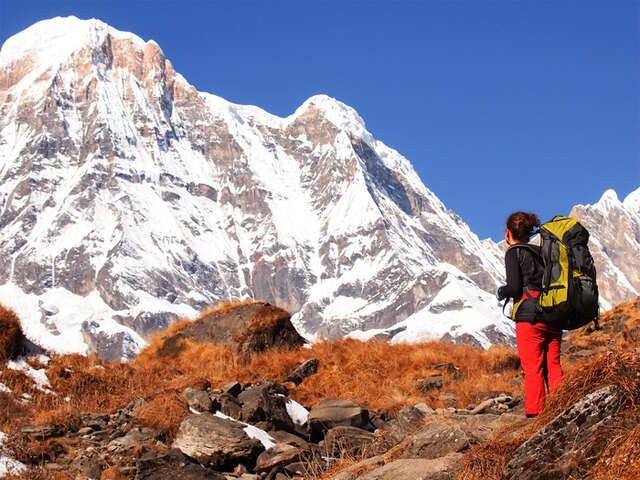
Join our Fixed Departure

Ready to take you're trekking to the next level? The Nepal Mountaineering Association (NMA) has designated 33 trekking peaks that can be tackled without an expedition permit.

Everest Base Camp, the Annapurna Circuit, Markha Valley and more. Looking for the best trekking options in the Himalayas?

The Himalayas and the Tibetan Plateau combined are one of the most extreme expressions of mountain...
Get off the beaten path with one of these exclusive departures.
Here we answer the most common questions before every trip.
click here for more treks >

#HimalayanWonders

- Choosing a Trek
- Tea House Trekking
- Trekking Tips
- Flying to Lukla
- Packing List
- Fitness Training
- Travel Insurance
- Arrival & Visas
- Best Time to Go
- Staying Healthy
- Meet the Team

- Privacy Policy
- Terms & Conditions

- Everest Region Trek
- Annapurna Region Trek
- Manaslu Region Trek
- Mustang Region Trek
- Langtang Region Trek
- Makalu Region Trek
- Dolpo Region Trek
- Kanchenjunga Region Trek
- Best Selling Treks
- Nepal Trekking
- Luxury Treks in Nepal
- Challenging Treks in Nepal
- Family Treks in Nepal
- Peak Climbing
- Mountain Climbing in Nepal
- Nepal Tour Packages
- Luxury Tours in Nepal
- Helicopter Tours
- Nepal Family Tours
- Bhutan Tour
- Kailash Tour
- Pokhara Day Tour
- Kathmandu Day Tours
- Jungle Safari in Nepal
- Nepal Visa Information
- Packing List for Trekking
- Bhutan Visa
- Fitness Training
- 10 Comprehensive Nepal Trekking Tips
- Flight Cancellation
- Travel Insurance
- The Differences
- Terms & Conditions

Everest Base Camp Trek in Nepal: The Ultimate Guide to Reaching the Foot of the World’s Highest Peak
: 2023-12-26
Last Updated : 2024-01-08
The journey to Everest Base Camp Trek in Nepal tops the dream list for countless trekkers worldwide, and for good reason! It is a trail that showcases the greatness of the Khumbu Valley, offering breathtaking views of some of the world’s highest peaks.
The journey begins with an exciting flight to Lukla, at an elevation of about 2850 meters. Thereafter, you will cross through delightful Sherpa villages. Each of the stops along the way reveals a piece of Nepal’s rich cultural tapestry.
Standing at the foothills of the mighty Everest, the highest pinnacle on Earth, this trek proves to be an unforgettable adventure.
We will trek through amazing rhododendron forests and fascinating Sherpa settlements, eventually reaching the iconic base camp at an impressive altitude of 5364 meters. Explore the natural beauty of the Himalayas, stand in the shadow of the world’s highest peak, and make unforgettable memories in the amazing Everest region in Nepal.
Our well-known travel agency in Nepal , Himalayan Trekking and Tours with over 20 years of experience guiding trekkers through Nepal’s magnificent landscapes, invites you to join us on the best trekking experience in Nepal.
Table of Contents
Brief history and significance of mount everest.
Mount Everest is truly a symbol of human achievement and the incredible power of nature. It is named after Sir George Everest, but locals also call it Chomolungma and Sagarmatha, capturing its breathtaking presence. Standing at a staggering 8,848 meters (29,029 feet) above sea level, it is the highest peak on Earth.
The mountain has a rich history filled with both triumph and tragedy. The first successful climb to the summit was a huge moment on May 29, 1953, when Sir Edmund Hillary of New Zealand and Tenzing Norgay , a Sherpa from Nepal, reached the top.
This iconic peak has since captivated the imagination of explorers, mountaineers, and trekkers worldwide. Its magnetic attraction draws thousands of adventurers eager to witness its majestic glory and stand in or at the base of the world’s highest point.
Reaching Everest Base Camp is an amazing accomplishment that fills people with a sense of adventure and excitement. Even if they don’t make it to the top of the mountain, just standing in its shadow is an unforgettable experience.
Geographic location and elevation of Everest Base Camp
The geographic location and elevation of Everest Base Camp are important while understanding the challenges of this iconic trek. Everest Base Camp serves as the launching point for expeditions aiming to conquer the world’s tallest peak, Mount Everest .
Geographically, Everest Base Camp is situated within the Sagarmatha National Park , a UNESCO World Heritage Site of Nepal that spans an area of 1,148 square kilometers. The trek starts at Lukla. Lukla, which has a small airport for people arriving by plane. From there, the trail goes through all kinds of landscapes like forests, Sherpa villages, and areas with big piles of rocks left behind by glaciers.
Along the way, trekkers get to see famous places like Namche Bazaar , which is like the capital of the region, and Tengboche Monastery , where they can see amazing views of Mount Everest and other big mountains.
The last part of the trek to Everest Base Camp is a tough climb from a place called Gorak Shep. This is where trekkers get to see the raw, wild beauty of the Himalayas and walk along the Khumbu Glacier until they finally reach the camp.
The location of Everest Base Camp is not just about how high it is, but also about the incredible views it offers. It gives trekkers a chance to see the huge mountains up close and feel a real sense of accomplishment and wonder.
But it’s not all easy. The high altitude, extreme weather, and rough terrain make the journey really challenging. People need to be prepared, take their time to get used to the altitude, and be respectful of the environment.
The combination of the amazing location and the tough physical challenges makes trekking to Everest Base Camp an unforgettable adventure that draws people from all over the world to experience the beauty and greatness of the highest peak on Earth.
Trek Difficulty and Preparations for Everest Base Camp
It is important to understand the Everest Base Camp Trek in Nepal’s difficulty, and adequately preparing for the journey are very important for a successful and enjoyable experience.
- Altitude: The Ultimate Challenge
Everest Base Camp Trek in Nepal isn’t defined by technicality; rather, it’s an altitude game. Scaling above 5,000 meters in the Himalayas poses the greatest challenge. Despite prior trekking experience at high elevations in other regions, acclimatization remains crucial. The thin air can pose a greater obstacle than the trek’s physical demands.
- Fitness and Trainin g
Physical fitness significantly impacts your trek. While the route doesn’t demand technical climbing skills, it requires endurance. A well-rounded fitness regimen pre-trek aids in building stamina, strength, and cardiovascular endurance. Focusing on leg strength and aerobic fitness through activities like hiking, running, and cycling prepares your body for the demands of the trail.
- Gradual Ascent for Acclimatization
The trek’s design factors in gradual ascents to aid in acclimatization. The itinerary typically includes multiple rest days and moderate daily distances. These intentional breaks allow your body to adjust gradually to the diminishing oxygen levels, reducing the risk of altitude-related illnesses.
- Awareness of Altitude Sickness
Altitude sickness, particularly acute mountain sickness (AMS), is a significant concern. Symptoms such as headaches, nausea, and fatigue may occur due to the decreased oxygen at higher altitudes. Recognizing these signs and understanding when to rest or descend is crucial.
- Hydration and Nutrition
Staying hydrated and well-nourished is vital during the trek. Dehydration worsens altitude-related issues, while a balanced diet aids in energy levels and recovery. Carbohydrates are particularly helpful, assisting the body in efficiently utilizing oxygen at high elevations.
- Trekking Pace and Rest
Pacing oneself and heeding one’s body’s cues are fundamental. Striking a balance between consistent progress and rest is key. Restful sleep and ample breaks help combat fatigue and aid in acclimatization. Overexertion and rapid ascents significantly increase the risk of altitude sickness.
- Preparation Checklist
A thorough packing list is indispensable. Adequate gear, including sturdy hiking boots, breathable clothing, and essential equipment, ensures comfort and safety throughout the trek. Technical clothing suited for varying weather conditions and proper trekking boots for difficult terrain are non-negotiable items.
- Mental Preparation
Lastly, mental preparedness is as crucial as physical readiness. Mentally embracing the challenge, staying positive, and maintaining realistic expectations empower trekkers to conquer the trail.
In summary, while the Everest Base Camp Trek in Nepal isn’t a technical climb, its altitude demands respect and preparation. Fitness training, gradual ascent, awareness of altitude sickness, nutrition, pacing, and mental readiness collectively ensure a safe, enjoyable, and successful journey to the iconic base camp of the world’s highest peak.
Best Time for Everest Base Camp Trek in Nepal
Everest Base Camp Trek in Nepal is a thrilling adventure, but choosing the right time to head on this journey greatly influences the experience. The Everest Region experiences four distinct seasons, each offering its own unique atmosphere and challenges.
- Spring (March to May)
Highlights: Spring stands as the prime trekking season for Everest Base Camp Trek in Nepal. During these months, the temperatures are mild, the skies are clear, and the landscape bursts with vibrant colors as rhododendrons bloom along the trails.
The trail is buzzing with excitement as trekkers from around the world gather to witness the Himalayan peaks at their best. This season allows for fantastic views and pleasant trekking conditions.
Considerations: Despite the favorable weather, spring tends to draw large crowds, making popular spots a bit crowded. However, it is an excellent time to connect with fellow trekkers and join the camaraderie of the trekking community.
- Summer (June to August)
Highlights: The summer months in the Everest Region are warm, but they coincide with the monsoon season. Expect high temperatures and increased humidity. The trail is less crowded during this time, offering a more serene experience. The lush greenery and blooming flora create a scenic landscape.
Considerations: However, the monsoon brings frequent rainfall, leading to wet and slippery trails. Cloud cover often obscures mountain views, limiting visibility. Trekking during this time requires careful planning and preparedness for rain and potential landslides.
- Autumn (September to November)
Highlights: Autumn is another prime season for Everest Base Camp Trek in Nepal. The weather during this time is stable, with clear skies and excellent visibility of the majestic Himalayan peaks. The air is crisp and clear, allowing for breathtaking panoramic views.
Considerations: Similar to spring, autumn attracts a significant number of trekkers, especially during peak months like October. It’s advisable to make early arrangements for accommodations and permits due to the high demand.
- Winter (December to February)
Highlights: Winter in the Everest Region brings cold temperatures and snowy landscapes. While the trails are quieter with fewer trekkers, the stunning snowy vistas offer a unique and tranquil experience. The clear skies allow for crystal-clear views of the mountains.
Considerations: Winter trekking is challenging due to extremely cold temperatures, particularly at higher altitudes. Trekking during this season requires adequate preparation with proper gear to endure the cold.
Each season in the Everest Region presents its own set of advantages and challenges. Spring and autumn are the peak trekking seasons, offering the best weather conditions and spectacular views. Summer provides a quieter trekking experience amid lush landscapes, while winter offers a serene but challenging trek through snowy terrain.
Choosing the best time for your Everest Base Camp Trek in Nepal depends on your preferences for weather, crowd levels, and your willingness to tackle the different challenges each season presents.
The Sherpas: Guardians of the Himalayas
The Sherpas are a really important part Everest Base Camp Trek in Nepal. They are not just guides or porters; they are the guardians of the Himalayas and play a huge role in making the trek successful. They live in the Solu-Khumbu Valley in eastern Nepal and are a big part of the trekking experience.
- Sherpa’s Culture and Background
The Sherpas have a strong connection to their Tibetan heritage, which shows in their customs, language, and religion. Buddhism is a big part of their culture, and you can see it in the many monasteries and stupas along the route to Everest Base Camp Trek in Nepal. The mountains are a big part of their identity, and their respect for these peaks is really clear.
- Sherpa’s Expertise and Knowledge
Sherpas are known for being experts in navigating the Himalayas. They understand the terrain, weather, and high altitudes really well, which makes them incredibly important for climbers and trekkers. Their ability to handle extreme altitudes and carry heavy loads has been a huge help for people trying to conquer the mountains.
- Support in Mountaineering
In the early days of mountaineering, Sherpas played a big role in helping large-scale expeditions in the Himalayas. Their strength and agility allowed them to carry heavy loads, which was essential for these tough expeditions.
- Economic Contribution and Sustainable Tourism
Tourism is a big source of income for Sherpa families, with thousands of trekkers and climbers visiting the Everest region every year. They play a big part in the trekking industry, whether as guides, porters, or running teahouses. They are also committed to responsible and sustainable tourism to protect the region’s natural beauty and culture.
- Guiding and Nurturing Trekkers
Sherpas are not just guides; they are also really welcoming and kind. They open their homes and offer shelter to trekkers, sharing their culture and making the experience more than just a physical journey.
In summary, the Sherpas are more than just companions on the Everest Base Camp Trek in Nepal. They are the keepers of the mountains, cultural ambassadors, and essential partners in making this adventure a special and transformative cultural experience amidst the world’s highest peaks.
Everest Base Camp Trek Itinerary
Day 1: Fly from Kathmandu or Ramechhap Airport to Lukla, and same day Trek to Phakding
Duration: 3–4 hours Distance: 7.3 km Ascent: 160 m Descent: 370 m
The journey begins with an early flight from Kathmandu to Lukla, offering breathtaking views of the Himalayan range. Lukla, a bustling mountain town, serves as the starting point for trekkers. The trek to Phakding involves a gradual descent alongside the Dudhkoshi River, passing through Sherpa villages like Ghat and Chheplung.
Trekkers cross thrilling suspension bridges, enjoy tea in villages like Jorsale, and reach Phakding, surrounded by majestic mountains. This day provides a perfect blend of scenic flights, cultural encounters, and the excitement of embarking on the Everest Base Camp Trek in Nepal.
Day 2: Trek from Phakding to Namche Bazaar
Duration: 4.5 hours Distance: 10.5 km Ascent: 910 m Descent: 150 m
On Day 2 of the incredible journey of Everest Base Camp Trek in Nepal, trekkers set out from the charming village of Phakding, ready to embrace the wonders of the Khumbu region. The trail takes you through Sherpa communities like Benkar and Chumoa, revealing the warmth of local hospitality. Crossing the Dudhkoshi River on swaying suspension bridges adds an exciting touch to the adventure.
As the path ascends through fragrant pine forests, the first glimpse of Thamserku will make trekkers feel enthusiastic. The entrance to Sagarmatha National Park symbolizes the start of a truly fascinating Himalayan experience.
The day’s ultimate challenge lies in the ascent to Namche Bazaar, a vibrant Sherpa town. Namche, with its bustling markets and stunning mountain views, becomes not just a resting point but a place to connect with the unique spirit of the Himalayas, making every step forward a memorable journey.
Day 3: Acclimatize at Namche Bazaar
On Day 3, we take a breather in the lively town of Namche Bazaar, surrounded by majestic peaks that create a surreal backdrop. It is a day to rest a bit and soak in the essence of the mountains. As we explore, the town reveals its cultural treasures, including local monasteries and a glimpse into Sherpa life.
With the breathtaking views of Kwangde, Khumbu Peak, and Thamserku, Namche becomes not just a place for acclimatization but a haven where trekkers connect with the Sherpa community and embrace the unique mountain culture. This day serves as a crucial pause, allowing us to adapt to the altitude while immersing ourselves in the beauty and warmth of Namche.
Day 4: Trek from Namche bazaar to Tengboche
Duration: 5.5 hours Distance: 9.5 km Ascent: 780 m Descent: 350 m
Day 4 of the Everest Base Camp Trek in Nepal is like stepping into a dream. We leave the lively energy of Namche Bazaar and venture into nature’s masterpiece. The trail, adorned with vibrant rhododendron forests, reveals stunning snapshots of Everest and Ama Dablam.
The ascent to Tengboche feels like a journey to a spiritual haven, crowned by the iconic monastery against a Himalayan backdrop. It is a day of challenges met with breadth-taking vistas, where the Sherpa culture is closely seen and understood. Tengboche, at 3,860 meters, welcomes us with a sense of peace—a perfect spot to absorb the spiritual essence, witness a Himalayan sunset, and gear up for the Everest adventure that awaits.
Day 5: Trek to Dingboche
Duration: 5.5 hours
Distance: 10.8 km
Ascent: 630 m
Descent: 170 m
On the 5th day of our incredible Everest Base Camp Trek in Nepal adventure, we set out from the enchanting Tengboche, surrounded by dense forests and the melodious sounds of nature. Our journey took us on a descent through a vibrant forest, where we crossed the Imja Khola on a charming suspension bridge. As we trekked, the majestic Ama Dablam greeted us, adding to the breathtaking scenery.
The trail then heads towards, revealing a gradual ascent with panoramic views of the surrounding peaks. Finally, we reached the peaceful village of Dingboche, surrounded by protective stone walls guarding the crops from the harsh mountain weather. The day ends with a sense of accomplishment and eager anticipation for the Himalayan wonders yet to be discovered.
Day 6: Acclimatization in Dingboche
On Day 6 of the Everest Base Camp Trek in Nepal , trekkers experience a vital acclimatization day in the beautiful village of Dingboche. Situated at an elevation of 4,410 meters, Dingboche offers stunning views of the towering peaks, including Ama Dablam. The day is dedicated to adapting to higher altitudes, ensuring the well-being of trekkers as they ascend.
While acclimatizing, adventurers have the option to begin short, invigorating hikes in the surrounding hills, providing not only breathtaking panoramic views but also aiding the adjustment process. With its unique blend of cultural charm and mountainous attraction, Dingboche becomes a crucial rest stop on the journey, allowing trekkers to recharge before continuing the ascent towards Everest Base Camp.
Day 7: Trek to Lobuche
Duration: 4.5 hours
Distance: 7.8 km
Ascent: 620 m
Descent: 20 m
On the 7th day of the Everest Base Camp trek in Nepal, adventurers will have an amazing experience as they hike to Lobuche. The day starts with a beautiful climb, passing through stunning mountain landscapes. The trail goes through the heart of the Khumbu region, offering incredible views of tall peaks and huge glaciers. As hikers go higher, they will notice the air getting thinner, giving them a taste of the challenges of high altitudes.
After passing through the village of Thugla, with its memorial stupas for climbers, the route continues to Lobuche. Here, tired but excited trekkers can finally take a well-deserved break in the shadow of the Himalayan mountains.
This day’s journey not only shows off the natural beauty of the Everest Region , but also helps adventurers get used to the high altitude, getting them ready for the even more amazing experiences to come at even higher altitudes in the days ahead.
Day 8: Trek to Gorak Shep (5180m) – Everest Base Camp (5364m) – Gorak Shep
Duration: 6.5 hours
Distance: 12 km
Ascent: 390 m
Descent: 150 m
On Day 8 of the Everest Base Camp Trek in Nepal, adventurers take on a tough but thrilling journey. They climb to the high heights of Gorak Shep at 5180 meters and then push on to the famous Everest Base Camp at 5364 meters. The trail goes through a rough landscape next to the Khumbu Glacier, giving trekkers an amazing view of the majestic Himalayas.
When they reach Everest Base Camp, they get to see an incredible panorama of tall peaks, including the highest one, Mount Everest. After exploring the base camp and taking in the stunning beauty of the area, the trip back down to Gorak Shep gives a special view of just how big the journey is and how impressive the Himalayas are. This day shows not just how tough the trek is but also how amazing it feels to stand at the bottom of the world’s most famous peak.
Day 9: Gorak Shep – Kala Patthar (5643m) – Pheriche
Duration: 9 hours
Distance: 17 km
Ascent: 430 m
Descent: 1330 m
On Day 9, the Everest Base Camp Trek in Nepal reaches its pinnacle as trekkers begin a challenging journey from Gorak Shep to Kala Patthar (5643m) and then descend to Pheriche. The day begins with an early morning ascent to the summit of Kala Patthar, providing an amazing panorama of the Himalayan giants, with Mount Everest commanding the scene.
Trekkers are treated to breathtaking views of the surrounding peaks, glaciers, and the iconic Everest Base Camp far below. The descent from Kala Patthar to Pheriche is equally rewarding, offering a sense of accomplishment and the opportunity to reflect on the incredible journey.
The day’s challenges are met with unparalleled scenery, making it a memorable chapter in the trek, and trekkers gradually make their way to Pheriche for a well-deserved rest and overnight stay.
Day 10: Pheriche – Namche Bazaar
Duration: 10.3 hours
Distance: 20.5 km
Ascent: 580 m
Descent: 1410 m
On Day 10 of the Everest Base Camp Trek in Nepal, the journey from Pheriche to Namche Bazaar covers tough but rewarding terrain. The day starts with a walk through beautiful landscapes, passing Tengboche and Phunkithanga. Trekkers get to see amazing views of the Himalayan peaks as they make their way along the trail.
The route has both uphill and downhill sections, giving trekkers a varied experience. The downhill part goes through charming Sherpa villages and lush forests, which is a change from the higher-altitude landscapes they saw earlier in the trek.
Heading back to Namche Bazaar not only marks the end of the adventure but also lets trekkers look back on the incredible landscapes and experiences they’ve had while enjoying the friendly welcome of the region. This day is a chance to think about the amazing journey they’ve been on, mixing physical challenges with the stunning beauty of the Khumbu region.
Day 11: Trek to Lukla
Duration: 7 hours
Distance: 18 km
Ascent: 530 m
Descent: 1080 m
On Day 11 of the Everest Base Camp Trek in Nepal, trekkers start the final part of their journey, walking from Namche Bazaar to Lukla. The trail goes back along familiar paths, following the Dudhkoshi River through lush landscapes and lovely Sherpa villages. As the trek goes downhill, trekkers cross suspension bridges, see prayer flags waving in the mountain breeze, and remember the amazing views of the Himalayas.
Passing through Tengboche and Phunkithanga, the route shows off the varied terrain of the Khumbu region. When they reach Lukla, where the adventure began, trekkers can think back on their incredible journey and celebrate finishing one of the world’s most famous treks.
This day is a fitting end to an unforgettable expedition, and in the evening, trekkers can enjoy the feeling of accomplishment and togetherness in Lukla before saying goodbye to the majestic beauty of the Everest region.
Day 12: Fly back to Kathmandu
On this last day, the Everest Base Camp Trek in Nepal reaches its peak as you take an early morning flight from Lukla to Kathmandu. The short and exciting flight gives you one more chance to see the amazing views of the Himalayas, saying a final goodbye to the towering peaks that have been with you throughout your journey.
When you land in Kathmandu, you will feel a mix of achievement and nostalgia. The difference between the mountain scenery and the busy city marks the end of an adventure that has taken you to the top of the world.
Take this day to think about the challenges you have overcome, the stunning landscapes you have seen, and the friendships you have made along the trails of the Everest region. Whether it is a quiet moment of reflection or a joyful get-together, this day is a meaningful end to an unforgettable journey.
Everest Base Camp With Helicopter Return
For those seeking a more time-efficient and exhilarating journey, the Everest Base Camp trek with helicopter return offers a unique and convenient option. While the classic Everest Base Camp Trek in Nepal takes a minimum of 12 days, the helicopter return allows trekkers to cut short their return journey by flying back to Kathmandu from the highest tea house at Gorak Shep.
This option is ideal for individuals with limited time or those looking to save 3 days of trekking back to Lukla. The helicopter flight not only provides a spectacular aerial view of the majestic Himalayan landscape but also offers a more comfortable and swift return to the bustling city of Kathmandu, which is marvelous. It feels nice, and it makes the trip astonishing.
Choosing the Everest Base Camp trek with a helicopter return is not only a time-saving measure but also a way to reduce the strain on your knees during the descent. The helicopter ride back to Kathmandu from Gorak Shep is undoubtedly a highlight, soaring among the highest mountains in the world and providing a memorable conclusion to the trek.
Option for an Exhilarating Helicopter Return
For those who wish to trek in style, Himalayan Trekking and Tours also offers an Everest Base Camp with helicopter return , including stays in the best lodges along the trail. This deluxe option includes a helicopter drop-off in Lukla from Kathmandu and a return flight from Gorak Shep straight to Kathmandu.
Where can I Find A Map For The Everest Base Camp Trek?
For trekkers going to the Everest Base Camp Trek in Nepal, having a reliable map is important for navigation and orientation along the trail. While there are various sources where you can find maps for the Everest Base Camp Trek, it is essential to choose one that is accurate, up-to-date, and suitable for your trekking needs.
- Local Bookstores in Kathmandu and Lukla: Kathmandu, the capital city of Nepal, and Lukla, the gateway to the Everest region, have numerous bookstores that offer trekking maps. These maps are often detailed and specific to the Everest region. Look for reputable bookstores that specialize in travel and trekking materials.
- We at Himalayan Trekking and Tours: We provide maps (upon request) as part of our trekking packages. These maps are typically comprehensive, highlighting key points along the trek, such as villages, teahouses, and elevation details
- Online Resources: Various online platforms offer downloadable maps for the Everest Base Camp Trek . Few websites provide digital maps that you can print or use on your electronic devices. Ensure that the map is recent and sourced from reliable trekking information platforms.
- Guidebooks and Trekking Publications: Guidebooks specific to the Everest region, authored by experienced trekkers and mountaineers, often include detailed maps. Publications such as the Lonely Planet Trekking in the Nepal Himalaya or maps created by renowned trekking experts can be valuable resources. These guidebooks are available in both print and digital formats.
- GPS Navigation Apps: Smartphone apps with GPS capabilities can serve as interactive maps for the Everest Base Camp Trek. Apps like Maps.me or Gaia GPS allow you to download offline maps, track your progress, and locate points of interest along the trail.
What Permits Do I Need for The Everest Base Camp Trek in Nepal?
Trekkers are required to obtain certain permits to ensure their entry into Everest Base Camp. Here are the permits you need for the Everest Base Camp Trek in Nepal:
- Khumbu Rural Municipality Permit:
This is a local permit specific to the Khumbu region. It allows access to the areas under the jurisdiction of Khumbu Rural Municipality. It’s an additional permit to the Sagarmatha National Park Entry Permit and is obtained at Lukla or Monjo.
- Sagarmatha National Park Entry Permit:
The Sagarmatha National Park Entry Permit is required to enter the Sagarmatha National Park, which covers the Everest region. Trekkers can obtain this permit at the entrance gate of the national park.
These permits are essential for trekking in the Everest region and contribute to the conservation and management of the natural and cultural resources in the area. We at Himalayan Trekking assist trekkers in obtaining these permits as part of the trekking package.
The Tea Houses on The Everest Base Camp Trek
One of the distinctive features of the Everest Base Camp Trek in Nepal is the network of tea houses that line the route, providing trekkers with a unique and cozy accommodation experience. These tea houses, also known as lodges, play a vital role in supporting the thriving trekking industry in the Everest region. Offering a blend of local hospitality and essential amenities, tea houses are a welcoming refuge for trekkers seeking shelter and comfort along the challenging trail.
What to Expect at Tea Houses:
- Basic Accommodations:
Tea houses offer simple yet comfortable accommodations. Rooms usually consist of twin beds with blankets or sleeping bags. The emphasis is on warmth, as temperatures can drop significantly, especially at higher altitudes.
- Communal Dining Areas:
The heart of a tea house is its communal dining area. Trekkers gather here to share stories, enjoy warm meals, and relax. The dining areas often feature wood-burning stoves, providing a cozy atmosphere.
- Local Cuisine:
Tea houses serve a variety of meals, ranging from traditional Nepali dishes to international options. Dal Bhat, a staple Nepali meal, is a favorite among trekkers. This hearty combination of rice, lentil soup, vegetables, and meat provides the necessary energy for the trek.
- Hot Showers and Charging Facilities:
Many tea houses offer hot shower facilities, a luxury appreciated after a day of trekking in the cold mountain air. Additionally, charging facilities for electronic devices are available, typically at an extra cost.
- Stunning Views:
Positioned strategically along the trekking route, tea houses offer breathtaking views of the surrounding mountains. Waking up to the sight of towering peaks like Ama Dablam and Thamserku is an unforgettable experience.
Tips for Tea House Etiquette:
- Respect Local Customs:
Familiarize yourself with local customs and traditions. Simple gestures of respect, such as greeting locals with “Namaste,” go a long way.
- Order Meals Early:
In the high season, tea houses can get busy. To ensure timely meals, especially dinner, place your order early to allow the kitchen staff ample time to prepare.
- Pack Essentials:
While tea houses provide basic amenities, it is advisable to carry essentials like a sleeping bag, toiletries, and a headlamp for added comfort.
- Support Local Businesses:
Opt for tea houses run by local communities. Your stay directly contributes to the livelihoods of the residents in the Everest region.
Everest Base Camp and Altitude Sickness
Everest Base Camp Trek in Nepal is a dream for many adventure enthusiasts, but the journey to the high altitudes of the Himalayas comes with the risk of altitude sickness, also known as Acute Mountain Sickness (AMS). As you ascend to the breathtaking heights of Everest Base Camp, it is important to be aware of altitude sickness and take preventive measures to ensure a safe and enjoyable trek.
Understanding Altitude Sickness:
Altitude sickness occurs when the body is exposed to reduced levels of oxygen at higher elevations. Symptoms can range from mild to severe and may include
- headache,
- nausea,
- dizziness,
- fatigue, and
- difficulty breathing.
In extreme cases, altitude sickness can progress to life-threatening conditions like High Altitude Pulmonary Edema (HAPE) and High Altitude Cerebral Edema (HACE).
Preventive Measures:
- Gradual Ascent:
One of the most effective ways to prevent altitude sickness is to ascend gradually. Our itinerary for the Everest Base Camp trek is designed to allow for acclimatization with rest days at higher altitudes. This gradual approach gives the body time to adjust to the reduced oxygen levels.
- Stay Hydrated:
Dehydration can worsen the symptoms of altitude sickness. Drink plenty of fluids, preferably water, to stay hydrated. Avoid excessive consumption of alcohol and caffeine, as they can contribute to dehydration.
- Balanced Diet:
Consume a well-balanced diet with a focus on carbohydrates. Carbohydrates can help your body utilize oxygen more efficiently at high altitudes. Avoid heavy and fatty meals that can be harder to digest.
- Medication:
Some individuals may consider taking medication, such as acetazolamide (Diamox), to help prevent altitude sickness. Consult with a healthcare professional before using any medication, and be aware of potential side effects.
- Adequate Rest:
Ensure you get enough sleep and rest during your ascent. Fatigue can increase the risk of altitude sickness, so listen to your body and prioritize adequate rest.
- Avoid Overexertion:
Pace yourself and avoid overexertion, especially during the initial days of the trek. The trekking distances are carefully planned to allow for acclimatization, so follow the recommended pace and take breaks when needed.
- Descend if Symptoms Persist:
If you experience symptoms of altitude sickness, such as headaches, nausea, or difficulty breathing, it is important to descend to a lower altitude. Ignoring symptoms can lead to more severe conditions.
- Learn the Signs:
Educate yourself and your trekking companions about the signs and symptoms of altitude sickness. Be vigilant in monitoring each other’s condition, and seek help if symptoms persist.
- Plan for Acclimatization Days:
The trek itinerary includes acclimatization days at higher altitudes. Use these days to explore the surroundings and allow your body to adjust before ascending further.
- Maintain Altitude Awareness:
Pay attention to the elevation you’re at and the rate of ascent. Rapid ascents significantly increase the risk of AMS, so adhere to the recommended trekking itinerary.
Being well-informed and proactive is key to preventing altitude sickness during the Everest Base Camp trek. By taking these preventive measures and listening to your body, you can enhance your chances of a successful and safe journey to one of the world’s most iconic destinations.
Packing List for the Everest Base Camp Trek in Nepal
The Everest Base Camp Trek in Nepal requires careful planning and preparation, and having the right gear is essential for a successful and enjoyable journey through the high-altitude terrain.
Here is a comprehensive packing list to ensure you are well-equipped for the challenges and varying conditions along the trek:
1. Clothing:
- Base Layers: Moisture-wicking thermal tops and bottoms to manage sweat and keep you warm.
- Insulation: Fleece jacket or down jacket for additional warmth in colder temperatures.
- Outer Layers: Waterproof and windproof jacket and pants to protect against rain, snow, and strong winds.
- Trekking Shirts: Lightweight, breathable, and moisture-wicking shirts for comfort during trekking.
- Trekking Pants: Quick-drying, comfortable pants suitable for trekking.
- Headwear: Warm beanie, sun hat, and a buff or scarf to protect against the sun and cold.
- Gloves: Insulated, waterproof gloves for warmth and protection against cold temperatures.
- Socks: Moisture-wicking and warm socks, preferably with a liner to prevent blisters.
2. Footwear:
- Hiking Boots: Sturdy, waterproof, and well-broken-in hiking boots with good ankle support.
- Gaiters: To keep snow, rocks, and debris out of your boots.
- Camp Shoes: Comfortable shoes or sandals for use in tea houses and camps.
3. Backpack and Accessories:
- Backpack: A comfortable, durable backpack with a capacity of around 40-50 liters for your essentials.
- Daypack: A smaller daypack for short excursions and carrying essentials during the day.
- Sleeping Bag: Warm, lightweight sleeping bag suitable for sub-zero temperatures.
- Trekking Poles: Adjustable trekking poles for stability and support during descents and uneven terrain.
- Dry Bags: Waterproof dry bags to protect electronics and clothing from rain.
4. Personal Items:
- Toiletries: Toothbrush, toothpaste, biodegradable soap, hand sanitizer, and wet wipes.
- Personal Hygiene: Menstrual products (if applicable), small towel, and any personal hygiene items.
- Sunscreen: High SPF sunscreen to protect against strong UV rays at high altitudes.
- Lip Balm: With SPF to prevent chapped lips in the dry mountain air.
5. Health and Safety:
- First Aid Kit: Including basic medications, blister care, and any personal medications.
- Water Purification: Water purification tablets or a water filter to ensure safe drinking water.
- Altitude Sickness Medications: Consult with a healthcare professional and carry necessary medications.
- Emergency Contacts: List of emergency contacts and relevant information.
6. Electronics:
- Headlamp/Flashlight: With extra batteries for evening and early morning use.
- Camera: Capture the breathtaking landscapes with a reliable camera.
- Chargers: Chargers for your electronics with adapter plugs suitable for Nepal.
7. Miscellaneous:
- Snacks:High-energy snacks like trail mix, energy bars, and chocolate.
- Duct Tape:Handy for quick repairs on gear.
- Notebook and Pen:Journal your experiences and jot down important information.
Remember: Pack efficiently and prioritize lightweight, moisture-wicking, and versatile clothing. Be mindful of the weather conditions, which can vary significantly, and be prepared for cold temperatures at higher altitudes. Ensure your gear is well-tested and broken-in before the trek to avoid discomfort and blisters. Adjust your packing list based on the specific season and conditions of your Everest Base Camp trek.
Where Can I Book the Everest Base Camp Trek in Nepal?
When it comes to booking a trekking adventure in the Himalayas, the choice of a reliable and experienced trekking company is very important.
Himalayan Trekking and Tours stands out as a preferred choice for several compelling reasons:
- Over 20 Years of Expertise: With a legacy spanning more than two decades, Himalayan Trekking and Tours brings a wealth of experience to the table. This extensive tenure reflects a deep understanding of the region, its challenges, and the needs of trekkers.
- Proven Track Record: Our company’s long-standing presence in the industry is a testament to its commitment to delivering high-quality trekking experiences. A proven track record of successfully organized treks speaks volumes about the reliability and professionalism of Himalayan Trekking and Tours.
- Local Knowledge and Connections: Operating in the heart of the Himalayas, the company has cultivated strong ties with local communities, guides, and support staff. This local knowledge contributes to a more authentic trekking experience for adventurers.
- Diverse Range of Treks: Himalayan Trekking and Tours offers a diverse array of trekking options, catering to varying preferences, fitness levels, and durations. Whether it is the iconic Everest Base Camp trek, the serene Annapurna Circuit, or other less-traveled routes, we provide a trek for every adventurer.
- Safety First Approach: Safety is a paramount concern, and Himalayan Trekking and Tours prioritizes the well-being of trekkers. We ensure that treks are meticulously planned, adhering to safety protocols and guidelines, and led by experienced guides familiar with the challenges of high-altitude trekking.
- Customized Itineraries: Recognizing that each trekker is unique, the company offers the flexibility of customizing itineraries. This personalization allows trekkers to tailor their journeys based on preferences, time constraints, and specific interests.
- Community Engagement and Sustainability: Himalayan Trekking and Tours is committed to responsible tourism. We actively engage with local communities, support eco-friendly practices, and promote sustainable tourism initiatives to ensure that the Himalayan beauty is preserved for generations to come.
- Positive Reviews and Testimonials: The positive reviews and testimonials from past trekkers highlight the satisfaction and memorable experiences delivered by Himalayan Trekking and Tours. Real-life accounts from fellow adventurers serve as endorsements of the company’s reliability.
- Comprehensive Services: Beyond trekking, we often provide comprehensive services, including assistance with permits, transportation, accommodations, and additional travel arrangements, streamlining the entire trekking experience.
In conclusion, we at Himalayan Trekking and Tours are a seasoned and reputable trekking company in Nepal. We offer not just a journey through the majestic Himalayas but a well-supported adventure backed by years of experience and a commitment to excellence.
People Also Search
The Everest Base Camp trek in Nepal is challenging due to high altitude, extreme weather, and rough terrain. Adequate preparation involves physical fitness training, acclimatization to altitude, wearing technical clothing, and mental readiness. Gradual ascent, hydration, and a balanced diet are crucial for a safe and enjoyable journey.
The best time to trek to Everest Base Camp is during the spring (March to May) and autumn (September to November) seasons. Spring offers mild temperatures, clear skies, and vibrant landscapes, while autumn provides favorable weather conditions. Summer and winter have their challenges, including monsoon rains and extreme cold temperatures.
Sherpas play a vital role in mountaineering, providing support for large-scale expeditions in the Himalayas. Their strength and agility are essential for carrying heavy loads. Additionally, Sherpas contribute to the trekking industry as guides, porters, and teahouse operators, promoting sustainable tourism and preserving the region’s natural beauty and culture
Tea houses are accommodations along the Everest Base Camp Trek in Nepal route, offering a unique and cozy experience. Trekkers can expect basic yet comfortable accommodations, local cuisine, hot showers, and charging facilities. It’s important to respect local customs, order meals early during peak seasons, and choose tea houses that support local communities.
Preventing altitude sickness involves a gradual ascent, staying hydrated, consuming a balanced diet rich in carbohydrates, avoiding overexertion, and being aware of symptoms. If symptoms persist, descending to a lower altitude is crucial. Trekkers should educate themselves about altitude sickness and monitor each other’s conditions.
You can book the Everest Base Camp Trek in Nepal by contacting us directly. Our contact details:
+977 9851032316 (WhatsApp/ Viber available) or you can also send us an email at [email protected]
With over 20 years of expertise, a proven track record, and strong local connections, we offer a well-supported adventure through the Himalayas.
Winter trekking is challenging due to the cold temperatures. Adequate preparation with proper gear is essential for a safe and enjoyable trek.
Yes, beginners can trek to Everest Base Camp. The Everest Base Camp trek is challenging, but it doesn’t require technical mountaineering skills. Several trekking companies and experts emphasize that, with proper planning, acclimatization, and physical fitness, beginners can successfully complete the journey. Training and preparation, both physically and mentally, are essential to ensure a safe and enjoyable experience. Many trekking agencies, including Himalayan Trekking and Tours, offer tailored itineraries to make the trek accessible for beginners, providing a well-supported adventure through the Himalayas.
The hike to Everest Base Camp is considered moderately challenging. While the trek itself is not especially tough in terms of physical effort, with only a couple of steep climbs lasting about an hour each, the primary challenge is the high altitude. The elevation of Everest Base Campis 5,364 meters (17,598 feet), and altitude-related factors can make the trek demanding.
The difficulty level is moderate. The trek typically takes about two weeks, covering a distance of 130 kilometers (round trip). Trekkers are advised to focus on factors such as fitness training, gradual ascent, awareness of altitude sickness, proper nutrition, pacing, and mental readiness to ensure a safe, enjoyable, and successful journey to the iconic base camp of the world’s highest peak.
While it is not a technical climb, the altitude demands respect and preparation. The terrain involves walking along mountain paths, and the trek provides stunning views of the Himalayan landscapes. Additionally, there are options for different itineraries, including a helicopter return for those seeking a more time-efficient journey.
Yes, beginners can trek to Everest Base Camp. The Everest Base Camp trek is challenging, but it doesn’t require technical mountaineering skills. Several trekking companies and experts emphasize that with proper planning, acclimatization, and physical fitness, beginners can successfully complete the journey. Training and preparation, both physically and mentally, are essential to ensure a safe and enjoyable experience. Many trekking agencies, including Himalayan Trekking and Tours, offer tailored itineraries to make the trek accessible for beginners, providing a well-supported adventure through the Himalayas.
Send an Enquiry
© 2024 - Himalayan Trekking and Tours (P) Ltd. All Rights Reserved.
How to trek to Everest Base Camp

Jun 20, 2023 • 10 min read
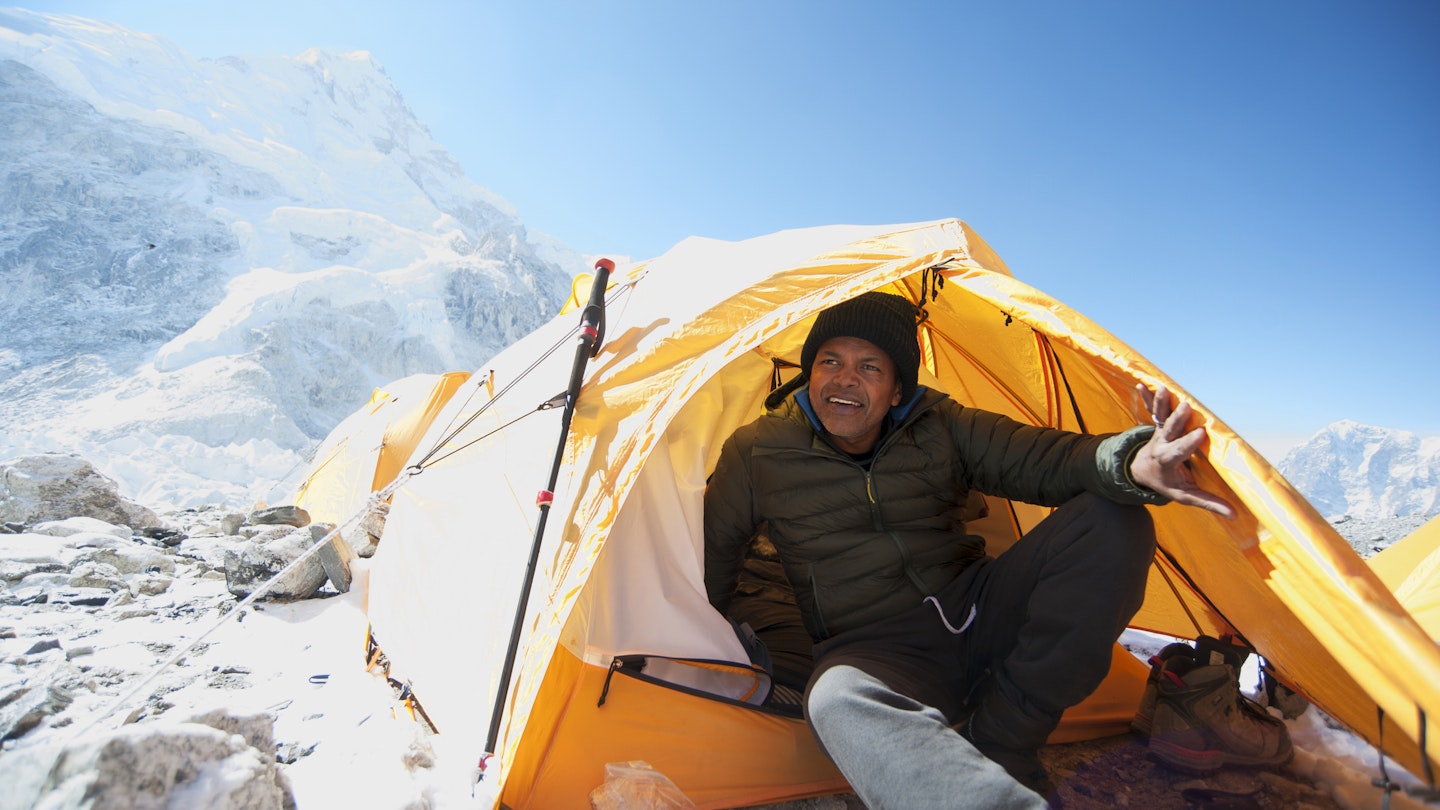
From permits to teahouses, here's everything you need to know about trekking to Everest Base Camp © Mint Images / Getty Images
Top of many people's travel bucket lists, the trek to Everest Base Camp is often the first thing people think about when they start dreaming of a trip to Nepal .
The walk takes trekkers past Sherpa villages and Tibetan-style monasteries, right up into the heart of the high Himalaya, into a breathtaking world (literally) of iconic glaciers, lakes and the tallest peaks on earth. It's probably the world's most famous trek.
But what is it actually like to trek to Base Camp? Is it something within your capabilities or budget? What should you bring? And, most importantly, can you get a proper coffee en route?
I just returned from trekking to Everest Base Camp for Lonely Planet's Nepal guide . Here’s what I think you need to know.
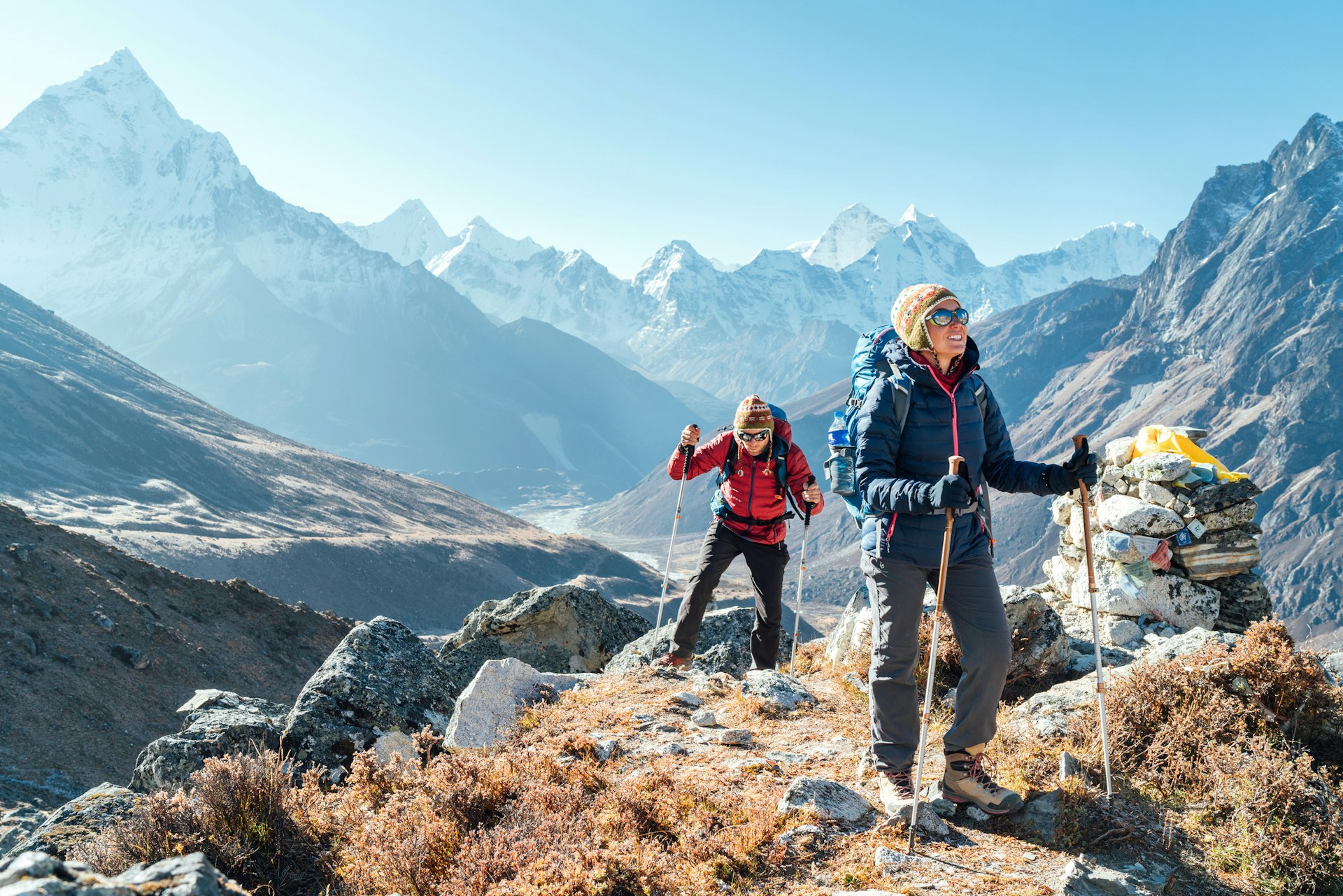
What's so great about the Everest Base Camp (EBC) trek anyway?
Firstly, the mountain scenery surrounding the world's highest peak is truly spectacular. The sublime views of Ama Dablam, Pumori, Nuptse and Thamserku peaks are unbeatable and constantly change as you progress along the walk. The Sherpa villages and monasteries are fascinating places to visit and the lodges (called teahouses) are the best in the world.
The knowledge that you are walking in the expedition footsteps of Hillary, Tenzing, Messner and others is a thrill. Anyone who has read Into Thin Air will be moved by the memorial stupas of Rob Hall, Scott Fischer and others who have lost their lives on the mountain. And then there's the fact that you will have reached the base of the world's highest peak; whether you call it Chomolongma (Tibetan), Sagarmatha (Nepali) or Everest, it’s a rush all the same.
And what’s not so great about the Everest Base Camp trek?
Well, if you force us to play devil's advocate… EBC is one of the busiest trails in Nepal. In the high season months of October and November you'll be walking with thousands of other trekkers, competing with them to get a bed, a lunch order or an airplane seat. There will be lines at checkpoints and even at moments on the trail itself. In bad weather you might be stranded at Lukla airport with hundreds of other trekkers, all trying to get on the first flight out. It's not quite the Zen-like wilderness experience you may have been imagining.
Bear in mind also that even after a solid week of walking, your view of Everest will be partial at best (for infinitely more dramatic Everest views visit the northern Everest Base Camp in Tibet ). If you trek outside of May's expedition weather window you won’t actually find much to see at Base Camp beyond a boulder hastily spray-painted with "Everest Base Camp".
If this has put you off, don’t worry; there are dozens of other fantastic treks in Nepal .
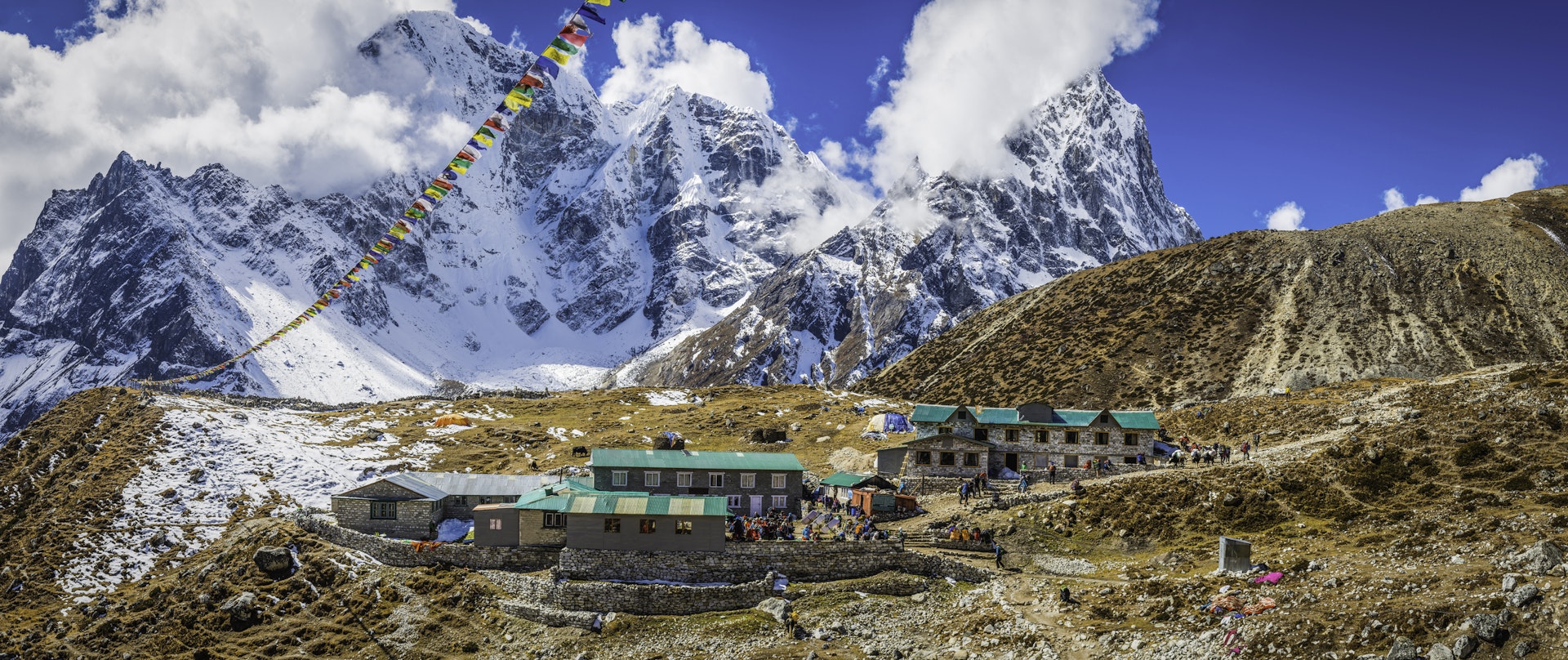
How long does it take to trek to Everest Base Camp?
The walk from the airport at Lukla to Everest Base Camp and back takes a minimum of 15 days. Several of the days are surprisingly short, but this is because you have to figure in time to acclimatize to the high altitudes.
If you can, it's definitely worth adding on a couple of extra days to this basic itinerary. Some of the most dramatic (and least visited) views are from detours off the main trail. I always add two days to visit Thame, two days to visit Chhukung and, if possible, three or four days to visit the lakes of the Gokyo Valley – probably the most beautiful scenery in the Everest region.
Be sure to also budget an extra day or two as a transport buffer. Weather-related flight delays in and out of Lukla are not uncommon (I had to wait six days for a flight to Lukla on my recent trip) so you need some buffer time if heading back for an international flight home.
How challenging is the trek to EBC?
In terms of physical effort, the EBC trek itself is not especially tough. There are only a couple of steep climbs, lasting about an hour each, and most days involve less than four hours of walking.
The thing that makes the EBC trek tough is the altitude. Base Camp is at 5600m (18,373ft) and you will need to spend one or two nights above 5000m (16,404ft). Above 4000m (13,123ft) you are going to feel increasingly lethargic and out of breath as the amount of oxygen in the air decreases. Combine this with the cold, the discomfort of being at altitude and the compounded tiredness from walking for two weeks straight, and you can see why the whole trek experience is definitely a physical challenge.
While you don't need to be an athlete to walk to EBC it is still a good idea to start a fitness regime in the weeks leading up to your trek. You'll enjoy the walk so much more if you are in decent shape.
When is the best time to trek to Everest Base Camp?
October and November bring the best weather and the clearest skies but these are also the most popular months. The second most popular season is April to early May, when spring blooms and expedition traffic bring extra interest to the trail. To avoid the crowds but still enjoy clear views, pack an extra thermal layer and come in December or March.
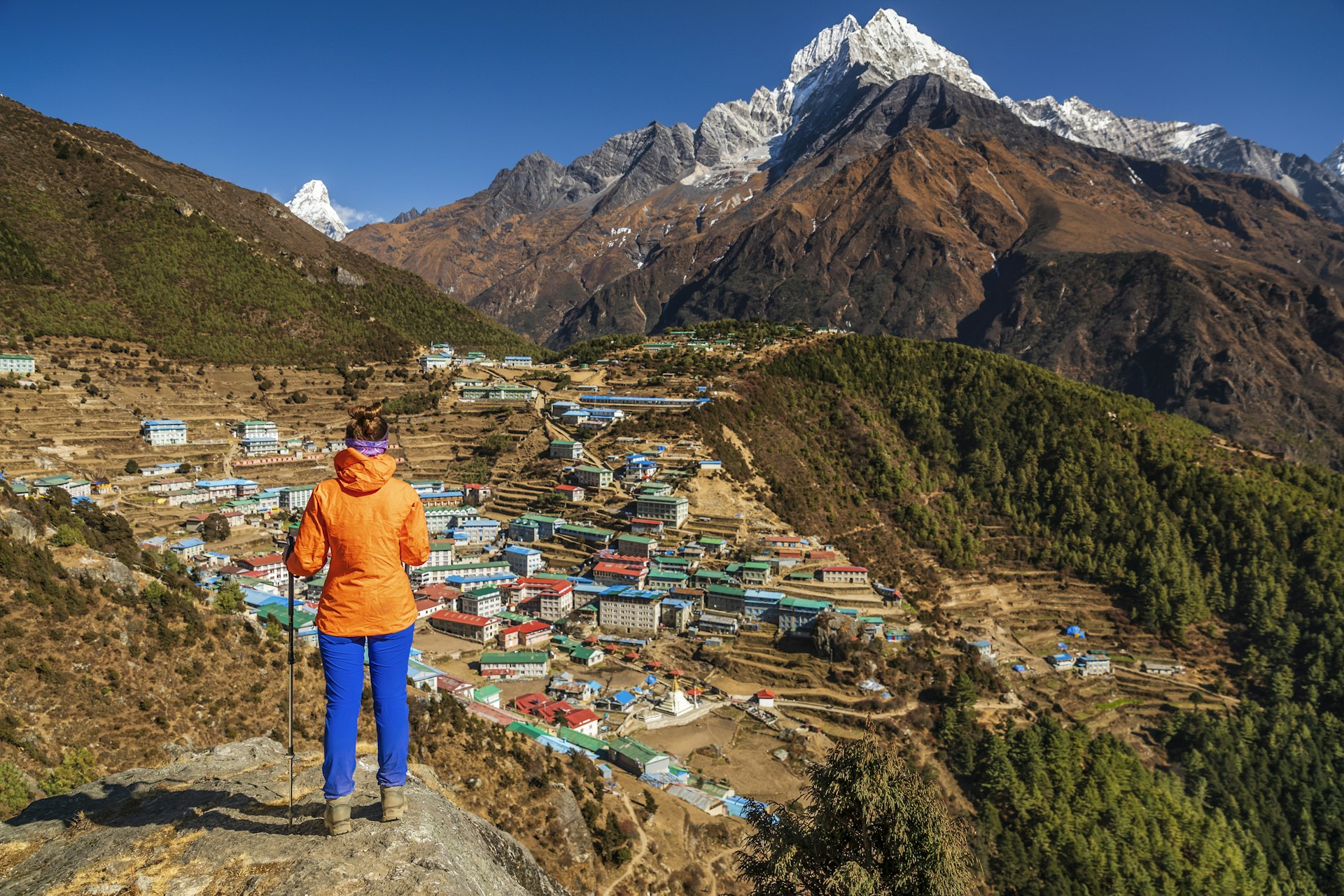
What can I do to avoid altitude sickness?
The majority of people who fail to reach Base Camp do so because they failed to acclimatize properly to the altitude. It's essential not to gain altitude too quickly by following the recommended overnight stops and limiting your daily altitude gain to a maximum of 400m (1312ft) when above 3000m (9843ft).
Be sure to add in acclimatization days at both Namche Bazaar and Dingboche, during which it's a good idea to hike to higher altitudes during the day, returning to sleep lower at night.
What are the teahouses like?
At lower altitudes the Everest lodges are the most comfortable in Nepal. Private rooms are the norm, many of which have private bathrooms. Showers are available at most places, though the hot water supply can be patchy. All have cozy dining rooms with tables arranged around a central dung-fueled stove. There are even a few luxury lodges along the trail.
In budget lodges, or when you get above Dingboche, things get simpler, with rooms offering little more than a collection of plywood walls, a solar light and a foam mattress. Toilets are a mixture of seats and squatters; sometimes outdoors, always freezing. A blanket is normally supplied but be sure to bring a four-season sleeping bag rated to well below 0°C (32°F).
What's the food like?
Menus in teahouses range from pasta and pizza to spring rolls, fried potatoes and soups, though the most popular meal is a daal bhaat , a set Nepali meal of rice, lentil soup and fried vegetables, normally served with a papad and pickle, and with a refill included. It's the most filling and environmentally sustainable meal you can order.
In villages such as Namche Bazaar and Dingboche you will also find bakery-cafes serving espresso and slices of delicious apple pie, plus shops selling everything from Snickers bars to bottles of beer. This is one trek where you might actually gain weight!
Can I get wi-fi or phone coverage?
Most lodges offer wi-fi, either free of charge or for a few dollars per day (at higher elevations). Above Namche Bazaar you will likely have to buy a scratch card, giving you unlimited data for twelve hours (AirCell) or a specific amount of data over a month (Everestlink). Depending on your network provider you'll likely get data and a phone signal at lower elevations, and possibly even at Everest Base Camp, but not at other high altitudes. So yes, in theory, you can Skype all your friends from Base Camp!
What should I bring?
Warm clothes are a must, and you should pack thermal underwear, a down jacket and fleece hat. Comfortable hiking boots and good, padded socks are also essential. Sun block, a sun hat with a brim and good sunglasses are important against the strong high-altitude light.
Morale-boosting snacks like chocolate and salami are always helpful, as is a book and smartphone with mapping software like Maps.me. Bring water purification of some sort. If you forget something, don’t worry, you can buy almost anything you might want in Namche Bazaar these days (from ice axes to cans of Pringles), though at prices higher than in Kathmandu .
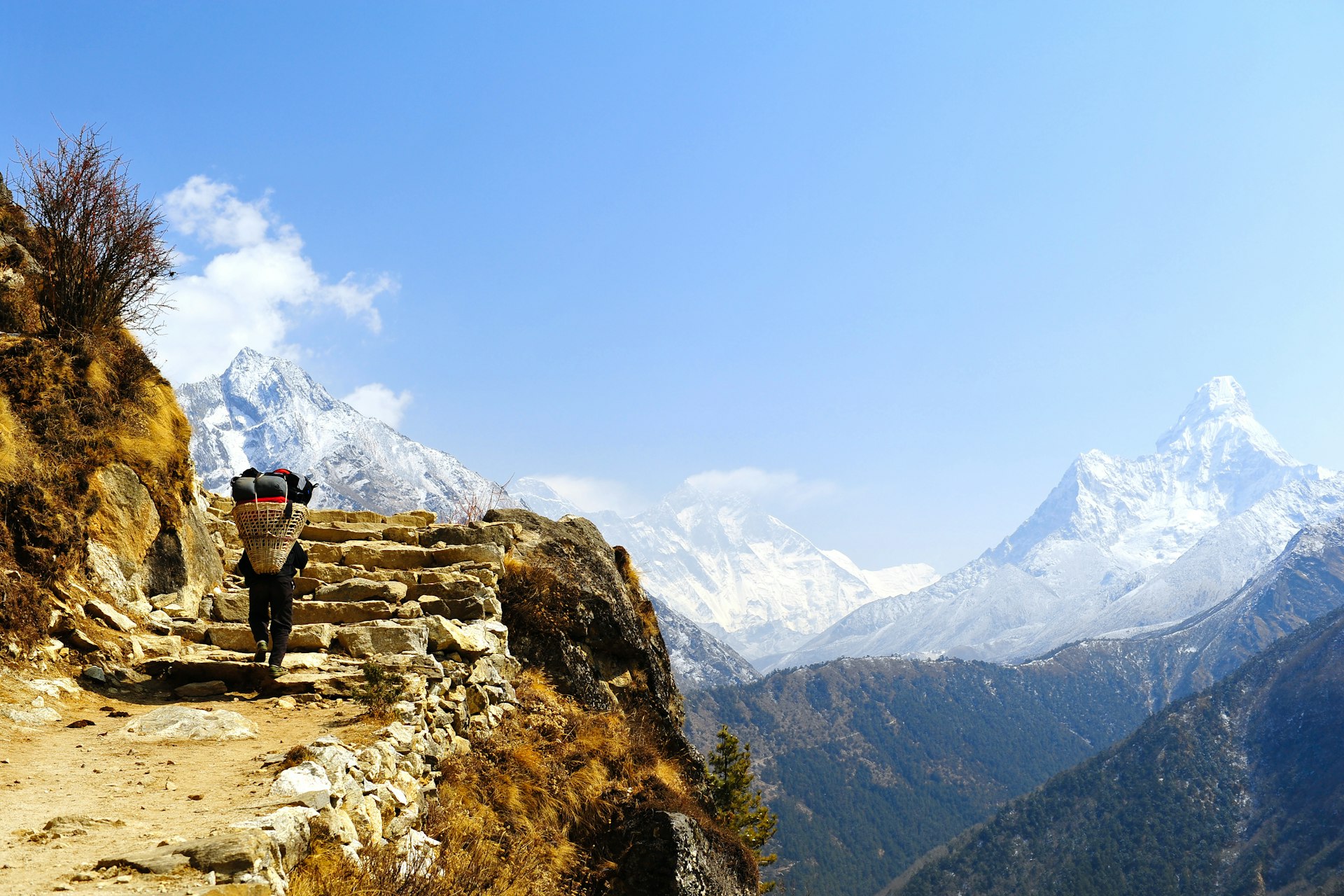
Do I need a porter and guide?
In terms of finding your way you don't need a guide if you are an experienced walker, as the route is clearly marked and well-trod. A guide can be useful for smoothing your way at teahouses, making sure you get your food on time and helping you pay your bill. It's important not to trek alone, so solo trekkers should find a companion or take a guide or porter.
A porter will carry a bag of around 15kg, freeing you up to pack a few extra chocolate bars and enjoy the walk with little more than a day pack. Not having the strain of carrying a full pack is worth its weight in gold for anyone over the age of 50. Trust me.
How much does the Everest Base Camp trek cost?
For a room in a lodge and three meals a day, figure on US$20–25 per person per day, a bit more if you want a room with a private bathroom and the occasional slice of apple pie. Add on another US$5 every time you want a shower. Figure on an additional US$20 per day for a porter, and US$25–30 for a guide, and budget 10–15% of that fee for an end-of-trip tip.
You'll pay a bit more to have a Kathmandu-based trekking company arrange your entire trek, and a lot more for the convenience and backup of an international trekking tour.
Do I need any permits?
You will need to buy an Everest region permit (US$20) at Lukla, as well as a Sagarmatha National Park entry ticket (US$30) at Monjo. Currently that's all you need.
How can I trek more sustainably?
With 60,000 trekkers and guides headed to the Everest region, it’s important to minimize your impact on the region. Firstly, don't buy bottled water on the trek, as the bottles are nonrecyclable and are a huge problem throughout the region. Bring a system of water purification, like a Lifestraw or Sawyer filter, a Steripen or chemical purification.
Secondly, carry all your trash out (especially batteries), and sign up for the Carry Me Back program, whereby you carry a 1kg bag of trash from Namche Bazaar to Lukla, for it to be recycled in Kathmandu.
Finally, be polite to the Sherpas and porters you meet en route, as well as your fellow trekkers. Walk clockwise around stupas and be respectful at monasteries and shrines.
How do I get to Lukla to start the trek?
Flights run multiple times daily between Kathmandu and Lukla, taking around 30 minutes. During high season however you may have to drive five hours from Kathmandu to Ramechhap airport to catch your Lukla flight there.
It's also possible to fly or drive to Phaplu and walk two days to Lukla from there, or walk from Shivalaya to Lukla in seven days as an excellent pre-trek warm-up.
This article was first published January 2013 and updated June 2023
Explore related stories
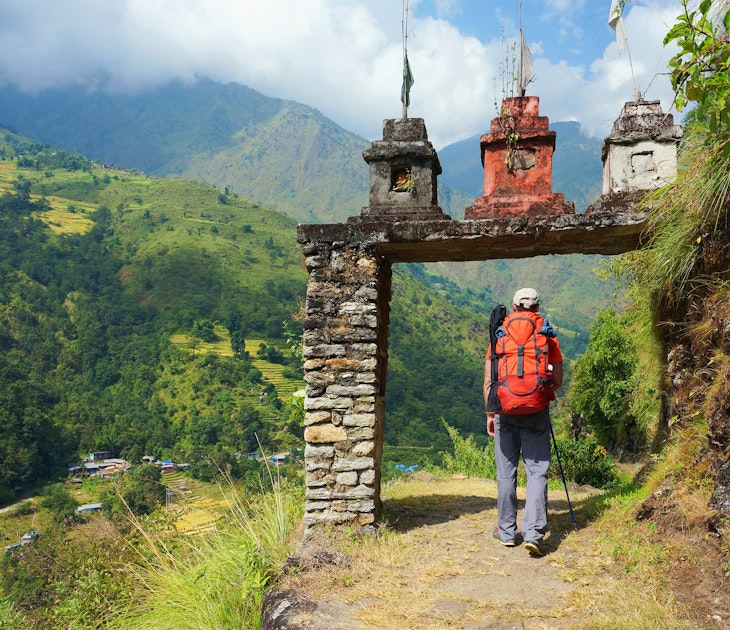
Mar 14, 2023 • 4 min read
To reduce accidents and promote jobs, Nepalese authorities recently announced a ban on solo trekking in national parks and conservation areas.

Jul 13, 2022 • 8 min read

Jan 31, 2022 • 6 min read
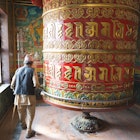
Jan 9, 2022 • 8 min read

Sep 14, 2021 • 11 min read

Jan 28, 2021 • 5 min read
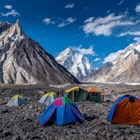
Jan 12, 2021 • 7 min read
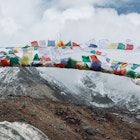
Dec 10, 2020 • 6 min read
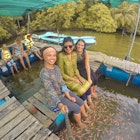
Jan 7, 2020 • 6 min read
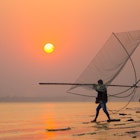
Oct 10, 2019 • 9 min read

Username or E-Mail
Forget Password?
Do not have an account?
After creating an account, you'll be able to track your payment status, track the confirmation and you can also rate the tour after you finished the tour.
Already a member?
- Trekking and Hiking
- Climbing and Expedition
- Cultural and Historical Tours
- Nature and Wildlife
- Religious and Spiritual Tours
- Cycling and Mountain Biking
- Multiple Activities
- Adventure Sports
- Voluntourism
- ACTIVE ADVENTURES
- EXTREME ADVENTURES
- LUXURY TOUR
- Family Holiday
- MULTIPLE COUNTRY
- SCHOOL TRAVEL
- ECO FRIENDLY
- Why Himalayan Glacier?
- Awards and Recognitions
- Latest Trip Review
- Travel Blog

- TREKKING AND HIKING
- CLIMBING AND EXPEDITION
- CULTURAL AND HISTORICAL TOURS
- NATURE AND WILDLIFE
- RELIGIOUS AND SPIRITUAL TOURS
- CYCLING AND MOUNTAIN BIKING
- MULTIPLE ACTIVITIES
- ADVENTURE SPORTS
- VOLUNTOURISM
- Nepal Travel Guide
- Nepal Travel FAQs
- Tibet Travel Guide
- Tibet Travel FAQs
- Bhutan Travel Guide
- Bhutan Travel FAQs
- India Travel Guide
- India Travel FAQs
- Tanzania Travel Guide
- Tanzania Travel FAQs
- Multiple Country
+1-410-307-0007
- Plan Your Trip
Everest Base Camp Trek - 16 Days
Adding item to wishlist requires an account
Already a member.
Username or E-mail
Don't have an account? Create one.
Embark on an unforgettable adventure with the Everest Base Camp Trek, a 16-day Himalayan journey that offers breathtaking mountain views and insights into Sherpa culture. Our journey begins with a thrilling flight from Kathmandu to Lukla, a small town in the Khumbu region that serves as the gateway to the Everest region.
From Lukla, we’ll trek through stunning Sagarmatha National Park, a UNESCO World Heritage Site, and arrive at Namche Bazaar, a bustling Sherpa village located at an altitude of 3,440 meters. We’ll spend a night or two in Namche Bazaar , exploring the local markets and monasteries while acclimating ourselves to the high altitude.
After Namche Bazaar, we’ll continue our trek to Tengboche monastery , one of the most important Buddhist monasteries in the region, with breathtaking views of Everest and other peaks. Along the way, we’ll immerse ourselves in Sherpa culture and enjoy the breathtaking views of the Himalayas.
From Tengboche, we’ll trek to the base camp of Mount Everest, following in the footsteps of Sir Edmund Hillary and Tenzing Norgay on their historic journey in 1953. We’ll also trek to the summit of Kala Patthar for breathtaking panoramic views of Everest and other Himalayan peaks.
This high altitude trekking experience is not for the faint of heart, but with proper preparation and an expert Sherpa guide, you’ll be able to complete this incredible journey. The Everest Base Camp Trek is an adventure of a lifetime, perfect for those seeking outdoor activities and adventure travel. Join us on this epic journey and experience the wonder of the Himalayas, from the Sherpa culture to the awe-inspiring beauty of Mount Everest.

- Scenic Flight: A thrilling flight with scenic views from Kathmandu to Lukla.
- Panoramic Views: Savor the panoramic views of the Himalayas including Everest from Kala Patthar.
- Sherpa Culture: Immerse yourself in Sherpa culture, by visiting traditional villages like Namche Bazaar, Khumjung, and Tengboche.
- Teahouses and Cuisine: Stay in local teahouses, enjoying authentic Nepali and Sherpa cuisine.
- Kala Patthar: Hike to Kala Patthar, offering breathtaking panoramic views of Everest, especially during sunrise or sunset.
- Scenic Landscapes: Traverse a variety of landscapes, from lush forests to rhododendron groves, and suspension bridges.
- Everest Base Camp: Stand at the foot of the world’s highest mountain and feel the awe-inspiring energy.
Is the Everest Base Camp trek appropriate for me?
Our 16-day Everest Base Camp Trek itinerary is designed for beginner trekkers who are in good health and have average physical fitness. It covers ample distance between daily itineraries, includes a steady gain in altitude, and incorporates separate rest days to ensure proper acclimatization. By walking at a steady pace with proper acclimatization, you can help avoid altitude sickness and fully enjoy the breathtaking views on this trek.
But if you’re up for an even bigger challenge, Himalayan Glacier offers the Everest Base Camp Trek via Gokyo Lakes – 18 Days. And for experienced trekkers with limited time, our Everest Base Camp Short Trek – 14 Days is the perfect option. No matter which itinerary you choose, you’re sure to have an unforgettable adventure in the majestic Himalayas.

Lasts more than a week and with up to 12 days walking 6-8 hours each day up and down the hills. These take you up to an altitude of 4,500m / 14,800 feet and require at least 3 months’ fitness preparation prior to the trek.
Overnight sleeping at Everest Base Camp?
Outline itinerary, trip itinerary, arrival in kathmandu.
After landing at the Tribhuwan International Airport, we will be greeted by a representative of Himalayan Glacier who will drop us off at our hotel. We then check-in at the hotel, freshen up and take a rest. In the evening a welcome dinner will be hosted by Himalayan Glacier. Overnight in Kathmandu.

Maximum Altitude
Accommodation, kathmandu: sightseeing and trek preparation.
We tour Durbar Square, Pashupatinath temple, Swayambhunath stupa and Bouddhanath stupa which are all world heritage sites. The Durbar Square sheds light on the life of the royals in ancient times. Pashupatinath temple is one of the most important places of pilgrimage for all Hindus. Swayambhunath is also known as the Monkey Temple and Bouddhanath Stupa is one of the largest stupas in the world. At noon, we are introduced to our fellow participants and discuss our trip at Himalayan Glacier’s office. Overnight in Kathmandu.

Fly to Lukla, trek to Phakding
We take an early morning flight to Lukla which is where all Everest treks begin. We meet the rest of our team in Lukla and start trekking from there. We walk on a trail that gradually descends to Cheplung village from where we get a glimpse of Mt. Khumbila, a sacred mountain which has never been climbed. From here, we gradually descend until Phakding. Overnight in Phakding.
Travel Distance:

Phakding to Namche Bazaar
Our trail passes through a pine forest and we continue our walk on the trail that goes north up the Benkar valley. We cross Dudh Koshi River and pass Chumoa and Monjo villages before reaching the entrance of the Everest National Park. Then after crossing a suspension bridge, we pass Jorsale village and walk alongside of the Dudh Koshi and Bhote Koshi rivers. We ascend on a steep trail and reach Namche Bazaar which is probably the biggest town in the Everest region. Overnight in Namche Bazaar.

Acclimatization Day - Namche Bazaar
We can tour Namche Bazaar which is the primary town of the Everest or Khumbu region and has government offices, ATMs, internet cafes, shops, restaurants, and a colorful market. We can hike-up to Sagarmatha National Park and enjoy the sunrise over the Himalayas including Mt. Everest, Lhotse, Nuptse, Ama Dablam, Thamserku, Kongde and so on. If we are interested in a day hike, we can trek to Khumjung village. Today we also visit the Hillary School and a monastery which houses a yeti scalp! Overnight in Namche Bazaar.

Namche Bazaar to Tengboche
The trek until PhunkiThanga is an easy walk. From here we ascend towards Tengboche village which houses the very famous Tengboche monastery which is the biggest monastery of the Everest region. It is located within the Sagarmatha National Park which is a UNESCO World Heritage Site. The monastery is blessed with panoramic views of the Himalayas, including Mt. Everest, Nuptse, Lhotse, Ama Dablam and Thamserku. The Tengboche Monastery opens at 3:00pm, so if we reach there by 3 o’clock we can observe a Buddhist religious ceremony. Overnight in Tengboche.

Tengboche to Dingboche
Our trail descends and passes through lush forests of birch, confer and rhododendron trees. While trekking we can admire good views of Mt. Everest, Lhotse, and Ama Dablam. We walk downhill to Debuche and cross the Imja River to reach Pangboche. We continue our walk to the Imja Valley and Lobuche River before ascending to Dingboche. It is a picturesque village with beautiful barley, potato and buckwheat fields complete with grazing animals dotted along those fields.

Dingboche: Acclimatization
Spending a day in Dingboche will help us to acclimate to the high altitude. Instead of staying idle, we climb a ridge located behind the village and see six of the world’s tallest peaks including Lhotse, Makalu and Cho Oyu. Furthermore, we can also admire Cholatse and Taboche peaks. On our north-west we see more Himalayan peaks rising above the Khumbu Khola Valley. Among those peaks, Lobuche West, Lobuche East and Lhotse are the most dominant. From another location on the ridge we can also admire the picturesque Imja Khola Valley and the beautiful Dingboche village. Overnight at Dingboche.

Dingboche to Duglha
It is a relatively short journey from Dinboche to Duglha. We trek across a wide pass which is a much wanted change from walking in a straight line. Around the beginning of our trek today we enjoy the company of the mighty Himalayas on all sides. The valley begins to narrow as we come closer to Dusa. We pass the campsite of the first successful Everest Expedition in 1953. We begin to see Mt. Pumori as we continue on our trail. As our trail descends and curves, we bid goodbye to Mt. Pumori. We cross a stream and ascend to Duglha which is a tiny village with a huge strand of prayer flags hung across the valley. After reaching Duglha, we can walk for 45 minutes to an hour and visit the Memorial Shrine. Overnight in Duglha.

Duglha to Lobuche
The trail passes through boulder-strewn slopes as we ascend Chupki Lhara which is a ridge that provides spectacular mountain views. The top of the ridge is filled with prayer flags and stones which are memorial shrines for climbers who lost their lives on Mt. Everest. As the trail drops to the Khumbu Glacier moraine, we find ourselves facing several great peaks including Khumbutse, Lingtren, Pumori and Mahalangur Himal. As we are crossing Khumbu Glacier we can also see Mt. Nuptse. Overnight in Lobuche.

Lobuche to Gorak Shep, visit Everest Base Camp
This day we ascend and descend mostly on a glacier path. There is also a lot of meandering on rough terrains. As we reach the base camp, we enjoy the incredible melt patterns and admire the gently rounded ice towers on the upper part of the Khumbu glacier. The Everest Base Camp is stunningly beautiful. We can enjoy amazing views of Nuptse, Khumbuste, Lingtren and Pumori mountains from the base camp. After soaking in the beauty, we walk back towards Gorak Shep where we spend the night. Overnight in Gorak Shep.

Gorak Shep to Kala Patthar to Pheriche
We wake up early for the walk up to Kala Patthar. It is dark outside with cold temperature and most likely chilly winds. We walk on a fairly steep trail at a comfortable pace. As we are climbing up the hill we can see Lingtren, Khumbutse, and Changtse mountains. The view from the summit is outstanding. We can see the world’s tallest mountain Everest along other mighty Himalayan peaks. After spending some time at the summit of Kala Patthar, we walk back to Gorak Shep which is relatively easier than hiking up to Kala Pathhar.
After returning to Gorak Shep, we will have breakfast and then descend to Pheriche to spend the night. Overnight in Pheriche.

Pheriche to Namche Bazaar
We lose approximately 2,000 feet in elevation today and walk on a trail with a lot of ups and downs. We descend through a hillside filled with rhododendron and juniper trees and cross a bridge over the Dudh Koshi River. We descend rapidly through pine forest where we can easily spot mountains goats, pheasants and other wild animals and birds common to the area. The path eventually reaches Sansa from where we can enjoy views of Ama Dablam, Thamserku and Nuptse mountains. We walk on winding trails followed by another walk through a forest before reaching Namche Bazaar. Overnight in Namche Bazaar.

Namche Bazaar to Lukla
We begin our trek to Namche Bazaar today on a rocky terrain. It is mostly a downhill trek on a trail alongside the Dudh Koshi River. We cross several suspension bridges, pass by several monasteries and villages before reaching Lukla. After reaching Lukla we spend rest of the day taking rest as today will be our last day on the mountains. Overnight in Lukla.

Fly to Kathmandu
We catch an early morning flight to Kathmandu after our long mountain journey. After reaching Kathmandu, we can take a rest or do some souvenir shopping. If we want to explore any other areas of Kathmandu, we may do that today. Our guides can help you with both souvenir shopping or sightseeing. There will be a farewell dinner in the evening to celebrate the successful completion of our journey. Overnight in Kathmandu.

Final departure
Our journey in Nepal comes to an end today! A Himalayan Glacier representative will drop us off at the airport approximately 3 hours before our scheduled departure flight. If you wish to extend your stay in Nepal for some other adventure activities or visit the neighboring countries like Bhutan, India or Tibet, then Himalayan Glacier will assist you with all the formalities!
Not satisfied with this itinerary?
Are you interested in planning a Custom Trip now? It takes only 2 minutes!
Significant Information: The unpredictable weather conditions in the Everest region may lead to cancellation of Lukla flights. So, what do you do if your flight is cancelled at the last minute? We have several alternative options for Lukla flight cancellations for you, in case you have limited time in Nepal. Make sure that you are well-informed about this critical issue well ahead of time!
- Local Guide & Support Staffs
- Meals in the Mountain
- Guaranteed Departures
- No Booking Fee
Everest Base Camp Trek Tips
- 14 Tips for Successful Trek to The Everest Base Camp
- Best Time to Trek to Everest Base Camp
- Everest Base Camp Trek Packing List
- Everest Base Camp vs Mount Kilimanjaro
For Your Information, International flights aren’t included. Rooms are usually shared by two people unless you request a private room. Also, you can upgrade to better hotels in the mountain and even in the cities. For your customized services, please specify during the booking process or contact our Destination & Products Specialist.
Food on Everest Base Camp Trek
All meals will be provided during trekking while only breakfast will be available in Kathmandu. There will also be welcome and farewell dinners for guests. While on trek, we have breakfast and dinner in the lodges/teahouses we spend the night and lunch on our way to the next destination. Nepalese, Tibetan, the more common continental and Indian cuisines are common choices in the menu.
To get an idea about your meals on the go, breakfast comprises a hot beverage, toasts, pancakes, eggs, etc. while lunch will include rice items, noodles, potato varieties, pizza, pasta, burger, meat items, and so on. The starters in dinnertime are soup varieties while the main course includes more or less similar items as that of lunch menu, including a dessert item and a hot beverage. A detailed information about the food on the everest base camp trek gives you a clearer picture of your dietary provisions.
Note: Trekkers who strictly follow vegetarian or vegan diet must inform us during the time of booking their trip with us. We recommend you to avoid any alcoholic beverages during the trip. Also, we advise you to avoid meat items because meat has to be carried all the way from Lukla or Namche for several days before it is consumed. So, there is more possibility of staleness, just enough to upset your tummy!
Accommodation During Everest Base Camp Trek
We will be accommodated in Yatri Suites & Spa or Similar in Kathmandu; and lodges during the trek. All accommodations are on twin-shared basis. Single supplement will be served on request with an extra cost.
Himalayan Glacier will arrange rooms with attached washrooms; however, lodges in some places only have shared washing and toilet facilities. Also note that single rooms are readily available in Kathmandu and the trekking regions at lower elevation but it might be difficult to find them at higher elevations. The types and standards of accommodation during the everest base camp trek varies at different locations.
Experience Required
Everest Base Camp Trek- 16 days is a moderate trek. Travelers who can walk up to 6-7 hours a day on an uphill and downhill trail will find this trek fulfilling. It is best that we prepare ourselves for the Everest trek by jogging and exercising regularly at least a month prior to the start of the trek. Trekking to the Everest Base Camp should be relatively easier for those who have experience walking/trekking in a high altitude environment. Past hiking experience would be an asset but no technical skill is required for this trip. It is also important that we consult our doctor. Participants with pre-existing medical conditions such as heart, lung, and blood diseases should inform Himalayan Glacier before booking the trek.
Acclimatization
Everest Base Camp Trek itinerary is planned with a high degree of awareness of Acute Mountain Sickness (AMS). Experts agree that gaining elevation without proper consideration of AMS could be fatal. The higher the altitude, the less oxygen will be in the air. Therefore, our body needs time to adapt to an environment with less oxygen. During this trip, we take rest in Namche Bazaar and Dingboche which will help us acclimatize to the high altitude thus resulting in a successful trip.
Team Composition
For this trek there will be one leader, assistant leader ( 4 trekkers: 1 assistant guide ) and Sherpa porters for carrying luggage ( 2 trekkers: 1 porter ). This arrangement ensures that should anybody in the group get sick, the trip can still go ahead as planned. We can run the trek for groups of any size but we after years of experience we have found a maximum of twelve people to be the optimum size for a successful trip. However, if you'd like to book this trip for a larger group then that can be arranged too.
DATES & PRICES
All our published dates are guaranteed departures. If the dates don’t match with your travel plans, we are more than happy to create your desired date. Let us know what kind of trip you are looking for and our travel experts will help plan your tailor-made trips in your dream destination.
Availability
September 2024, october 2024, november 2024, october 2025, november 2025, proceed booking, or continue as guest.

What to pack on the Everest base camp trek?
Everest base camp trek is a lodge-to-lodge trek. It is also known as a teahouse trek. It means that you will not be required to sleep in camping tents and most of the facilities like laundry, food, etc. are easily available throughout the trek. However, you need to carry some of the most essential items that you will personally require during the trek. As Everest base camp trek is considered quite challenging, we recommend packing only the necessary gears and required equipment. Make sure that you don’t over-pack, and at the same time don’t under-pack.
In order to enjoy the trip rather than worry about the weight of your load, you need to pack light only with the essentials. Read the complete Everest base camp trek packing list and pack smart and light for a more comfortable and a fulfilling trip to the base camp.
Q1 : How hard is it to climb to Everest Base Camp?
Q2 : what is the best time to trek to everest base camp, q3 : who are my guides to everest base camp trek, q4 : is my trip departure guaranteed, q5 : what if i cancel the trip, do i get my refund, q6 : what kinds of clothes and gears are needed to trek everest base camp, q7 : is there an age limit for everest base camp trekking, route map of everest base camp trek.
WHAT OTHER TRAVELERS SAYS?
Related trips.

Hike to Machu Picchu and Rainbow Mountain

Salkantay Trek and Inca Trail Hike

Hiking the Inca Trail to Machu Picchu
Everest base camp trek - 16 days, why himalayan glacier, 98% success rate.
Precise planning with first-hand knowledge defining our high success rate
Local Leaders & Guides
Exclusively trained, trusted and tested local leaders and guides at your service
Tailor Made Trip
Tailor-make any trip hassle-free based on what you’re looking for
Recommended on

Planning a Trip?
We have a pool of travel experts working in this industry for more than a decade. Consult to get started.
- / Himalayan Treks
- / Everest Base Camp Trek
THE BUCKET LIST TREK
Everest base camp trek.
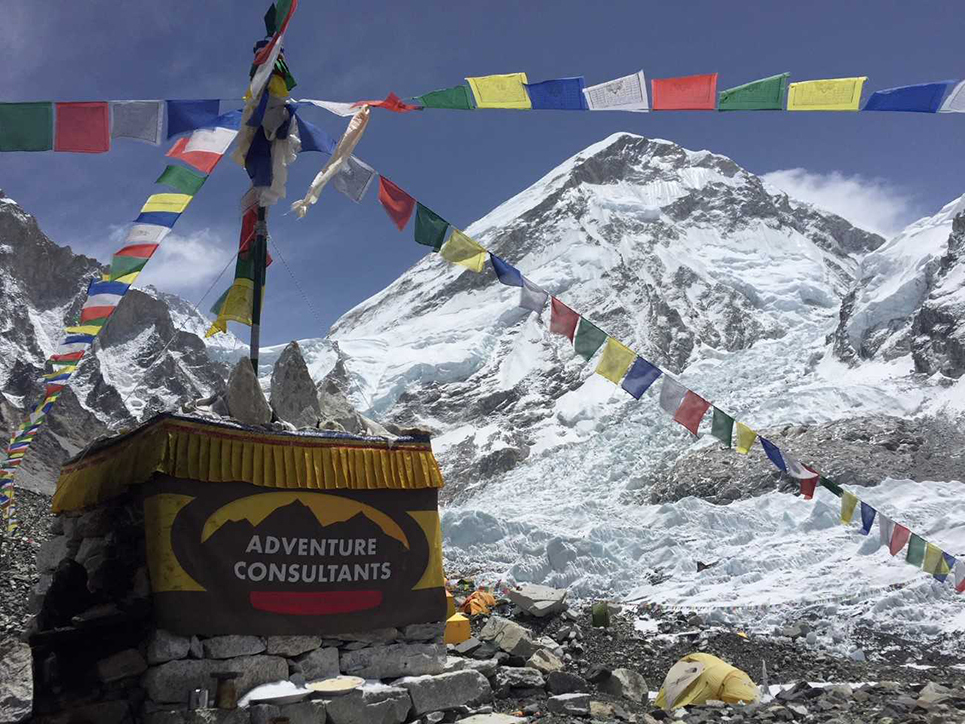
The trek to Everest Base Camp is among the most dramatic and picturesque in the Himalaya. The scenery is varied and spectacular, the lodgings and tracks are of a very high standard, and the interaction with the local Sherpa people is truly memorable.
Our pre-monsoon treks are unique in that we have the privilege of staying overnight at Base Camp. Our days spent exploring Base Camp give us an appreciation of the inner workings of expedition life, while our post-monsoon departure enjoys the clear skies and pristine views of the autumnal trails. Those joining our April 8 departure have the added experience of trekking alongside our Everest climbing expedition members enroute to Base Camp. We have specially developed the itinerary to combine a mix of fascinating cultural highlights into the journey. Initially you can enjoy the diversity of Kathmandu by visiting ancient temples that remain the spiritual focus for the Nepalese people. An experience not to be missed is the colour and bustle of the Thamel district, famous for its shopping and restaurants.
The trekking route ascends the Khumbu Valley on well-formed trails that provide foot access between villages for the Sherpa people. With many of the world's highest mountains to admire and all the varied and interesting people to see and meet, there is always plenty to see and assimilate along the way. Every day has the ability to astound you with new and interesting experiences!
- Discover the majestic Khumbu
- Stay in Sherpa homes and lodges
- Climb Kala Patar with dramatic views of Everest
- Pre-monsoon trips overnight at the AC Everest Base Camp
Intermediate
5,554m/18,222ft.
Arrive in Kathmandu, team briefing
Gear checks and sightseeing
Fly to Lukla 2,860m/9,383ft and trek to Phakding 2,610m/8,563ft
Trek to Namche Bazaar 3,440m/11,286ft
Rest day and sightseeing
Namche Bazaar to Tengboche 3,970m/12,696ft
Tengboche to Pheriche 4,270m/14,009ft or Dingboche 4,410m/14,469
Rest day in Pheriche or Dingboche, morning hike
Pheriche or Dingboche to Lobuche 4,940m/16,207ft
Rest day in Louche, morning hike
Trek to Everest Base Camp, overnight at AC Everest Base Camp 5,300m/17,400ft
Base Camp to Gorak Shep Camp in the afternoon 5,165m/16,950ft
Gorak Shep Camp to Kala Patar 5,550m/18,209ft , descend to Pheriche or Dingboche
Trek to Namche Bazaar
Trek to Lukla
Spare day for weather delays
Fly Lukla to Kathmandu
Depart from Kathmandu
Arrive in Kathmandu, team briefing
Fly to Lukla 2,860m/9,383ft , trek to Phakding 2,610m/8,563ft
Trek to Everest Base Camp 5,300m/17,400ft , return to Lobuche
Descend to Pangboche

Departures and Pricing
Looking for a specific date? Book a private trek
The trek to Everest Base Camp is challenging and you MUST train for several months before departure to make your trip as enjoyable as possible. Training should include regular walking on hills, in combination with swimming, light running or biking and gym work to develop strength. We recommend the Everest Base Camp Training plan from Uphill Athlete .
You must be well-balanced and confident when hiking variable, uneven terrain to achieve this trek.
No prior altitude experience required.
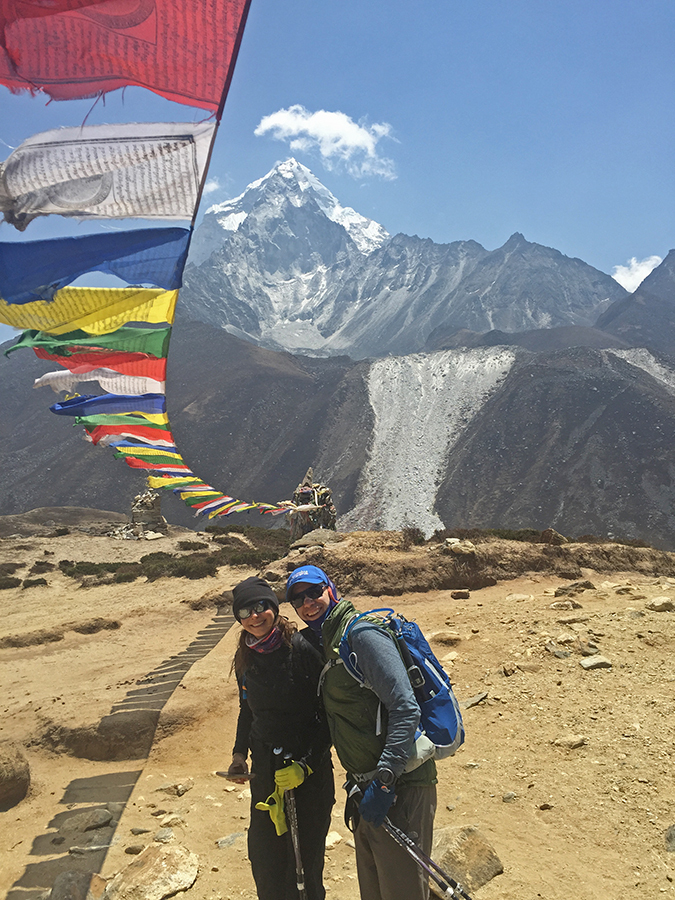
Because we want you to remember this trek for being so much more than just a hike, we at Adventure Consultants have taken enormous pleasure in planning a fusion of all the best components that we know make this a truly memorable experience.
We are renowned for our quality of service and the strategy applied to our treks. Our reputation is attributed to meticulous planning and experienced logistics coordination. We have a philosophy of investing in every trip to offer our trekkers the best possible experience.
We employ strong and specialised trek leaders and Sherpa staff, who are some of the most pre-eminent in the industry. We pride ourselves on operating with small teams and the best back-up and support available. This includes nutritious and ample quantities of food, comfortable base camp facilities, reliable communications systems and the necessary medical back up. Our staff are the most affable Western or Sherpa guides working in conjunction with our excellent cooking teams, to promise you the experience of a lifetime!
Many of our team members come to us because they have seen us in action on a previous trip and decide to opt for our level of service and proven experience. Others return because they know we do our very best to make our trips safe and successful.
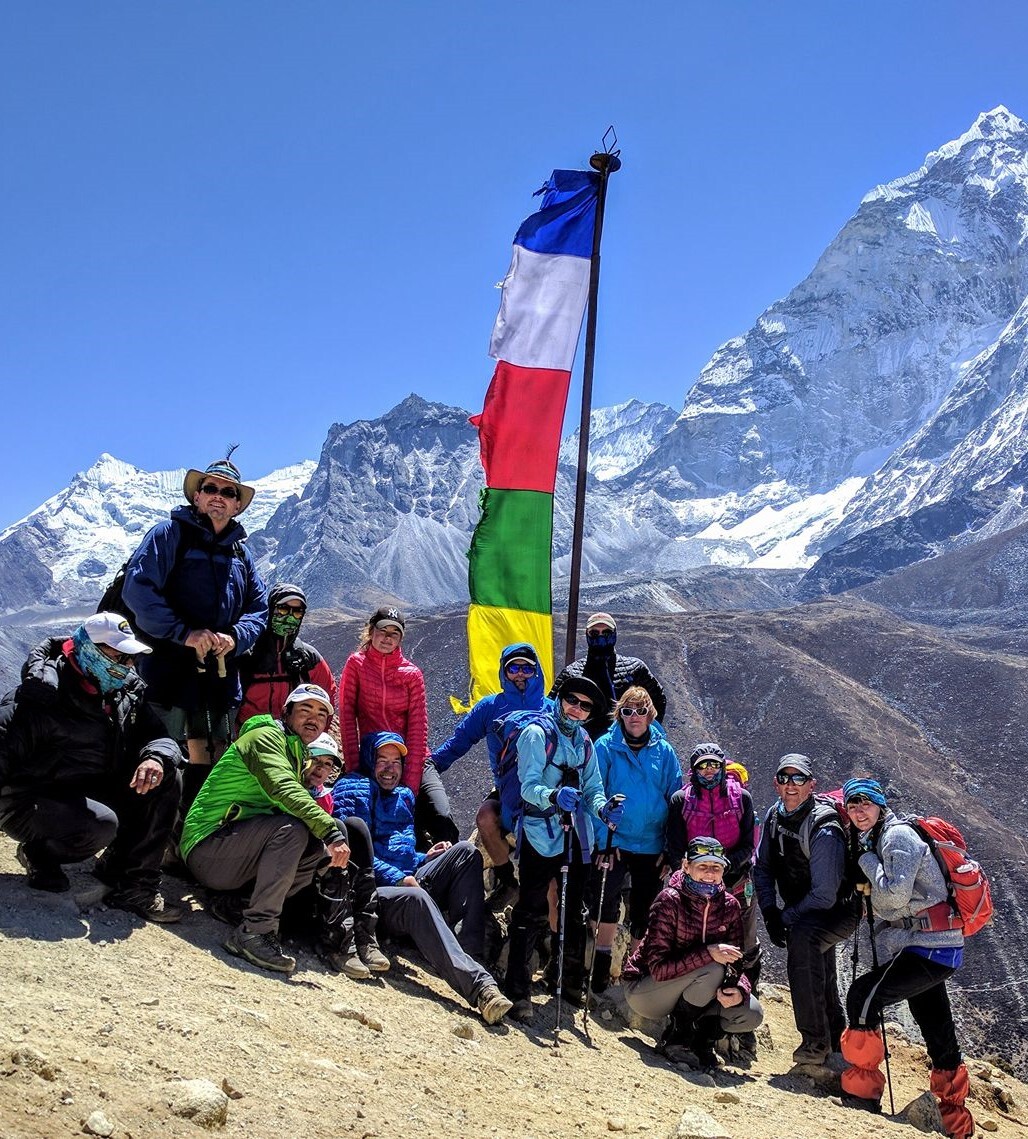
The price of your trek includes the following:
- Qualified and experienced trek leaders
- Helicopter flights Kathmandu-Lukla and return
- High end lodging
- Overnight at Everest Base Camp (pre-monsoon)
- Small groups
- Comprehensive pre-trip support from our New Zealand office
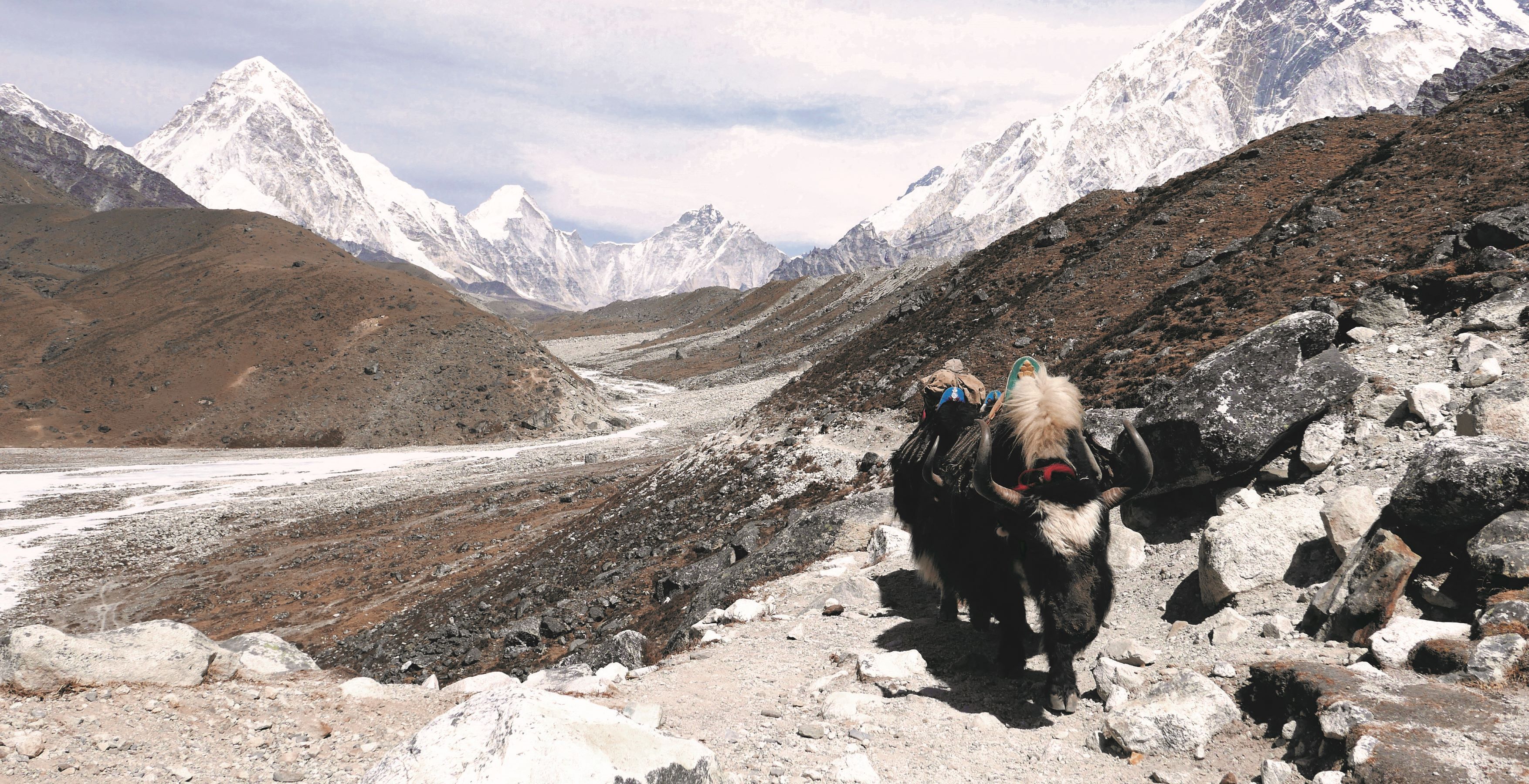
Wide open spaces at the top of the world! Our Everest Basecamp Trek takes you there and back in style seeing the best of the Khumbu Valley region, with our expert guiding, local knowledge from three decades of trek guiding and quality logistics.
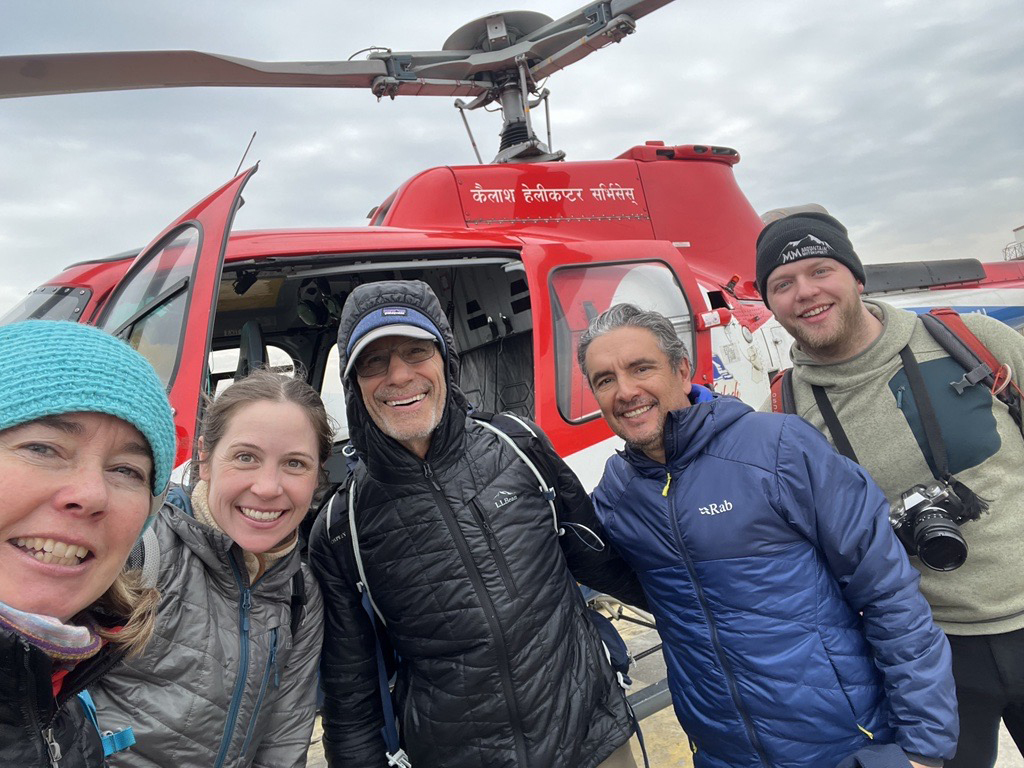
Adventure Consultants utilise helicopter transport for flights to and from Lukla. Helicopter egress is available from Everest Basecamp for those who prefer not to walk out and would like a shorter trip.
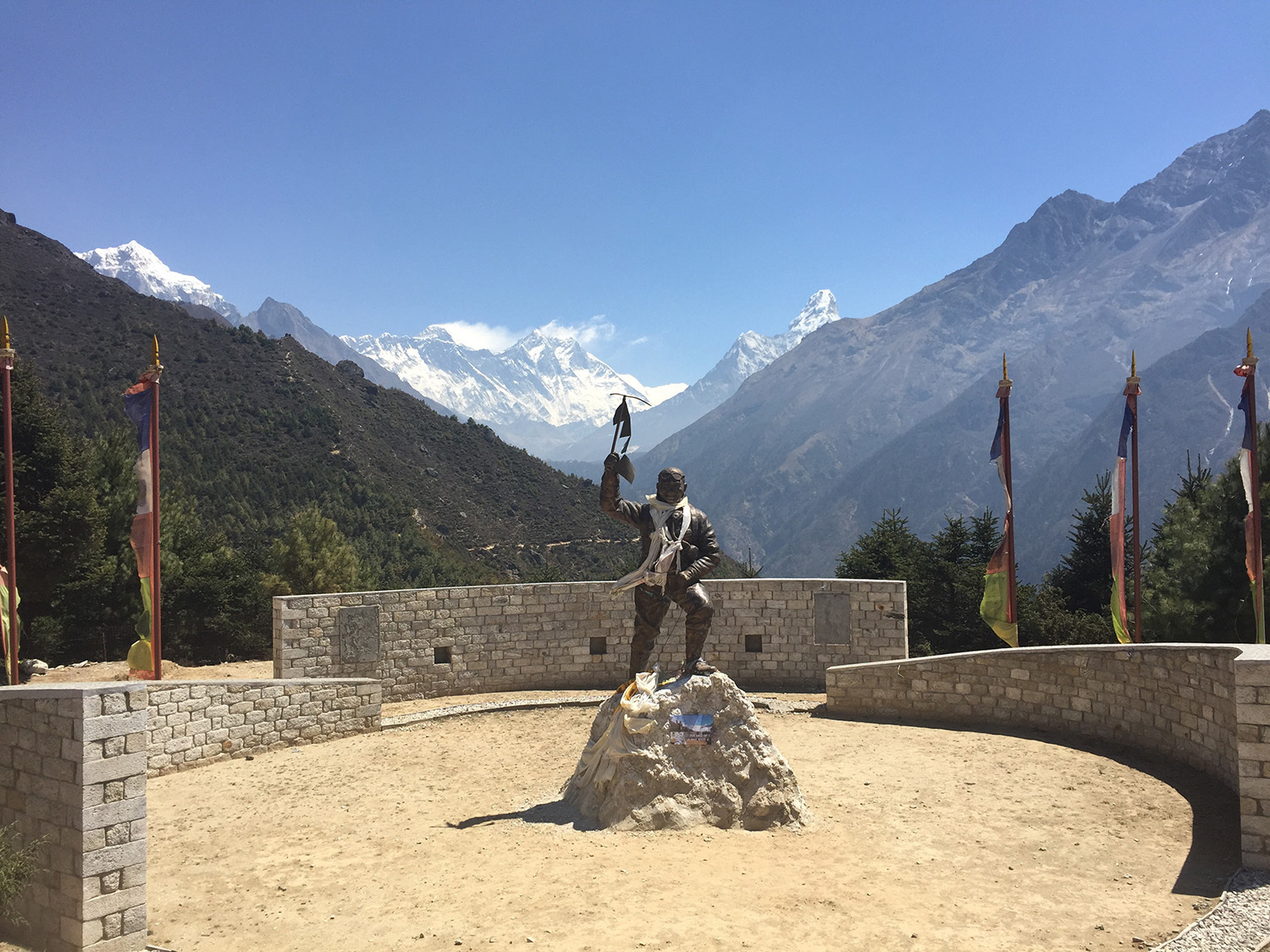
Iconic views of the big peaks of the Khumbu Valley including Everest, Lhotse, Nuptse and Ama Dablam make this a really special trip, plus visiting all the villages along the way.
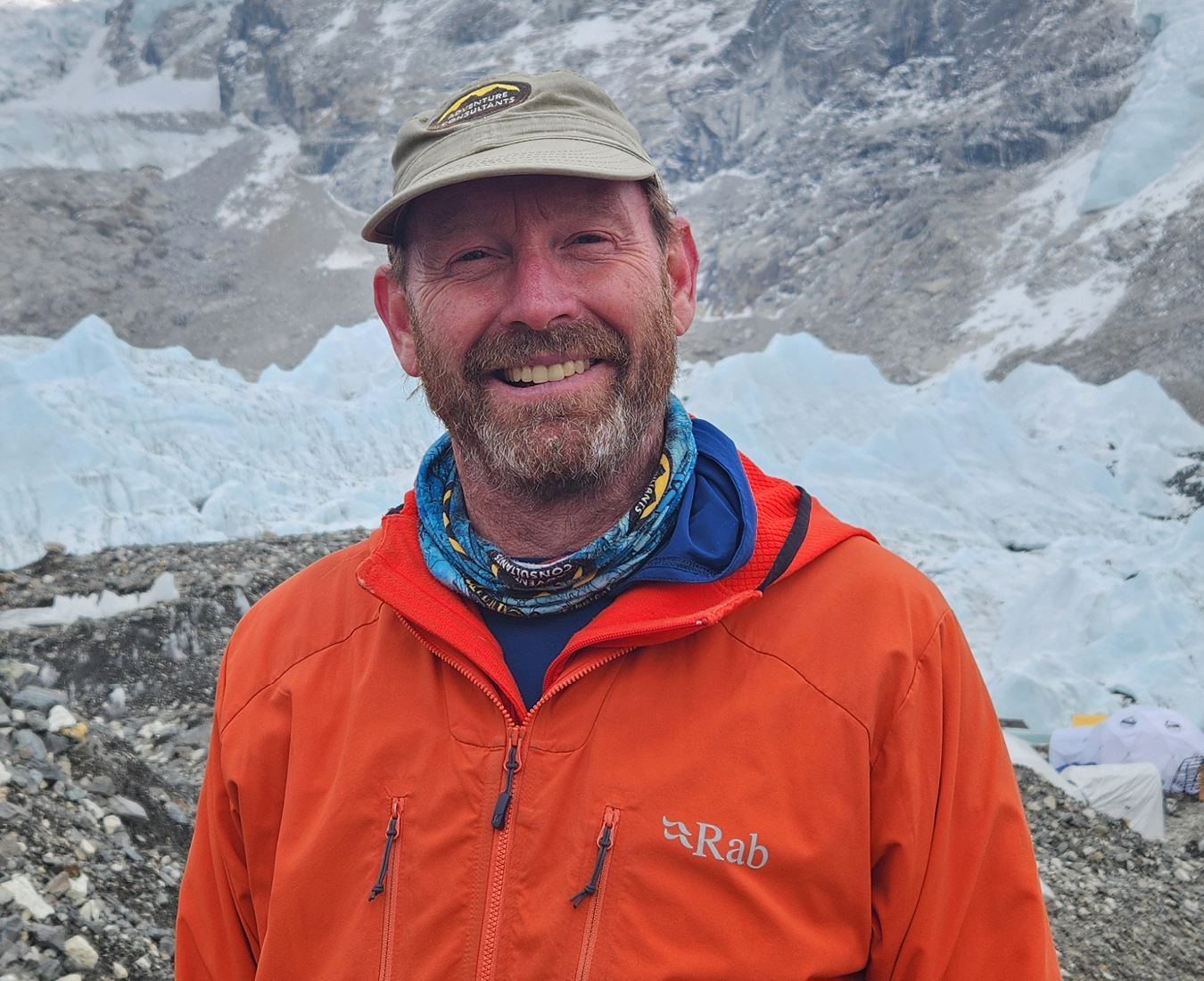
"The Everest Base Camp Trek was a lifelong dream for me. However, just because one has decided to pursue a life’s dream doesn’t mean one will return home with a trip of a lifetime. You were indispensable in me being able to handle the day-today challenges of the trek. For this I am forever grateful."
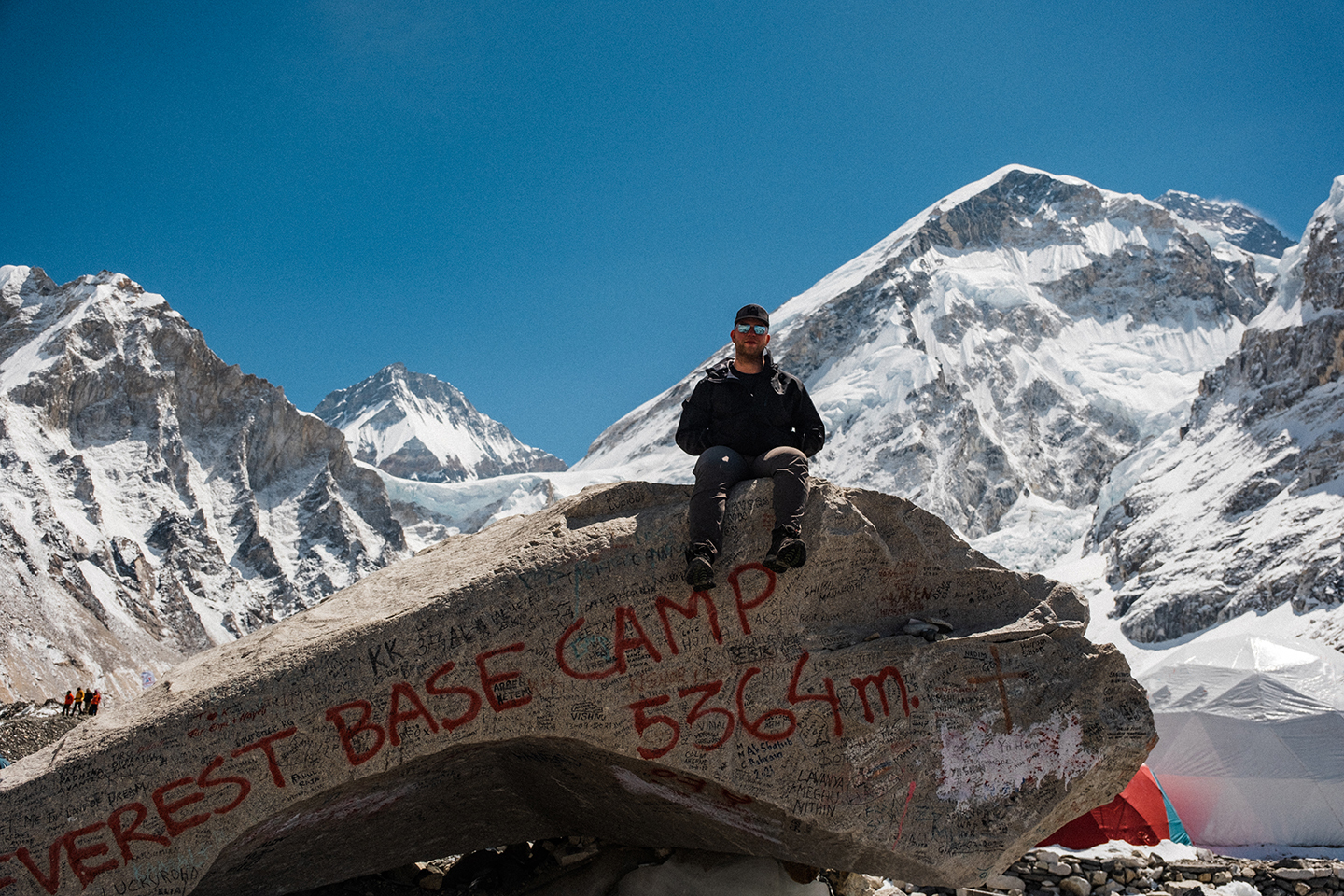
"Everest Base Camp was amazing!! I loved the food, facilities and all the wonderful people who served us while we were there – the food was wonderful – it couldn’t be improved on in any way shape or form and will always be a magical and memorable two days in my life. Thank you so much to everyone who was there...."
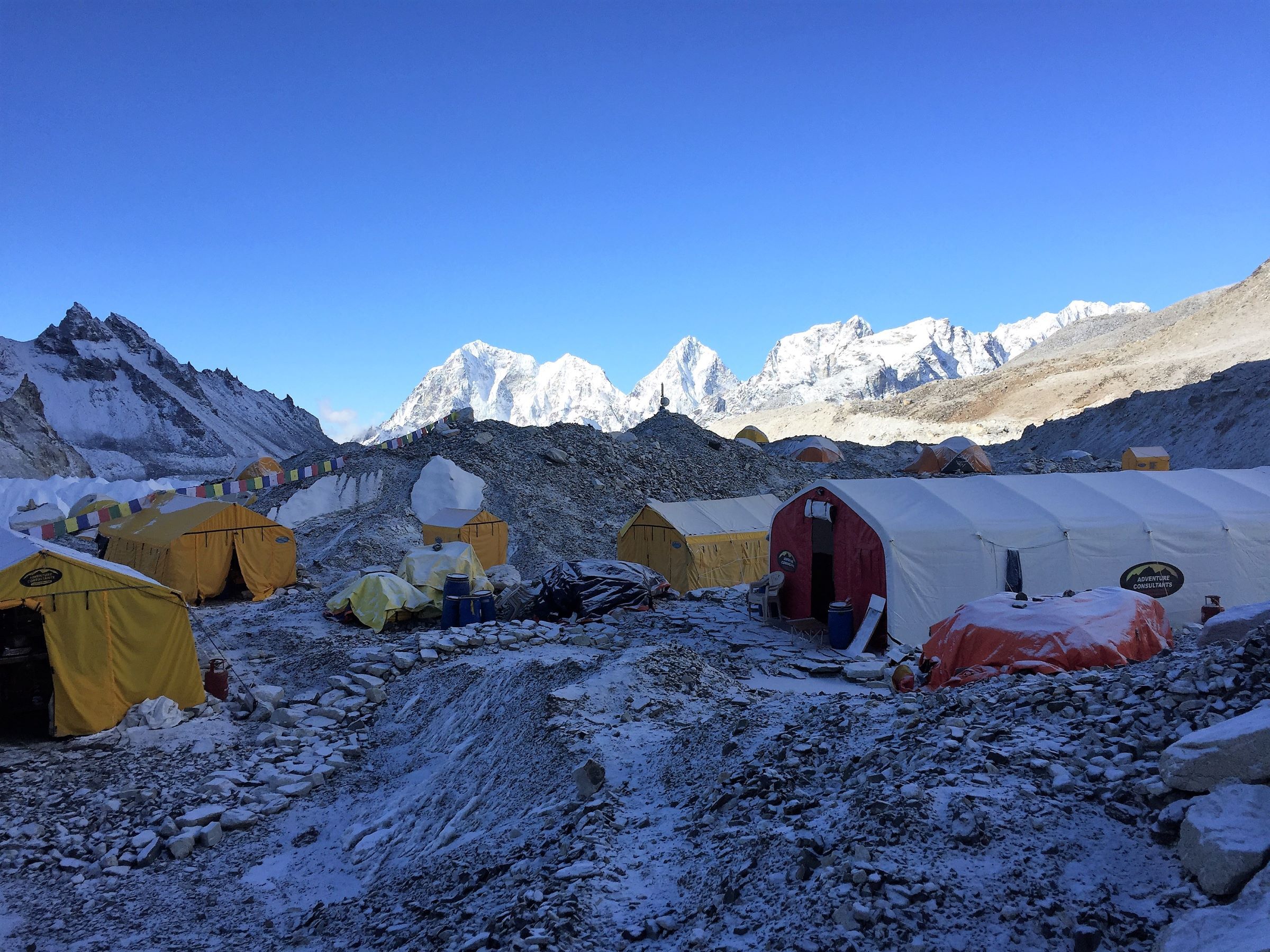
"Wow! We had a fantastic trip. Nepal has such a beautiful vibe , it has left me wanting to go back for more!"
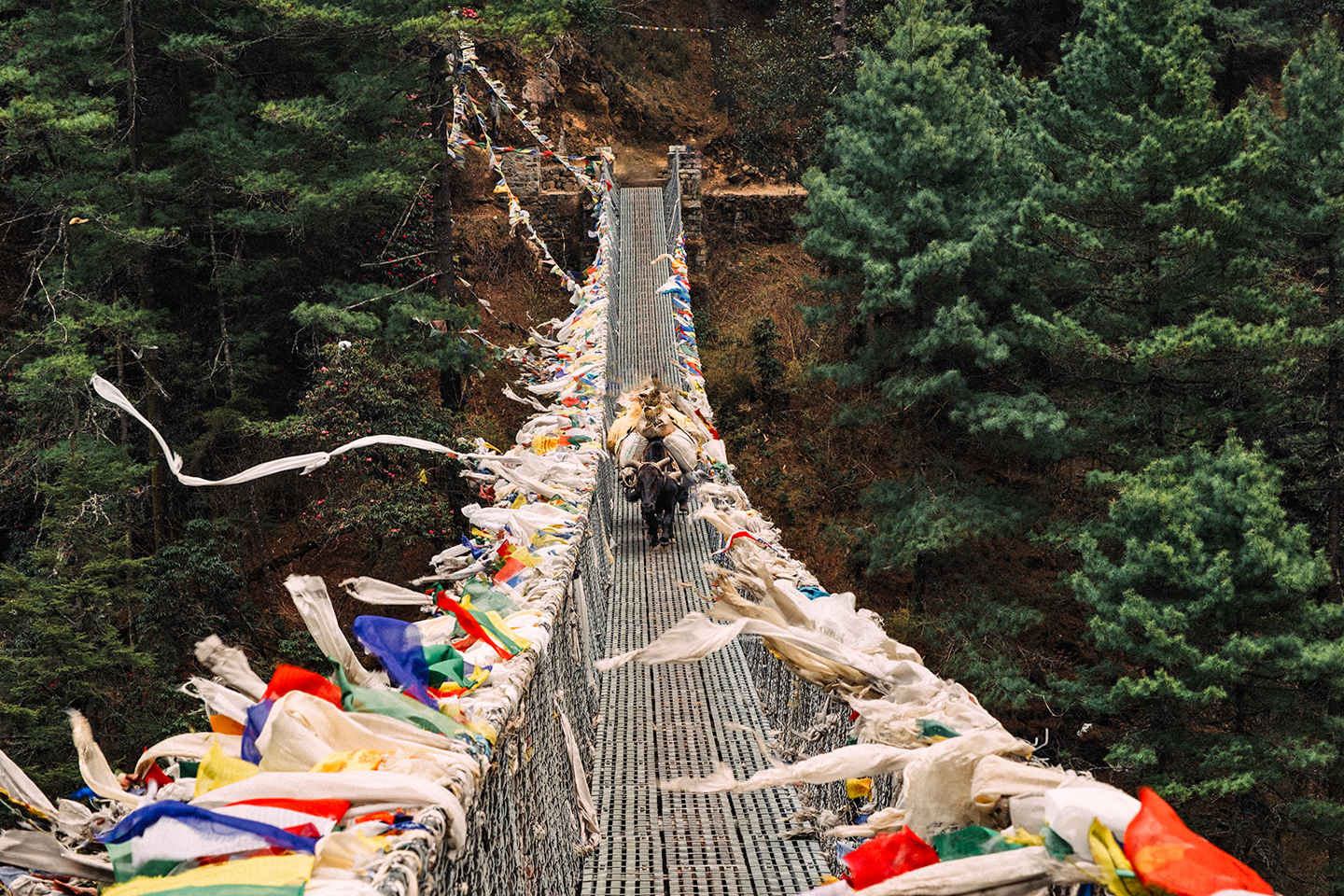
"I really want to thank you the entire Adventure Consultant Team for this lifetime experience . I will never forget walking on the clouds, crossing the bridges, the stupas, the praying wheels, and … the Himalayas. Everest and Ama Dablam, words and sights that I will never forget. Namaste!"

The highest point in Africa, Kilimanjaro , is perhaps one of the best-known mountains in the world. It is the easiest of the Seven Summits and definitely the most romantic!
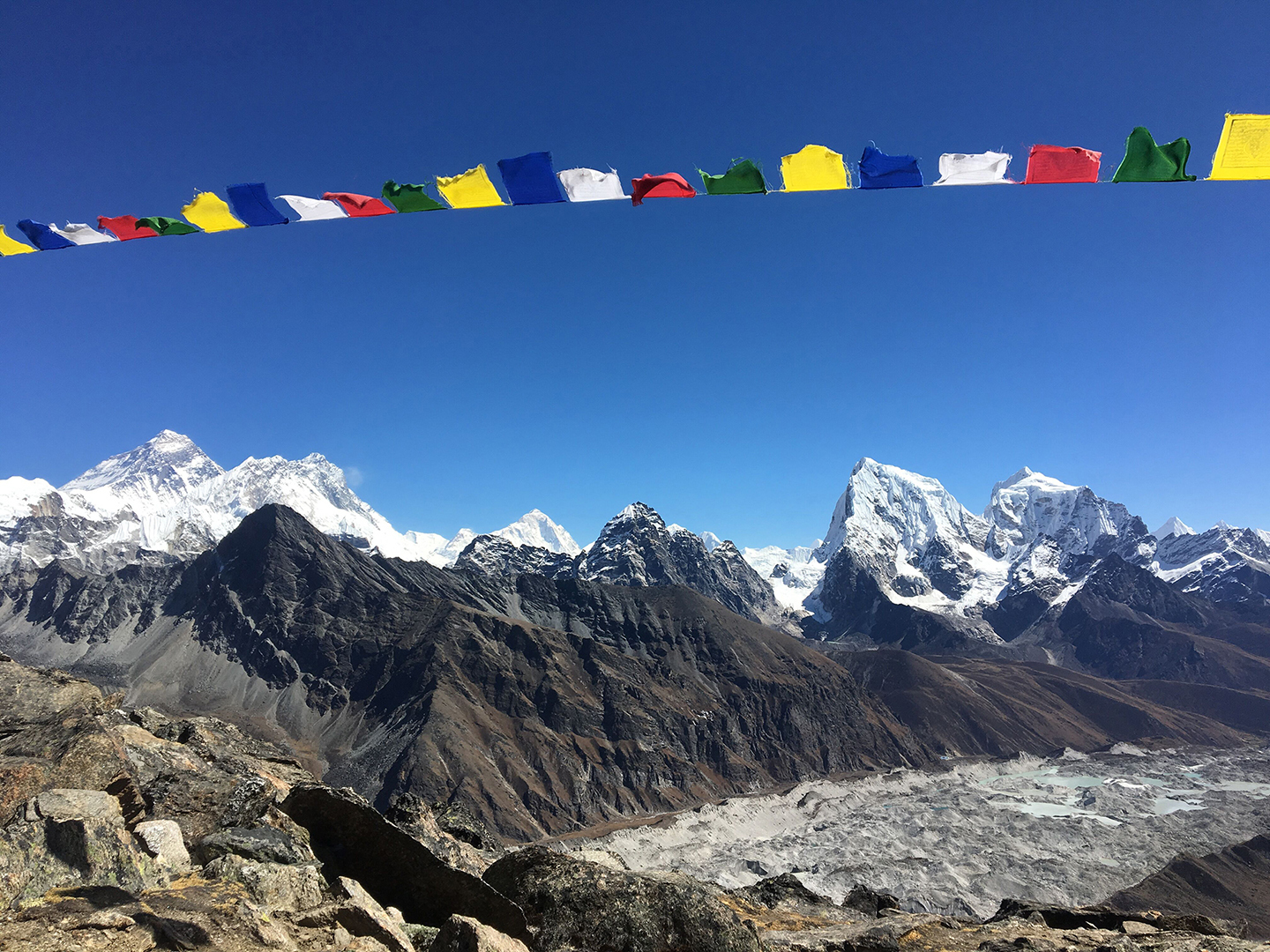
Grab your gear and let's go to Gokyo ! Extend your Everest Base Camp adventure by adding the breathtaking Gokyo Valley to your trek.
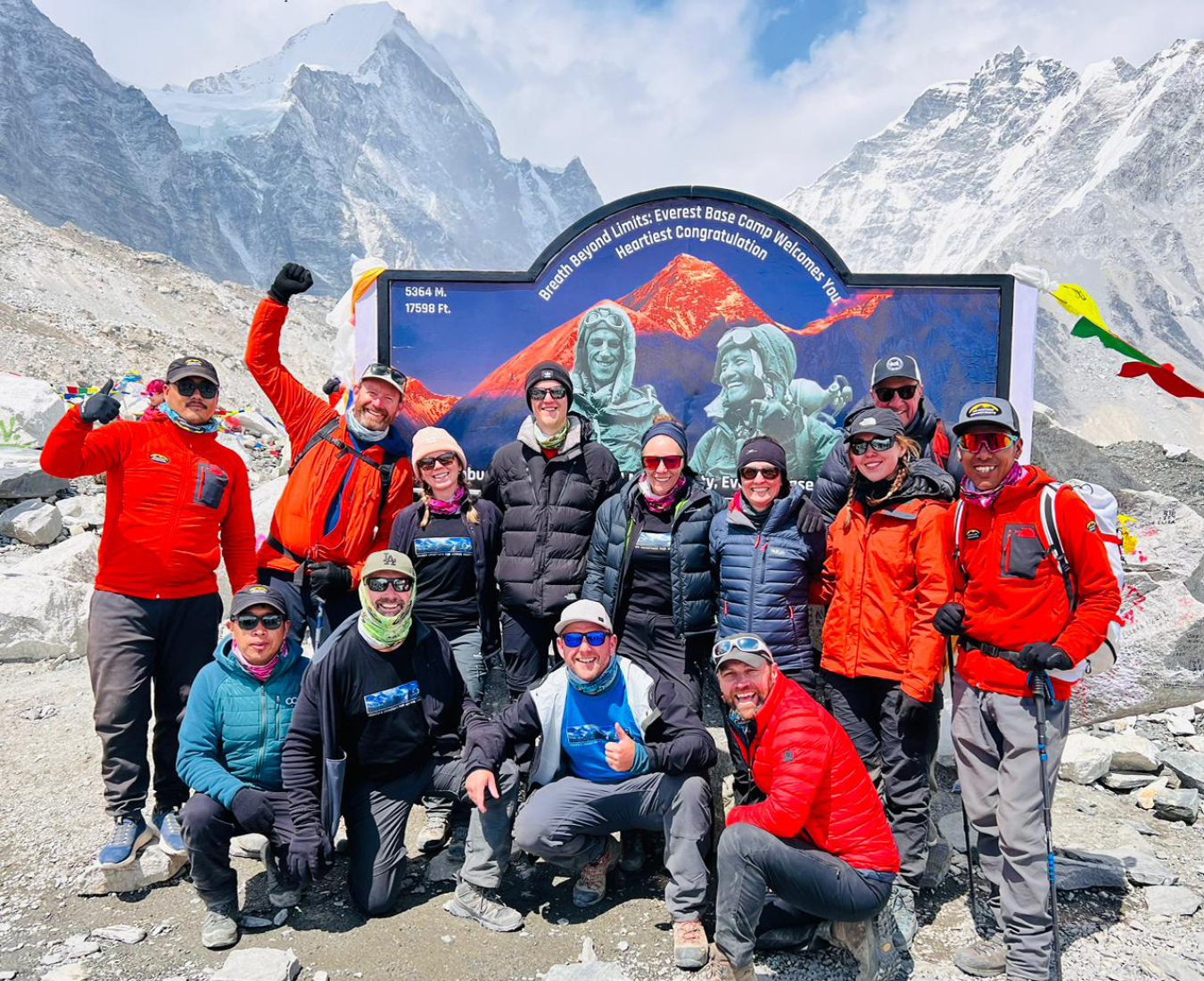
Everest Region Trek

Everest Base Camp Trek 14 Days
Everest Base Camp is a world-renowned trekking destination located in the Khumbu region of Nepal. Situated at an altitude of 5,364 meters (17,598 feet), the base camp provides stunning views of the world's highest peak, Mount Everest (8,848 meters /...
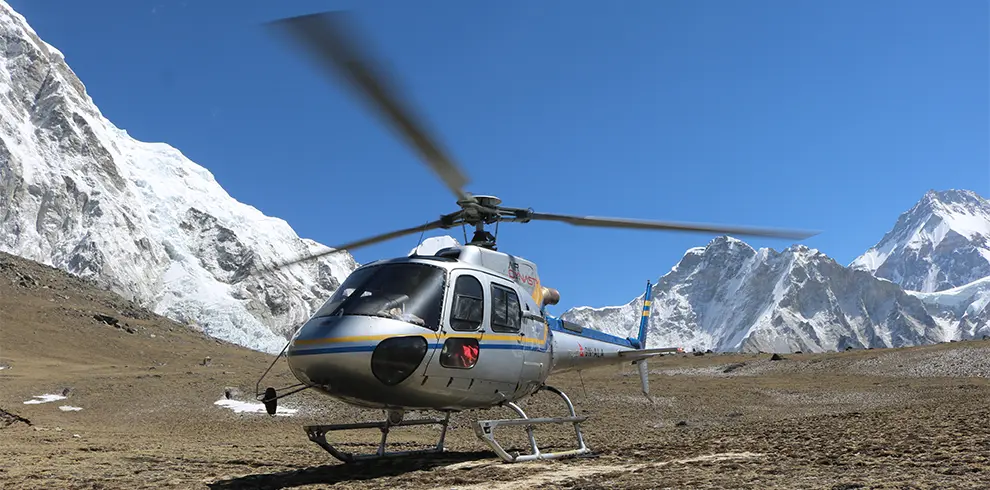
Everest Base Camp Trek with Helicopter Return 9 Days
Why Book Everest base camp Trek with Helicopter return with Master Himalaya?Having assisted over 1000 travelers in the Everest Base Camp journey, we've observed that many enthusiasts, initially eager for the trek, may hesitate to return by foot after...
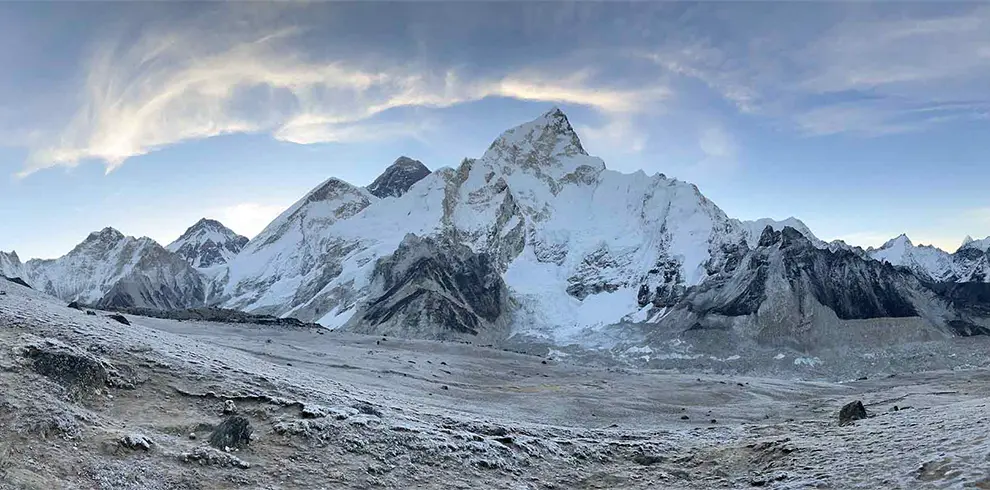
Everest Three High Pass Trek 19 Days
The Everest Three High Pass Trek is an ultimate adventure for experienced trekkers seeking a thrilling and challenging expedition in the Everest region of Nepal. This trek takes you on an epic journey across three high mountain passes: Kongma La Pass...
Annapurna Region Trek
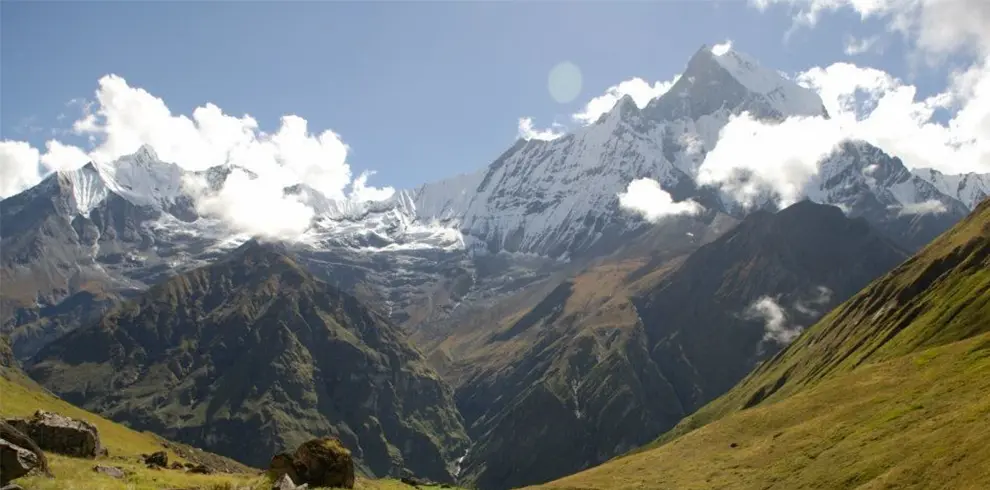
Annapurna Circuit Trek 12 Days
The basic difference between Annapurna Base camp trek and Annapurna Circuit Trek is that in ABC Trek is a 7-8 days trek which takes you directly to the base camp , but in Annapurna Circuit trek you make a round trip of the whole Annapurna range and i...

Annapurna Base Camp Round Trek 13 Days
The Annapurna Base Camp Trek is a captivating and popular trekking adventure that takes you to the base of the majestic Annapurna massif in Nepal. This trek is renowned for its stunning mountain vistas, diverse landscapes, and cultural encounters, ma...
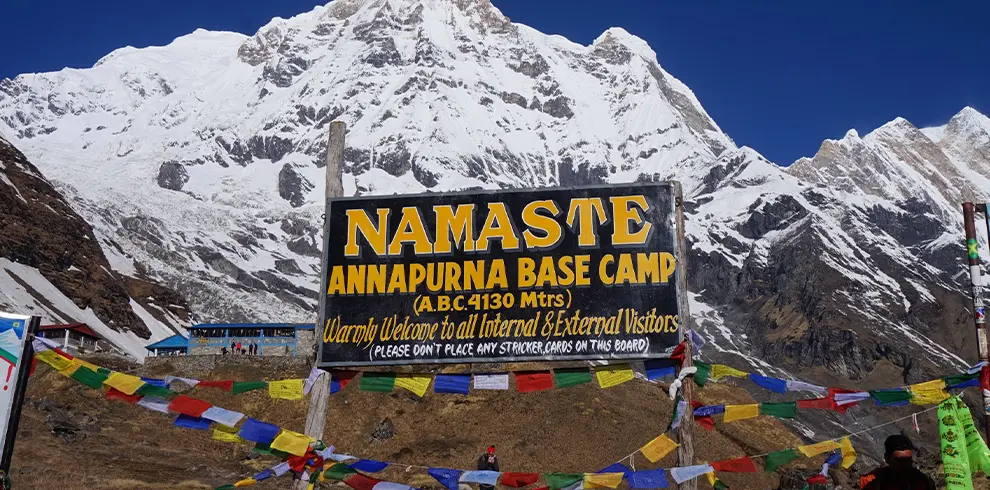
Annapurna Base Camp Trek 9 Days
The Short 9 Days Annapurna Base Camp Trek is a condensed and exhilarating adventure that takes you to the base of the majestic Annapurna massif in Nepal. This trek is designed for those with limited time yet a strong desire to experience the awe-insp...
langtang region

Langtang Gosaikunda Trek 13 Days
The Langtang Gosaikunda Trek is a popular and scenic trekking route that combines the natural beauty of the Langtang Valley with the sacred lakes of Gosaikunda. Located in the Langtang National Park in the central region of Nepal, this trek offers a...
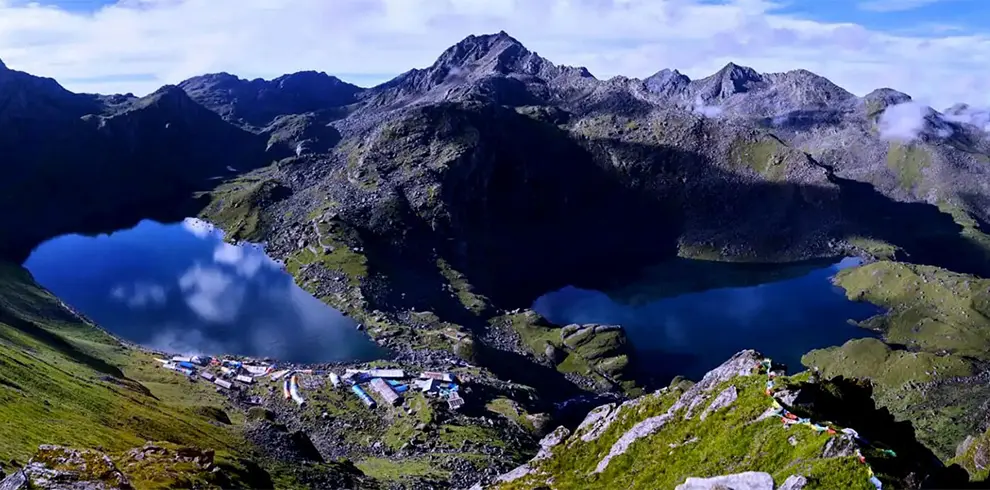
Gosaikunda Trek 6 Days
Embark on an unforgettable journey through the heart of Langtang National Park with the Gosaikunda Trek, an adventure that seamlessly blends natural splendor, cultural immersion, and spiritual exploration. The trek winds through diverse landscapes, f...

Langtang Valley and Ganja La Pass 14 Days
The Langtang Valley and Ganja La Pass Trek is a challenging and adventurous trekking route that takes you through the breathtaking Langtang Valley and over the Ganja La Pass, offering a unique combination of stunning landscapes, remote wilderness, an...
Helicopter Tour Packages

Everest Base Camp Helicopter Tour
In the realm of unparalleled mountain grandeur, the One-Day Everest Base Camp Helicopter Tour stands as a testament to the epitome of adventure and luxury. This exceptional journey offers a unique opportunity to witness the majestic beauty of the wor...
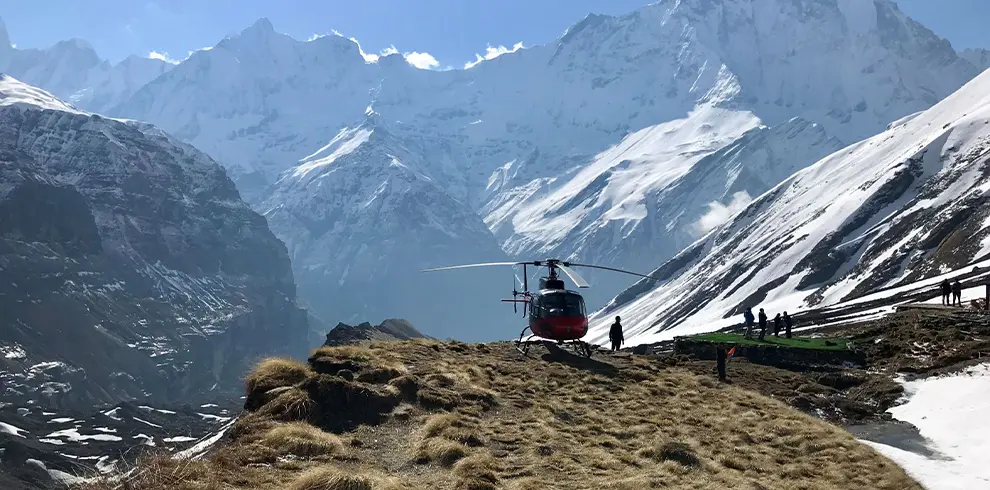
Annapurna Base Camp Helicopter Tour
Annapurna range located 40 km north from pokhara most of which are above 7000 meter above the sea level. The entire Sanctuary is sacred specially among native gurung inhabitant of that area. Undoubtedly, the Annapurna Base Camp (ABC) journey is...

Langtang Gosaikunda Helicopter Tour
Gosaikunda also known as silu is an alpine of fresh water lake as part of Langtang National Park. Gosainkunda lies close to the Tibetan border, north of Kathmandu, Nepal. Gosaikunda is one of the most well-known drawing points and is often considered...
Manaslu Region Trek

Manaslu Circuit Trek 12 Days
About Manaslu Circut Trek The Manaslu Circuit Trek is a captivating and adventurous journey that takes you around the spectacular Mount Manaslu, the eighth highest peak in the world. This trek offers a unique opportunity to explore the unspoiled beau...

Manaslu and Tsum Valley Trek 19 Days
The Manaslu and Tsum Valley Trek is a mesmerizing and off-the-beaten-path trekking adventure that combines two stunning regions in Nepal: the Manaslu Conservation Area and the remote Tsum Valley. This trek offers a unique opportunity to explore the r...
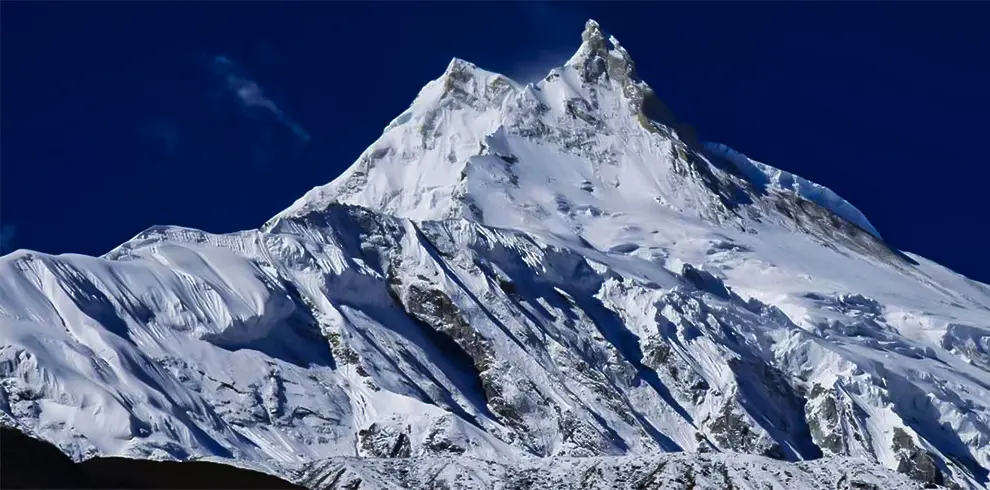
Manaslu Short Circuit Trek 9 Days
The Manaslu Circuit Trek (Short) is a captivating and less-trodden trek that offers a condensed version of the classic Manaslu Circuit, allowing trekkers to explore the stunning landscapes and unique culture of the Manaslu region in Nepal within a sh...
Other Packages

Kathmandu Nagarkot Chitwan Pokhara tour 10 days
NOTEThe itinerary is changeable and can be modified as per the need and time frame of the travelerActivities can be added as per the request of travelerThe cost will be re-calculated if the itinerary is changed or modified

Chitwan National Park Jungle Safari
Chitwan National Park is a protected area located in the southern region of Nepal. Established in 1973, the park covers an area of 952 square kilometers and is home to a diverse range of flora and fauna, including tigers, rhinoceroses, sloth bears, d...
- Customize Your Trip
Destination Blogs
Explore the world through our captivating blogs! Join us on a virtual journey filled with travel tips, hidden gems, and inspiring stories. Immerse your...
Trekking Permit and Fees
Embark on your trekking odyssey smoothly. Learn about trekking permits and fees, ensuring compliance with regulations. Navigate the trails confidently —...
Rescue and emergency
Safety is our priority. Discover our robust rescue and emergency services, designed to keep you secure during your travels. Rest assured, our experience...
Travel Information
Discover a treasure trove of travel information! From packing tips to cultural nuances, our travel information page is your go-to resource. Empower your...
Trekking Equipment and Checklist
Unlock essential travel information here! From visa details to local customs, our comprehensive guide empowers you with knowledge. Navigate new destinat...
About Master Himalaya
Embark on unforgettable journeys with us! As a premier travel agency, we curate seamless adventures, turning your travel dreams into reality. Discover t...
Terms and Conditions
Before you set sail, acquaint yourself with our terms and conditions. From booking policies to cancellation guidelines, find clarity for a smooth voyage...
Legal Documents
Browse through our legal documents for transparency and trust. Access terms of service, privacy policies, and more. Your peace of mind is essential — ex...
Privacy policy
This Privacy Policy outlines how we collect, use, disclose, and safeguard your information when you use our website, services, or engage with us in any way. By accessing or using our services, you agree to the terms outlined in this Privacy Policy.
- +977-9801099972 / 75
- [email protected]
- Trip Photos

Destination
Start/End point
Max Altitude
About Everest Base Camp Trek
Ebc trek highlights.
- Everest Base Camp Trek is one of the finest treks in the world that centers on the world's highest peak Mt. Everest.
- The trail runs over the fringe of Sagarmatha National Park.
- You take a flight to Lukla Airport, either from Ramechhap or Kathmandu. Lukla Airport is also considered as world’s most dangerous airport.
- A local mountain trekking guide with extensive knowledge of the routes and accommodations in the Everest Base Camp Trek will accompany you.
- Namche Bazaar: The Gateway to Everest Base Camp.
- Tengboche is a religious community with a spiritual focus while in transit to Everest Base Camp.
- Hike to Kala Patthar, which is located higher than Everest Base Camp with a bonus panoramic view.
Everest Base Camp is a world-renowned trekking destination located in the Khumbu region of Nepal. Situated at an altitude of 5,364 meters (17,598 feet), the base camp provides stunning views of the world's highest peak, Mount Everest (8,848 meters / 29,029 feet).
The journey to Everest Base Camp Trek typically takes around 12-14 days, and the trek passes through picturesque Sherpa villages, rugged terrain, and High Mountain passes. The starting point of the trek is Lukla, a small town in the Solukhumbu district, accessible only by a short but exciting flight from Kathmandu. From Lukla, the trek follows the Dudh Koshi River and takes trekkers through Namche Bazaar, the gateway to the Khumbu Region. Namche Bazaar is a vibrant town and a popular acclimatization spot where trekkers can enjoy the local hospitality, rest, and acclimatize to the high altitude.
The trek to Everest Base Camp is a challenging one, and it requires a good level of physical fitness and stamina. The trail is steep, and the altitude can cause altitude sickness. However, with proper preparation and pacing, trekkers of all ages and backgrounds can complete the journey.
The Everest Base Camp Trek offers a chance to witness the beauty of the Himalayas up close and personal, including peaks such as Lhotse, Nuptse, and Ama Dablam. Along the way, trekkers will also pass through numerous Buddhist monasteries, prayer flags, and mani stones, which add to the spiritual and cultural significance of the trek.
Reaching Mount Everest Base Camp is a once-in-a-lifetime experience and a dream come true for many adventure enthusiasts. The feeling of standing at the base of the highest mountain in the world and witnessing the awe-inspiring beauty of the Himalayas is truly unforgettable. It is no wonder that Everest Base Camp Trek is one of the most popular trekking destinations in the world, attracting thousands of trekkers each year.
Why Master Himalaya?
Master Himalaya is a team with a long history in tourism, although our trekking branch has only been around for 10 years. Similarly, we also have hotels in Dingboche, Lobuche, and Pheriche in the Everest Region , which allows us to offer you the best prices .
Detailed Itinerary
Arrival at Tribhuvan International Airport, Kathmandu, and rest for a day
Arrive in Kathmandu and rest for the day to recover from your journey after having a welcome dinner with the Master Himalaya team. You can explore some of the city's cultural sites if you have the energy.
Exciting flight from Kathmandu to Lukla- 30 mins, trek from Lukla to Phakding(2650m)
On the first day, we take a short flight from Kathmandu to Lukla, which only takes about 35 minutes. We can choose to fly in a fixed-wing plane or a helicopter, but the cost may vary slightly. After arriving in Lukla, we begin our trek to Phakding. Since we reach Lukla early in the morning, it's not practical to stay there for the whole day. We can have dinner either in Lukla or along the way, as there are plenty of hotels on the route
Trekking to Namche Bazaar (3440m) from Phakding, via Monjo ( Trek hours : 5-6 hrs)
After we reach phakding now we head towards our first popular renowned destination Namche Bazzar: the Gate way to Everest base camp, Nammche Bazzar is a main trading center and hub for the Khumbu (Everest) region. You can also find many luxury hotels here. Altitude of Namche is 3500 m.
Rest at Namche Bazaar for Acclimatization
We stay here for acclimation because it will be completely unsafe to go to higher altitude without preparation. Namche being a market you can also find necessary equipment’s for trekking (but it will be more costly so be prepared in Kathmandu) and helps you to understand culture. You will find many tourist from the entire world we can say you are at a mini world between the mountains. You can also find porters there but it will be very costly to hire there. Today is a full day rest so if you don’t want to stay in Namche we also have option to hike to khunde or Hotel Everest view( one of the popular hotel in Syangboche).
Trek to Tengboche (3855m) via villages like Khunde, Khumjung ( Trek hours : 5-6hrs)
Next destination Tengboche , from Namche it its just a 5-6 hrs walk, from here tourist gets divided because tourist going for a gokyo lake will go the other way to Phortse, tourist going to complete high pass like renjo-la pass and cho –la will also go other way to Phortse and tourist going for a Everest base camp head straight. Tengboche is spiritually very popular. You can find many powerful monasteries there.
Trek to Dingboche (4410m) from Tengboche ( Trek hours : 5-6hrs)
Next destination is either Dingboche or Pheriche. You can go any anywhere you wish. It is again a two way route. Mastrrer Himalaya Treks and Expedition also own hotel at Dingboche named as Family guest house. From Dingboche you can also head towards Kongma -la pass via Chukkung and reach lobuche(Need Extra Days).
Acclimization at Dingboche
Since we are climbing higher and higher we must priorities safety. So, another rest day at dingboche or pheriche either you can also stay one night at dingboche walk a little and stay another night at pheriche or stay at pheriche while returning. . From dingboche you can also head towards Kongma -la pass via chukkung and reach lobuche (It will take two Extra Days).
Trek to Lobuche (4940m) from Dingboche ( Trek hours: 4 hrs)
Next popular destination is lobuche(4928 m). Specially it is a name of a peak, lobuche peak altitude of (6119 m). it is one of the popular 6000 m expedition, you can see many climbers fulfilling there dream to lobuche. There is also a old research center called lobuche pyramid. Master Himalaya Treks and Expedition also Owns hotel at lobuche.
Trek to Everest Base Camp ( 5364m) and Trek Back to Gorak Shep (5164m) ( Trek hours : 5-6hrs)
You are now heading toward the altitude of 5364 m the Everest base camp crossing Gorekshep, but we cannot stay and there is no permanent hotels at Everest base camp so we keep our bag pack at gorekshep and hike to Everest base camp and again return to Gorekshep and stay one night at gorekshep.
Hike to Kala Patthar Viewpoint (5550m) and Trek to Pheriche (4250m) via Gorak Shep ( Trek hours : 6-7hrs)
After we wake up early morning we are going for a one last view of the entire range of The Everest. Since we cannot see a panoramic view from Gorekshep we hike to kala patther of the altitude higher than Everest base camp 5644 m see the full range and get down to Pheriche. we are moving down to low altitude we can reach Pheriche in about 7-8 hours.
Note problem for many trekkers, returning the same route and Teavellers/trekkers want to experience something new. Trekkers have already experienced the route places and culture. Travelers also stay extra night in Namche and dingboche/pheriche. They also get very tired when they reach everest base camp. Thinking that returning the same route is more tiresome. So there is Now a option and the new trending packages called Everest Base camp trek with Helicopter return .
Trek from Pheriche (4,250m ) to Namche ( Trek hours : 7-8hrs)
Trek back to Namche Bazaar, retracing your steps .
Trek from Namche to Lukla
You will continue your trek to Lukla. You see the world's most dangerous airport of all time. Celebrating the memories of your Everest journey.
Fly Back to Kathmandu (14000m) from Lukla
Take a flight back to Kathmandu from Lukla. Leaving your footprints and taking all the memories with you. You can share your experience with the Master Himalaya team while enjoying your farewell dinner.
International Departure
One of our team members will drop you at Tribhuvan International Airport.
Costing Details
What is included in everest base camp trek cost .
- Round-trip flight (Kathmandu-Lukla) inclusive of departure taxes.
- Two nights accommodation in a well-appointed 3-star hotel in Kathmandu, inclusive of a breakfast plan.
- Eleven nights and twelve days of lodging in the finest guesthouses available (twin-sharing basis) from departure in Kathmandu until your return, featuring personal bathrooms with hot showers in Phakding, Lukla, and Namche.
- Three nutritious daily meals, covering breakfast, lunch, and dinner, throughout the entire Everest Base Camp trekking.
- Refreshing snacks of locally sourced, seasonal fruits on trekking days.
- Entry tickets for National Parks and Heritage sites during the trek.
- Two essential trekking permits (SNP and KPL Rural Municipality Permit).
- An accredited, English-speaking, experienced Everest trekking guide to lead the way.
- Porter support for carrying your baggage during the Everest journey (ratio: 1 porter for every two clients).
- Inclusive coverage of all costs related to the guide and porter, encompassing food, accommodation, salary, and necessary equipment.
- Provision of a duffel bag and sleeping bags for use during the trekking adventure if required (need to return after trek).
- Completion of all required paperwork and adherence to government taxes and service charges.
- Availability of a well-equipped first aid kit for any unforeseen circumstances.
What is Excluded In Everest Base Camp Trek Cost ?
- International flight expenses.
- Charges for excess baggage (Limit is 9 kg per person) during the trek.
- All meals in Kathmandu, both before and after the trek.
- Additional accommodation in Kathmandu, if required due to early arrival, late departure, or an early return from the trek.
- Personal expenses include shopping, snacks, boiled bottled water, hot (Tea/Coffee), cold drinks, hot showers, alcohol, Wi-Fi, telephone calls, battery recharge fees, extra porters, etc.
- Personal clothing and gear.
- Mandatory travel insurance covering emergency high-altitude rescue and evacuation.
- Recommended tips for guides and porters.
- Any other expenses not explicitly mentioned in the "What is included in my 14 Days EBC Tour Package" section.
Gears And Equipments

- Sun hat or cap
- Knitted hat/Beanie
- Scarf/Neck Gaiter/Buff
- Technical fabric base layer (light for warmer months, heavy for colder months)
- Technical fabric short (2) and long sleeve (2) shirts
- Waterproof, windproof shell
- Fleece jacket or pullover
- echnical fabric base layer (light for warmer months, heavy for colder months)
- Hiking pants (2)
- Comfortable pants for inside the teahouses
- Hiking shorts
- Wool or technical fabric warm socks
- Hiking socks
- Liner socks (optional, e.g., silk)
- Trekking/hiking boots (waterproof recommended)
- Ice Cleats/Micro Spikes (for trekking Nov-Mar)
- Casual shoes
- Gaiters (lightweight for dust, heavy for snow in colder months)
- Technical fabric/quick-drying underwear
- Sports bras (for women)
- Pajamas or sleeping clothes

Documentation
- Extra copies of passport-sized photos
- Airline tickets (leave a copy in Kathmandu office)
- Waterproof/dry bags for documents and money
- Permits (Master Himalaya Guide will manage)

- Cough Syrup (for Khumbu Cough)
- Mosquito repellent cream (for Kathmandu and Phakding)

- Power bank or extra batteries
- Cameras and mobile phone
- Pee bottle/pee funnel for women
- Trekking poles
- Thermos for hot water
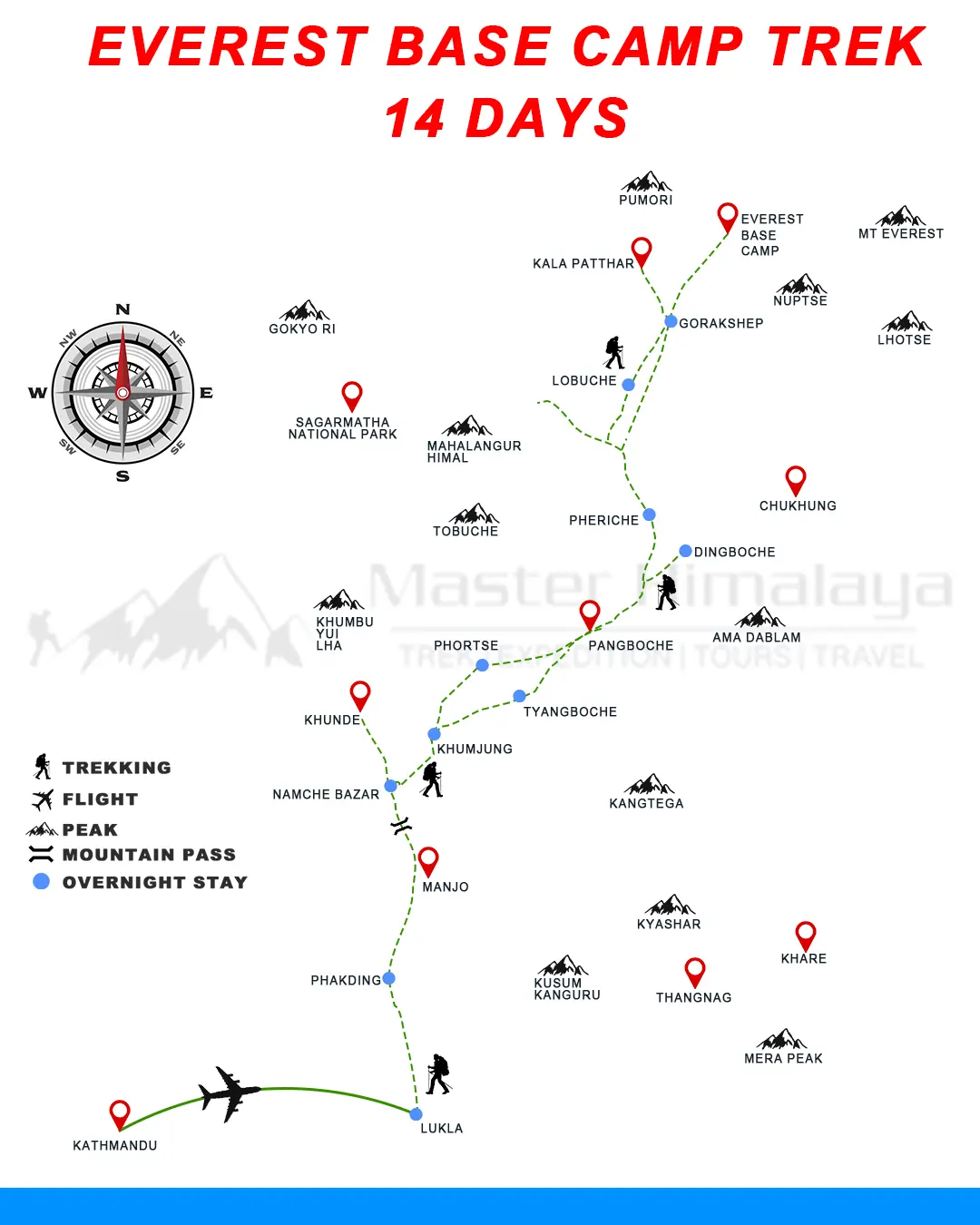
Upcoming Departures
October 2024
November 2024
December 2024
Apr 29, 2024
$1500 $1300
Deposit $1300
10 seats available
May 01, 2024
May 03, 2024
May 05, 2024
May 07, 2024
May 09, 2024
May 11, 2024
May 13, 2024
May 15, 2024
May 17, 2024
May 19, 2024
May 21, 2024
May 23, 2024
May 25, 2024
May 27, 2024
May 29, 2024
May 30, 2024
Oct 01, 2024
Oct 05, 2024
Oct 10, 2024
Oct 15, 2024
Oct 25, 2024
Oct 30, 2024
Nov 05, 2024
Nov 10, 2024
Nov 15, 2024
Nov 20, 2024
Nov 25, 2024
Nov 30, 2024
Dec 01, 2024
Dec 05, 2024
Dec 10, 2024
Dec 15, 2024
Dec 20, 2024
Dec 25, 2024
Dec 30, 2024
Important Notes
Our standard itinerary may experience slight variations due to unforeseen circumstances beyond our control. Factors such as flight cancellations/delays, adverse weather conditions, natural disasters, changes in government regulations, political events, or the health conditions of trekkers could potentially impact the planned schedule. In such situations, we seek your cooperation and flexibility as we explore the best possible alternatives to resume the trek. We strongly recommend arriving one day before the trip's start date to allow for rest and to provide enough time to acquire the necessary clothing, equipment, and gear required for the trek. Additionally, it is advisable to schedule international flights with extra days in Nepal both before and after the trek, considering the possibility of flight delays or cancellations due to weather conditions. Furthermore, you have the option to customize your trip by adding on a sightseeing tour in Kathmandu, participating in other adventure sports, or embarking on day trips around the country before or after the trek. This flexibility ensures a more comprehensive and enjoyable travel experience, accommodating any unexpected changes in the itinerary.
Accommodation in Everest base camp Trek
Accommodation in Everest base camp Trek has been well established much more then other Base camp trek trek due to growing in tourism Industry. Almost all teahouses on the popular trail like Gokyo or Everest Base camp trekking provide good basic standards of comfort and cleanliness. On the trail of Everest Base Camp, you can find friendly tea houses and luxurious hotels. It is still possible to tented camps but not so popular because we can find enough Tea house and hotel.
Accommodations along the Everest Base Camp trek offer twin-sharing rooms, each equipped with two beds and without attached bathrooms. The rooms provide basic furniture, including a small table or chair, and some may feature additional amenities such as shelves and hooks for hanging clothes. For those seeking a more luxurious experience, certain lodges provide upgraded rooms with enhanced facilities. The beds in these accommodations are furnished with mattresses, pillows, bed sheets, and cozy blankets for a comfortable night's rest. The ‘living room’ area is used for eating and relaxing. It is also heated in the evenings with a pot-bellied stove. Lodges are usually sociable places where you can meet many other trekkers. Many trekkers come equipped with their own books to read and phones to pass their time with.
Therefore, if you’re planning to trek to Everest Base Camp during peak trekking seasons , my number one tip is to book your accommodation as early as possible! Master Himalaya treks and expedition can help you on this
Camping Accommodation
The camping mode of accommodation is generally used by expedition teams while climbing Mt Everest, Mt Lhotse or any other peak as there are not lodges beyond certain points. While trekking, camping accommodation is used in remote treks such as Dhaulagiri, Dolpo, and Kanchenjunga. Usually, tents are used for accommodation and cooking staff prepares food while big crews are hired for different work.
Although camping on the Everest Base Camp trail is an amazing experience, it is generally avoided due to the easy accessibility of teahouses. It is not a wise idea to set up a tent just next to those cozy teahouses.
Accommodation in lukla
Lukla offers you a wide range of options for accommodation like teahouses, hotels as well as luxury hotels for all budgets and preferences during your trek. Teahouses are basically homes of locals, later upgraded as lodges with better beds and multiple food options. Hotels, or lodges, have been built with many rooms to accommodate a large number of trekkers. Similarly, you’ll also find hotels designed for luxury like Yeti Mountain Home to serve you comfort like no less than hotels in Kathmandu.
What Service Do I expect in lukla hotels?
Indulging in food and beverages during the Everest Base Camp trek is a treat, and even in Lukla, hotels offer an extensive menu with dedicated kitchen staff. A sample menu from one of the hotels includes a variety of options. Additionally, Lukla boasts various restaurants offering diverse cuisines and cozy coffee places for a delightful culinary experience.
Charging electronic devices is hassle-free in Lukla, as there is no extra fee for utilizing charging ports. Most hotels provide these ports in rooms, and if not, they are available in the dining area.
For those opting for a room with an attached toilet, hot showers are often complimentary , with options like solar or geyser showers. However, in basic rooms with shared toilets, there may be an additional charge ranging from USD 3 to USD 5 for hot showers.
Lukla maintains a reliable cellular network with both NTC and Ncell networks functioning well. Wi-Fi options are abundant, including the use of personal data packs from NTC and Ncell at reasonable rates. Most hotels offer free Wi-Fi, effective in both dining areas and rooms. Everest Link provides an alternative for consistent internet service throughout the trek , covering higher altitudes like Gorakshep, Gokyo, and various sections of the Three Pass Trek, with options of 10 GB and 20 GB data packs.
Regarding toilets, hotels feature western-style facilities , but it's advisable to carry toilet rolls as water availability may vary. Other amenities include POS machines accepting credit cards, laundry services, and the convenience of hotels assisting in flight ticket arrangements. The hospitality in Lukla ensures a comfortable and well-equipped stay for trekkers
Accommodation in Namche
Usually, trekkers stay At Namche Bazar for two nights for acclimatization while ascending and stay a night while descending during the Everest Base Camp Trek. There are several luxury hotels and high-end lodges in and around Namche Bazaar. Hotel Everest View is one of the most popular hotels, holding the Guinness world record for a hotel in the highest altitude.
For budget travelers , there are several guesthouses and lodges in Namche Bazaar, such as the Khumbu Lodge, Himalayan Lodge, and the Hotel Sherwi Khangba. These places offer basic accommodation with shared bathrooms and common areas but are clean and comfortable.
If you are in search of luxury to pamper yourself or just need a place to rest during your trek, Namche promises you both.
What Service Do I expect in Namche?
The rooms of these high-end hotels consist of an electric blanket, a small heater, thermos, and free WiFi throughout the hotel. The rooms have attached bathrooms with hot shower and western-style toilets. You will find charging outlets in each room for your electronic devices. You will get all these services and facilities with no additional costs. The price often includes breakfast.
Accommodation in Tyangboche
In Tengboche, a limited number of teahouses, around 4 to 5, provide essential accommodation services. As you progress along the trail , you can expect more basic tea houses with fundamental facilities. Tengboche, being a popular stop for trekkers attending the morning prayer at the monastery, experiences high demand during peak seasons, resulting in packed teahouses.
Accommodations in Tengboche typically offer basic rooms, often shared, with communal toilet facilities. Notably, the Tengboche Guesthouse is recognized among the teahouses in the area.
For those seeking a bit more comfort, lodges in Tengboche provide the option of private rooms and may offer a broader variety of food. It's essential to keep in mind that transporting supplies up the mountain poses logistical challenges, so menus might still have some limitations.
While less common, some trekkers may have the opportunity to arrange a homestay in Tengboche. Opting for a homestay provides a unique chance to immerse oneself in the local Sherpa culture firsthand, even though the amenities may be comparable to or slightly less than those in a teahouse.
Accommodation in Dingboche
Dingboche serves as a popular acclimatization stop for trekkers after Namche, offering tea houses that have transformed into comfortable lodges and hotels operated by Sherpas. The services across most lodges are quite similar, with comparable menu rates and price ranges.
What Service Do I expect in Dingboche?
- Basic Rooms: These rooms lack attached toilets and generally include two single beds, a table, a dustbin, and, if fortunate, a hanger. Lodges provide comfortable beds and quality blankets, making the use of a sleeping bag optional.
- Rooms with Attached Bathroom: Some hotels offer rooms with attached toilets and additional amenities in Dingboche. Facilities may vary, including electric blankets, towels, slippers, and charging ports. However, due to factors like altitude and temperature, some hotel rooms may only have toilets and may or may not offer hot showers.
- Battery Charging: Charging services are generally available in lodges, with some hotels charging on an hourly basis. Carrying a solar-powered power bank is recommended to save costs.
- Hot Showers: Hot showers are considered a luxury after Namche Bazaar and may not be complimentary, except in deluxe rooms. The cost ranges from USD 5 to USD 7 per bath, and there is typically a time limit. Cold showers are free but not advisable.
- Internet/Wifi: While there's no cellular network, Everest Link provides internet services in Dingboche. Prepaid cards for volume-based internet can be purchased in lodges. Data package costs range from Nrs. 600 to Nrs. 2999, offering connectivity for various durations and locations along the trail.
Accommodation in Lobuche
Lobuche, your penultimate stop before reaching Everest Base Camp, offers over half a dozen hotels providing decent accommodation in the area. To ensure a comfortable stay, here's a comprehensive guide to plan your accommodation in Lobuche.
What kind of Accomodation will I find in Lobuche?
Your primary accommodation options in Lobuche are hotels, featuring decent rooms, warm dining halls, and a variety of food options to cater to trekkers on the trails. Tea houses, run by Sherpas, share similarities in rooms, services, and prices with hotels. Basic rooms in hotels typically include two or more beds, a table, and a dustbin. Hotels offer warm blankets and mattresses, though trekkers can bring their own sleeping bags if preferred.
Lobuche offers a bakery outside Hotel Mother Earth, likely the highest bakery in the mountains, equipped with a coffee machine. Additionally, hotels can assist in arranging helicopters and horses in case of need.
What types of food item & Services do we expect in lobuche?
Hotels along the Everest Base Camp trekking trails, including Lobuche, boast extensive menus. Options range from Dal Bhat, spaghetti, momos, and spring rolls to pizzas—providing a variety of choices reminiscent of lower altitudes. The menu prices remain relatively consistent throughout Lobuche.
- One dish: USD 4-USD 8
- Set Breakfast: USD 6 -USD 10
- Soup: USD 4-USD 6
- Beverage Price Range: USD 1- USD 4
- Hot Water: USD 1 -2 per cup
Battery Charging
Charging your devices is available in the dining hall near the reception desk. Prices range from USD 4- USD 5 per hour for mobile charging and USD 10 for charging camera batteries and power banks. Bringing your own solar-powered charging devices is recommended to save costs and avoid waiting in queues.
Hot Showers
Lobuche provides only bucket showers, and it's advisable to avoid showers at this altitude. The cost for a bucket shower is approximately USD 7.
Cellular Network and Internet/Wifi
None of the cellular networks work in Lobuche. Everest Link is the sole option for emergencies, providing wifi services in all hotels. Wifi cards are available for purchase, offering connectivity for quick messages, location updates, or posting pictures. Data volume and prices range from Nrs. 600 to Nrs. 2999.
In most hotels in Lobuche, western-style toilets are not available. Squat toilets are more common and easier to maintain, although during peak seasons, when there is a high flow of trekkers, they may get dirty.
Booking Considerations: There are limited lodges in Lobuche due to National Park restrictions on new hotel construction. Finding a room during peak seasons can be challenging, often leading trekkers to end up in dining halls. Therefore, it is advisable to book rooms in advance for a smoother experience.
Accomodation in Gorekshep
There are only basic rooms with shared toilets in Gorakshep. Rooms are very basic with nothing but only beds. Although hotels offer a blanket and woolen bed sheets, rooms can be very cold so you should consider bringing your sleeping bags. During high flow of tourists, many trekkers are forced to stay in dining areas as well.
What Service can I Expect in gorekshep?
Nestled at an impressive altitude of 5100 meters, Gorakshep, despite being the final village on the trail, surprises trekkers with a diverse food menu. While the guarantee of gourmet delights isn't assured, the meals are unquestionably 'mountain good.' Although prices for meals tend to be relatively high, they remain consistent across all hotels.
Meal Price Ranges:
Staying hydrated is crucial to ward off altitude sickness in the Everest Region, and Gorakshep offers an array of drinks such as tea, coffee, and hot juice. However, water scarcity is a concern in this village. Hotels have ingeniously created a water pond, with water carried daily for various purposes. Trekkers are charged for every cup of hot water consumed.
- Beverage Price Range: USD 1 -USD 4
- Water cost: USD 1-2 per cup
Battery Charging
Charging options are available in the dining hall, but prices are steep. Wise packing, including bringing personal power banks, especially solar-powered ones, is recommended for the Everest trek. Charging is billed on an hourly basis, with higher charges for camera gear.
- Cost: USD 4- USD 5 per hour for mobile charging
Hot showers in Gorakshep are discouraged for health and altitude reasons, even by the hotels. However, for those in absolute need, the cost is around USD 10 for a quick hotel bucket shower.
Cellular Network
Surprisingly, the NTC cell network functions in Gorakshep, thanks to the collective efforts of hotel owners who installed a tower in this remote village. It provides decent phone reception, suitable for calls, though not strong enough for seamless internet.
Internet/ Wifi
Apart from NTC, Everest Link is available in Gorakshep. The wifi is suitable for sending quick updates and messages in emergencies, but its reliability is compromised during bad weather. Data volume and prices are as follows:
- 600 MB, Price: Nrs. 600 ~ USD 6 [Lodge specific, only runs in the particular lodge]
- 10 GB, Validity: 30 days, Price: Nrs. 1999 ~ USD 18 [Not lodge specific, can use the data pack anywhere on the trail]
- 20 GB, Validity: 30 days, Price: Nrs. 2999 ~ USD 25
Due to extreme cold temperatures, hotels in Gorakshep feature squat toilets to prevent water freezing. Shared toilets, one or two on each floor, with water stored separately in large tanks and drums. During peak seasons, when trekker traffic is high, the toilets may become less pristine despite the diligent efforts of hotel staff.
Other Services
While hotels generally lack additional services, they are open to providing packed meals and a thermos of drink for trekkers heading to Everest Base Camp or Kala Patthar. In case of need, hotels can also arrange helicopter and horse services.
Master Himalaya Feedback
I highly recommend this tour agency. They arranged most of our trip to the Everest base camp. The flight tickets, the entrances fee and an amazing guide/porter (jeevan was a really good guide, he knew everything, was always taking good care of us, taking us to really good lodges). They were always aware of where we were and helping us with everything. Always really flexible and open to our needs. They borrow us a big bag to take our things to the trekking and crampons. Also we bought with him bus ticket to pokhara for a good price. Thank you for the amazing experience that we had in Nepal and for the t shirt that will be a good memory to carry back home !!!!

Excellent They really are the master of Himalaya. Best guide, best trip.the adventures that were found around every corner of Nepal were beyond our expectations.

Unique experience in Nepal. Himalayas, have always been a fascinating destination and Nepal, the kingdom of mountains have been attracting adventure seekers since ages. I personally am a big admirer myself of these snow clad peaks and whenever I get a chance I vist my first choice is mountains. Nepal has always been a land of fascination for me, a place where one can be so close to Lord Shiva; The Pashupati Nath Temple in Kathmandu is one of the biggest pilgrimage center for Shaivites and also Nepal is one of the two gateways to Kailash and Manasarovar pilgrimage. Its always an adventure going in to deep areas and heights on Himalayas. Though I love taking risks but its always advisable to take help of the locals while visiting Nepal Himalayas. Last time when I was in Nepal to go closer to Mt Everest, I took the Everest Base Camp trek. So as advised by my friends and others who have been to this trek earlier, I decided to visit the offices of Master Himalaya Treks and Expeditions Pvt Ltd. in Kathmandu. I was very happy and satisfied when I met the people at Master Himalaya – they seemed like thorough professionals. Master Himalaya is well known for organising and handling treks and trips in the most professional and dedicated way. It is a well established company in tourism industry of Nepal and is owned by experienced personals of Nepal tourism. The have an clear idea of the do’s and don’ts in the mountains. They are a team of professional trekking guides, tour guides, mountain leaders who provide the best services. They are registered and licensed as per govt. of Nepal and are registered as member of TAAN, PATA, and NATA etc. They deal in various services like Trekking, Hiking’s, Peak climbing’s, Cultural tours, River rafting, jungle safari, domestic and international ticketing, hotel reservation, visa services and many more for the destination Nepal, Tibet and Bhutan. Master Himalaya takes care of all the arrangements needed to have a wonderful experience and take back memories that will last for the lifelong. And finally when I took the trek package and reached the base camp, it was more than satisfaction and happiness. I felt like as if I have already climbed the Everest. The guides and porters were extremely helpful and experienced. Personally I would rate Master Himalaya as one of the best companies in Nepal, and feel that for a person visiting Nepal, Master Himalaya is a must.
exatraveller 1
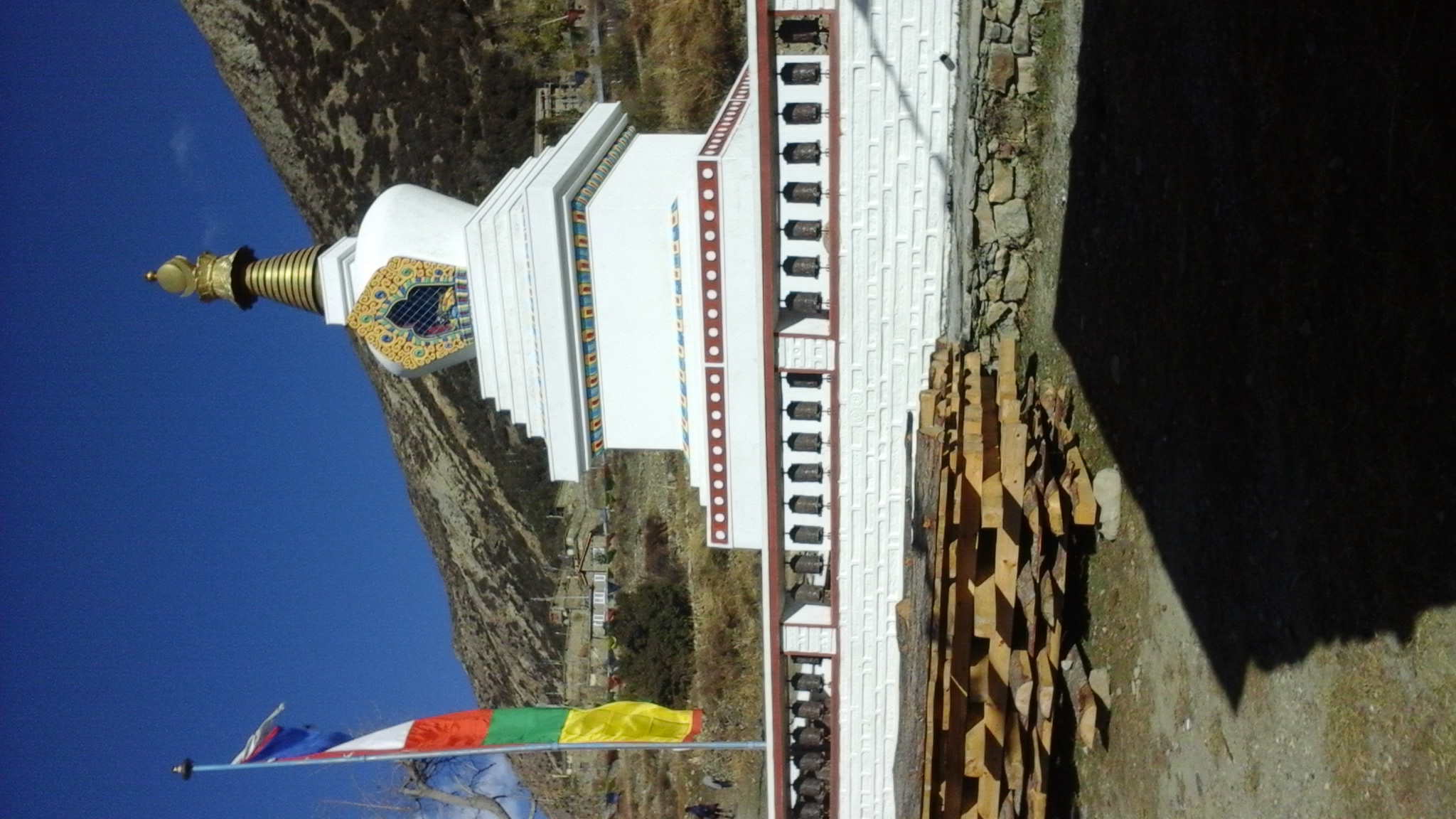
Nara guided my friend Anna and me so well during our EBC trek, we didn't have any altitude sickness, we were really well taken care of. While coming down, Anna got sick with cold and Nara took really good care of her. He also made sure we got the best views, got the best information and stay on top of our health during our whole trip. I would recommend anyone to have Nara as their Guide for EBC or ABC trek in Nepal.

I had already 4 different trekkings organized by Nara: Kalla Pattar + Cholla Pass + Gokyo; Everest base camp + climbing on Island Peak; Annapurna base camp; Langtang + Chitwan. All had been perfectly organized and not overcharged. Nara is really a professional guide and a nice companion. Bogdan B. (Poland)
bbogdan2017 8

My husband and I did the Everest Base Camp trek with Nara. I had been trekking a few times in Nepal before, but Nara is the BEST guide we've ever had. He arranged all our rentals, housing, permits, etc. with ease. He even negotiated discounts for us at several teahouses along the way. He is very knowledgeable and very kind. Our trip with him was truly the trip of a lifetime and I would highly recommend him. We will definitely be using him again if we travel to Nepal again.

Go in January! Nara led my wife and I on the Mt Everest base camp trail back in January 2010. He was terrific...absolutely no complaints! Took us 10 days going up and 2 coming down because we wanted to get back by that Sunday. He helped us rent gear/clothes for the trek. I would highly recommend Nara! And: Winter has much better visibility than Summer...enjoy the experience of the cold and get better pictures!

Nara Bahadur Bohara has been my friend since 2000 when he was my guide/porter for a Jiri-Jiri trek to Everest base Camp. Since then he has either been my guide/porter, or more recently my trek organizer for 9 treks, either to Everest Base Camp, the Annapurna Circuit or Annapurna Base Camp. He has always been at the airport to meet & greet me, and always accompanied me back to the airport, feeling fit, refreshed and in good spirits. He has many characteristics that make him perfect for the job he does. He is a diligent organizer with incredible attention to detail. He’s great at helping to arrange trekking permits in Kathmandu, helping to change airline tickets or accompanying me on shopping or sightseeing trips. Many trekkers have remarked on how fortunate I have been to have had such a great companion. His English is very good; he has a natural charisma & sense of humour and laughs easily. On trek he always dusts off my rucksack before putting it in my teahouse room; he takes my order for food, and serves it and is always a useful extra pair of hands in lodges, helping light and feed the stove and helping out in whatever way he can. He has an encyclopedic knowledge of Nepalese folk songs, and entertains guests and fellow porters alike with his expert singing and dancing. Most importantly, Nara is a wonderful companion. He always helps me across icy trails. The first time I crossed the Annapurna he took me by the arm and helped me down through the snow; with darkness approaching, he carried my rucksack and led me to Muktinath. In short, Nara enabled me to achieve goals I never thought I could achieve. At the end of a trek, back in Kathmandu, he knows how to have a celebratory party. As another contributor so succinctly wrote, “Nara Bahadur Bohara embodies the wonderful spirit of the Nepalese people. He was in a word, perfect. I truly cannot recommend him enough”. Hear hear!
Webbski-85 1

Me and my husband booked Everest Base Camp trek and it was an amazing experience. They gave us Guide with 25 years Experience. He was a Google for the trek, knows everything. They had very good connection with Airlines and Helicopters, that, our flight was cancelled due to weather so they arranged the helicopter for us, amazing. We did our trip slowly and it turned to be a lifetime experience. The service was great, everything on time. I highly recommend Master Himalaya for Nepal Trips. Thank you
I recently completed the 14-day Everest Base Camp Trek, and it was an incredible experience! Witnessing the breathtaking views along the way was truly unforgettable. Our guide, Rakesh, along with the porters, provided exceptional support, making the journey smooth and enjoyable. Master Himalaya, the company we chose, ensured that we were well-prepared for the trek, eliminating any unexpected challenges. The quality of food and accommodations surpassed my expectations, adding to the overall satisfaction of the trip. I highly recommend this adventure—it's truly a once-in-a-lifetime opportunity!
Clapham lane
Our trek was a delightful adventure, especially with the added UNESCO tour day trip at the start. Dikshant from the sales team was incredibly accommodating, swiftly arranging a last-minute addition for my father and ensuring he had a private room throughout the hike. Our guide, Dinesh, was not only kind but also a fountain of knowledge about the area. Pasang and Babu, our porters, were fantastic, always wearing smiles and ready to assist. I rate our experience a 4 out of 5 primarily due to communication challenges. Despite assuring us that gluten-free requirements would be addressed, unfortunately, this wasn't the case. My husband had a gluten reaction, impacting his physical well-being during the trek. Although we didn't require a Medevac, we opted for a helicopter ride after our stay at Pheriche. The team efficiently organized this, and they were understanding when we faced phone issues delaying payment until we reached KTM.
Adventure Lover
A trip worth remembering for life! Had great companions who not only shared stories and experiences but pushed each other and supported over and beyond whenever another struggled. We all have now gone back to regular life and I don’t know if we will all ever meet again BUT they will be part of my stories and memories forever. Shout out to ACE the Himalayas for a fab job of organizing everything, including managing some last moment chaos. Couldn’t have done this without our tour guide Nimesh - friendly, knowledgeable, supportive, and most of all, always smiling no matter what. Took great care of everyone’s needs without hesitation and managed very well to set our expectations through the trip of what was to come next. If I were to do this again, and I probably will in a few years, Nimesh would be my first call.
On our trek with no prior experience, Ace the Himalaya surpassed all expectations. Our guide, Raj, proved to be an invaluable source of information, consistently prioritizing our well-being. Alongside our porter, Khagendra, we felt secure and supported throughout the journey. Opting to book through Ace the Himalaya allowed us to contribute to the local Nepal community, adding an extra layer of significance to our adventure.
During my recent trek with Master himalaya, I am truly grateful for the exceptional support we received. Pasang, our guide, skillfully led us through the trek while also sharing insightful glimpses into local culture, adding a personal touch to our journey. Our porters were absolute rockstars, consistently wearing smiles as they effortlessly carried our belongings. Their dedication and warmth truly enhanced the trek, making it a memorable experience. I highly recommend this team to anyone seeking a reliable and enjoyable trekking adventure. A big thank you to Master Himalaya for making our journey exceptional!
I recently completed the 14-day EBC trek with Master Himalaya Team alongside two companions, and it was an unforgettable experience. The entire trip was seamlessly organized and highly professional, right down to the well-coordinated helicopter trip back from Lukla. Our guide, Surya, was exceptionally professional, ensuring our safety and enjoyment throughout the journey. We were treated to breathtaking views, delicious food, and enjoyable evenings in tea houses along the way. The acclimatization process was well-managed, and we all reached EBC safely and happily. None of this would have been possible without our fearless and remarkable porters, who were true heroes each day. Despite their hard work, they always wore smiles and maintained a positive attitude. I highly recommend Nepal Hiking Team for anyone considering adventures in Nepal. They truly made our trip unforgettable. Thank you!
Catharina d
The views were absolutely breathtaking. We were taken aback by the heavy snowfall, which added to the spectacle of our climb and the vistas. The guides and porters were not only friendly but also incredibly caring, consistently prioritizing our needs and safety throughout the journey. However, on Day 6, I unfortunately experienced altitude sickness and had to be airlifted down early. Despite this setback, our guide stayed by my side until the helicopter arrived. Additionally, the company director personally met me at the hospital, ensuring that I felt safe and well looked after throughout the ordeal. I cannot speak highly enough of the company and the tour they provided. Their dedication to safety and care is commendable, and I highly recommend them to anyone considering such an adventure.
I had one of the most incredible experiences with the Master Himalaya Team. This 14-day trip wouldn't have been possible without their fantastic service. Everyone on the team is exceptionally caring, and the best part is that they handle everything with a smile, no matter the situation. The owner of Master Himalaya Team is incredibly caring and sweet. He made sure everything was well taken care of before we arrived in Kathmandu. All the hotels and places selected for the entire trip were excellent and well thought out. Every detail was meticulously handled. A special mention to our trip guide, Nara, who was amazing beyond words. He greeted us with a smile at the Kathmandu airport, and that smile remained constant throughout the 14-day trip, no matter how challenging the situation. Nara served us with care and a 1000-watt smile. The team of porters, Dorze and Nima, were also excellent. They made sure we were well looked after, from carrying our bags to serving us food, always with a smile on their faces. We only needed to glance at them, and they understood our needs. Hats off to the entire Master Himalaya Team for being so wonderful and amazing. This was, by far, the best experience I've had, and I promise all my future treks in Nepal will be with Master Himalaya Team only. I loved it completely.
It's been two weeks since we returned from the EBC trek. My two kids and I, along with our guide Anmol and two porters, embarked on this incredible adventure. Anmol ensured we were at the right places at the right times, allowing us to enjoy clear skies and stunning views from spots like the Everest View Hotel, Everest Base Camp, the summit of Kala Patthar, and many others along the way. The hike to Kala Patthar peak was challenging, taking about 4 hours round trip, but the breathtaking sunrise over Hillary Step made it all worthwhile. Our team took excellent care of us, and we were warmly welcomed by the friendly people we encountered in the tea houses. We opted for the helicopter to and from Lukla, and the arrangements were seamless—a memorable experience indeed. Meeting Kriti before our trek and her sending us off with a handshake and a gift added a personal touch to our journey. While the trip will test your endurance, it's more about the time and distance traveled rather than the difficulty, especially compared to trekking the Annapurna circuit.
The Everest Base Camp trek had been on my bucket list for two years. Finally, I got the chance to do it, and it turned out to be an amazing experience with Master Himalaya. They truly made this trek the most memorable one. Kriti, the owner, is incredibly warm and humble. He provided us with a thorough briefing, guiding us through what to expect on the trek. Our group of 10 friends embarked on this journey with Master Himalaya. From our stay at Hotel Marsyangdi in Kathmandu to Gorak Shep and back, Master Himalaya ensured our comfort throughout. Our guides, Rajesh, Raj, and Sunil, along with the porters, made the trek exceptionally beautiful with their guidance and support every step of the way. Master Himalaya treated us like family, taking utmost care of us while we were on the trek. I want to express my heartfelt gratitude to Master Himalaya for making this trip one of the best experiences in the Himalayas. A special thanks to Rajesh, our own hero on the trek.
Our once-in-a-lifetime trip was truly unforgettable, and we cherished every moment of it. Harsh, our guide, and the Master Himalaya Team were absolutely exceptional. They took care of us from the moment we landed in Kathmandu until the end of our journey. I highly recommend choosing them for your trek. Plus, being a locally-owned travel company adds to their appeal.
Our group of three decided to book an Everest Base Camp Trek with the Master Himalaya. Right from the first email I sent to the company, our experience was incredibly positive. The team responded promptly to all our emails and questions. Upon arrival at the airport, finding our ride was hassle-free. We were greeted and taken to a very nice hotel. The team met with us in person the day before our trek began to ensure we understood what to expect and to address any concerns. Our guide during the trek was simply phenomenal! He was knowledgeable, patient, understanding, and extremely helpful throughout the journey. Even after the trek, we continued to work with Master Himalaya to arrange lodging and transportation while we spent more time in Kathmandu. Master Himalaya will undoubtedly be my top choice for future travels to the area, and I will highly recommend them to friends back home.
My journey with my guide, Sanjit, to Everest Base Camp from Lukla was truly wonderful. Despite the rainy season in Nepal during August, we encountered challenging weather for the first 8 days of our trek. However, luck was on our side as I was fortunate enough to catch a glimpse of Mount Everest on the last day while hiking to Kalapattar. The sight was extraordinarily stunning and summed up this fantastic journey perfectly. I highly recommend both my guide, Sanjit, and this company to anyone looking to trek to Everest Base Camp.
We went on two treks with Master Himalaya in April/May 2023, each lasting 12 days. One was the Langtang/Gosainkund trek and the other was the Basecamp over Gokyo Lake/Chola Pass trek. Both tours offered stunning views and were fantastic experiences. Ramesh accompanied us on both treks and took excellent care of us. He was reliable, competent, and very attentive to our well-being and the weather conditions. He made careful decisions about whether certain passes would be safe to cross or not. Our porters pasang on the Langtang trek and Ravi on the basecamp trek, did a great job not only carrying our luggage but also looking out for us. We want to express our gratitude to the entire team at Master Himalaya for their exceptional organization from start to finish. We highly recommend this company!
As a solo traveler from Australia, I want to share my amazing experience with Master Himalaya. I did both the EBC and Manaslu Circuit treks with them, and I can't praise them enough. Right from the start, they were professional, honest, and dedicated to making sure my trip was unforgettable. Rajesh, who I communicated with before the trek, was always friendly, responsive to my emails, and made sure I was well-prepared. Our guides, Dinesh and Thakur, for each trek were experienced, knowledgeable, and clearly loved the area. They went above and beyond to keep us safe and comfortable, making the trek special. I'm grateful to porters Vijay and Shiva for their humble service. The treks themselves were incredible. The accommodations were fantastic, especially in remote areas, and the food was delicious and plentiful after long days of trekking. I highly recommend Master Himalaya to anyone wanting to experience the beauty of the Himalayas. Their expertise, attention to detail, and commitment to providing an unforgettable trek make them stand out. I hope to return to the Himalayas for another adventure soon.
Abhay Kumar
After enjoying a wonderful experience with Master Himalaya during the Manaslu Circuit Trek in 2016, it was an easy decision to choose their service again. This time, I opted to go solo to Gokyo Ri via Everest Base Camp and Cho La Pass. It was another beautiful journey. My guide, Prakash, is truly an expert in this area. Despite the high season, I didn't feel like I was walking in a crowd, as he was able to find some lesser-known paths and places. Prakash was able to answer virtually all my questions regarding the trek, surrounding peaks, and Nepali culture. The service provided along the way made me feel like a V.I.P. It was another fantastic time in the Himalayas, and thanks to Prakash, it was also a lot of fun. Thank you!
After extensive online research, I chose to contact Master Himalaya as one of the potential companies for our trek, mainly based on the positive Tripadvisor reviews the company had previously received. The reply of the owner of the company, Rajesh, convinced me straight away. Unlike other companies, he suggested that we would start our trek one day earlier, to be able to fly to Lukla directly from Kathmandu and save time (the next day onwards the flights were directed to Ramechhap). As my inquiry came at a rather last minute, I thought the direct KTM-Lukla flights would have been sold out already for our dates, but Rajesh managed to get me and my partner tickets. Hence, we were able to start our trek conveniently by directly flying to Lukla, unlike other passengers who came after us and had to take the midnight drive to Ramechhap (and in some cases a jeep from there, as the weather got bad soon after and all flights were cancelled). This was just one example of the professionalism and client friendliness of this company - many more were to come during our trek. We paid slightly more to have upgraded rooms (attached toilet and electric blankets where available) throughout the trek, and that is what we certainly got. Compared to many other trekkers - who paid more than us - we had better rooms, and a hot shower almost everywhere (with the only exception of the northernmost location of the trek where basically no one showers). After exchanging experiences with other trekkers along the way, it became clear to us that we had definitely made the right choice and gotten best value for our money. Master Himalaya is a 100 % local company and uses guides and porters who are from the region and know it like their own pockets. Our guide Dinesh was very attentive and made sure we had all we needed during our trek and went an extra mile making sure we always got the best available rooms in each location. When my partner got altitude sickness, Dinesh was quick to take action and continuously checked on my partner until he was well again, which allowed our trek to continue uninterrupted and end successfully. Our porter Buddi was equally amazing and always there for us with a smile on his face. We could rely on him taking the best care of our bags even in the toughest conditions, besides being great company. All in all I can't recommend this company enough, we are already planning our next trip with them. Choosing a local professional company is the best and most sustainable choice you can make - unlike e.g. the many internationally owned trekking companies, Master Himalaya has better connections and knowledge of the region, ensuring you get the best services and facilities available. We could enjoy a worry-free holiday and focus solely on trekking and admiring the scenery, while the company took care of everything else. This was the reason why we chose to trek with a company in the first place instead of doing it by ourselves - a decision we were 110 % satisfied with by choosing Master Himalaya.
My wife and I did a private Everest Base Camp with Helicopter Return trek in May 2022. From the beginning we felt we were in great hands with Rajesh. Communication was informative and always quick. Once we arrived in Nepal, we met our guide, his brother, Rabin, and we went off to Lukla to start our trip. Rabin and our sherpa, Milan, always ensured our well-being and went out of their way to accommodate us. On the first day, Rabin carried my backpack as I wasn’t feeling well at all, which was a great relief. They sought out guesthouses with electrical blankets as my wife felt cold at night when we got higher up. In Namche, Rabin even bought a cake as my wife’s birthday present. During the trek, it was great to go at our own pace. Rabin and Milan were always encouraging and patient as we made our way up to Base Camp. On our way back to Kathmandu, they made sure to get us a helicopter ride back from Lukla as the airport shut down for a few days and we had to make our international flight home. We are extremely happy with the service provided by Rajesh, Rabin, and Milan. We made great memories, and there really is no other choice but to use Master Himalaya when trekking in Nepal.
Leave a review
We value your feedback on the recent trip. Please take a moment to review your experience, including the destination and accommodation. Your input helps us improve our services.
Accommodation:
Value for money:, pre-trip info:.
See group discounts
Trips You Might Be Interested In

Gokyo Lake Trek 13 Days
The Gokyo Lake Trek is a mesmerizing adventure that takes you to the beautiful Gokyo Valley in the Everest region of Nepal. This trek offers a unique opportunity to explore pristine glacial lakes, marvel at towering Himalayan peaks, and experience th...
Start Journey
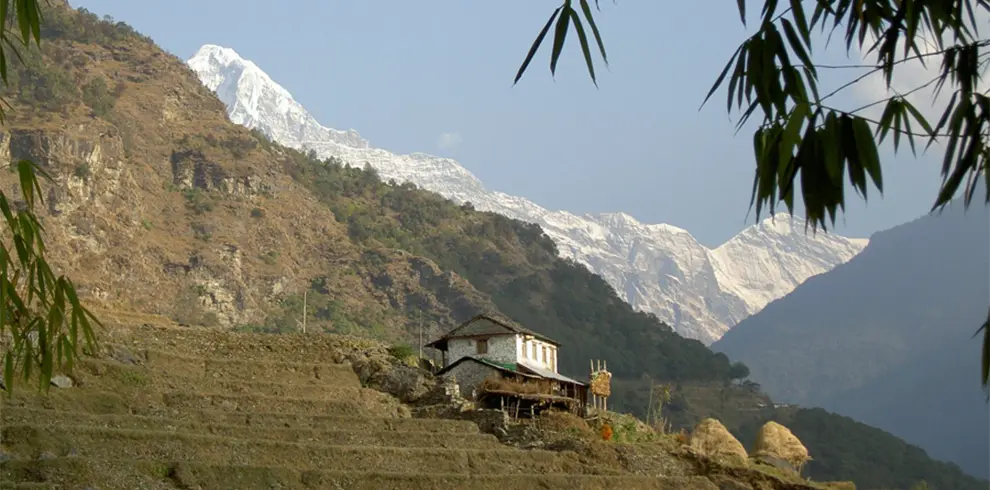
Arun Valley Trek 14 Days
Embark on an awe-inspiring 15-day expedition through the captivating landscapes of the Arun Valley in Nepal. Our meticulously curated itinerary offers an unparalleled journey that combines natural beauty, cultural encounters, and a sense of adventure...
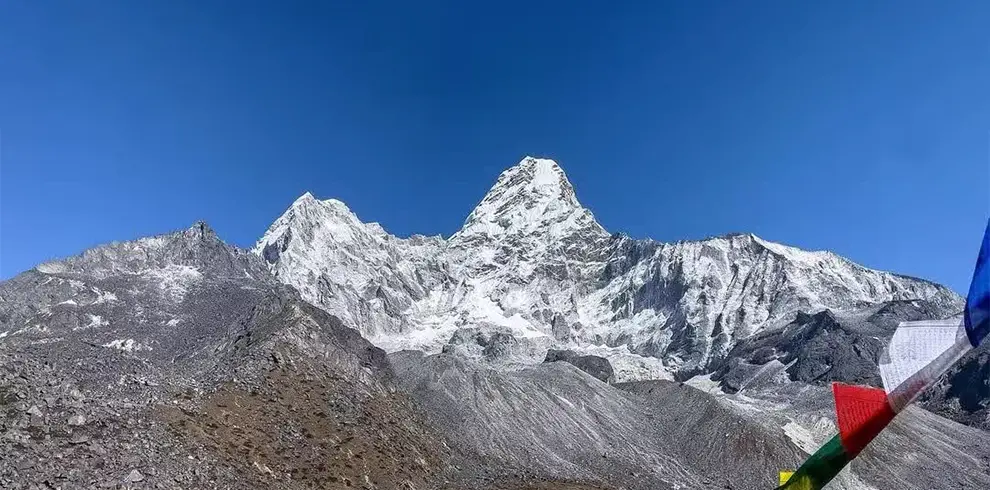
Amadablam Base Camp Trek 9 Days
Embark on an extraordinary 8-day journey through the Khumbu region of Nepal with the Amadablam Base Camp trek. This exclusive adventure promises an experience like no other as you explore the mesmerizing landscapes and witness the grandeur of Mount E...


- Trekking In Nepal
- Everest Base camp Trek Packages
Everest Base Camp Trek
Everest Base camp Trek Packages , Mount Everest Trekking
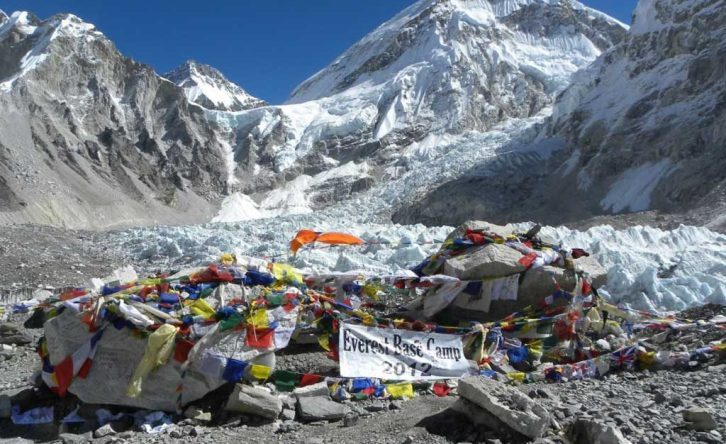
Group Discount Price
Number of Travellers
- Trip Itinerary
Cost Include/ Exclude
More information, cost & date.
Everest Base Camp Trek is the exciting exploration to the highest peak in the world, Mt. Everest [8,848 meters/ 29,032 feet], is one of the most renowned trekking adventures in the world.
This enriching Everest base camp trekking experience outshines other high-altitude adventures thanks to its unparalleled natural beauty, iconic landmarks, rich Himalayan bio-diversity, culturally enthralling Sherpa settlements, and breathtaking views of the several peaks that take top spots in the 8,000-meter class.
In this exciting journey, you will traverse across a diverse landscape, from forested trails decorated with dotted rhododendron flowers to peaceful meadows and alpine moraines. You will also get the opportunity to relish the rich bio-diversity of the Sagarmtha National Park, which has been conserving the rare species of flora and fauna of the region since 1976.
However, the best of this Himalayan exploration remains the beautiful and charming high-altitude settlements of the Sherpa ethnic group, the Himalayan natives who paved the way for the development of the mountaineering industry. In this Mount Everest Base Camp Trek, you will have a first-hand experience of the Sherpa people’s unique culture, traditions, and heart-warming hospitality.
Our 15 days EBC Trek start from Lukla, The Classic Everest Base Camp trek begins in Jiri, although many people opt to start from Lukla due to the convenience of a 40-minute flight from Kathmandu. However, it’s important to note that during the peak season, Lukla flights divert to Manthali Airport in Ramechhap.
Upon landing in Lukla, your journey officially commences as you join the main trekking route towards Everest Base Camp. The initial leg takes you to Phakding, traversing through picturesque settlements in the region. Namche Bazaar, a bustling trade market, becomes a significant stop where you’ll spend two nights for acclimatization. The following day involves trekking to Tengboche, home to the largest Buddhist monastery in the region.
Continuing your ascent, the next day’s trek leads to Dingboche, a captivating settlement nestled at an altitude of 4200 meters. To ensure a successful trek, an additional acclimatization day is incorporated here. After Dingboche, the journey progresses with an ascent to Lobuche, followed by a trek to Everest Base Camp and a return to Gorak Shep.
Post the base camp experience, you’ll ascend to Kala Patthar to witness the awe-inspiring sunrise over Mount Everest. The trek then retraces its path back to Pheriche, Namche, and finally Lukla, concluding your Everest Base Camp adventure in Nepal.
Everest Base Camp Trek Route Choices
There are generally two trekking routes for the Mount Everest Base Camp Trek: North Base Camp [5,150 meters/ 16,896 feet] on the Chinese side and South Base Camp [5,364 meters/ 17,598 feet] on the Nepali side.
The trekking to Everest Base Camp on the Nepal side is more popular than the Chinese side. Due to the complex permit system on the Chinese side, most trekkers prefer to do the trek to the southern base camp.
The incredible natural allurements, wide Himalayan vistas, diverse landscape in the trekking journey, Himalayan flora & fauna, and the culturally enthralling experience on the Nepali side attract thousands of trekkers every year.
This exciting highest base camp journey in the world starts from Lukla [2,827 meters/ 9,274 feet] and passes through the high altitude settlements of Everest region like Namche Bazaar , Tengboche , Lobuhce , Gorakshep and before the final hike to Everest Base Camp.
Adventure Great Himalaya Company also offers an immersive experience classical route of the Everest Base Camp Trek. The traditional trekking route to the base camp used to start from Jiri ; however, for a more convenient approach, the start point in an alternative trekking route has been moved to Phaplu .
You will be able to drive directly to Phaplu from Kathmandu and follow the gradually ascending route to join the mainstream route at Lukla.
Everest Base Camp Trek and Return Helicopter
If you are looking for a more comfortable trekking experience in this exhilarating trekking to Everest Base Camp, Adventure Great Himalaya also offers the 11 Day Everest Base Camp Trek Return by Helicopter .
This exciting trekking package follows the same mainstream trekking route of the general Mount Everest Base Camp Trek. Starting your trek after the Kathmandu to Lukla flight, you will trek through charming Himalayan settlements of Phakding, Namche, Khumjung, Tengboche, Dingboche, Lobuche, and Gorakshep before finally reaching the base camp.
Then, after hiking to Kalapatthar, you will take a helicopter flight back to Kathmandu, enjoying the incredible views of the Himalayan vistas. This exciting helicopter return package for Mount Everest Base Camp Trek is ideal for trekkers who are doing the exploration on a time limit.
As the helicopter return cuts off the return trek to Lukla for the flight back to Kathmandu, the difficulty level also significantly decreases. So, even trekkers who are concerned about the difficulty factors can take part in this exploration without the need to worry about the physical demand in the long haul.
The Everest Base Camp Tours and Alternate Packages
Mount Everest Base Camp Trek is, without a doubt, one of the most remarkable and popular Himalayan trekking adventures. What makes the experience even more enticing is that there are several ways to trek to this popular base camp, which also includes the explorations of the popular highlights in the surrounding region.
Adventure Great Himalaya 15 Day Everest Base Camp Trek package is a standard package with two acclimatization days along the trekking trail. If you are looking for a short variant of the exploration, you can go for the 10 Day Everest Base Camp Trek .
The short packages are designed for trekkers who have limited time on hand. in the 10-day package, the trekkers have to complete the adventure without acclimatization day.
For a more extensive experience in this mainstream trekking region of Nepal, we also offer trekking to Everest Base Camp, including the adventure to the side highlights of the region like:
- Everest Three High Passes Trek (21 Days)
- Everest Base Camp and Gokyo Lake Trek (18 Days)
We also customize the single highlight exploration packages like 14 Day Gokyo Lake Trekking or just a simple 7 Day Everest View Trek that doesn’t take you to the high elevation points of the region.
However, the trekking packages are not all that we offer; we also oversee the climbing peak adventures in the region that you can add to your trekking adventure. Some of our most popular trekking peak expeditions in the 6,000-meter class inside the Everest region are:
- EBC Trek with Lobuche Peak Climbing
- Island Peak Climbing
- Mera Peak Climbing
Everest Base Camp Trek Cost
The general duration of the Everest Base Camp Trek is 14 to 18 days , and the cost of the trekking packages varies depending on the itinerary plans. That’s why the cost of the trekking packages varies from US$ 1,250 to US$ 2,500 for standard packages.
If you want to add more luxurious amenities to your exploration, like our Everest Base Camp Luxury Lodge Trek , the cost can climb even higher.
The Standard 15 Days Everest base camp Trek Cost USD 1400 per person, This is the best value experience trekking package in the market at a reasonable cost. Your trekking package cost will include the cost for all accommodation & food, permits, guides and porters, domestic flights, land transportation, government expenses, and our official service charge.
We also offers a discounted rate for group bookings for your hike to Everest Base Camp. You can book for the standard EBC Trek at just US$ 1400 if your group has 4 to 8 people. If the group is even larger, with approx. 9 to 12 people, the package will cost only US$ 1,350 .
**Note: If you want to explore the Everest region on your own, the package cost for the solo trekkers is US$ 1,500 . However, the solo trekking package will not include the cost for porters**
Highlight Of Everest Base Camp Trek
- Hiking up to the EBC Base Camp of the highest mountain in the world.
- Spectacular views of the mountain ranges such as Mt. Everest, Mt. Ama Dablam, Mt. Thamserku, Mt. Makalu, Mt. Lhotse, and many more.
- Exploring the Sagarmatha National Park, UNESCO world heritage site.
- Walking to Khumbu ice fall and glacier along the way to the Everest Base Camp.
- Exploring the oldest monastery of the Everest region, Tengboche Monastery.
- Exploring Sherpa communities.
- Climb to Kala Patthar (5545 m) Overview of Mount Everest Sunrise and Sunset View
EBC Trekking Difficulties
Trekking to Everest Base camp straight forward with good and wide path, Walking 6, 7 hour each day from 7 am after breakfast to till 3, 4 pm. Anyone who is reasonably fit will be able to complete this trek. There are no specific exercises for the trek, but some cardiovascular training is always recommended. You should start Cycling, hiking, swimming, climbing or hill walking at least two weeks before the trek.
The trek has a complete itinerary of 15 days and therefore fit for those who have a long holiday planned and want to trek a leisurely pace. The long trekking days also ensure that all the trekkers are properly acclimatized and relaxed even with a long day of trekking.
The risk of altitude sickness is always present. If you are taking some medication, you should consult your doctor for advice for trekking in such high altitude regions. A right level of fitness will make the trek pleasant and comfortable.
Here are More information about EBC Trek difficult
Best Time to EBC Trek
Arguably, the best time to Everest base camp Trek is the autumn season of September to November. The trek of Everest base camp from late September to November has many perks.
Some of the major highlights of the trek include the spectacular view of the mountains, moderate trekking temperatures, and unobstructed views of the mountains. There might be some instances of unfavorable conditions which is quite common. The weather around the Everest Base Camp is quite unpredictable in comparison.
The amount of precipitation is quite less in lower elevations and snowfall is less as you move higher along the trail. You should always check for weather conditions before you start the trek and prepare accordingly.
Besides this, the small window from March to May is also a great time to trek the Everest region. The trails look beautiful, and the rhododendron flowers bloom well over the hills painting the hills red and pink. The Everest region has an excellent climate and weather, and the moderate temperatures make for a great trekking experience.
Lukla Flight Information
For your Mount Everest Base Camp Trek, during the peak season months like October , November , March , and April , the flight to Lukla from Kathmandu will divert from Manthali Airport instead of Tribhuvan International Airport (TIA).
Manthali Airport is at a short driving distance of 4 hours from Kathmandu, so you will be able to swiftly transfer to Ramechhap without any delays. If you want to join the trekking trails on the same day as this scenic flight, you will have to get at 2:00 A.M. for the drive to Manthali.
This way, it won’t affect your itinerary plans in the trekking route, as after landing at Lukla, you will have to trek to Phakding for an overnight stay. But, there is also another efficient way to take the flight: you can drive to Manthali and stay there for the night, then take the morning flight to Lukla.
Why Adventure Great Himalaya For EBC Trek
Adventure Great Himalaya Company has been leading the Nepali trekking market as an expert for over a decade and houses expertise with over two decades of experience. In terms of quality of services and amenities, comfort, safety, and best value experience, you will be a leap ahead of other trekkers.
We are also an authentic Nepal-based trekking company and have been collaborating with the local experts of the region to add more enrich your overall experience. If you are planning to book the trek from foreign trekking companies , they don’t have the permit to organize the trip on their own and have to book services with a government-licensed company in Nepal.
So, you will only be paying the extra intermediaries fees for the same packages. Booking our services will ensure that you won’t need to pay any extra commission to a third party and will be able to enjoy an incredible excursion at the best-value cost.
Benefits of Hiring Services of Adventure Great Himalaya
- Trek packages designed to emphasize the utmost safety and comfort of the trekkers
- Best value price in the market
- Expert guides, government-licensed and with relevant number of experience
- Free airport pick-up and drop-off facilities
- Arrangement of sleeping bag and down jacket if necessary
- Free porter with 15kg weight limit per trekker
- Small group sizes allocation for a more immersive experience
- Customizable itinerary plans befitting your needs
- Transparent pricing and an extensive set of inclusions
- 24/7 available customer service and flexibility in itinerary adjustments
- Operation at a wide range of destinations
- Post trekking support
- Authentic testimonials and positive reviews
Everest Base camp Trek Itinerary
Arrival in kathmandu (1,396 m.).
Upon your arrival, proceed to the outside of airport terminal, our representative will wait for you to take you to the hotel which taking around 20 minutes. Please look for your name which will be shown on signage. Overnight at hotel in Kathmandu.
Accommodation: 3 Star Hotel ( Kailash Kuttee or Similar) Meals : Dinner
Fly to Lukla and trek to Phakding (2,640 m., 3-hour)
Today we will take an amazing flight from Kathmandu to Lukla (2,827 m.) in the morning parallel to the huge Himalayan adjacent to Nepal and China. After 40 minutes, we will be landed in a runway and our caretaker will help us carry our belongings. Then we will walk down to the Dudh Kosi River, where we connect with the main path to Namche Bazaar. After moving all the way through the small area of Ghat (2550m), we will soon arrive at our tea house at Phakding.
Note: The peak season ( October / November and March , April) the lukla Flight will be divert to Manthali Airport Ramechhap )
Trek Duration : 3 Hour, Trek Distance: 8.2 kilometers Meals : Breakfast, Lunch, dinner , Accommodation: Twin sharing lodge / tea house
Trekking to Namche Bazaar (3,440 m., 6-hour trek)
Today, we start from Phakding and walk across the river to trek all the way through the area of rhododendron, blue pine forest and more which is really superb experience especially during the spring.
We go cross ways to the Dudh Kosi at Benkar and take pleasure from the scenes of snow-topped mountains Kusum Kanguru (6,369 m.), Thamserku (6,623 m.) and so on.
The way then becomes fairly difficult and includes a perpendicular climb to Namche Bazaar. You will now walk through upstream on flat land, on the bank, to the fusion point of the Dudh Koshi and Bhote Koshi rivers.
After crossing one of the suspension bridges above the river, we will ascend to Namche Bazaar. We get the most amazing vivid opportunities of gigantic peaks -Everest, Lhotse, Nuptse, Ama Dablam, Taweche is visible. Overnight at hotel in Namche Bazaar.
Trek Duration : 6 Hour, Trek Distance: 7 . 4 kilometers Meals : Breakfast, Lunch, dinner , Accommodation: Twin sharing lodge / tea house
Excrution Day at Namche Bazaar.
Today we will explore Namche Bazaar appropriate adaptation with the environment at the height. Namche is a prosperous village situated in a large protected hollow. And the amazing scene visible from here includes superb panorama of the Khumbu peaks and great views of Everest. Then, after having our breakfast, we also walk towards Thami (3,810 m.) over the amazing Bhote Khola River Valley or visit the national park headquarters to look at the strange displays of Sherpa culture and way of life. Over night at Lodge
Free Day : 4, 5 Hour, Trek Distance: 2, 3 Kilometers Meals : Breakfast, Lunch, dinner , Accommodation: Twin sharing lodge / tea house
Trek to Tengboche (3,800 m., 5-hour trek)
We will today descend down through the Khumjung community and move to the major path to Everest at Shanasa. We will walk further to Trashinga and then move down to go across the Dudh Koshi at Phunkitenga (3,250 m.).
In the daytime, it is a wide and vertical ascend through fir, black juniper, pine, rhododendron forest and reach Tengboche Monastery. Here we can see gigantic peaks AmaDablam, Kantega, Mount Everest etc. We stay at Lodge in Tengboche tonight.
Trek Duration : 5 Hour, Trek Distance: 5.9 kilometers Meals : Breakfast, Lunch, dinner , Accommodation: Twin sharing lodge / tea house
Trekking to Dingboche (4,410 m., 5-hour trek)
We will walk slightly down through the forest of birch, juniper, fir and rhododendron at Debuche. Here we only steady way up but due to the elevation we have to speed ourselves increasingly all the way through the day.
After passing the Imja Khola, the trail heads to Pangboche where we can see the beautiful mountain of Ama Dablam. Then our route is to climb all the way through unwrapped alpine hillsides prior to another crossing of the Imja Khola and reach Dingboche. Overnight Lodge .
Trek Duration : 6 Hour, Trek Distance: 9.1 kilometers Meals : Breakfast, Lunch, dinner , Accommodation: Twin sharing lodge / tea house
Acclimation Day in Dingboche.
Today you will have free for acclimation day.This day is rest day in Dingboche area. You can walk to explore Dingboche monastery and Climb to Nangkhartshang Peak (5083) while you are free for whole day. It is necessary to adjust with body and temperature in high elevation.
You can rest all the day with full of enjoyment of the panoramic views of Mt. Everest, Amadablam, Lhotse, Tawache, Nuptse, Kwangde etc. Stay overnight in Lodge.
Free Day – Meals : Breakfast, Lunch, dinner , Accommodation: Twin sharing lodge / tea house
Trekking to Lobuche (4,920 m., 5-hour trek).
Today, we go away Pheriche and the trail goes up to the drain of the Khumbu. Then after an hour, the path mounts up to the Khumbu Glacier. Almost half of the climb to the moraine is Dughla. Moving ahead from Dughla the trail keeps on ascending steeply to the crest of the moraine. The path now moves on flat level on the west part of the moraine prior to arriving at Lobuche. Overnight Lodge
Trek Duration : 6 Hour, Trek Distance: 6.6 kilometers Meals : Breakfast, Lunch, dinner , Accommodation: Twin sharing lodge / tea house
Trek to EBC (5356m) and back to Goraksheph 8-hour
Today is the day you have been waiting for the whole trek. A majestic view of sunrise will wake you up in Lobuche. The segment to Gorak Shep will be a short one and you can be there in no time from here. Once in Gorak Shep, you can lessen your bags and continue to the Base Camp.
We will arrive back here as it is the closest settlement/teahouses to the Everest Base Camp itself. You have multiple snow- covered as well as glacial sections to complete before the base camp.
The Everest Base camp will be marked by a large stone with some dozens of yellow camps to be seen in the distance. You can enjoy a great time here and take some pictures for the memory.
The views of amazing peaks so close to you will also make this trek worth it. On your return, you can enjoy some scenic views of the valley below and the Khumbu Glacier. Rest after a long day back in Gorak Shep. Overnight at Lodge in Goraksheph.
Trek Duration : 8, 9 Hour, Trek Distance: 11.5 kilometers Meals : Breakfast, Lunch, dinner , Accommodation: Twin sharing lodge / tea house
Hike to Kalapathar (5,545 m.) & back to Pheriche (4,240 m. 5-hour trek).
We will wake up early today to catch a glimpse of the sunrise view from Kalapather peak. It is one of the most popular natural viewpoints of the region to view Everest. Within a couple of hours of relaxed hiking from Gorak Shep, you will arrive at Kalapather.
The view of the Everest Massif alongside the Lhotse and Nuptse peaks unobstructed is mesmerizing. We will return to Gorak Shep for breakfast after some time in Kalapather. From Gorak Shep, it will take about 4 hours of leisure walk to reach Pheriche. This small village is known to provide a peek at the Sherpa Lifestyle in Khumbu. Overnight at a Lodge in Pheriche.
Trek Duration : 6 Hour, Trek Distance: 9.5 kilometers Meals : Breakfast, Lunch, dinner , Accommodation: Twin sharing lodge / tea house
Trek Back to Namche Bazzar (3,450 m., 6-hour trek).
You will start the return trek to Namche Bazar from Pheriche today. The trail adds a new perspective to the EBC trek and you can enjoy a relaxed walk. Stop and chat with the locals and you will reach Namche Bazar in no time.
You can head out and celebrate reaching the Everest Base Camp here as Namche has tons of cafes, pubs, restaurants, and hotels serving trekkers. Overnight at a hotel in Namche.
Trek Duration : 7 Hour, Trek Distance: 15 kilometers Meals : Breakfast, Lunch, dinner , Accommodation: Twin sharing lodge / tea house
Trek Back to Lukla (2,840 m., 6-hour trek).
The last day of the Everest Base Camp Tour offers you an opportunity to explore more of the local lifestyle in the Nepalese hills. In the small villages and settlements try the Himalayan delicacies and spend some time with the Sherpa community. Beside the Dudh Koshi River, you can have this magical view of the mountains of Khumbu one last time while trekking. Rest for the day after arriving at Lukla. Overnight at a Lodge in Lukla.
Trek Duration : 6 Hour, Trek Distance: 8.1 kilometers Meals : Breakfast, Lunch, dinner , Accommodation: Twin sharing lodge / tea house

Flight back to Ramechhap - Drive to Kathmandu
The flights to Ramechhap from Lukla are most likely to take place in the morning so be prepared. Once the plane arrives you can board it for another scenic flight back to Kathmandu.
After landing we will drive back to Kathmandu, It takes about 4 hour, Overnight at a hotel in Kathmandu.
Meals : Breakfast Accommodation: 3 Star Hotel ( Kailash Kuttee or Similar)
Trekking in the Himalayas can come with some challenges and it is wise to keep some extra days in your itinerary. We have this day separated to handle any complications like flight cancellation, delay, bad weather, or similar factors during the Everest Base Camp Trek.
If everything goes according to plan, you have a brief Kathmandu sightseeing tour for you. Visit the major attractions, monuments, sites, and heritage sites that this lively city has to offer for travelers.
Meals : Breakfast, Accommodation: 3 Star Hotel ( Kailash Kuttee or Similar)
Departure from Nepal
Our team will take you to the TIA (airport) sometime before your departure flight. With some amazing stories, memories, experiences, and adventures from the Nepalese Himalayas and the Everest Base Camp trek you can return to your home with delight. Stay connected with team AGH for your next great journey in Nepal.
Meals : Breakfast, Accommodation: No
Transportation: – Airport transfer
Include/Exclude
Service included.
- All Airport Transfer (Airport – Hotel – Airport)
- 3 Nights twin / Triple sharing at 3 star Hotel in Kathmandu with Breakfast
- Meals on the trek ( Breakfast, Lunch, Dinner)
- Hot Drinks – Tea / Coffee with meals
- Accommodation in Trekking – 11 Night twin sharing Lodge to Lodge Accommodation During the trekking,
- All Necessary Trekking Permit ( Sagarmatha national park,Khumbu Local Tax and TIMS Permit)
- Kathmandu – Lukla / Kathmandu Flight ticket Limit weight is 10 kg and hand- Cary 5 Kg
- Trekking Guide: An experienced, helpful, friendly English speaking trekking guide
- Trekking Porter – Carry your Luggage (One Porter for 2 members) No Porter for Solo Trekkers
- Guide, Porter, Insurance
- Trekking Equipment: Sleeping bag, Duffel Bag a.- Refundable after the trek.
- Oxe -Meter- To Check your oxygen saturation and heart rating
- Free Everest Trekking map.
- Souvenir Company T-Shirt, Hat
- All Government Taxes and Service charge.
Service excluded
- International Air fair and Nepal entry visa fee
- Travel insurance and emergency rescue evacuation.
- All bar bills, bottle of drinks, extra drink, tea, coffee etc
- Wi- Fi, Hot Shower
- Electronic device re-charge such as Mobile, Camera etc.
Lukla Flight & Weather
Lukla rests perfectly on a hilltop surrounded by mountains on all three sides. There are no direct roadways to reach Lukla from Kathmandu, only flight options. Plus, its airport is known as the world’s most thrilling one due to the short runway.And There are mainly 3 airlines are having regular flights to Lukla from Kathmandu.
Currently, flights are the only direct transportation available from Kathmandu to Lukla. So, the weather has a significant impact on its flight schedule. During dramatic climatic conditions, the chances of flight delay and cancellation are high.
Afraid of flight cancellation? Worry not, you can take helicopters from Kathmandu to Lukla / or return Kathmandu. The helicopter cost would be $350-$500 p er person for one way flight.
Note: If the weather is worst and no visibility, helicopters also might not make flights.
So, the flights are only scheduled in the mornings because the weather is evident in the mountains at that time. A tailwind slowly builds up by afternoon, making it impossible to fly and navigate the landing.
Also, the visibility and seasonality add up to it. During monsoon, the rain clouds come into play with thunderstorms and wind, while in winter, the fog impacts the flight creating high chances of flight cancellations and delays.
Traveling during bad weather conditions is the worst scenario possible, so always read the weather forecast or travel during peak seasons. Weight restrictions: Flying to Lukla, the weight limit is 15 kg per person , You can carry maximum 10Kg of luggage and maximum 5kg of hand-carry. If you want take More than weight limit, it will cost you US$ 1 for extra Kilograms .
EBC Trek Altitude Sickness & prevention
Typically, Trek to Everest takes you above 5000m elevation. So, altitude-related sickness is the most common problem you face during this journey.
Most travelers think AMS occurs when you travel above 3500 m, and this trip begins from 2800 m altitude. So, the chances of altitude sickness are high during Everest Base Camp Tour.
Headache, vomiting, nausea, dizziness, shortness of breath are some of the usual signs of altitude-related sickness. If you start to detect any of the symptoms, inform your guide and follow their instructions.
When suffering from AMS, do not continue the trek; instead, stay in the same destination or head to lower areas.
Trekking to Everest Base Camp is not an easy journey, but with some tips, you can make it a bit easier:
- Do not consume alcohol or smoke cigarettes
- Avoid eating meats in this trek as they are not fresh and hygienic.
- Keep yourself hydrated by drinking 3 to 4 liters of water each day.
- Walk slow and steady while covering 10 to 15 km each day.
Required Trekking Permit
Without trekking permits, you cannot complete your Everest Base Camp Tour journey. So, for this trip, you are required to carry two permits: Sagarmatha National Park Entry Permit and Khumbu Rural Municipality Entrance Permit.
Khumbu Rural Municipality Entrance Permit costs NRP 2000; $20 (for all visitors). Likewise, Sagarmatha National Park Entry Permit costs NRP 3000; $30 (for Foreigner) and NRP 1500; $15 (for SAARC).
Nepal EBC Trek Distance
Everest Base Camp Trek, one of the iconic treks in the world, is about 130 km long in total. That means while you trek toward Everest Base Camp, you will cover 65 km. And 65 km more while returning from Everest Base Camp. You must cover a 130 km distance to complete it, starting and ending at Lukla.
The Everest Base Camp Trek distance is easy, moderate, or difficult. It depends on your experience level and preparation. If you have been on similar treks in the Himalayas, the trek’s distance is okay.
However, it can be a bit demanding and massive for beginners. You have to cover a distance of 15 km per day on average. The trail is rough, rocky, steep, slippery, and sometimes descends. The conditions might slow you down. Otherwise, 15 km a day is relatively easy. You’ll have around 6-10 hours daily to cover that distance. Come well-prepared to cover an average of 15 km per day. And you will have a walk of life.
Nepal EBC Trekking Travel Insurance
Travel Insurance is mandatory if you want to begin your Everest Base Camp Trek Nepal. It is because no one can predict what mishaps can happen in the mountains, so having insurance covers these issues.
While choosing a company, make sure their plan covers all medical and travel problems like altitude sickness, emergency rescue, sprained ankle, and more. The insurance plan should be able to give you facilities like helicopter rescue, clinical attention, air ambulance, and so on.
Most importantly, many insurance companies do not cover treks above 4000 m, so make sure your cover trips above 5000 m altitude. With travel insurance, you can complete your expedition with no worries.
Trekking Guide for EBC Trek
Trekking solo is possible for Everest Base Camp Trek, but we recommend not to because the routes are mentally and physically challenging. So, if you dislike traveling in groups, you can hire experienced guides for extra comfort and a stress-free trek.
Having a guide will not only help you with navigation, but they will also take care of your security and safety. They will be your closest companion who helps you connect with local culture and communicate with the people.
Trekking Porter – For Carry Your Luggage
Having a porter lessens your baggage weight, as they carry all your heavy belongings allowing you to enjoy the trek without feeling fatigued. They are also the locals of these areas, so they know many shortcuts. Porters are less expensive in comparison with licensed guides and a great companion with basic English speaking skills.
How Much Tip for Guide, Porter to EBC Trek
Tipping is a lovely gesture to service providers around the world. And it is no new in Nepal’s trekking trails. After loving the service of their guides and porters, trekkers want to offer some tips to them. Tipping is not compulsory, but it can surely make your porter and guide’s day. It is all your choice.
As it is optional, there is no exact number for tipping. You can give as much as you like. Still, if we have to help with how much to offer, we would suggest you a suggestion. If your trek is ten days long, you can give them around USD 10 to 15 per day as a tip. So you can use this rate to tip your guide or porter. That is a standard tip amount. If you can give more or less, that is no problem.
There is no need to tip your team every day. You can just complete the trip and pay them at last. Make sure the given amount goes into the hands of the right people. You can use an envelope to give a gratuity.
Almost 95% of tea houses and lodges have a hot shower facility during the EBC trek. In lower areas like Namche, Phakding, you can quickly get a hot bucket or tap shower at a low price. However, the hot showers are expensive as you ascend above to Dingboche, Gorak Shep, Tengboche, etc. Getting running water is a challenge in the upper region, so bucket water is better.
How much Money Carry for EBC Trek?
Even though our package covers most of your costs like meals during the trek, accommodation, Guide, Porter, Lukla flight etc., it doesn’t cover your personal bills. So, you need to carry extra cash to pay for your beverages, restaurants, snacks, souvenirs, hot showers, and more.
Each day you might spend about $15 to $20, depending on your spending habits. So, carry the equivalent money for payment as the shops in the mountains do not accept visa cards or e-payment.
Toiletry and Room
Basically, Everest Base Camp Trek is a tea house trip, so all the accommodations provide simple facilities. The rooms are primarily twin-sharing, so you have to share them with other travelers. Each room consists of beds, pillows, and blankets, but they are warm and cozy. As for the toilets, you find attached bathrooms in lower regions, but you only find shared bathrooms as you keep ascending.
EBC Trek Equipment List
For the Everest base camp trek, The following Items are recommended for every trekker , This List is only for Guide. There are numerous option brands and versions of each piece of equipment. EBC Trek Packing list
EBC Trek Booking & Cancellation
Before preparing for your treks, you should carefully read the booking terms and conditions. If you wish to book your trip with us you should send a completed booking form and a scan of your passport along with a 20% amount of the trip.when you pay deposit then your trip is confirmed.
The trip deposit can pay by online, or pay directly through the bank, they impose a service charge. Please note that the initial booking deposit is not refundable if you cancel 45 days prior to departure
The remaining balance, you need to pay after arriving in Nepal. It is to be paid in USD or Nepalese rupees in cash before your departure. If you pay via debit or credit card, an additional fee of 13% will be charged to cover the tax and vat.
Read more for d etails term and condition
Note: The below Price and Travel date is for the Group Join Basis. If you take private trip all travel dates are guaranteed. Private Trip
How High is Everest Base Camp Trek?
Everest Base Camp lies at the height of 5364 m above sea level. You begin the journey from Lukla at 2860 m altitude and reach the base, then return down.
How Hard Everest Base camp Trek?
The trek has a moderate level of difficulty that requires some determination and mental stability. Each day walking 5 to 6 hours in the off-beat steep terrains is harsh for beginners. Get More information
When are the best months for Everest Base Camp Trek?
Generally, the trek is suitable throughout the year, but many prefer to visit during March, April, May, September, October, and November.
Is it necessary to have previous trekking experience?
No, it is not mandatory as we have many first-timers in our group, but having prior experience makes the trek easier.
Is the trek fit for everyone?
The trek is manageable by any trekker, whether they are beginners or experienced, as long as they are physically fit. There is no age limit inflicted for the Everest Base Camp trek.
Is this Himalayan trek safe for solo female travelers?
Yes, it is safe as our main priority is the welfare of our guests (both male and female). Our guides are always mindful of your whereabouts during the trek. In addition, we have a long, strong relationship with the lodges we visit, so they are reliable and safe as well.
Do I need to do Physical exercises for the trek?
It is best recommended to have a fit body, so do light exercise for this trek. You can go cycling, swimming, long-hour walks, running, etc.
What is the standard size of the trekking group?
We usually make small groups of 6 to 10 people as it is easier to travel and maintain continual contact. We also organize Private Treks for Solo , Couples and family
What is your payment method for the remaining deposit? Do you take US dollars or credit cash after I arrive in Kathmandu?
We accept all major currencies, allowing you to settle the remaining balance in cash. While online payments are also an option, please note that there is a 4% surcharge on top of the total cost, as per the regulations of Nepal’s banking system.
How much Do i Need extra csh For EBC Trek?
Yes, we recommend you to carry around $300 to $400 for extra expenses. Our packages do not cover your bar bills, snacks, Wifi, charging costs at tea houses, and other fees.
Can I use the Credit card on the trekking routes?
Generally, the use of credit cards is still limited in Nepal, so there is no ATM after Namche. Thus, it is better to carry enough cash for the trek.
Is insurance compulsory? If yes, where can I acquire it?
Yes, insurance is a must for this trek, and acquiring them is your responsibility.
What should I pack for EBC trek?
Bring clothes and equipment depending on the season you choose for travel. You can know more about it from the packing list.
What is the Lukla flight weight limit?
The overall luggage allowance for the flight from Kathmandu to Lukla is 15 kg, 10 kg for your main baggage and an additional 5 kg for your carry-on.
What kind of lodging can we expect on this ebc trek?
The trek primarily involves tea-house lodging, offering basic accommodation. Your stay typically includes a private room with two separate beds and a shared bathroom. For those seeking a more upscale experience, there are options for luxurious lodges with private bathrooms available at an additional cost.
Why Should I travel with Adventure Great Himalaya?
Our company has a highly experienced group of guides for mountains and a great ground staff team for Kathmandu. We not only believe in completing the trek but also care about your safety and entertainment. Our friendly and skilled personnel have years of trekking experience with hospitality and medic training.
Is hiring a guide necessary even if I have previous trekking experience?
Yes, it is mandatory because we have full-time guides that have finished many treks successfully. They will add greatness to your trip and make it unforgettable.
Can your guide speak English?
Yes, all of our guides are fluent in English as they have to deal with people from around the globe. They have a friendly nature and are good at connecting with travelers.
Are all your trekking dates guaranteed to run?
Yes, we guarantee you the trek will run, so be assured while making the deposits. Most of our out dates sales fast during peak season compared to off days.
What are the booking and cancellation policies?
Please read booking, terms & conditions for detailed information as given below link
How much Should i Tip for Guide and Porter?
Taiping For a guide between $10 to $20 per day. So, for a standard EBC trek that takes around 12-14 days, you might consider tipping your guide between $120 to $280 for the entire trek.
For porters, tipping around $100 to $150 per porter
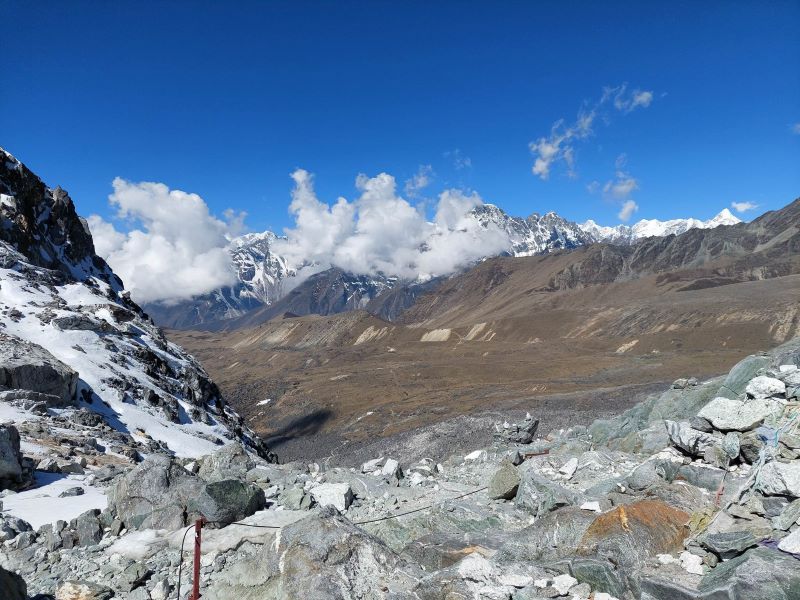
Reviews of Everest Base Camp Trek
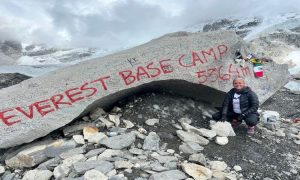
Echo Roburt
This was absolutely the most amazing trip. Adventure Great Himalaya took care of me from the time I landed in Kathmandu until I flew home. They are very knowledgeable about the city and the mountains and treat their guests like family. I’m hoping to go back in a couple of years and do another of their treks. I absolutely recommend using them for your next Himalaya adventure! Love this company!!
Source by Trip adviser

I just came back from an amazing experience i had with Adventure Great Himalaya and their guide Nabin. Everything was perfect, i cant think of anything which wasnt. All the lodges, the food, the service while organizing the whole trip via email , the service provided by nabin during trekking, everything was brilliant. I was trekking on the EBC trek to kala patthar which is summited, it has been an adventure of a lifetime and i can highly recommend adventure great himalaya, which is a highly professional, very fair and honest company. 100% Support!
And if you ever end up in the office of Mr. Karki , try the Masala Tea from next door, its probably the best in Nepal !
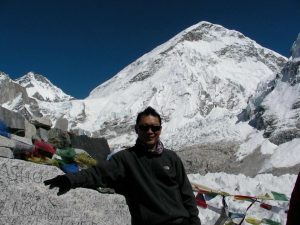
Trekking to Everest Base Camp was my lifetime ambitious. I fulfilled it in October 2011. It is my lifetime experience and my life’s most memorable moment. The moment I reached the Everest base camp and the top of Kala Patthar was really awesome. It was like you were on the top of the world….well, not quite, but the sense of achievement you felt was beyond words. All these would not make possible without Adventure Great Himalaya Trek & Expedition (P) Ltd. Thanks to Mr. Babu (Managing Director of Adventure Great Himalaya).
I traveled alone and joined with a group of 15 trekkers from UK. I felt very comfortable with the group I went with. They were friendly and not to mentioned very funny as well. We turned into friends almost instantly. There were a lot of fun traveling with them and I am glad to have their company on my trip.
Our trek was fantastic. Everything was very well organized. Even when we had bad weather in Lukla and could not fly back to Kathmandu, the tour guide and the Trekking company managed to rearrange everything and we flew back to Kathmandu next morning.
On our trek, breakfast, lunch and dinner were very well served. We chose what we want from the menu. Food was fantastic and cooked in “clean” and “safe” kitchens. Adventure Great Himalaya provides us with great porters and lovely guides. Guides are very knowledgeable and have great experience in the Himalaya region. They were friendly , spoke good English and great singers as well. They always made sure that we got the best rooms in the lodge. Every night after dinner, we were brief by guides on the journey ahead next day. I personally found this very useful and communicative.
In Himalaya region, everywhere you look, there is great view. The astonish view is way beyond words could description. The sheer size of the mountains and valleys is something I have never experienced. Thanks to Adventure Great Himalaya for making my EBC trek a wonderful and memorable experience. If I decide to go back for another adventure in Nepal, I will definitely go with Adventure Great Himalaya. NAMASTE.
Alexaler, Jakarta Indonesia
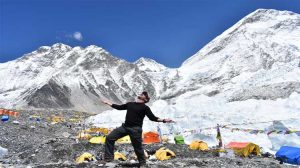
This trip from start to finish was an absolute adventure. I arrived later than I thought I would in Kathmandu and Great adventure Himalaya made it accommodating for me. Well, we started off from Kathmandu and met our Guide Santosh(amazing guide from start to finish) and got to the airport and flew to Lukla. From there the trekking began. My friend and I are fast hikers and made up incredible time. Santosh, our guide, really took amazing care of my friend and I. The price we paid was one of the best you’ll find out there. If your thinking about doing this without a guide, that would be stupid. 2 people died on the trail who didn’t have guides while we were there. Plus it was a lot of fun with ours.
This is a trip I will remember for the rest of my life.
Source by Trip Adviser
Adam Hill San Francisco U.S.A
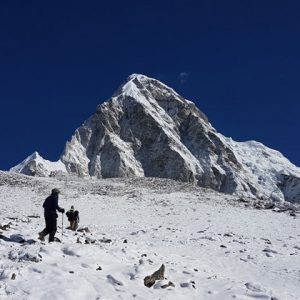
I did the E.B.C trekking with this company in March 2017. This is Very good company for Everest Base camp Trek. The Company professional, helpful and approachable. I booked the trek as a solo female traveler. I felt safe throughout my time with the company. The trek was amazing, a once in a lifetime must do trek. I was provided with a guide and a porter by the company, both of whom were professional and very helpful. The trek its self was medium to hard and tiring of course but worth it! The scenery is just amazing no words can describe it. All the arrangements were made by the company, hotel stays, return flights from KTM to Lulka, all food and drinks during the trek. I hope to book another trek with the company in the future. A dream come true thank Adventure Great Himalaya .
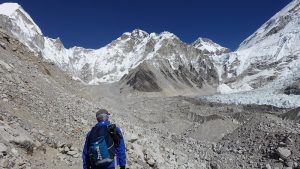
This is my second time engaged Adventure Great Himalaya for my trekking in Nepal, first in ABC and this time is Everest Base Camp Trek.
The company owner, Mr. Babu Karki, is a helpful and kind person, he will answer to all of your enquiry before you depart from your home country. His arrangement of the trip is perfect, immediately after you stepped out from the arrival hall of airport, his staff will be there waiting for you. During the trekking day, he will always keep in touch with the guide to ensure the condition and progress of the guest.
Mr Babu has very high requirement of the guides he employed, the guide that I got for this 15 days, Kirshna, is very professional and experienced. He is very familiar with EBC route, he knows exactly how long to take to reach to next pit stop. He even become the pace maker for us, he adjusted the trekking pace based on my physical condition, this is really helpful and I barely feel any tiredness after the everyday trekking.
Regarding the charges, I did some comparison before I decided to choose Adventure Great Himalaya, the charges is very reasonable. After completed the trip, I will say the charges is very value for money because the service provided by them is equivalent to others big company if not better than them. The guide i got is better than those big company and I am staying at the same lodge with those who engaged big company as their agency.
i will highly recommend anyone who is planning to travel to Nepal to check out with Adventure Great Himalaya, you will never regard of your choice!
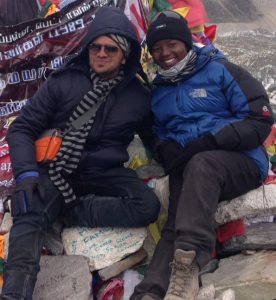
Praneet Dabral
Did the Everest base camp trek with this company. It was an amazing and a life changing experience. Its a little tiring trek but when you reach the base camp you realize all the blood, sweat and tears were worth it. The arrangements were very smooth and efficient. The guide and porter were very helpful and friendly. The flight bookings, hotel bookings and food everything was right on schedule. Hope do do some more treks with this company again. You pass beautiful places like Namche bazaar, Tingboche and Gorakshep on the way. Loved the serene beauty of Tingboche especially the monastery. Would definitely recommend this trip to everyone.
Thane, India
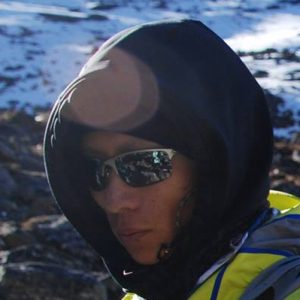
Chang Kah Wane
The services by AGH is always excellent and wonderful! I’ve trek with them on 4 different occasion (3 on EBC, Island Peak and one in Langtang) and without fail, I’ve always have a wonderful experience. Babu, the managing director of AGH and all their staff is always very accommodating and really helpful!
The guides of AGH, particularly Nabin (he guided me on 3 different occasion) and Nanda is excellent, they go above and beyond what is required of them. I have them to thank for guiding me safely throughout the treks. They are to me, a friend and guide.
I will continue again and again to use AGH for all my future trips to Nepal! If you ever needed an adventure operator in Nepal, AGH is the go to agency!
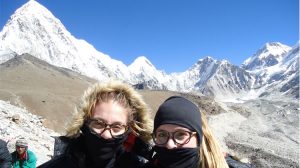
My sister and I decided we wanted to go trekking to Mount Everest Base Camp. Thanks to Adventure Great Himalaya we had a fantastic experience! It was everything we could have asked for and more. The staff and the guides were super professional and knowledgeable. We are so happy we decided to use a local company. Thank you for everything!!!

Kevin Petzold
Im Oktober 2010 lief ich zusammen mit drei Freunden den Everest Base Camp Trek. Unser Guide hiess Nabin. Er war nicht nur Jemand, der uns den Weg gezeigt hat, sondern er hat auch versucht uns so gut wie moeglich die nepalesische Kultur naeherzubringen. Am Ende unseres insgesamt drei Wochen andauernden Aufenthalts in Nepal hatten wir zu ihm dann ein sehr freundschaftliches Verhaeltnis.
Leider bekam ich kurz vor dem Ziel die ersten akuteren Symptome von Hoehenkrankheit, so dass wir ein paar Tage vorher umkehren mussten. Die so gewonnene Zeit verbrachten wir in Kathmandu, wo Nabin uns dann noch ueber mehrere Tage verteilt die Stadt gezeigt hat. Außerdem hat Babu uns noch einen Rafting Ausflug organisiert.
Alles in Allem muss ich sagen, dass uns Babu und sein Team vom Moment unserer Ankunft in Kathmandu bis zu unserer Abreise einen hervorragenden Service boten. Beim naechsten Trip nach Nepal, welchen es definitiv geben wird, werde ich mich daher definitiv wieder an Adventure Great Himalaya wenden.
Name: Kevin Petzold Country: Germany Email: [email protected]

Trekking to Everest Base Camp was my lifetime ambitious. I fulfilled it in October 2011. It is my lifetime experience and my life’s most memorable moment. The moment I reached the Everest base camp and the top of Kala Patthar was really awesome. It was like you were on the top of the world….well, not quite, but the sense of achievement you felt was beyond words. All these would not make possible without Adventure Great Himalaya Trek & Expedition (P) Ltd. Thanks to Mr. Babu (Managing Director of Adventure Great Himalaya)
I travelled alone and joined with a group of 15 trekkers from UK. I felt very comfortable with the group I went with. They were friendly and not to mentioned very funny as well. We turned into friends almost instantly. There were a lot of fun travelling with them and I am glad to have their company on my trip.
Our trek was fantastic. Everything was very well organized. Even when we had bad weather in Lukla and could not fly back to Kathmandu, the tour guide and the Trekking Company managed to rearrange everything and we flew back to Kathmandu next morning.
On our trek, breakfast, lunch and dinner were very well served. We chose what we want from the menu. Food was fantastic and cooked in “clean” and “safe” kitchens. Adventure Great Himalaya provides us with great porters and lovely guides. Guides are very knowledgeable and have great experience in the Himalaya region. They were friendly; spoke good English and great singers as well. They always made sure that we got the best rooms in the lodge. Every night after dinner, we were brief by guides on the journey ahead next day. I personally found this very useful and communicative.
In Himalaya region, everywhere you look, there is great view. The astonish view is way beyond words could descript. The sheer size of the mountains and valleys is something I have never experienced. Thanks to Adventure Great Himalaya for making my EBC trek a wonderful and memorable experience. If I decide to go back for another adventure in Nepal, I will definitely go with Adventure Great Himalaya.

Write a Review
Enquiry form.
Note: Please ensure names must be exactly the same as your passport (for ticketing/security purposes). You could incur extra costs or even miss your flight if the names are not correct.
Interested Program: *
Full Name: *
Email Address: *
Contact Number: *
Afghanistan Albania Algeria Andorra Angola Antigua and Barbuda Argentina Armenia Australia Austria Azerbaijan Bahamas Bahrain Bangladesh Barbados Belarus Belgium Belize Benin Bhutan Bolivia Bosnia and Herzegovina Botswana Brazil Brunei Bulgaria Burkina Faso Burundi Cabo Verde Cambodia Cameroon Canada Central African Republic (CAR) Chad Chile China Colombia Comoros Democratic Republic of the Congo Republic of the Congo Costa Rica Cote d'Ivoire Croatia Cuba Cyprus Czech Republic Denmark Djibouti Dominica Dominican Republic Ecuador Egypt El Salvador Equatorial Guinea Eritrea Estonia Ethiopia Fiji Finland France Gabon Gambia Georgia Germany Ghana Greece Grenada Guatemala Guinea Guinea-Bissau Guyana Haiti Honduras Hungary Iceland India Indonesia Iran Iraq Ireland Israel Italy Jamaica Japan Jordan Kazakhstan Kenya Kiribati Kosovo Kuwait Kyrgyzstan Laos Latvia Lebanon Lesotho Liberia Libya Liechtenstein Lithuania Luxembourg Macedonia Madagascar Malawi Malaysia Maldives Mali Malta Marshall Islands Mauritania Mauritius Mexico Micronesia Moldova Monaco Mongolia Montenegro Morocco Mozambique Myanmar (Burma) Namibia Nauru Nepal Netherlands New Zealand Nicaragua Niger Nigeria North Korea Norway Oman Pakistan Palau Palestine Panama Papua New Guinea Paraguay Peru Philippines Poland Portugal Qatar Romania Russia Rwanda Saint Kitts and Nevis Saint Lucia Saint Vincent and the Grenadines Samoa San Marino Sao Tome and Principe Saudi Arabia Senegal Serbia Seychelles Sierra Leone Singapore Slovakia Slovenia Solomon Islands Somalia South Africa South Korea South Sudan Spain Sri Lanka Sudan Suriname Swaziland Sweden Switzerland Syria Taiwan Tajikistan Tanzania Thailand Timor-Leste Togo Tonga Trinidad and Tobago Tunisia Turkey Turkmenistan Tuvalu Uganda Ukraine United Arab Emirates (UAE) United Kingdom (UK) United States of America (USA) Uruguay Uzbekistan Vanuatu Vatican City (Holy See) Venezuela Vietnam Yemen Zambia Zimbabwe
Number of People: *
You May Like This
Everest three high passes trek, everest base camp luxury lodge trek, short everest base camp trek – 10 days, gokyo lake trekking, share this trip, customer's reviews.

Adventure Great Himalaya Pvt. Ltd. (Private day tours)
Why booking with us ?
- Fully Locally Owned Company
- Quality Of Service and Competitive price
- Highly Professional Staff
- Flexible and customization trip itinerary
- 100% Customer satisfaction
24 hour customer service

Everest Base Camp Trek
Everest base camp trek overview.
Who wouldn’t think to pose for a picture with the majestic, enchanted backdrop of the Mighty Everest ? Everyone is incredibly willing to have it! We are all aware that the Everest base camp trek is the most popular choice among adventurers worldwide. Although it seems like a paradise, getting there requires quite a bit of effort.
We are informed that trekkers from every country are prepared to head out on the Everest base camp trek. And while heading into this long journey, every trekker seems to seek proper guidance honestly throughout the journey.
The Everest Base Camp trek is a thrilling adventure, and Mr. Tashi Sherpa, an experienced trekking expert, provides essential tips for a successful journey. He emphasizes that trekkers should begin by prioritizing physical fitness through regular cardiovascular and strength training. And while being fully prepared for the journey, he has mentioned acclimatization is another crucial thing in this high altitude journey. So, plan your itinerary with sufficient rest days to adapt to decreasing oxygen levels. In addition to being physically and mentally prepared, Mr. Tashi also advises trekkers to pack wisely, considering variable weather, and include essentials like layers, waterproof gear, and a well-equipped backpack. Furthermore, he has stressed out these certain points to trekkers who are about to do the Everest base camp trek journey – Trekkers to maintain hydration and a balanced diet for sustained energy. Respect local culture and build positive relationships with the Sherpa community. Ensure proper permits, prioritize safety, check gear thoroughly, and approach the trek with a positive mindset, relishing the challenges and scenic landscapes. By incorporating Mr. Tashi Sherpa’s expert guidance that we mentioned above, trekkers can transform the Everest Base Camp trek journey into a truly exceptional experience. Embrace the challenges with a positive outlook, forge connections with the local community, and savor the breathtaking landscapes. This adventure becomes not just a trek, but a profound exploration of nature and culture.
We know that every trekker stepping up in the Himalayas thinks twice about their safety with a pleasant adventure. So obviously, while doing the Everest base camp trek, trekkers need proper instructions. In recent years, the flow of visitors has increased by a massive amount. So, with the increase in visitors, many tour companies and guides also have increased parallelly. As a result, Most trekkers are confused and doubt if the guiding party is authentic or gives proper guidance.
However, these doubts and issues are only limited to their mind. If they could track down and understand their service information, they would win no matter what. Trekkers deserve the information they seek for.
Since the required information for this trekking journey is not so vast. Every trekker in the present era of the internet appears to be very informed about the services and amenities available along the Everest base camp trek route.
Meanwhile, the main point of the trekkers is to indulge in the Grand natural beauty of this region with proper trust and guidance, support, excitement, pleasure, and a good vibe.
If you’re ready to spend the money, you can usually find the service anywhere. But, true pleasure is only achieved if you trust and connect with the place, people, and location. So considering your dilemma and your wants, we want to let you know that you have come exactly where you belong.
With years of professional and quality service, Mission Himalaya has never failed to impress trekkers whether they be novices or experienced. We connect with everyone, bring out the best, and assist them in every way.
Here, we present you the fully packed 15-day trek package to the Everest Base camp completely devoted to you. So before connecting, let’s start with the introduction and dig deep down into the different features of this glorious Journey.
Introduction
You might be unaware, that the Everest Base Camp trek is the most sought-after trekking destination since the 1950s. Right after the first successful expedition in 1953 by Sir Edmund Hillary and Tenzing Norgay Sherpa, many trekkers stepped up for the grand journey to experience the iconic view of the Mighty Everest. Every year more than 10,000 trekkers around the world visit Nepal to do the Everest Base Camp trek.
The base camp is located at a higher elevation of 5545m, which slightly makes it harder to ascent than other treks in the Himalayas. But, surprisingly it is not as difficult as it sounds.

Instead of trekking, if we talk about conquering the summit of Everest, we have to say that is a daunting task that requires a high level of fitness and trekking experience.
Undoubtedly, many adventurers have the dream of reaching the Everest summit, but due to a lack of climbing experience and oxygen at the higher altitude, lots of adventurers cannot conquer the Everest summit. Hence, there is nothing to worry about. Individuals who have a standard level of fitness, less experience, less money, and can see the great picture unfold before their eyes by joining this great Everest base camp trek journey.
With flexible-length trips available to suit all kinds of trekkers and climbers looking for an exciting challenge and rewarding experience, it’s no surprise that the popularity of the Everest base camp trek is continuing to grow even more.
The popularity of the Everest base camp trek
Now as we all know, the Everest base camp trek is unquestionably the most popular worldwide. But why, you might ask? Why is it so popular? Well, the tallest peak in the world is located there, and obviously, many people want to see it. But, we doubt this is the only thing this trek might be famous for. Apart from that, you get to explore the unique culture of the Sherpa people who have been living there for 500 years .
With the Background of Tibetan Buddhist culture, the Sherpa people have created a legacy through which trekkers will immediately connect with the region and obtain a lasting impression on their whole life.
Buddhist Monasteries, Stupas, Prayer wheels, Prayer flags, Tibetan art, and Monuments are the distinctive heritages that will greatly influence the trekkers traveling to this region. Besides this, there are also other numerous reasons why this region is popular among trekkers.
Therefore to give you clear details, we have uncovered the main highlights of the journey before going on to the following sections to heighten your anticipation for the Everest base camp trek-
Trip Highlights:
- Amazing Mount Everest view from the Grand Base camp and sunrise view from Kala Patthar (The highest Point of the Trek).
- Thrilling flight to Tenzing Hillary Airport.
- Discover the variety of flora and fauna in Sagarmatha National Park, a UNESCO-declared World Heritage site.
- Visit Thyangboche Monastery (1916 A.D), one of the oldest monasteries in the Everest region.
- See the Khumbu Glacier, known as the highest glacier on the earth (4900m).
- Views of Mt. Lhotse, Nuptse, Ama Dablam, Pumori, Kongde-Ri, Thamserku, and Taboche up close in addition to Mount Everest.
- Experience the Sherpa people's wonderful culture and hospitality.
- Acclimatization and Exploration at the Enticing Sherpa town - Namche Bazaar.
- Acute Mountain Sickness(AMS) friendly itinerary.
So, where does the trek to Everest base camp begin?
As the name suggests, the ultimate destination of this trek is the Base of Everest. Mt.Everest, the tallest peak in the world is located in the Solukhumbu district of Nepal. When it comes to the location of the Himalayan region, Mount Everest and 20 other mountains are all located in the Mahalangur Himalayan Range .
There are two base camps on this mountain, one is situated on the southern side and another on the northern side. Markedly for trekking, the most famous base camp is the southern base camp, which is situated in Nepal.
The northern base camp is also available for trekking but it isn’t as famous as the southern camp. And yeah, your journey with us will also follow the route to the southern base camp along with many other trekkers on the way.
Further, if we have to introduce the starting point of the Everest base camp trek then it has to be the Lukla Village. After a thrilling flight from the Capital city, you will immediately arrive at Lukla Airport, which can be called the most unique and dangerous airport in the world. Eventually, our Everest base camp trek adventure will then begin from Lukla and pass through the beautiful villages of the Khumbu region.
When should you do this trek for the best experience?
Many individuals assume that the summer months are the ideal time to do the Everest base camp trek. Yet that is false. Both the height of Everest Base Camp and the route to get there are pretty high. So for that reason, it thus never really feels hot in this region. However, throughout the year, there is a considerable variation in the region’s temperatures, rainfall, and snowfall levels.
With years of experience trekking to Everest base camp and based upon the feedback and fulfillment of the trekkers, our team personally prefers to set out on the trek to the Everest region in March, April, October, and November. These months lie in the two main trekking seasons. These seasons are pre-monsoon season (March, April, May) and post-monsoon season (October, November).
Generally, March month sees fewer people on the trail. This month’s first few days often see cooler weather. As the days go by, the sights will get clearer and the air tends to be crisper than ever before. This is the reason behind starting the Everest Base camp trek this month, but the preparation should be done by packing the essential cold-weather gear.
Subsequently, as soon as April arrives, trekkers start to fill in the guesthouses and lodges on the route. This month is likely to experience more stable weather than March. As trekkers continue on their adventure, the tracks fill up with both humans and animals carrying the backpack.
You will therefore be trekking alongside other like-minded individuals who arrive at this time from different parts of the world. Also, on the base camp, you could see a couple of climbers preparing for their ascent to the Summit of Everest this month.
May is the last month of the spring season. This month initiates the summer season. However, the climate in the initial days of the month will remain to be pleasant and the sky will likely be clear, which offers trekkers an amazing experience. However, as soon as the month’s midway mark approaches, clarity of the scene will decrease after the clouds start to form in the sky. Flight delays may also be brought on by frequent wind gusts and poor visibility. As a result, while trekking in May, trekkers have to exercise some caution.
For further information, you can read our Everest base camp trek in the Spring season blog.
Another fantastic time of year for trekking in the Everest region is in autumn (September to November). Clear skies, a cool, dry climate, and stable weather are all present in this season. The starting month of September could be still affected by the monsoon season. So, it could affect the journey with random rainfall causing delays for you.
We recommend you trek in September if you are flexible enough to extend the Everest base camp trek for some days. However, during September the landscape in the lower section is lovely and vibrant, and the weather is often sunny during the daytime.
After September, comes October, which is typically the busiest month for the Everest base camp trek. We consider October as the best time of all of the 12 months. The reason for this month’s busyness is the pleasant weather and dry weather across the entire path, which makes walking much more convenient than ever before. Thus, it will be a good idea for you to reserve your seats on the journey far in advance.
As soon as time passes by, the season starts to transition from autumn to winter in November. The Crowd starts to decrease making the paths more quiet and open. The temperature starts to slightly decrease whereas the day remains warmer and clearer and nights get a little chillier.
November will continue to be dry, with low levels of humidity and rare occurrences of rainfall. Hence, this month will also give you a wonderful Everest base camp trek experience overall.
So, Lastly, you can choose to trek Everest base camp between these months without doubting or thinking of any risks in terms of weather.
Is the EBC trek as Dangerous as it Sounds?
There are indeed certain difficulties associated with indulging in this high-altitude trek. But surprisingly, we want to tell you that the trek to Everest Base Camp is safer than other treks. This trek has been completed by trekkers with ages ranging from 15 to 70.
We can say with certainty that anyone with a high level of ambition and resilience can complete the Everest base camp trek. Hence, you need a little bit of trekking expertise, if not, hiking experience, to go out on this trek. Having some prior trekking experience will prove extremely helpful to you.
Preparation for Everest base camp trek
Every trekker is expected to set a schedule for their arrival. Trekkers will need to be physically and psychologically prepared within those days before the journey to deal with the probable obstacles that come along with this two-week Everest base camp trek journey.
The right level of physical fitness is crucial for mountain trekking. If they want to have a nice time and a hassle-free trip, trekkers must exercise and be fit. As we talk about the type of exercise, it must include cardiovascular and strength exercises. For Cardiovascular endurance, you can do running, walking, step walking, and aerobic exercises.
Squats, jumping squats, lunges, side lunges, shoulder presses, pull-ups, push-ups, and step-ups are among the exercises you can do for strength. Further, your endurance and leg strength will be important while engaging in the Everest base camp trek as you also have to carry the backpack with gear and items. So for that, we recommend you put the weights on your back and perform some of these exercises.
In addition to these exercises, you also require some hiking experience. For this, you can perform short hikes near your location. We encourage you to do this hike slowly and steadily, with bold dedication. By doing short hikes, you may become used to walking large distances and understand what it’s like to go for hours through the hills.
After the Successful journey, you’ll be able to tell how strong your body is and whether you can start and finish the Everest base camp trek journey. After finally doing a couple of short hikes around your area without any hassle, it will make sure you can head out for this grand journey. For a training plan, you can check out this interesting EBC trek training plan organized by Alzheimer’s Society.
Mental Preparedness
Trekkers should know Mental stamina is equally important as much as physical stamina on the Everest base camp trek. There are days on this trek that are comparatively tough which will test your mental endurance. For that reason, you need to keep your mental state on the right track.
While trekking, the one main enemy that could deteriorate your mental health is altitude sickness. To avoid this enemy, you have to keep yourself hydrated and eat nutritious foods on time. If any kind of symptoms are seen, then you should instantly tell the guide and make a descent. If it doesn’t work, you can use medications to stop the further actions of the sickness.
Another main thing to prepare for this trek is the weather. As this is a high-altitude trek, surrounding conditions are not always possible to predict. You just have to accept and act according to the situation. So, it will be better for you to imagine the unlikeable conditions while preparing and you will have to immerse your mental state in such kind of situation for a while.
While trekking you might find it challenging to remain motivated and stick to the regular training schedules for a few months before you go trekking. To prepare for the Everest base camp trek, we highly suggest you take the assistance of the partners who are heading for the journey with you. The best thing you could do is to sync your workout plans with them.
Further, to strengthen your mental state you could go on your outdoor walking session imagining that you are on the path of the Everest Base Camp. By doing this, you will always be striving to push yourself physically to new limits as you head out for your training, and you’ll stay more motivated as you make more progress.
The same thing will happen in your Everest base camp trek journey. As you ascend more and more height with ease, you will be likely to enjoy more and more. So these things are very important to keep in mind when preparing for the trek.
Appropriate acclimatization plan
Trek to Everest Base Camp ramps up to a stunning height of 5,644 meters. As you approach this height, breathing gets harder and harder as the altitude rises. With us, you don’t have to worry about the plan. We implement an acclimatization-friendly itinerary that will let you continue your trek in a gradual manner.
Despite the proper acclimatization, we want to let you know that nobody is specifically targeted by altitude sickness; it can affect people of all ages. Even fit and young people are affected by it. Thus, the symptoms must be immediately identified and quickly dealt with. If left untreated, it will likely put a stop to your journey and may prove deadly.
So, if this is your first high-altitude trip, we highly urge you to acclimatize by trekking in other regions first by preparing for it. You can pick any ideal higher spot for trekking in your own country. Or, if you decide to travel to the Himalayas, you may wish to opt for the Annapurna base camp trek or the Langtang Valley trek.
Don’t make your bag pack heavy
Making your load heavy is not a wise decision for any trek, not just the Everest base camp trek. Just bring what you need so that you can avoid adding too much weight to your backpack. The weight of the backpack and your carrying capacity determine how comfortably you can travel.
Even if you hire a porter, it is pointless to bring random items on this trek. So, if you choose to carry your backpack without any help from a porter it should weigh no more than 5 to 7 kg while you’re trekking. To know which of the items to include in your backpack you can look at our EBC trek guide for tips.
By Preparing all these things we will make sure that you are ready to head out for this great adventure. After finally fixing the departure date we will be excited to welcome you for this amazing Everest base camp trek. So here, for now, we will briefly explain our Itinerary from day 1. We will ensure that this 14-day adventure will end quickly for you by keeping things enjoyable the whole time.
Note – We assume this trek journey is 14 days. But things may not go as planned and the standard 14-day itinerary could extend to more than that. Several factors such as unfavorable weather, flight delays, unanticipated natural conditions, political strikes, Government regulations, etc. Furthermore, if you are planning for the extra days of the tour inside the country along with this trekking journey, then we request you manage the dates of the flights while booking the trips.
Lukla Flight Information:
The Lukla Flight will take place in different locations in the peak seasons. For the months (March, April, May, October, and November) the flight will take place from Ramechaap instead of Kathmandu. Due to the traffic expansion, the flight has been shifted to Ramechaap airport, which is just a 4-hour drive away from Kathmandu. However, in the off seasons like – January, February, June, July, August, September, and December, the flights are operated from Kathmandu. Besides this information, if any of the flights are not operated then the airline companies are responsible for the decision.
Mainly the flights to Lukla are cancelled because of bad weather conditions, obstructions in the runway, or busy air traffic. If the flight gets delayed for any reason, the continuity of the flight will be then dependent on the conditions. So, we advise you to pre-manage your whole trip by adding some extra days. This will help you to make the international flight on time.
Now it’s time to check out the itinerary from day one for this trip, let’s get started-
Everest Base Camp Trek Itinerary
Day 1: arrival day in kathmandu.
Walking Hours: 30 Minutes Driving
Meals Included: Welcome Dinner
Accommodation: 3 Star Standard Hotel
Max. Altitude: 1300m/4264ft

Welcome to Nepal, a country belonging to the Himalayas. Our representative greets you upon arrival at the Tribhuvan International Airport and immediately drives you to your accommodation in Kathmandu.
Later in the evening, we will take you to a welcome dinner at one of the best restaurants in Kathmandu. You can enjoy traditional Nepalese cuisine while we give a brief of your exciting Everest base camp trek. Overnight at the 3-star hotel in Kathmandu.
Day 2: Flight to Lukla & Trek to Phakding
Walking Hours: 20 Minutes Drive, 35 Minutes Flight And 3 To 4 Hours Trekking
Meals Included: Breakfast, Lunch, And Dinner
Accommodation: Tea House / Lodge
Max. Altitude: 2652m/8700ft

As per the new rules, the flight to Lukla will depart from Manthali Airport. But don’t worry, we’ll drive you there in four hours so you can catch a flight from there. During the flight, you will be absolutely mesmerized by the view. You will get to see the first sights of the majestic Mahalangur Himalayan Range. Right after that moment we safely arrive at the Lukla airstrip nestled between mountains.
Depending on when we get to Lukla, we will eat lunch before making our way to Phakding. From Lukla to Phakding, the path is simple. After reaching Phakding, we’ll take you for a walk through Phakding Village in the evening to enlighten the starting day of your Everest base camp trek journey. We will stay overnight there.
Day 3: Trek from Phakding To Namche
Walking Hours: 5 To 6 Hours Trekking
Max. Altitude: 3440m/11283ft

After having a delightful breakfast on this 3rd day, we will start our trip by walking along the Dudh Koshi River. We have to cross this river twice a day. Continuing the trek we will arrive at a small village called Monjo which is the gateway to the Sagarmatha National Park .
After entering the national park, we walk down to Bhote Koshi River. Then we pass through Jorsalle village en route to Namche Bazaar which is the capital of the Khumbu region, a prosperous trade hub with plenty of shops in the lap of the Himalayas. We will spend the night at a hotel in Namche Bazaar.
Day 4: Rest Day in Namche
Accommodation: Tea House Or Lodge
Max. Altitude: 3440m

We will spend one more night in Namche on this day to help us acclimatize to the altitude to be ready for further high-altitude trekking. Although this is a rest day we will be walking some distance around the area. The walk to Hotel Everest View, which is an hour’s uphill climb from Namche Bazaar, is the most well-known in this region. Also, if you wish, you can go to visit Khumjung and Khunde villages.
You may also choose to travel 20 minutes from Namche Bazaar to the Sagarmatha National Park Museum. If you don’t want to do any of it, you can relax, stay in the room, and talk to locals and friends. On this day you will also get the first view of Mount Everest of this Everest base camp trek journey by doing a short uphill walk from Namche Bazaar. We will stay overnight at Namche Bazaar.
Day 5: Trek from Namche to Tyangboche
Max. Altitude: 3960m
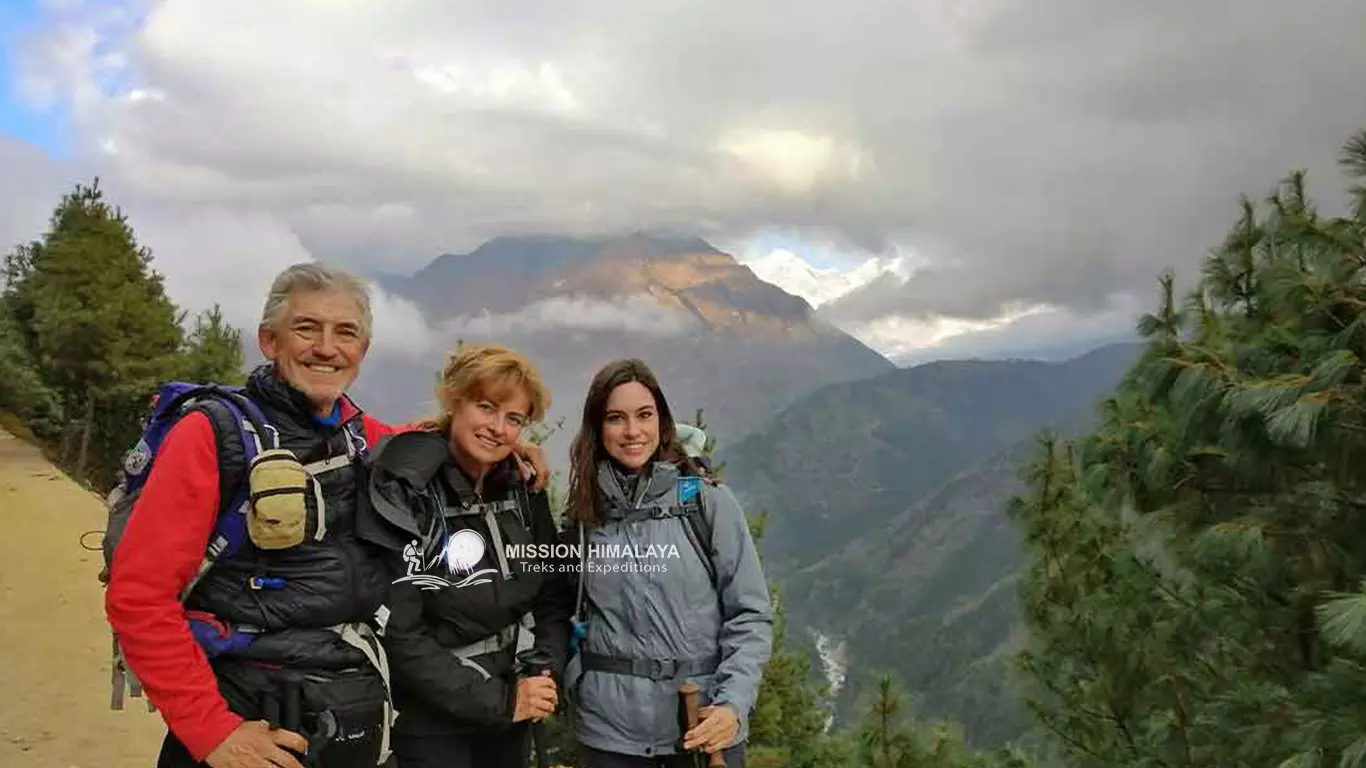
After breakfast, we will follow the trail from Namche to Tyangboche. The trekking trail from Namche to Tyangboche offers a delightful Rhododendron forest. After trekking along the forest of the national flower of Nepal we come to cross the Bridge. The trails before the Dudh Koshi River crossing are insanely pleasing. The eye-catching vistas of mani walls, Buddhist chortens, Everest, Ama Dablam, and Lhotse Himalayas, and the beautiful bridge near Phungithanga make today’s trekking supernatural.
Finally, in the evening we reach Tyangboche and explore Tyangboche Monastery which is one of the charms of the Everest base camp trek. The monastery is hailed as the biggest monastery in Everest Region Trekking. We will Overnight at Tyangboche.
Day 6: Tyangboche to Dingboche Trek
Accommodation: Tea House / Lodges
Max. Altitude: 4410m

We approach the Easy and Muddy track today, which takes us to the Debuche which has a charming Rhododendron forest along the route. The scene is just wow. The forest trail will thereafter soon come to an end from Debuche. The alpine meadow will soon open out and will continue to be visible till the base camp. Further, there are no longer any large trees along the route.
Another Sherpa town with buckwheat and potato fields is Pangboche. It is reached after crossing the Dudhkoshi river and a few short, steep ascent pathways with views of Mount Amadablam. We will continue the journey to Dingboche while admiring its breathtaking scenery. We will Overnight at Dingboche.
Day 7: Acclimatization Day
Walking Hours: 4 Hours Hiking

We will go across the Imja stream to reach Nagsarkang or Chukung Village on this day of acclimatization. This offers a stunning 360-degree vista of the Himalayan peaks, including Island Peak, Makalu, Amphu Laptsa Pass, and many more.
After the short trip, trekkers will take enough rest in tea houses in the afternoon. This day helps you to adapt your body with a higher elevation because you are again higher than 1000m than Namche where we acclimatize the first day. Relish the landscape charm, drink fluids and water, and prepare yourself for the next day’s trek.
Day 8: Trek from Dingboche to Lobuche
Max. Altitude: 4930m

From this day, our Everest base camp trek will get considerably harder because of the increased altitude. We go above the valley bottom, passing through yak pastures and alpine vegetation. As you traverse through this beautiful region, you will pass through magnificent valleys and get to witness stunning mountain peaks such as Mount Ama Dablam and Mount Pumori.
Shortly after trekking for many hours, you will arrive at Thukla Hills, where you will observe monuments honoring climbers who died in this region. As we move on, we eventually arrive in Lobuche. We will Overnight at Lobuche.
Day 9: Trek From Lobuche To Gorakshep. Afternoon Day Hike To EBC
Walking Hours: 7 To 8 Hours Trekking
Max. Altitude: 5170m

Trekking over Khumbu glacier, today we will arrive at Gorakshep. Probably the higher elevation for all trekkers makes the day’s trek quite challenging. To compensate for the challenges, you can explore tiny frozen lakes over glacier moraine. The majestical view of Icefall and the glacier view after lunchtime make trekkers forget their tiring days before reaching EBC.
You will finally feel relief and capture the moments you have been waiting past few months. Finally, You will achieve your main goal. Since your overnight today is at the teahouse over 5180m elevation, it is probable that you couldn’t sleep well. We will Overnight at Gorakshep.
Extras: Have you ever heard Everest getting visible from the Base Camp? If yes, you have heard wrong. Everest is not visible from the base camp itself. But, you can view Everest from the route from Gorakshep to Everest Base Camp.
Day 10: Morning Hike To Kalapatthar And Trek Back To Pheriche
Max. Altitude: 4200m/13776ft

The Ultimate day has arrived and you will be putting your steps at the highest point of the Everest base camp trek. From this point, Kalapatthar, you will catch a wonderful sunrise over Everest and 100s of snowy Himalayan peaks. This day is probably the coldest morning hike you have ever experienced on this trek. It could be the day you’ll find the EBC trek most difficult. Even though we’ve also witnessed trekkers choose to skip this option, we must admit that it is certainly worthwhile exploring if you want to get the best possible glimpse of the majestic Everest.
After the exploration of Kala Patthar, you will do a downhill trek to Pheriche. The trek is not that difficult. Trekking seems easy to descend but however due to the continuous long days walk, your legs feel uncomfortable. Some trekkers who do not like to back to the same trails also choose Everest Base Camp Helicopter Return Flight back to Lukla or Kathmandu from Gorakshep.
Day 11: Trek From Pheriche To Namche
Walking Hours: 7 To 8 Hours Trekking.
Meals Included: Breakfast, Lunch, And Dinner.
Accommodation: Tea House / Lodges.

This day you will find yourself walking down the steep, dusty, and rugged trail. You will make a descent and trek through the Pangboche Buddhist Tibetan Monastery which is one of the oldest Monastery of Khumbu built by Lama Sange Dorje.
After exploring the Monastery we lowly descend to Tengboche from Pangboche and finally to Namche Bazaar. Right after you reach Namche, trust me you will find the ultimate relief you have been looking since many days. You can hang around with locals and friends with some coffee or chill in your comfortable bed.
Day 12: Trek From Namche To Lukla
Max. Altitude: 2810m

The long-awaited Everest base camp trek adventure is finished today. You will therefore unwind mentally. Moreover, your adventure across the Mountains will come to an end after this day. Give a kind farewell to everyone who assisted you in completing your buckle list today at the hotel. Overnight at a lodge in Lukla.
Day 13: Flight From Lukla To Kathmandu
Walking Hours: 40 Minutes Flight And 20 Minutes Drive
Meals Included: Breakfast

We take the earliest possible flight back to Kathmandu. Our guide will transfer you to your hotel where you can relax at your will. Later in the evening, we will treat ourselves an exquisite Nepalese cuisine at one of the finest restaurants as a farewell dinner. This moment will also be a great opportunity to hear from you about your experiences and get constructive criticisms and suggestions that will help us make improve ourselves. Stay overnight at a hotel in Kathmandu.
Day 14: Departure of Your Trip
Accommodation: None
Max. Altitude: 1355m

Make sure that you have everything on the check before bidding farewell to us. After being ready, one of our company representatives will drop you off at the Tribhuwan International Airport 3 hours before the scheduled flight. He will recall some incredible moments we had spent during the Everest base camp trek. We will then be physically apart after bidding you a final Goodbye. Hope this is not the end of it, we hope we will always be connected through different mediums. Cheers!
Everest Base Camp Trek Cost
- Luxury Hotel Accommodation In Kathmandu central(Thamel) in BB Basis( Bed and Breakfast).
- Transfer from the Airport to your respective hotel and from Airport to your respective hotels by Luxury private vehicle.
- Domestic flights including airport taxes.
- National park Entry fees( Sagarmatha National Park & Khumbu Rural Municipality entrance permits).
- Accommodation in tea houses during your trekking according to your itinerary on a twin-sharing basis.
- Salary, Food, accommodation, transportation, flights, and insurance for mountain guides.
- Salary, food, insurance, and accommodation for porters.
- First-aid Kits.
- Three meals during your trekking period with cups of drinks.
- Farewell Dinner after completion of your trekking in a traditional restaurant with cultural music and a dance live show.
- Sleeping bag and down jacket for the trekking in case you do not have one. (Note: A sleeping bag and down jacket have to be returned after the completion of your trekking)
- International flight charges.
- Tips and Gratitude for your staff like guides, porters, and drivers.
- Nepal Entry Visa Fees.
- Your private trekking insurance(Must Cover trekking to 5545m).
- Alcoholic drinks and other soft drinks during trekking and in the city.
- Personal expenses like battery charges, internet charges, phone calls, laundry, hot and cold drinks, mineral and hot water, and hot shower charges.
- Other meals and drinks rather than an itinerary.
- Extra night accommodation in Kathmandu Hotel due to early arrival, and late departure. Or if you come early from the mountain due to any reason.
- Lunch and dinner in the city.

Microspikes For High Altitude pass

Sandle For Teahouse Stay

Thin Hiking Socks

Waterproof Trekking shoes

Thick Warm Woolen Socks

Half pants For Day Hike

Inner Thermal Wear

Long Trousers for Trek

Waterproof Trousers For Rain

Short Sleeve Tshirt For Day Hike

Thermal Tshirt For cold

Woolen Upper Base Layer
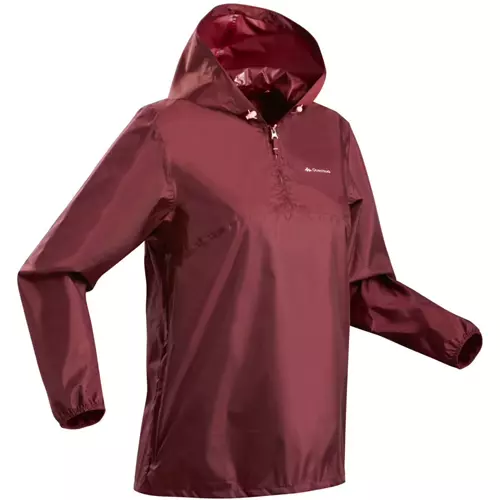
Waterproof Jacket For Rain

High Quality Down Jacket

Warm Wind Stopper
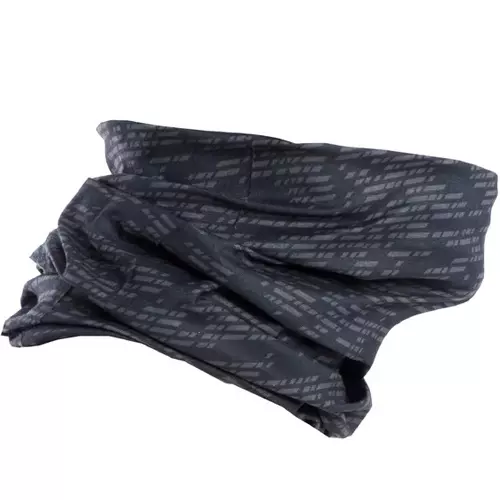
Bandana For Neck

Handkerchif For Sweating

Sun Cap For Strong Light

Uv Protected Sun Glass For Sun And Snow

Warm Woolen Hat For Cold

Headlight For Night Or Sunrise Hike

50+SPF Sun Cream

Lightweight And Fast Dry Travel Towel
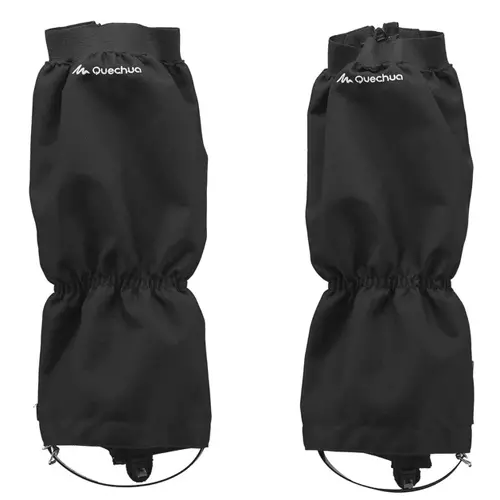
Hydration Water Bladder For Day Hiking

50+SPF Lip Balm

Tharmel Water Bottle For Hot Water

High Quality Trekking Poles

Day Bag For Trekker Own Hiking

Long Sleeve Tshirts

Backpack For Porter

Sanitery Pad For Lady

High Quality Sleeping Bag

Warm Waterproof Gloves

Padlock And Key For Safe Backpack

Snacks Energy Bars and Power Gel for Your Quick Energy

Toilet Paper For Teahouse Use

Toiletries For Man And Woman

Waterproof Bag For Your Water Safety

Spare Of Batteries

Camera For Photo And Video Of Trek

Power Bank For Mobile Charging

Two-Pin Travel Adapter

6 Month Validated Passport

Enough Cash And Credit Card For Mountain

Notebook For Your Day Experience Writting

Printed Flight Ticket IN case Loss from Mobile

Reading Book For Teahouse Free Time

Trekking Trail Map

First Aid Medicines For Trekking in Nepal
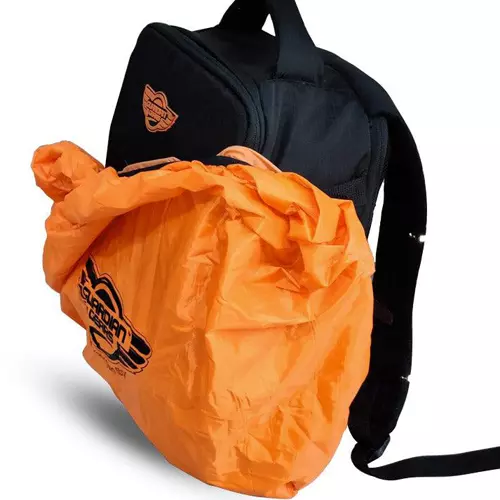
Waterproof Backpack Cover

High Altitude Covering Travel Insurance
Everest base camp trek map.

Everest Base Camp Trek Support
Facilities of accommodation.
Talking about the accommodations of the trek from day 1, you will be accommodated in a luxury 3-star hotel located in the Kathmandu valley. During your stay in Kathmandu, you will be sharing your room with your partners. However, upon request, we could manage your separate room at an additional cost. But you have to inform us before the fixing date.
During your trekking period, you could get a single accommodation facility in a trek if there are any available at the lodges. We always strive to provide you with high-comfort accommodations on this budget while keeping your satisfaction in mind.
Further, you might have to share a room with other single trekkers (same-sex) if you’re traveling alone at a higher altitude. Typically at high altitudes, there are limited lodges. So, if such kind of situation arises, we will inform you prior and request you to adjust. We will therefore refund your single supplement charge if we are unable to give you the facility.
Note that these guesthouses in higher altitudes provide you with the basic rooms for accommodation. If you want to have luxury facilities then please refer to our Luxury Everest Base Camp Trek Package.
Generally, the teahouses in lower elevations like Lukla, Phakding, Namche, Debuche, Pangboche, Pheriche, Dingboche, and Monjo will offer us a room with an attached toilet.
But in higher elevations, only some of it has this facility. But in the case of a hot shower, you can get it in higher elevations at an extra cost . For further information on the Accommodation, you can consult with us for the best accommodation options before indulging in the Everest base camp trek.
Food and drinks in Everest base camp trek
A perfect higher-elevation diet gives you added energy and lowers your risk of getting the infamous Acute Mountains Sickness. We thus highly prioritize fresh food and ensure you that the food we provide during the Everest base camp trek is healthy and balanced.
Contrary to what many people believe, teahouses on the Everest base camp trek provide a wide selection of hot meals, including both Western and Nepali, Indian, and Tibetan options. Trekkers will eat three nutritious meals every day. Lunch will be served in the teahouses and eateries along the trails, and breakfast and dinner will be prepared at the lodge where you will be staying.
Reviewing the Breakfast choices, you will have toast, Pancakes, bread, porridge, and eggs with their different varieties. With these various breakfast options, we are confident that you will be prepared and have energy for the trek until the lunch period.
As soon as noon arrives, we will head to another teahouse on the route. Our lunch primarily consists of Carbohydrate-rich foods. On the menu, we have different options like rice meals, noodles, Momos, pizza, pasta, Spaghetti, sandwiches, Potatoes, and Meat items. These are the general items found on the route, as the altitude varies, the items will also vary.
Despite the presence of all these food items, Dal-Bhat-Tarkari seems to be everyone’s favorite of both locals and as well as foreign visitors. Trekkers coming to Nepal hardly ever skip out on the classic Nepalese dish Daal-Bhat-Tarkari-Achar (boiled rice-lentil soup-vegetables-pickle). You definitely should try it for lunch. Also, make sure you try some special sherpa meals for lunch in addition to these items as well.
The dinner will be served where we will be staying overnight. The delicious and heavy dinner will fuel trekkers for the following day’s trek. Basically, Dinner options will be the same as the lunch options. Before dinner, you can take soup items as a starter. After that, you could choose any options from the menu for dinner same as for lunch. After dinner, you also can have some dessert items.
Note: To keep yourself hydrated while on the trek, you must consume plenty of water and other liquids. We suggest that you consume at least 3–4 liters of liquids daily. This helps in solving any minor issues and altitude sickness.
On the Everest base camp trek, there are several options for hot, soft, and hard drinks. Hot drinks such as Black tea, Milk tea, ginger tea, masala tea, green tea, black coffee, milk coffee, hot lemon, and hot chocolate are available.
Soft drinks such as Coke, Fanta, sprite, canned beer, can juice, and hard drinks such as whisky, Rum, and wine are also available. Even though it is available, alcoholic beverages are a big no if you are doing this trek. These kinds of drinks are the main cause of altitude sickness as they quickly dehydrate the body. Therefore be careful to avoid drinking alcohol for a healthy and fit Everest base camp trek.
Permits For Everest Base Camp Trek
On this trek, you have to pass through Sagarmatha National Park. This National Park is Enlisted as a UNESCO World Heritage site and the government charges a small fee to the trekkers to safeguard the natural surroundings of the Everest region.
Sagarmatha National Park is one of many national parks in Nepal that require admission permits to enter. In comparison to other costs in the region, the price isn’t too excessive. The cost will be collected, and the money will be invested in the region’s further growth. So the two permits that are needed for the Everest base camp trek are-
- Khumbu Rural Municipality Permit
- Sagarmatha National Park Entry Permit
This is just short information about the permits for you. With us, you don’t have to worry about these processes since we will arrange them for you.
Packing suggestions for the Everest base camp trek
Focus on items that will keep you warm and dry in challenging conditions while packing for the Everest base camp trek. Layering clothes is key to staying comfortable during the trek. Pack a combination of lightweight and midweight fleece, thermals, waterproof jackets and pants, hats, scarves, sunglasses, and gloves.
These clothing items must be easily adjustable depending on the conditions. Additionally, remember to bring trekking poles and extra socks. Also don’t forget to bring a headlamp/flashlight with extra batteries, energy bars/snacks, toiletries, medications, water purification tablets, and a first-aid kit. You can check out our complete EBC guide in the blog section for additional suggestions.
Information on the medical facilities available along the trek
Everest Base Camp trek offers medical facilities and tour guides with basic first aid knowledge. Evacuation is available via helicopter service in case of a medical Emergency. However, to access this service, trekkers must do insurance.
Furthermore, there are several healthcare clinics and hospitals while doing the Everest base camp trek. These centers will have basic supplies such as antibiotics and vitamin supplements. For more serious health emergencies, we will arrange an evacuation to better-equipped facilities in Kathmandu or Pokhara for you.
The Everest Base Camp Trek is one of the most memorable travel experiences that anyone could ever have. From the stunning vistas of the Himalayan peaks to the thrilling adventure of reaching high altitudes, trekkers get to see a new perspective and feel a sense of connection with nature as they conquer their dream of Mountain adventure. Especially with the proper preparation, determination, and proper guidance you can make the Everest base camp trek worth doing.
We, Mission Himalaya are always fully devoted to our clients and give the best we can. We cordially invite you to join us for this unforgettable journey to the epicenter of the highest mountain range in the world. Whether you are a seasoned adventurer or just looking for your first outdoor adventure, we are always here to help you.
If you have any kind of queries or questions about the Everest base camp trek or any other treks, then you can simply call us at +977-9841965533 or landline at +977-14700252. Or you can simply reach us via email at [email protected] or drop a message at our WhatsApp. Hope we get to meet soon. Happy Trekking!
Everest Base Camp Trek FAQ'S
The highest height you will go on this trek is at 5555 meters, Kalapatthar. Trekkers may see the best view of Mount Everest from this location, as the base camp itself which is located at an elevation of roughly 5,364 meters (17,598 feet) does not give a view of the summit.
A well-stocked first aid package is essential if you’re planning to do the Everest Base Camp trek to treat any injuries or diseases that may occur. The following items are recommended for a first aid bag for the Everest Base Camp trek:
- Bandages: gauze pads, elastic bandages, and adhesive bandages
- To treat cuts and scratches, use alcohol pads or antiseptic wipes.
- Medication for pain treatment, such as acetaminophen or ibuprofen
- Aspirin or naproxen, both of which are anti-inflammatory drugs
- For allergic reactions or bug bites, take antihistamines.
- medication to treat diarrhea, such as Pepto-Bismol or loperamide
- Salts for oral rehydration to replace fluids and electrolytes lost as a result of vomiting or diarrhea
- Antimicrobial cream or ointment for wounds or skin infections
- a tiny set of tweezers or scissors for removing ticks, splinters, or other foreign items.
- First aid instruction book
- prescription drugs used by individuals
It’s crucial to routinely check the expiration dates on your drugs and to store your first aid equipment in a waterproof container. You should also have a basic understanding of first aid and how to manage common illnesses and injuries. A trekking guide or tour operator should always be consulted for particular advice and requirements for your trek.
The spring and fall seasons are the ideal times to do the Everest Base Camp trek. Because of the great weather and trail conditions, these are regarded as the busiest seasons for trekking in the Everest region. Further details regarding the two seasons are provided below:
- The greatest season for trekking in the Everest region is in the spring, from March to May. With pleasant days and cool evenings, the weather is gentle and consistent. Flowers are in full bloom all along the trekking route, and the beautiful skies provide breathtaking views of the mountains in the area.
- Another fantastic time of year for hiking in the Everest region is autumn (September to November). Clear skies, a cool, dry climate, and stable weather are all present. Autumnal foliage covers the trail, and the mountain views are equally magnificent.
Both of these seasons include pleasant temperatures and dry pathways, which make hiking more convenient. Nonetheless, the paths may be congested and the tea houses and lodges may be fully booked due to the popularity of these seasons. Thus, it’s a good idea to reserve your position on the journey far in advance.
There are other seasons when it is possible to do Everest Base Camp trek, but the weather is less favorable. Trekking might become more difficult, for instance, during the winter season (December to February), which brings cold weather, snow, and ice. The trail may also become muddy and hazardous during the monsoon season (June to August), and clouds and rain may obscure the scenery.
Depending on the location and altitude, the restrooms on the Everest Base Camp trek could be pretty subpar. These are some typical restroom choices you might come across while hiking:
- The majority of the bathrooms along the walk are located in tea houses. These can be found in tea houses and lodges, which are simple lodgings that offer hikers food and shelter. Squat toilets or Western-style toilets are typical in tea houses, and visitors may share them. It’s a good idea to bring your own toilet paper and hand sanitizer because they are often basic and may not have running water or toilet paper.
- Public restrooms: Along the trail, you can find these open restrooms in the towns and villages. These usually have squat toilets, and they could have running water or not. It’s a good idea to pack your own supplies because public restrooms can be pretty basic and may not offer toilet paper or hand sanitizer.
- Nature Calls: It could be challenging to locate adequate restroom facilities at higher altitudes. You might have to discharge yourself in the open in such circumstances. You should carry out or bury your garbage and do this away from the trail.
It’s crucial to remember that restroom amenities get progressively more rudimentary as you ascend. Because of this, it’s crucial to be prepared and bring your toilet paper, hand sanitizer, and any other hygiene necessities you might require. To lessen the influence on the environment, it’s also crucial to follow the “leave no trace” rule and dispose of your garbage appropriately.
For trekkers doing the Everest Base Camp trek, altitude sickness, often known as acute mountain sickness (AMS), is a regular worry. When you ascend in altitude, your risk of developing altitude sickness rises, and its symptoms might be moderate or life-threatening. These are some guidelines for avoiding and treating altitude sickness while doing Everest Base Camp trek:
- Acclimatize Gradually: As you go higher, it’s crucial to acclimatize gradually to give your body time to adjust to the decreased oxygen levels. Avoid ascending too quickly and incorporate respite days in your trip.
- Consume plenty of liquids to stay hydrated because dehydration can make altitude sickness more likely. Aim for 3 to 4 liters of water a day minimum, and stay away from alcohol and caffeine, both of which can dehydrate you.
- Consume a Balanced Diet: A balanced diet rich in complex carbs, lean proteins, and healthy fats can aid your body in adjusting to the altitude. Eat foods that are simple to digest and try not to overeat.
- Do it Slowly: To preserve energy and prevent being overly exhausted, move slowly and avoid straining yourself. Don’t rush the hike; take your time to take in the scenery and stop as often as you need to.
- Learn to Recognize the Symptoms: Altitude sickness can cause a variety of symptoms, including headaches, nausea, dizziness, exhaustion, and shortness of breath. If you see any of these signs, immediately descend to a lower elevation and take it easy until you feel better.
- Medication: Some drugs are available that can either assist avoid or treat the effects of altitude sickness. For advice on the best altitude sickness medications, talk to your doctor and hiking guide.
Because it can be fatal in severe circumstances, altitude sickness must be taken carefully. Consequently, it’s crucial to pay attention to your health and take the appropriate measures to avoid and treat altitude sickness while doing the Everest Base Camp trek.
A variety of variables, including the length of the trek, the kind of lodging, the size of your group, and the degree of care you desire, might affect the price of an Everest Base Camp trek. To give you an idea of the expenditures involved, below are some rough estimates:
- Trekking Permit: For the Everest Base Camp trek, a trekking permit costs roughly USD 40 per person per week.
- Flights: The price of a one-way flight to Lukla, where the trip begins, can range from USD 180 to USD 240 per person. And vice versa.
- Guide and Porter: For the Everest Base Camp trek, hiring a guide and porter is strongly advised. A porter may cost between USD 15 and USD 25 per day, while a guide may cost between USD 20 and USD 30 per day. A porter-guide who can serve as both a porter and a guide is another option.
- Food and Accommodations: Depending on the type of lodging you select, the price of food and lodging may differ. On the walk, tea houses are the most typical lodging option and can range in price from $20 to $30 per night. The price of food per meal can range from USD 5 to USD 15.
- Renting equipment can cost anywhere from USD 1 and USD 10 per day for each item, including sleeping bags, down coats, and trekking poles. The overall cost of an Everest Base Camp trek might range from USD $1,000 to USD 2,500 per person based on the aforementioned estimations. It’s crucial to keep in mind that these are only rough estimates, and the actual cost may change based on your preferences and needs.
The Everest Base Camp trek can be completed by one person, however it is not typically advised. Here are a few explanations:
- Safety: The trek can be perilous, especially for inexperienced hikers because it is physically demanding. Your safety and the likelihood of mishaps or getting lost can both be improved with the assistance of a guide or porter.
- Altitude Sickness: Having a guide or porter who can identify the signs and take proper action can be lifesaving. Altitude sickness is a major worry on the Everest Base Camp trek.
- Navigation: Especially in inclement weather, the Everest base camp trek journey path might be complicated and it’s simple to become lost. You can navigate and stay on the proper path with the aid of a guide.
- Cultural Experience: A guide can help you gain a cultural understanding of the Sherpa community in your area and their way of life.
- Ban on Solo Trekking: If a trekker is going it alone, they must have a permit and a porter or guide with them. While going on an Everest base camp trek without a guide is possible, doing so might get you fined or even deported.
If you do decide to travel alone, it is imperative to take all the necessary safety precautions, including packing the right gear, taking the right medications, and being ready for emergencies. To make the Everest Base Camp trek safer and more pleasurable, it is suggested that you hire a guide or porter.
There is no set age limit for the Nepalese Everest Base Camp trek, but it’s crucial to remember that even for seasoned hikers, this is a physically demanding and difficult trek. For older people or those with health concerns, the trek’s extensive uphill and downhill climbing, frequently at high altitudes, can be very difficult.
In Nepal, the majority of trekking organizations mandate that participants be at least 16 years old, while some may have older requirements. A doctor’s note certifying that the person is in excellent health and physically capable of making the voyage may also be required by some organizations.
There is no set age limit for the Everest Base Camp trek, but it’s crucial to remember that even for seasoned hikers, this is a physically demanding and difficult trek. For older people or those with health concerns, the trek’s extensive uphill and downhill climbing, frequently at high altitudes, can be very difficult.
In Nepal, the majority of trekking organizations mandate that participants be at least 16 years old, while some may have older requirements. A doctor’s note certifying that the person is in excellent health and physically capable of completing the Everest base camp trek may also be required by some organizations.
Trekking at high heights is required for the Everest Base Camp trek, with the highest point being the peak of Kala Patthar at 5,545 meters (18,192 feet). The actual base camp is situated at a height of 5,364 meters (17,598 feet).
You will gradually climb to higher altitudes throughout the walk, giving your body time to adjust to the thinner air and lower oxygen levels. The majority of hikers will start the Everest base camp trek journey from the 2,860-meter-high village of Lukla (9,383 feet). From there, trekkers will progressively ascent via numerous communities and high-altitude passes while admiring the breathtaking alpine scenery.
Trekking at high elevation can be physically taxing and can result in high elevation-related diseases such as Acute Mountain Sickness (AMS), High Altitude Pulmonary Edema (HAPE), or High Altitude Cerebral Edema (HACE). As a result, it’s essential to give yourself enough time to acclimatize, drink enough water, and pay attention to your body as you hike. The warning signs and symptoms of altitude sickness should also be understood by hikers, who should seek medical help if necessary.
Depending on the exact route used, the length of the Nepalese Everest Base Camp trek might vary slightly, but the normal round-trip distance is roughly 130 km (81 mi) from Lukla to Everest Base Camp and back.
Depending on the precise itinerary and the pace of the trekker, the Everest base camp trek lasts 12 to 14 days. Trekkers cover the distance over a number of days, walking for 6 to 8 hours each day on average.
Trekkers will pass through a range of topographies throughout the route, including dense woods, rocky outcrops, and high-altitude terrain, all while admiring breathtaking views of the nearby peaks, including Mt. Everest, Lhotse, Nuptse, and Ama Dablam.
It’s critical to keep in mind that the Everest base camp trek’s length and degree of difficulty can be demanding, and it’s essential to thoroughly prepare and adapt to the altitude to guarantee a secure and joyful journey.
A comfortable and enjoyable journey to Nepal’s Everest Base Camp requires the proper backpack, which is crucial for a successful expedition. The following factors should be taken into account while choosing a backpack for the Everest base camp trek:
- Size: The amount of stuff you expect to carry, the length of your walk, and your personal tastes will all influence the size of your backpack. On a multi-day hike like the Everest Base Camp trek, it’s wise to use a backpack with a capacity of at least 50 liters.
- Fit: Your backpack should be snug against your back but not impair your ability to move. Seek for a backpack with a hip belt that can be adjusted for tightness or looseness.
- Weight: It’s crucial to keep your bag as light as you can while still bringing everything you need. When possible, choose compact and lightweight equipment to reduce the amount of weight you must carry.
- Features: Look for a backpack with features like hydration compatibility, various pockets, and compression straps. It may be simpler to set up your gear and make modifications while trekking with the help of these features.
- Quality: Spend money on a tough backpack that can survive the demands of the Everest base camp trek. A quality backpack can last for many years and offer a cozy and dependable solution for upcoming journeys.
A comfortable, useful, and appropriate backpack is essential because it will be your constant travel companion throughout the expedition. To make sure your backpack fits properly and is comfortable to carry, test it out before the hike.
It is strongly advised to carry travel insurance that covers medical emergencies, evacuation, and trip cancellations when doing the Everest Base Camp trek. You may choose the finest travel insurance for your Everest Base Camp trek by taking into account the following factors:
- Medical Coverage: Verify that your travel insurance offers sufficient Health protection, including emergency medical assistance, evacuation, and repatriation. To make sure you are completely insured, look for policies with high coverage limits.
- Everest Base Camp trek is regarded as an adventurous activity, thus it’s critical to determine whether the insurance policy covers such activities. Make sure to thoroughly check the policy specifics since some insurance policies may not cover adventure sports.
- Travel insurance should also include coverage for trip cancellations and disruptions brought on by unforeseeable events like illness, injury, or natural catastrophes.
- Ensure that your insurance coverage covers your Everest base camp trek journey, including any pre- and post-trek travel.
- Select a travel insurance company with a solid reputation, positive client feedback, and a history of paying claims.
To ensure that you are completely protected from any potential dangers or emergencies during your Everest Base Camp trek, it is crucial to thoroughly check the policy details and coverage exclusions. World Nomads, IMG Global, and AIG Travel Guard are a few travel insurance carriers that provide coverage for high-altitude trekking and adventure sports.
Although there have sadly been fatalities on the Everest Base Camp trek in the past, it is crucial to be informed of the potential risks and take the necessary safety procedures to reduce the likelihood of mishaps and injuries.
The most frequent reasons for fatalities on the hike include avalanches, falls, and altitude sickness. Low oxygen levels at higher elevations can produce sickness, which can have dangerous side effects such as high-altitude pulmonary edema (HAPE) or high-altitude cerebral edema (HACE). It’s important to acclimatize appropriately and get medical help if any altitude sickness symptoms manifest.
On the hike, accidents and falls are also possible, especially given the rocky, steep terrain. Trekkers should take the necessary safety precautions, such as donning suitable clothing and using trekking poles and experienced guides as their guides.
Avalanches can also be dangerous, especially in the springtime when snowfall is more likely. Trekkers should be aware of weather and avalanche forecasts and, if at all feasible, stay away from high-risk regions.
Many trekkers complete the Everest Base Camp trek each year despite the possible risks by adhering to the necessary safety precautions and instructions. To reduce the likelihood of mishaps or injuries, it’s crucial to pick a trustworthy trekking organization, select knowledgeable guides, and fully prepare for the journey.
Depending on the precise itinerary and the pace of the trekker, the daily mileage covered during the Everest Base Camp trek in Nepal can change. Depending on the terrain and altitude, trekkers typically traverse 10 to 15 kilometers (6 to 9 miles) per day, which requires 6 to 8 hours of hiking.
Below is an illustration of a typical route, including the daily kilometers traveled:
Day 1: A flight (2,860 meters/9,383 ft) from Kathmandu to Lukla
Day 2: An approximately 8-kilometer trek from Lukla to Phakding (2,610 meters/8,562 ft) (5 miles)
Day 3: A 10-kilometer trek from Phakding to Namche Bazaar (3,440 meters/11,286 feet) (6.2 miles)
Day 4: Rest day for acclimatization at Namche Bazar
Day 5: A 10-kilometer trek takes you from Namche Bazaar to Tengboche (3,860 meters/ 12,664 feet) (6.2 miles)
Day 6: An approximately 11-kilometer trek will take you from Tengboche to Dingboche (4,410 meters/14,465 feet) (6.8 miles)
Day 7: Rest day for acclimatization in Dingboche
Day 8: A 12-kilometer trek from Dingboche to Lobuche (4,940 meters/ 16,207 feet) (7.5 miles)
Day 9: A 6-kilometer trek from Lobuche to Gorak Shep (5,160 meters/ 16,929 feet) (3.7 miles)
Day 10: Walk approximately 15 kilometers (9.3 miles) round-trip from Gorak Shep to Everest Base Camp (5,364 meters/17,598 feet) and back.
Day 11: Trek to Pheriche (4,371 meters/14,340 feet), which is about 15 kilometers away, then hike to Kala Patthar (5,545 meters/18,192 feet) and back to Gorak Shep (9.3 miles)
Day 12: A 20-kilometer trek from Pheriche to Namche Bazar (12.4 miles)
Day 13: A 19-kilometer trek from Namche Bazaar to Lukla (11.8 miles)
Day 14: Lukla to Kathmandu flight
It’s necessary to keep in mind that the altitude and terrain make the Everest base camp trek difficult. Therefore, to reduce the risk of altitude sickness or accidents, it’s crucial to take the proper breaks and acclimatize appropriately.
A solid level of physical fitness is necessary for the physically demanding Everest Base Camp trek. Each day of the trek requires several hours of walking, frequently over rocky, steep terrain, and at high elevations where the air is thinner and the oxygen content is lower. Consequently, it’s crucial to get in shape before starting this walk.
The following are some of the physical prerequisites for the Everest Base Camp trek:
- Cardiovascular Fitness: As the trek entails several hours of daily walking, it’s critical to be in good cardiovascular shape. Your endurance can be enhanced by engaging in regular cardio exercises like jogging, hiking, cycling, or swimming.
- Strength Training: You will be trekking on rocky, steep terrain while carrying a rucksack during the expedition. To take on the challenges of the Everest base camp trek, you must have strong legs, a stable core, and an upper body. Exercises that increase strength include squats, lunges, planks, and push-ups.
- Mental toughness: The Everest Base Camp trek can be extremely taxing, therefore it’s critical to possess this quality in order to persevere in the face of exhaustion and agony. By engaging in regular exercise, meditation, and visualization, one can acquire mental toughness.
- Acclimatization to Altitude: As altitude sickness poses a serious risk during the Everest base camp trek, it’s critical to do it well. Therefore, the best approach to acclimate is to trek gradually, stop frequently, and drink plenty of water.
Hence, before starting the Everest base camp trek, it is advised that you speak with a doctor, especially if you have any current medical ailments or worries. In order to gradually increase your fitness level and make sure you are appropriately prepared for the demands of the journey, it is also crucial to begin training well in advance.
The food on Everest Base Camp Trek varies depending on a number of variables, including the type of cuisine, location, and season. In general, the price of food is higher in remote locations and at higher altitudes.
Based on typical pricing, the following is an estimation of the Everest Base Camp trek’s food expenses:
- Meals in Kathmandu: There are many eateries and food stands in the city that provide both regional and global cuisines. A basic dinner in Kathmandu can cost as little as NPR 300–500 (about USD 2.50–4.50) to as much as NPR 1,500–2,000 (around USD 12–17) depending on how sophisticated the meal is and where it is served.
- Meals during Trekking: Most teahouses and lodges provide a basic menu of regional and international cuisines in the Everest base camp trek. Meals on the hike can cost anywhere from NPR 400 to 800 (about USD 3.50 to USD 7) for a simple meal like dal bhat (rice and lentils) to NPR 1,000 to 1,500 (around USD 8.50 to USD 13) for a more expensive dinner like spaghetti or pizza. At higher elevations, food prices may be higher, and some teahouses may tack on extra fees for hot showers, Wi-Fi, and device charging.
- Food and drinks are also available on the Everest base camp trek, including chocolates, biscuits, chips, and hot and cold beverages. For a little snack, prices for snacks and drinks might range from NPR 50–300 (about USD 0.50–2.50) to NPR 100–400 (around USD 0.80–3.50) for a hot beverage or a cold beer.
Generally, depending on your choices and spending capacity, the cost of food for the Everest Base Camp trek can change. In case of any unforeseen bills or emergencies, it is advised to carry some extra cash or a credit card.
A fantastic method to make the Everest Base Camp trek more inexpensive and fun is to travel with a group. Trekking with a group has many advantages, including safety, camaraderie, and cost-sharing.
Here are several choices for doing an Everest Base Camp trek with a group:
- Join a Guided Tour: During the Everest Base Camp trek, a number of trekking companies provide guided excursions. These excursions often include a guide, porter, lodging, meals, and extras like transportation, permits, and equipment rental. If you’re new to trekking, want a more planned and hassle-free trip, or prefer the safety and direction of a trained guide, joining a guided Everest base camp trek will be one of the perfect choices. Guided Everest base camp price might vary based on the operator, the time of year, and the route, but it is typically more expensive than trekking alone.
- Locate a Hiking Partner: You might try looking for a trekking buddy online or through social media if you prefer to walk alone but want to split the costs and the experience with someone. Online networks, Facebook groups, and forums let travelers and hikers with similar interests connect. If you want a more intimate and real experience, more flexibility and freedom, or are on a tight budget, finding a trekking partner for Everest base camp can be an excellent choice.
- Join a Group Tour: You can join a group tour that is organized by a trekking business or a travel agency if you don’t want to go on a guided trip but still want to trek with a group. These excursions typically come with lodging, meals, transportation, and a local guide, but they provide you more freedom and flexibility than a guided tour. If you want to meet other travelers, split the costs, and have some support and backup. Therefore, joining a group Everest base camp trek journey can be an excellent alternative.
No matter the choice you select, it’s crucial to conduct thorough research, evaluate the costs and services, and pick a recognized and trustworthy company. To guarantee a secure and successful Everest base camp trek, it’s also crucial to plan ahead, acclimate appropriately, and adhere to all safety regulations and requirements.
Everest Base Camp Trek Fixed Departures
- 2020 2021 2022 2023 2024 Jan Feb Mar Apr May Jun Jul Aug Sep Oct Nov Dec
Annapurna Base Camp Trek Fixed Departures
Everest base camp trek reviews.

Everest Trekking Is Best Around The World Trekking
Birendra was great and answering all the questions in time and ensure my all the Hotels and accommodations in trekking, flights from Kathmandu to Lukla and Lukla to Kathmandu and all transportations. We booked in advance from our country. During the trek, my guide Sudarsan and Lakpa Sherpa as a porter care us during all the trip and overnights at tea houses and Yeti Mountain Home. I will fully recommend this company for Trekking Everest and other destination. I think Everest Trekking is best around the world trekking.
Best Everest base camp trek customized package.
We joined EBC with Birendra. He is very nice and extremely helpful. Undoubtedly, a very experienced tour guide you can rely on!!!
Good care 21 days trekking and sightseeing
Thank you for taking care of my Nepal trip during my 21 days trekking and sightseeing.
!! “you are the Best”!!
Nepal Everest and Annapurna
Professional tour guide in Nepal I and my wife went to Nepal for 3 weeks for trekking at Poonhill and EBC. Both of us very very enjoyed the trekking trip also enjoy with city temple tour in Kathmandu. Duwadi Birendra is Amazing, he is the best tour guide I ever saw before. I was traveled to too many countries but he is the best one in my life. Also, he has his own personality that you can trust with very good take care and good service. We felt like home when we traveled to Nepal Everest and Annapurna. When we have a chance we will go to see you and use your service again. And recommend all person to join this company.
Thank you to make the wonderful trip for us January Thanawat
Combined Nepal Trekking
My friends and I had a nice trip to ABC and EBC with Birendra and his team. Our guide has well trained, experienced, Birendra is well knowledge at every aspect of the trek such as extreme conditions arise from the high altitude sickness or any emergency accident and they are practical to lead over the problems for the safety precaution to us, made our trip safety, success, and satisfaction of the trip. I will highly recommend my friend to join this company if they will go for Nepal trekking and tour.
single lady EBC trekking
Lady trekking without previous trekking Experience.
Whenever I told people I have been to EBC, they all showed unbelievable faces. Without the experienced trekking guide Birendra, how could a lady without previous trekking experience has the guts to trek EBC! The marvelous natural beauty of Himalayan range, the sunrise at Lobuche and the friendly little kids at Namche Bazaar…unforgettable. On the seventh day of trekking, about 4000m, I got acute mountain sickness, Birendra was taking good care of me and trekking slowly and slowly. He tried to make me relax and adjusted to the attitude, however, I had to ride on a helicopter back to Kathmandu before the sickness gets worst. I only took two days rest and resume my journey. Birendra arranged a substitute trip to Chitwan for me, he is such a caring friend. I would strongly recommend my friends to trek with Birendra and Mission Himalaya Treks team.
completing the trek is quite an achievement
Thinking about going for a trek to Mt Everest Base Camp is a task and completing the trek is quite an achievement. Thanks to Birendra and Nima(Our guide) for helping us complete this trek. They made it look easy and comfortable. The memories of base camp and Mount Everest will stay for long. I had a blast.
Good knowledge about the mountains.
Thank you so much, Birendra for answering to all my questions before the trek, in Kathmandu just before starting the trek and discussing after the trek. You were a great help. Our guide Nima was excellent. He is very well mannered, well experienced and he has very good knowledge of the mountains. He was really helping, encouraging and big support. I am thankful to him for his sweetness while we used to have our meal. He used to order food, bring water for us, and then winding up. So, overall I had a great experience because of their service, prompt replies, and actions. Thank you Birendra and Nima and the whole team, including our Sherpa Neer Kumar, a sweet young guy.
Nothing was a problem during the trip
Amazing adventure made the extra special trek by funny trekking guide Kulung Rajj. Raj was kind, knowledgable, caring and welfare and very strong in terms of help to carry luggage even we have another porter. Trek was well organized by mission Himalaya and nothing was a problem during the trip except we tired a lot. we all would recommend this trek especially if you are interest to go Nepal best trekking. Do not choose other company mission Himalaya was the best of best. Tks Birendra for your arrangements and thanks raj to guide us., Everest is the best trekking in Nepal. The budget is also reasonable.

No doubt an amazing experience
I did the trek with mission Himalaya is no doubt an amazing experience. Because of the best Guide tanka Kulung and the porter Sundar Baram. They all really friendly and helpful at all. Raj is a joker so he never gives the chance to bore during the trip. Please do not think too much-book the trek with Mission Himalaya Treks And Expeditions PVT LTD. No doubt-excellent service.
- No Hidden Cost
- Customer Care And Safety
- Trustworthy Team
- Financially Secure
- Repeated Guests
- Flexible Departure Dates
- Different Group Sizes.
- High Successful Rate/Safety.
- Stress & Worry Free Travel
- Staffs Welfare

Cho La Pass Trek

Kanchenjunga Base Camp Trek

Everest View Trek 2024

Tidy Himalaya
Trek and Expedition
Everest Base Camp Trek
- Accomodation Hotels & Guesthous
- Departure from Kathmandu
- Best season March to May & Sep to Dec
- Transportation Plane & Private Vehicle
- Fitness level Moderate
- Maximum Altitude 5545 M
- Meals Breakfast, Lunch & Dinner during the trek
- Tour type Eco-Tour, Hiking, Trekking
- Group Size 2-16
- Minimum Age 18
- Maximum Age 65
Everest Base Camp Trek Overview
Let your Journey unfold in the lap of the mighty Himalayas, where the Everest Base Camp trek EBC stands as the crown jewel. The Trek to Everest Base Camp isn’t just an Iconic Destination or a testament to your determination and spirit of adventure. It’s an equal blend of breathtaking, pristine views of Nature and wonders, Enriching the warmth and culture of Sherpas and Locals.
Tight up your shoes and pack your bags for the 15 days at Everest Base Camp and immerse yourself with the raw beauty of Snow-capped mountains, flags flutter like the vibrant butterflies hanging on the long beautiful bridge, and hills filled with flowers. EBC trek Is Situated at an impressive height of 5364m. The incredible view of Pumori, Nuptse. Lobuche and many other mountains ( above 8000 ) can be seen along the way to the Base Camp.
Start your journey with the 35-minute flight from Kathmandu to Lukla Airport (LUA) Nepal and continue your journey to UNESCO World Heritage site Sagarmatha National Park, Namche Bazaar “Gateways to Everest, Tengboche Monastery of Buddhist monks whose chanting resonates through the air, dingboche’s stunning peak, Lobuche Beautiful views, Gorak and the Khumbu Glacier awe-inspiring beauty of nature to the EBC Or enjoy Everest Base camp Luxury Trek which guarantees your utmost comfort and safety to Deluxe Amenities. Retracing Back to the Tengboche, passing through the hills and mountain till the Lukla and flight back to Kathmandu.
Everest Base Camp Trek Elevation
The rise of the Everest base camp is 5,364 meters (17,598 feet), and it serves as the launchpad for climbing the world’s most noteworthy top, Mount Everest. In any case, the most elevated point come to on the Everest base camp trekking is Kalapatthar, arranged at an elevation of 5,555 meters (18,225 feet). From this vantage point, you’ll be able to appreciate the unhindered see of Mt. Everest and other surrounding crests on the off chance that the climate is evident. It’s the idealize area to involve the breathtaking viewpoint of the Himalayas and Khumbu region.
How to anticipate elevation affliction amid the EBC trek?
Altitude ailment poses a genuine and possibly deadly chance, particularly amid the Mount Everest Base Camp Journey. Avoidance measures are vital due to their eccentrics.
Counseling restorative specialists already for a physical exam and chance evaluation is essential. Avoiding substances like liquor and tobacco, while constraining caffeine, helps in acclimatization. However, following secure height pick-up rules, keeping up hydration, and a carb-rich count of calories could be a key calculation for EBC trekking. Likewise, slow acclimatization through moderate climbs and hiring experienced guides are profoundly suggested.
Essentially, once you recognize indications like sickness and tipiness slipping to lower elevations instantly is suggested. For such cases carrying height affliction solutions, a to begin with help unit, and testing neighborhood cures are judicious safeguards.
Generally, whereas physically fit people are still vulnerable, proactive steps can relieve height affliction dangers amid Mount Everest Trekking. Explore in detail the imperative perspectives through our web journal approximately Height Ailment Anticipation Tips for Trekking in Nepal.
Accommodation during the Everest trek
During the 15-day Everest Base Camp Trek, you’ll have an add up to 2 evenings of convenience at a lodging in Kathmandu and 11 evenings at guesthouses within the trekking areas. Alternatively, we too have the Everest Base Camp Extravagance Journey bundle, which incorporates overhauled housing and upgraded offices both in Kathmandu and all through the trekking journey.
Kathmandu settlement for EBC trekking
Upon entry in Kathmandu, you’ll be expeditiously transported to your assigned inn, a comfortable and well-maintained 3-star choice within the heart of the visitor center; Thamel region, like Lodging Thamel House, Gaju Suite, Inn Jampa, etc. Your remain incorporates twin sharing/double convenience with breakfast. All the rooms have a private washroom, TV, and plentiful capacity for your luggage. If you want a more elite encounter, you’ll be able to overhaul to single inhabitance or improve your remain to a 3-star inn at an extra charge. Nearby, Thamel offers different eateries, shops, and trekking equipment stores for your comfort.
Attached/toilet washroom during the EBC trekking
During the journey, you’ll be remaining in nearby teahouses/guesthouses, advertising basic lodging and suppers for travelers. However, these places have progressed offices presently, particularly in a few zones like Lukla, Phakding, and Namche where we offer you rooms with joined toilets/bathrooms. Local people run these teahouses, serving Nepali suppers like “Dal Bhat.”
While eating spaces are cozy, convenience is essential, with twin-sharing rooms and the choice to update for single inhabitance at an extra fetch. Too, if it’s not too much trouble note that consolation is unassuming within the mountains. In any case, there’s a plausibility of having fewer choices accessible amid the low season. For a closer see at the lodging and eating choices along the Everest Base Camp Climb.
Finest time for Everest Base Camp Trekking
Trekking to Mount Everest Base Camp is conceivable all through the year, with each season advertising unmistakable encounters. Spring (March-June) is dynamic with sprouting blossoms, gentle temperatures (20°C/68°F), and clear skies, making it ideal.
The storm season (July-Mid-September) brings overwhelming rain, especially at lower rises, but offers calmer trails and temperatures averaging 22°C (71.6°F). Harvest time (conclusion of September-November) is well known due to the charming climate, clear seas, and colorful landscapes. Winter (December-February) gives isolation with cold temperatures (10°C/50°F), dropping to -20°C (-4°F) at higher heights. Appropriate adaptation is pivotal for warmth.
Overall, spring and harvest time stand out for their charming conditions, whereas the storm and winter offer special encounters with challenges to overcome. For more data, you’ll study our web journal at almost the finest time for the Everest Base Camp journey.
Detail information about flying into Lukla
Lukla Air terminal, also called Tenzing Hillary Airplane terminal, is one of the world’s most unsafe air terminals at 2,840 meters tall serving as the section and exit point for Everest locale treks using flight. In any case, there are a few operational changes including flights from Ramechhap/Manthali air terminal at times.
Lukla flight from Ramechhap/Manthali Airport
Ramechhap/Manthali Air terminal is in Nepal’s Terai locale, approximately a 5 to 6-hour drive from Kathmandu from there you’ll have a 20-minute flight to Lukla. In top months such as Walk, April, May, October, and November, Lukla flights are diverted to Ramechhap/Manthali (474 m) due to expanded discuss traffic.
Lukla flight from Kathmandu airport
Similarly, in months like January, February, June, July, Eminent, September, and December, Lukla flights begin from Kathmandu, which is able takes you almost 35 minutes to reach Lukla. Be that as it may, it is imperative to get that the choice concerning the operation of Lukla flights is totally up to the aircraft and is impacted by the number of travelers each month. Therefore, variables like unfavorable climate, air terminal clogs, runway issues, and geological challenges frequently lead to flight delays or cancellations to Lukla.
To account for this, it’s suggested to include an additional day or two to your Everest Trekking arrangement. This buffer time can be profitable in case of flight disturbances, guaranteeing you capture your planned universal flight back domestically.
Baggage allowances in Lukla Flight
Please keep in mind that the greatest weight permitted for the Lukla flight is 15 kg (around 33 pounds), which incorporates both your duffel sack and daypack. On the off chance that your daypack is heavier than this constraint, you’ll need to pay an additional expense of USD 2 to USD 5 for each kilogram over the limit. However, some of the time indeed with the additional installment, you might not be permitted to bring more weight. To avoid any issues, it’s best to stay within the 15 kg constraint when pressing.
Travel insurance for Everest Base Camp Trekking
Having travel protections that cover high-altitude enterprise exercises (over 5,000 m) is obligatory. This incorporates possibilities like flight disturbances, mishaps, and crisis clearings. You’ll be able to purchase such protections online from different suppliers. A few of the common choices based on client encounters for Everest Base Camp Trek include:
- USA and Canada: Tugo, United Health Care, World Nomad, Blue Cross
- Australia and New Zealand: Fast Cover, Allianz Australia
- Singapore: Ergo, World Nomad (Explore plan level 3)
- Europe: Europe Assistance, Austrian Alpine Club, Allianz Europe
- India: ICICI Lombard
However, if you don’t mind guarantee that the approach covers trekking up to 6,000 m height. Whereas these are fair recommendations, the arrangements, and scope may shift appropriately. Contact these safeguards straightforwardly to ask around their offerings sometime recently making a buy.
Food options during EBC trekking
Teahouses on the Mt Everest Base Camp trekking course take after worldwide rules for nourishment planning, guaranteeing clean and warm dinners. Fixings are frequently sourced locally, ensuring freshness. The fundamental nourishment whereas trekking is ‘Daal Bhat’ – rice and lentils.
Teahouses offer different choices, from American breakfast to Nepali dishes. Breakfast incorporates things like bread, eggs, porridge, and more. Lunch and supper include Daal Bhat and other choices like fricasseed rice, noodles, and soups. Carrying protein bars and dried natural products for snacks is suggested at the side remaining hydrated. Plunge more profound into this culinary travel through our web journal post Nourishment on the Everest Base Camp Journey.
Can a beginner trek Everest Base Camp?
Certainly! At Tidy Himalaya, we accept that with the correct back and direction, an apprentice can completely journey to the notorious Everest Base Camp. Our group comprises prepared guides who brag in-depth information about the territory and are well-trained to begin with help, guaranteeing the security and consolation of each trekker all through the journey.
We profoundly prescribe that apprentices experience comprehensive physical preparation and conditioning sometime recently setting off on this extraordinary experience. This may include locks in cardiovascular work, quality preparation, and climbing to construct continuance and stamina. By devoting time to this preliminary stage, tenderfoots can upgrade their general wellness levels, making the journey a more agreeable and fulfilling experience. With Expert, tenderfoots can rest guaranteed that they’ll get the essential direction, back, and support, empowering them to completely grasp the splendor of the Everest locale while making enduring recollections of a lifetime.
Training program for Mount Everest Base Camp trekking
Appropriate planning is key for a fruitful Everest Base Camp trekking, requiring physical and mental availability beginning around two months in progress is profoundly suggested. Prioritize slow advance, rest, and hydration to maintain a strategic distance from strain. Along with week-by-week tough climbs, exercise center workouts, and different cardio exercises to upgrade stamina and perseverance. Also, adjusted nourishment with complex carbs and protein is required to bolster expanded calories.
Consolidate extending and yoga for adaptability and solidness. Therefore, mental planning includes understanding challenges, setting reasonable desires, and practicing mindfulness. By mixing these procedures, you’ll develop the essential versatility for a triumphant and satisfying Mt Everest Base Camp travel. Investigate the point-by-point viewpoints of our prescribed EBC trekking preparing programs in our carefully composed How to get ready for Everest Base Camp Journey?
Everest Base Camp Trekking Difficulty
The Mt Everest Base Camp path is famous however challenging. The essential troubles are the height ailment and the trek’s length. Elevation affliction is unusual and influences anybody.
Trekking involves 5 to 8 hours of everyday strolling, but with legitimate arrangement and nourishment, you’ll oversee well. To succeed in trekking, prepare your body for tall elevations, and strolling on uneven territory with a rucksack. Furthermore, arrange to walk an hour, 4-5 times week by week, from 2 months earlier to trekking. For more data, check out our blog How Hard Is Everest Base Camp Trek?
Nepal EBC trek cost
The fetch of the Mount Everest base camp journey shifts based on one’s inclinations and the term of the journey. A Google look will show the costs extending from $800 to $4,500. Our standard schedule at Expert the Himalaya offers the journey at $1,550. Additionally, components influencing these costs are settlement, transportation, licenses, guides, and journey length. In any case, if it’s not too much trouble check the cost incorporation segment sometime recently making a buy based exclusively on bundle fetched.
Internet & Wi-Fi availability during the EBC trek
Not at all like other trekking trails in Nepal, the Everest trekking stands out for its well-developed offices, including a web network. In this locale, there’s a Web Benefit Supplier called Airlink which offers web packages. The boundless web bundle from Discuss Interface costs NPR 700 (6-7 USD) for a 24-hour length and NPR 1200 (9-10 USD) for 48 hours.
Air Link’s Wi-Fi is open within the larger part of visitor houses along the Everest Base Camp route. It’s critical to note that these bundles are substantial for a single gadget. Whereas a few teahouses give Wi-Fi for an expense, it’s not continuously solid or accessible all over. To guarantee a reliable network amid your journey, it’s prudent to buy Everest Interface or get a 3G/4G SIM card.
Extra expenses for the EBC trek
Concerning extra costs for the whole trip, a budget of roughly USD 100 to 150 barring the tips, is by and large considered satisfactory for purchasing snacks and beverages. However, the precise sum of additional costs can vary depending on a person’s investing inclinations, as well as on choices related to buying gifts, post-trip alcoholic refreshments, and exercises.
What is the trekking distance from Lukla to the Everest Base Camp?
The separation between the Lukla Airplane terminal (Tenzing-Hillary Airplane terminal) and the Everest Base Camp is around 65 kilometers or 40 miles. This famous journey covers an add-to round-trip remove of 130 kilometers or 80 miles, regularly completed inside an 11-day timeframe. These 11 days too incorporate two acclimatization days, one within the bustling center of Namche Bazaar and the other within the peaceful town of Dingboche, permitting your body to carefully adjust to the expanding elevation.
Highlights of Everest Base Camp Trek
- Enjoy the breathtaking vista of the world’s highest peaks and other 8000-plus mountains.
- Discover the rare wildlife and fauna of Sagarmatha National Park.
- Entrance to Namche Bazzar’s cultural and commercial powerhouse.
- Experience the Purity, and simplicity of Buddhist sanctuary monks at Tengboche.
- Enjoy the Lively Sherpa culture and Tradition.
- Discover your Adventure en route to Lukla.
Everest Base Camp Trek Itinerary
Once you reach Kathmandu, our company will be waiting to greet you. Once settled, here you meet your tour seasoned trip guide who will be your companion throughout your trip to Everest Base Camp Trip. Embrace this opportunity to know rich culture of Kathmandu.
On your second day in Kathmandu, a full-day heritage tour will be arranged which will allow you to see some of the most famous landmarks around the city. In total there are four cultural and religious sites to see – Pashupatinath Temple, Boudhanath Stupa, Kathmandu Durbar Square, and Swyambhunath Stupa (also known as the Monkey Temple). All are incredibly important to Nepali culture and are protected UNESCO World Heritage Sites. You will be accompanied by a guide who will have an abundance of information, historical facts, and local folklore relating to these heritage sites. Pashupatinath Temple is by far the holiest and oldest Hindu shrine in Kathmandu. Here, you can witness a collection of centuries-old temples, Shiva Lingams, ashrams, and inscriptions. You also will see the open cremation along the banks of the sacred Bagmati river. This bustling ground is arguably one of the most important cultural places in Kathmandu for Hindus. Boudhanath Stupa is one of the world’s oldest, largest, and most significant Buddhist monuments. The dome-shaped stupa has three levels designed in Mandala style and is decorated with multi-color prayer flags. You can walk around the stupa which is surrounded by stores, coffee shops, and restaurants. Kathmandu Durbar Square is made up of many temples, and buildings from the time of kings. Here, you’ll get to explore several temples dedicated to Hindu gods and goddesses. Major attractions of this Royal square include Kasthamandap, Kumari Ghar, Taleju Temple, and Kaal Bhairav. Swayambunath Stupa or the Monkey Temple holds significance in both Buddhist and Hindu culture and religion. This ancient marvel lies in the western hillocks of the Kathmandu valley. It comprises many shrines, monasteries, temples, a library, and a museum. Situated on top of a hill, you will find a beautiful view of Kathmandu and the surrounding hills from the stupa. After the full-day tour, the tour guide will take you to your hotel so you can prepare for the trek. If necessary, you can do any last-minute shopping around Thamel in the evening.
Overnight at Hotel, Breakfast included.
On this day, you will be catching an early flight from Kathmandu to Lukla. Your guide will take you to the domestic terminal with plenty of time before your scheduled flight. The weather in Lukla can get very windy and unpredictable in the afternoon, so these flights are scheduled for the morning to ensure you are able to land.
It is a short, 30-minute flight which is truly thrilling. If it is a clear day, you will have stunning views of the hills and the snow-capped Himalayas.
Upon landing at the Tenzing-Hillary Airport, you will meet the sherpas/porters accompanying you for the trek. The trek begins with a gradual walk through the alpine forests alongside the Dudh Koshi River. Once you reach Cheplung village, you will get your first glimpse of the Himalayas with a distant view of Mount Khumbila. You’ll continue to walk, dodging mules and trekkers with the soothing sound of the Dudh Koshi River. The overnight destination is Phakding.
Overnight at Guesthouse, breakfast, lunch, and dinner included.
After breakfast, you will hit the trail early and head towards Namche Bazaar. Upon leaving Phakding village, the trek continues on the bank of Dudh Koshi River. This part of the trail is largely under the shades of the pine forest, but also crosses several yak pastures and Sherpa villages, namely Benkar and Chumoa. Along the route, you will also cross a long, high steel suspension bridge — The Hillary Bridge — to enter the Sagarmatha National Park at Monjo.
Once you enter the national park, the trail becomes very steep, going uphill towards Jorsalle village. However, after a while, the strenuous trail treats you to the marvelous view of Thamserku, Everest, Nuptse, and Kusum Kanguru.
As you continue climbing the steep uphill, savoring the picturesque mountain backdrop, you’ll arrive at Namche Bazaar. Often regarded as the Gateway to the Himalayas, Namche Bazaar is surrounded by hotels, teahouses, restaurants, cafes, and colorful markets. From the village, you will have a close-up glimpse of Thamserku and Kongde-Ri. Overnight at Guesthouse, breakfast, lunch, and dinner included.
Once you arrive in Namche Bazaar, you will have a day off for acclimatization. The trek will take you above 4,000 meters over the next few days, so this time is especially important for your body to adjust to the altitude in addition to reducing the risk of altitude sickness.
While it is a rest day, you may take a short hike to the hills above Namche Bazaar, toward the settlement of Syangboche. Here, you will visit the Everest View Hotel — one of the world’s highest luxury hotels.
From the hotel’s sundeck, you can savor panoramic views of Ama Dablam, Thamserku, Mount Everest, Nuptse, Kwange, Kangtega, Lhotse, Taboche, and Khumbila.
On your way back to Namche Bazaar, there will be an opportunity to enjoy the Everest Photo Gallery and Sherpa Culture Museum.
After the acclimatization day at Namche Bazaar, the adventure continues on a pleasant path. At this point, the trail passes through dense rhododendron forest and occasional Sherpa villages.
With marvelous mountain views in the background, this part of the trail is often regarded as the most scenic portion of the Everest Base Camp Trek. As you continue the gradual walk along the hillside above the Dudh Koshi River, you’ll arrive at Phungithanga.
Once you pass through Phungithanga, the pleasant route transforms into a more strenuous uphill walk. You will cross the Imja Khola — a tributary of the Dudh Koshi River — under the shades of rhododendron forest, and then arrive in Tengboche.
Tengboche is a small Sherpa settlement scattered right below a crescent-shaped ridge. It is well-known for being the home of Khumbu’s largest Buddhist monastery — Tengboche Monastery. The sight from the front yard of the monastery is sublime.
You can enjoy the close-up view of Ama Dablam along with surrounding mountains, including Everest, Nuptse, and Lhotse.
We recommend that you wake up early on this day to watch the sunrise over Ama Dablam as it is extraordinary, and you will surely not regret your decision.
The day walking begins after breakfast and you will move north from Tengboche village. After crossing a suspension bridge over the Imja Khola, the trail continues beside the hamlet of Pangboche village. From here on, the route becomes much more narrow.
The next village is Orsho, and you will take the lower route towards the bank of Imja Khola. There are many mani walls, prayer flags, and chortens just before you arrive in Dingboche.
Situated at 4,410 meters above sea level, Dingboche marks one of Khumbu’s highest Sherpa settlements. Hence, most trekkers begin to feel the effects of the high altitude at this point of the trek. Be sure to keep your body warm and stay hydrated to reduce the risk of falling ill.
Overnight at Guesthouse, Breakfast, Lunch, and dinner included.
Due to the altitude, there is another rest and acclimatization day to help your body adjust. However, you will still take a short hike to a nearby hill to keep feeling active and ready for the remainder of the trek.
While it is a steep ascent from Dingboche to the summit of Nagarjun Hill (located at 5,100 meters), the peak offers beautiful views of Ama Dablam, Lobuche, Lhotse, Nuptse, Cholatse, and Kangtega.
After a brief break at the summit, you’ll descend back to Dingboche to get some rest. If you are feeling healthy and wanting further activities, you may choose to explore the village on another short tour.
This day begins with a gradual ascend towards Thukla, here, the scenery changes and becomes much barer and more desolate, with only alpine scrubs surrounding the trail.
After some time, the trail becomes somewhat strenuous, with a steep uphill over the moraine of Khumbu Glacier. Upon climbing the steep ridge, you will arrive at the summit of Thukla Pass. Here there is an area where you will see many stone shrines dedicated to fallen climbers.
Following this pass, you will walk through grassy valleys and rocky terrain to arrive at Lobuche. This village consists only of teahouses, with no permanent settlements here. It lies in a narrow meadow sandwiched between Lobuche Peak and Khumbu Glacier. You will be able to enjoy the incredible sight of Taboche and Nuptse soaring above the teahouse.
In the evening, you may choose to take a short hike to the narrow gap of the moraine and the mountain wall to see the Khumbu Glacier.
After having breakfast in Lobuche, you will begin walking on a rough and rocky trail towards Gorak Shep. However, despite the rough trail, you will be able to enjoy views of Nuptse, Pumori, and other mountains.
It takes a few hours on this challenging trail before you will arrive in Gorak Shep. You will have a little time to rest and leave your backpack before getting back to walking towards Everest Base Camp. Along the way, you will see several small streams and glacial moraines and will be walking alongside the Khumbu Glacier.
The Khumbu Glacier is similar to a lunar landscape with gray boulders, ice formations, and small craters. It will take about two hours before you will be standing at the foothills of the world’s highest mountain — Mount Everest.
Upon reaching Everest Base Camp, you can celebrate your achievement with your trekking guide and team members.
From Everest Base Camp, you will have a marvelous sight of Khumbu Icefall, Khumbu Glacier, Nuptse, Pumori, Khumbutse, and a little bit of Everest.
After celebrating, and enjoying the well-deserved view, you will head back to the barren terrain of Gorak Shep for an overnight stay.
The day starts before sunrise to hike up to the landmark of Kala Patthar. While the trail is not long, it is steep, rocky, and very challenging.
Located at 5,545 meters, Kala Patthar is the highest elevation of this trek. From the summit, you will be able to enjoy the sunrise over the Himalayas, with a 360-degree view of the highest peaks in the world including Mt. Everest, Nuptse, Lhotse, and Ama Dablam, Thamserku, Pumori, and more.
After taking in the sunrise, you will retrace your steps, back to Gorak Shep for breakfast, before descending towards Pheriche. You will walk along the rugged trail and pass through Lobuche and Thukla Pass.
Once you descend the ridge of Thukla Pass, you will cross a short bridge over a glacial stream to arrive at Pheriche.
Pheriche is a small settlement surrounded by hotels, teahouses, and yak pastures. It is also home to the Himalayan Rescue Association Clinic. This voluntary non-profit clinic serves as a rescue station for trekkers and mountaineers in the Himalayas.
Today, you will be leaving the high Himalayas behind, beginning your walk after breakfast on a more pleasant trail when compared to the last few days.
The majority of the day will be spent walking under dense rhododendron and juniper forests. You may also catch a glimpse of rare wildlife, including Himalayan griffons, wild goats, musk deer, and pheasants.
Along the way, you will pass through several villages, including Tengboche and Phunki Tenga. Once you reach Phunki Tenga, the trail turns into a steep uphill. The ascent takes about an hour before you will walk back down towards the Dudh Koshi River. Here, you will cross a small suspension bridge to reach Kyangjuma village.
This small community is where three popular trails of the Everest region meet — Namche Bazaar, Gokyo Valley, and Khumjung Village. Here, you’ll follow the trail that leads to the Namche Bazaar where you will stay overnight.
The day begins with a steep descent of rock terrain from Namche Bazaar. This part of the trail can be challenging, especially for those who are not used to walking downhill. There are also several high suspension bridges to cross.
Until you reach Phakding, there will be one last opportunity to enjoy the sight of the now-distant Himalayas. But once the trail turns back uphill, you will pass several Buddhist monasteries, mani walls, and chortens before arriving in Lukla, where the trek concludes.
That evening, you will be able to celebrate your accomplishment with your guide and other local team members. This is a great time to thank them for their help in making your Everest Base Camp Trek a success.
This is the final day of your trek and early in the morning, while the weather is good, you will board a flight back to Kathmandu. Be sure to enjoy one last view of the incredible region as you fly to the city.
After the short 30-minute flight, you will arrive in Kathmandu and then be transferred to the hotel. You are then free to rest or wander around Thamel to purchase souvenirs for your friends and family back home.
There are also plenty of restaurants to choose from in this part of the city, serving everything from local momo’s to steaks and pizza.
After your time in the mountains, you will be sure to find something to enjoy for dinner.
On your final day in Nepal, a representative of Tidy Himalaya will transfer you to Tribhuvan International Airport for your final departure. Your pick-up time from the hotel will depend on when your flight is scheduled to depart so be sure to make note of the time and be prepared to leave.
If you are looking to go on another adventure in Nepal and extend your stay, please let us know and we will be more than happy to help you make arrangements.
Breakfast included.
The Cost Includes & Excludes
Cost includes.
- All ground transport in a private vehicle, including airport transfers
- Four nights' accommodation with breakfast at a 3-star category hotel in Kathmandu
- Kathmandu city tours, including all entry fees, tour guide, and private transportation
- Three daily meals with tea/coffee (breakfast, lunch, and dinner) during the trek
- Best available twin-sharing lodge for accommodation during the trek. We provide private bathrooms with hot showers in Phakding, Namche, and Lukla.
- Snacks of seasonal fruits during the trek
- One highly experienced, helpful, and friendly guide. Porters (1 porter for two people) and their food, accommodation, salary, and equipment. Accident insurance for all staff
- Round trip flight Kathmandu – Lukla / Lukla – Kathmandu including departure taxes
- Down jacket and sleeping bag use while trekking
- Duffle bag for trekking
- Trekking map and trip achievement certificate
- First aid medicine kit
- Sagarmatha National Park Permit fee
- TIMS Fee- Trekkers' Information Management System (Please bring two passport-size photos for permit)
- Government taxes & office service charge
Cost Excludes
- Meals not specified in the 'Meal Inclusions' in the above itinerary
- Personal Travel insurance
- International airfare
- Nepal entry visa. You can obtain a visa quickly upon your arrival at Tribhuwan International Airport in Kathmandu. A multiple-entry tourist visa suitable for 30 days can be obtained by paying US $ 50 or the equivalent in foreign currency. Similarly, multiple-entry tourist visas for 90 days can be obtained by paying US $ 135. Please bring two passport-size photos.
- Soft drinks, including water
- Snacks and other personal expenses
- Hot showers during the trek except when in Phakding, Namche, and Lukla
- Personal trekking equipment
- Internet, and phone call unless it is free.
- Tips and gratuities for trekking staff and drivers
Packing List For Everest Base Camp Trek
Here is a list of what you might want to pack for the Everest base camp hike. Please take this as a starting point. You’ll need layers of warmer clothing during the winter.
We provide a 75-liter duffel bag for you to use for the trek. It will be given to you during your pre-trip meeting in Kathmandu. The duffle bag is yours to keep. Also, you can rent a sleeping bag and down jacket with us at the additional fee of USD 35 for each once you are in Kathmandu.
- Four-season (zero degree) sleeping bag (We have rental sleeping bags available for an additional USD 35)
- Sleeping bag liner
- Puffy down jacket (We have rental jackets available for an additional USD 35)
- Daypack (35-45 liters recommended) with rain cover
- Sun hat or cap (We’ll provide you with a free Ace the Himalaya baseball cap.)
- Knitted hat/Beanie
- Scarf/Neck Gaiter/Buff (highly recommended)
- Technical fabric base layer (light for warmer months, heavy for colder months)
- Technical fabric short (2) and long sleeve (2) shirts
- Waterproof, windproof shell
- Fleece jacket or pullover
- Hiking pants (2)
- Comfortable pants for inside the teahouses
- Hiking shorts
Other Essentials
- Extra copies of passport-sized photos
- Reusable water bottle
- Toiletry kits
- Water purification tablets or UV water purifier (if you plan to treat water)
- Hydration bladder
- Toilet paper (2 rolls)
- High-protein snacks (such as protein bars or nuts)
- Waterproof/dry bags for carrying important documents and money
- Airline tickets (Please leave a copy at our office in Kathmandu. This can be useful if there is a change in the date of the flight.)
Everest Base Camp Trek Map
Traveler teviews.
These genuine and honest reviews are provided by travelers who have previously journeyed with Tidy Himalaya and its team. The testimonials and firsthand experiences showcased here are sourced from well-known travel platforms such as TripAdvisor, Google, Facebook, and Trust Pilot etc.
You can send your enquiry via the form below.
- Best Price Guaranteed
- No Booking Fees
- Professional Local Guide
Featured Trips
Bhutan tour, pokhara day tour, related trips, khopra ridge trek.
You need to have good physical condition and be in top form. You’ll also require the right clothes for weather conditions and food items such as snacks or lunch breaks from your hiking adventure; water is essential too! This type of activity takes time, so ensure you’re physically able to get enough rest before starting any trips.
Pikey Peak Trek
Annapurna circuit trek.
Username or E-Mail
Forget Password?
Do not have an account?
Already a member.
- Why Everest Himalaya Treks
- Words From Our Manager
- Terms & Conditions
Everest Expedition
Amadablam expedition, pumori expedition, lhotse expedition, mera peak climbing, island peak climbing, lobuche east climbing.
- Machermo Peak Climbing
- Naya Kanga Peak Climbing
- Tent peak climbing
- Mera Peak Climb and Amphu Labcha Pass 19 Days
- Pisang Peak Climbing
- Kongde Peak climbing
- Yala Peak Climbing
- Nirekha Peak Climbing
- Everest Basecamp Trek
- 7 day -Everest Base Camp Trek
- Everest Basecamp – Gokyo Heli Trek
- EBC –Island Peak Trek -18 Day
- Tibet Everest Base Camp trek
- Everest Base Camp Helicopter Trek
- Mani Rimdu Festival Trek in Everest -at Tengboche 3880
- Gokyo Renjo La Pass Trek-15 days
- EBC via Gokyo-Ri Trek 18 days
- Nepal to Tibet Overland Tour Everest Base Camp
- Everest Base Camp Trek via Salleri
Everest 3 Pass Trek
- Pikey Peak Trekking
- Gokyo Lake Trek
- The Khopra Danda trek
- Annapurna Base camp trek without Poonhill
- ABC – Mardi Himal Trek
- Annapurna Circuit Trek -14 Day
- Annapurna Circuit Trek- 19 Days -Itinerary
- Annapurna base camp Trek -5 days
- Annapurna base camp trek-14 Days
- Jomsom Muktinath Trek
- Annapurna Panorama Trek
Mardi Himal Trek
Annapurna base camp trek.
- Ghorepani Poon Hill Trek
- Upper Mustang Trek
- Upper Mustang Heli Trek
Langtang Valley Trekking
- Langtang Gosainkunda Trek
- Ganesh Himal Trek
- KAILAS TREK
- Upper Dolpo Trek-25 Days
- Dharma Hill Trekking
- Bhutan Treks
- Manaslu Circuit Trek
- Tsum valley trek
- Helambu Valley Trek
- Makalu Base Camp Trek-19 Day
- Kanchenjunga Trek
- Bhotekoshi River Rafting
Bungee Jumping In Nepal
- Paragliding in Nepal
- Nagarkot Tour
- Nagarkot – Dhulikhel Tour
- Chisapani Nagarkot Tour
- Sarangkot Dhampus Tour
- Family tour in Nepal
- Kathmandu Dhulikhel Nagarkot Tour-6 days
- Kathmandu Valley Biking tour
Pokhara valley Biking Tour

Search For Treks
Why choose us?
It’s our passion and our expertise and has been for around two decades. We know the trails and the towns inside and out. We know the hoteliers and their rooms, and restauranteurs and their menus. We don’t guide on any route we haven’t done many times before. Our expertise gives you a richer, more enjoyable experience, and we will make better use of your time.
We provide a thorough and complete orientation, so you are fully prepared to make the most of your Nepali vacation or Mountain trekking & climbing adventure. Your expert trip leader is with you for the entire trip.

18+ Years Experiences
Highly skilled and experienced professional who has led multiple expeditions to various peaks in Nepal, including some of the most challenging peaks.

Lots of gears
We ensure your safety, we have medics with us and emergency service just in case any emergency occurs. We are prepared for any circumstances and travel in safe way

Most completed map
We have pre-planned map for treks and been doing those maps from years, sometime route changes for peak climbing trail due to season and we are also prepared for that

Packing Advise
We also give you one-on-one packing advise for the trek of climbing. We have expertise on this

About Nepal's Himalaya
The Nepal Himalayas proudly rank among the world’s most majestic and expansive mountain ranges, exclusively gracing the South Asian landscape and covering a sprawling distance of about 800 kilometers. This formidable range serves as a natural boundary between the northern territories of Nepal and the southern plains of India.
To ensure an enriching expedition through the Nepal Himalayas, meticulous itinerary crafting is essential. Tailor your schedule and endeavors to coincide with favorable weather patterns and prime circumstances. Keep in mind that the Nepal Himalayas span a latitude range of approximately 27° to 30° north.
Popular treks

Gokyo Valley Trek

EBC via Gokyo-Ri Trek

ABC Trek -11 Days

Annapurna Circuit Trek

EBC via Salleri

Gokyo EBC Island peak Climbing

Poon Hill Trek
Peak climbing.

Popular tours

Popular Adventure

Bhote Koshi River Rafting

Everest Mountain Flight
Customer review.

Thanks Everest Himalaya Trek for an incredible Gokyo Valley trek. Superb service, friendly guide, and a great experience. Looking forward to more treks with you. Best regards.

In 2015, I visited Nepal with no expectations. Did a trek to Annapurna Base Camp. In 2017, met Nima, a fantastic guide from Everest Himalaya Treks. He made the EBC and Kala Patthar dream trek smooth and memorable. Grateful for the experience.

Last year, a group of 21 of us trekked to EBC. Nima and his team provided excellent service despite challenges like sickness and age. Nima’s expertise got us through tough situations, especially Chola Pass. We’re grateful and admire him.

My 14-day trek to Everest Base Camp was excellent! Thanks to Everest Himalaya Trek for a successful journey. The region’s beauty and friendly people made it perfect. Our guide was caring and always smiling. Happy and satisfied, looking forward to more treks. Regards, Peter

In 2016, I climbed Island Peak with Nima. My first high mountain experience was amazing. Nima’s care and planning, from the flight to Lukla to every meal, were excellent. Looking forward to more climbs with him.
The 2 weeks in EBC were amazing. Nima’s warmth and planning were excellent. His guidance above 5000m was dependable. Glad he made our dream possible. Next, Island Peak with Nima again for sure.

Living in Taiwan, I adore hiking. Visiting Nepal’s Himalayas fulfilled my mountain passion. Met Nima in 2017, and started my journey from Lukla. Despite the sickness, he cared for me. Grateful to reach Gokyo Valley and Mt. Gokyo. Lucky to have Nima as my guide, polite, kind, and responsible. Highly recommend him.

In 2017, I trekked to EBC & Island Peak with Nima. Compared to my previous experience, he’s the most excellent guide. He cared for us, adjusted plans for sick friends, and had sufficient support personnel. Island Peak had a 1-to-1 guide, which was crucial for beginners. Nima even surprised me with a birthday cake at EBC, showing his sweet side. He treated porters well and is very humble. Highly recommended!

I’m Annie from Canada. In Nov. 2016, I embarked on my first high-altitude trek and climb in the Everest Region with Nima as my guide. With Nima’s help, I successfully completed the EBC trek and summited Island Peak. He’s professional, caring, knowledgeable, and a great photographer. He knows the area well and is devoted to his job. He’s also friendly with the locals. Nima supported me through AMS and encouraged me to conquer challenges. Without him, I couldn’t have summited Island Peak. Highly recommend him as a guide for your EBC trip. For more info, email me at [email protected] . Happy to help! Annie

Visit Our Shop
Recent blogs.

Lhosar festival

Dumji Festival

Fagu Purnima

Dashain And Tihar

Nepal’s Everest An Adventure of a Lifetime

Annapurna Base Camp 8 Day

Everest Base Camp and Island Peak Climbing

EBC Chola Gokyo Lake Trek
In association with.

Proceed Booking
Already a member.
Username or E-mail
Don't have an account? Create one.
Or continue as guest.

The Climb to the Top: UMSOM Physician-Scientists Say Trek Up to The Top of Mt. Everest Inspires them to Make Quest for Scientific Discoveries
November 09, 2023 | Lauren Wright
Drs. Birukov and Birukova successfully completed a two-month expedition to the top of Mt. Everest, for the second time
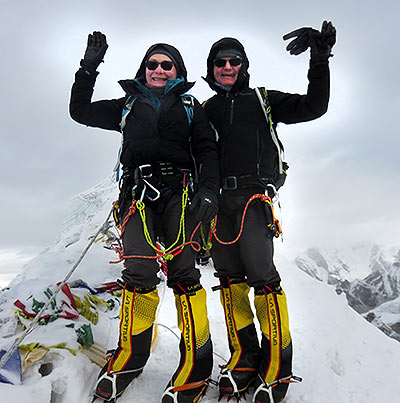
University of Maryland School of Medicine’s (UMSOM) Konstantin G. Birukov, MD, PhD , the Anesthesiology Endowed Professor of Entrepreneurial Research and Director of the UMSOM Lung Biology Research Program, alongside his wife Anna A. Birukova, MD , Professor of Medicine at UMSOM and Director of Pulmonary Basic Research, made the unfathomable climb to the top of Mount Everest this past spring.
Their motivation behind the climb was simple: they believed in what they were doing. Their drive to reach the top of Everest is the same force, they say, that inspires them in their research as physician-scientists. Dr. Birukov’s research focuses on the pathologic mechanisms of development and resolution of vascular endothelial dysfunction and lung injury. These are two key features of many life-threatening conditions including ARDS, shock/trauma, sepsis, and others. Dr. Birukova’s research focuses on molecular regulation of the vascular endothelial barrier and inflammation in lung disease.
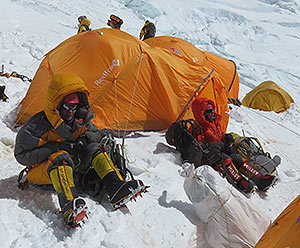
On April 12, Drs. Birukov and Birukova arrived at the Everest Base Camp in Nepal to embark on their two-month-long expedition. They spent nearly 40 days in subzero temperatures at altitudes above 18,000 feet. During several of their acclimatization climbs to the Nepalese mountain, Lobuche, and Mount Everest high camps, they reached astonishing altitudes of 20,000 and 23,000 feet. On average, climbers require three to four weeks to adapt to the high-altitude, low-oxygen environment. As second-time climbers to Mount Everest, they were well-versed in the necessary preparations to survive the summit.
“Over the years, our marathon training has helped us to prepare,” said Dr. Birukov. “We have frequented over 20-mile-long hiking trails at Great Falls Park. We also prepared ourselves by making a couple of “Rim-to-Rim-to-Rim” 47-mile, non-stop hikes in the Grand Canyon. We even summited another 26,781-foot-high Himalayan peak, Manaslu, a few years earlier and accomplished less-demanding summits including Montblanc in the French Alps and Kilimanjaro in Tanzania.”
Along with staying in shape and maintaining a healthy diet, the couple prepared a “survival pack” for the summit which consisted of the following items: climbing gear, zinc sunscreen, one-piece down suits, boots, clothing for inner layers, insulated socks, gloves, mittens, and eye protection.
“Staying in the Base Camp, we were training every day, doing ice climbing and steep hikes to maintain our fitness. Our meals mainly consisted of vacuum dried foods, vegetables, rice, and tea,” said Dr. Birukov.
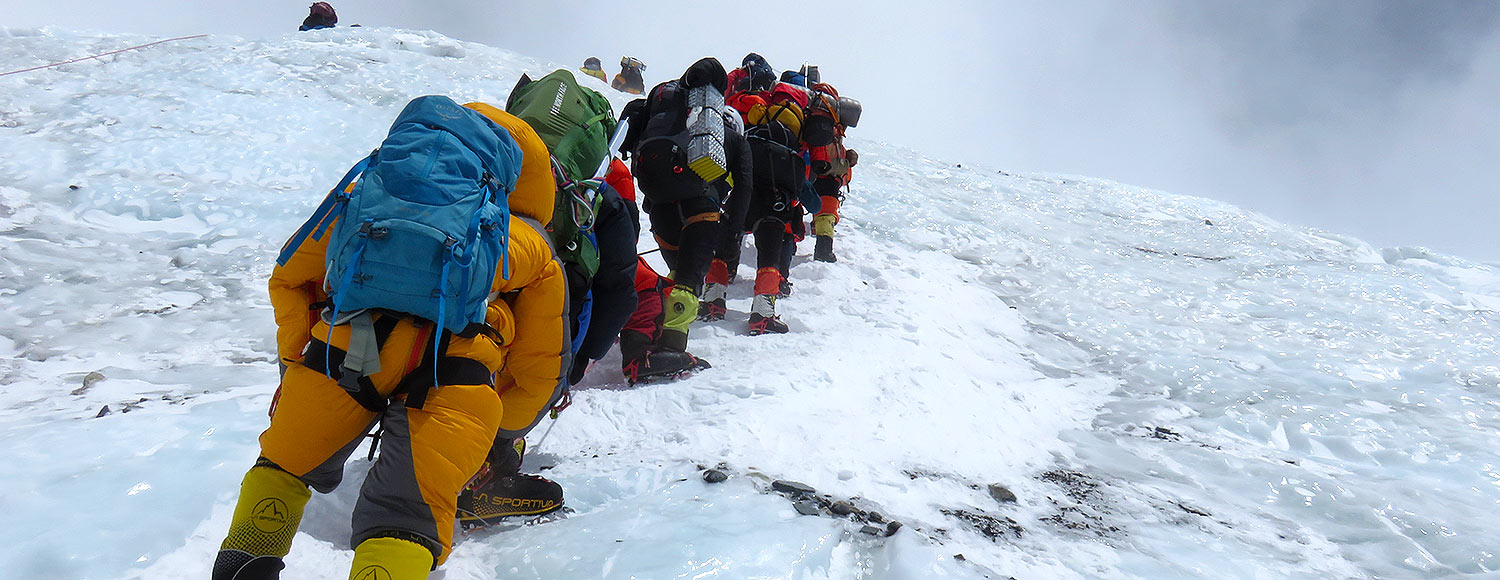
Finally, a “climbing window” opened for May 16-18, with a “mild” temperature of -20 degrees Fahrenheit and winds less than 45 mph. On May 14, the couple started their final climb. Accompanied by three Nepalese Sherpas, they endured 8 to 12-hour hikes to each of the four high camps. The weather was not cooperative as predicted, and four climbers were reported lost due to wind and blizzard conditions. On May 17, at 9 p.m., the couple started their final push from the South Col (Camp 4, 26,300 feet) to the summit. It took nearly five hours to reach the Balcony (27,600 feet), and another six hours to arrive at the South Summit (28,704 feet). Unfortunately, Dr. Birukov developed shortness of breath due to an earlier respiratory infection, so he decided to turn back. Dr. Birukova and two sherpas continued their climb to the top. Dr. Birukova summited Mount Everest at 11 a.m. on May 18. The overall climb from Camp 4 and back was 21 hours.
Undoubtedly, climbing Everest involves harsh challenges and many physical dangers. Mountaineers commonly experience extreme exhaustion, nausea, vomiting, hypoxia, headaches, hallucinations, and a lack of coordination.
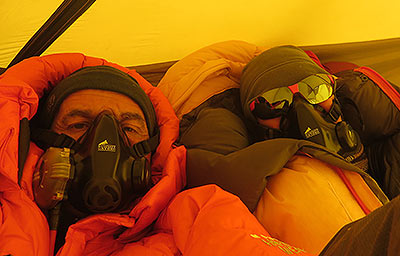
Climbers who reach altitudes higher than 8,000 meters (26,000 feet) enter the “death zone,” the area where human life cannot be sustained for an extended period because of insufficient oxygen pressure. Many climbers have lost their lives in the death zone due to developing high-altitude cerebral and lung edemas on the way down from the summit. According to the non-profit organization, The Himalayan Database, nearly 400 people have reportedly died on the Mountain. This season, 19 climbers died mainly due to exhaustion and mountain sickness.
Drs. Birukov and Birukova safely accomplished the amazing feat with preparation, perseverance, passion, and a great sense of purpose. They pursue great challenges, such as summiting Everest, for the purpose of self-improvement.
“We traveled to the U.S. in 1997 as junior scientists. We arrived with only two bags, and we knew the challenges ahead would require us to be mentally strong, said Dr. Birukov. “We have always believed that every time you challenge yourself and accomplish the obstacle before you, it helps you evolve into a better person.”
Photo Gallery - Click on the image below >
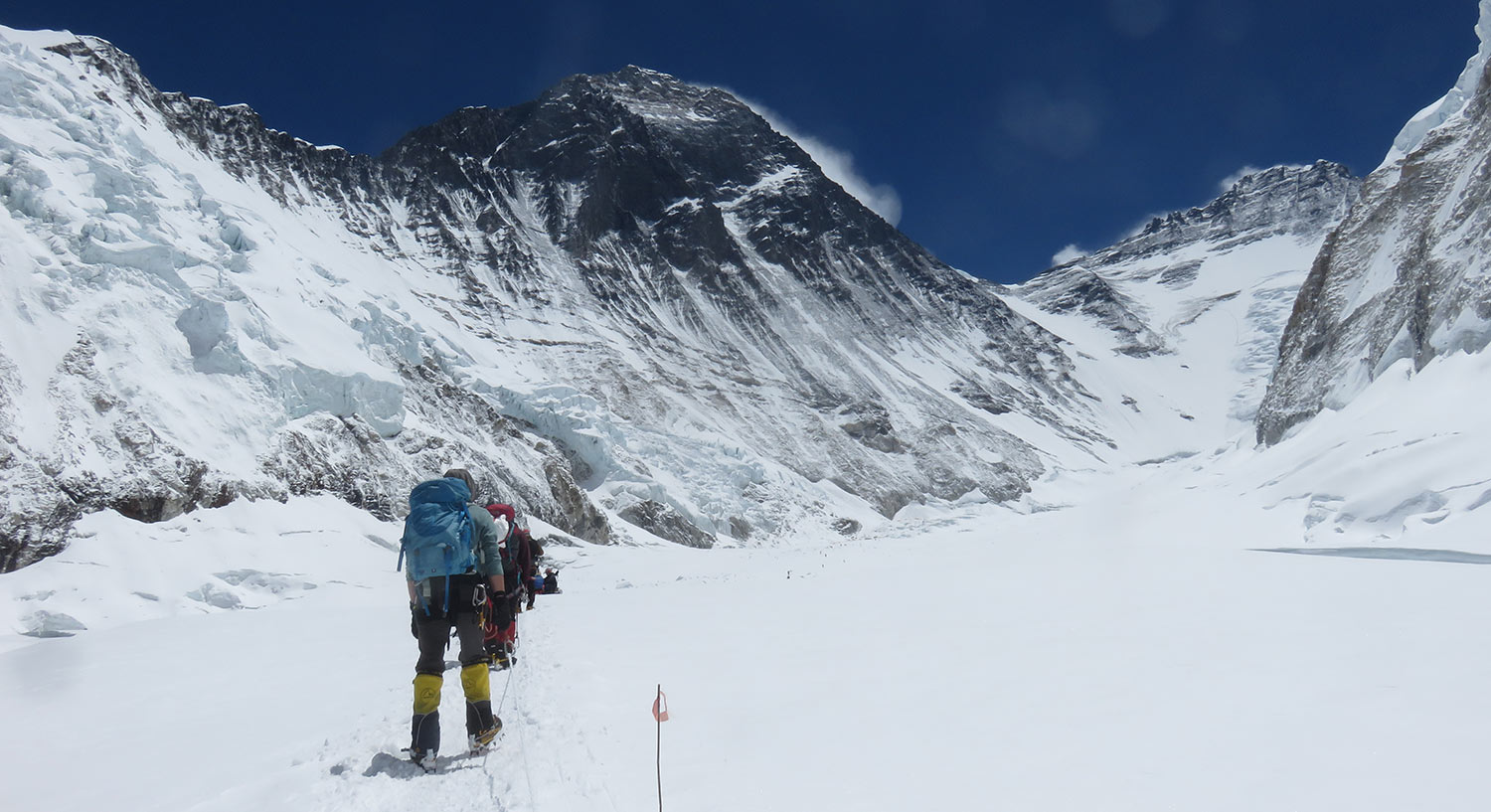
Lauren Wright Public Affairs/Community Health Specialist Managing Editor, SOM News Office of Public Affairs & Communications University of Maryland School of Medicine [email protected] Office: 410.706.7508
Comment on this Story

British woman gored by Himalayan yak during Everest hike
A British woman was gored by a Himalayan yak while on FaceTime to her family as she trekked up Mount Everest .
Emma Keen, 42, was hiking to the Everest base camp with a group to raise funds for a kidney charity when she was attacked by the animal.
The shop manager, from south Wales, was left bleeding heavily and with a three-inch cut to her leg, but managed to finish the expedition on horseback after getting 10 stitches.
Ms Keen was four days into the 130km trip when she sustained the injury in Tengboche village, Nepal.
The hiker was speaking to her brother on FaceTime when she spotted the yak standing 6ft away.
She told Wales Online: “Without warning, I could hear the hoofs pounding towards me and then a sharp stabbing pain in the top of my leg. It threw me up in the air, around a metre, and I landed back down with a thud.
“Clutching my upper leg, I looked and the yak was dragging its hoof in the dusty ground ready to go at me for a second time with his horns down. I screamed and managed to raise my leg and shout.”
Fellow mountaineers rushed to Ms Keen’s aid, and she was then airlifted to hospital where her wound was treated.
Carl Marsh, a firefighter who was also on the trek, said he could see blood gushing from the leg injury and called for first aid.
Ms Keen was given 10 stitches at Lukla airport hospital. Despite her injuries, she vowed to finish the charity expedition and later rejoined her group to complete the final leg on horseback.
Ms Keen, who has raised more than £2,300 for Kidney Wales, said: “It was important that I continue with the trek, as it meant so much to me. Before I headed out for the flight, I could imagine myself at base camp – something I had been training for and looking forward to for over a year.”
She was raising money for the charity because her mother suffered from polycystic kidneys and her brother is on the transplant waiting list.
Ms Keen added: “My charity means a lot to me as my brother Peter is currently on the transplant list, desperately needing a kidney. When the accident happened, I just kept thinking of him and how he would feel if I got to base camp.”
Sign up to the Front Page newsletter for free: Your essential guide to the day's agenda from The Telegraph - direct to your inbox seven days a week.
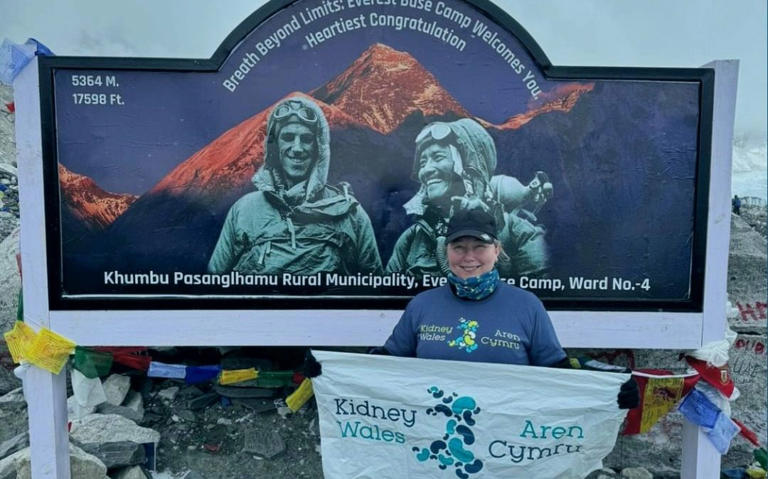
Plan Your Trip
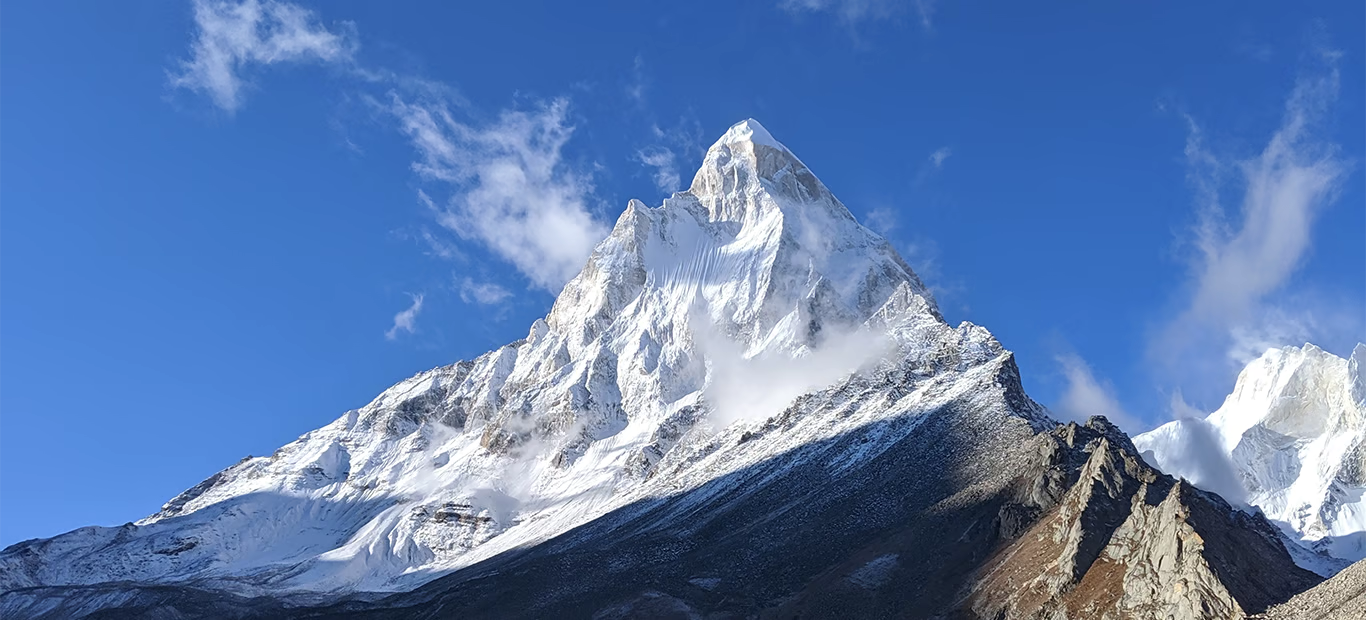
Everest Base Camp Trek
Mount Everest Base Camp Trek is an epic journey world highest mountain, takes through the landmarks of the Khumbu region, Majestically soaring mountains, colourful monasteries, friendly Sherpa and many more.
Enjoy trips with heavy discount
Want to save money? Check out our discounted tours up to 50% off, book your favorite trips & travel on your timeframe.
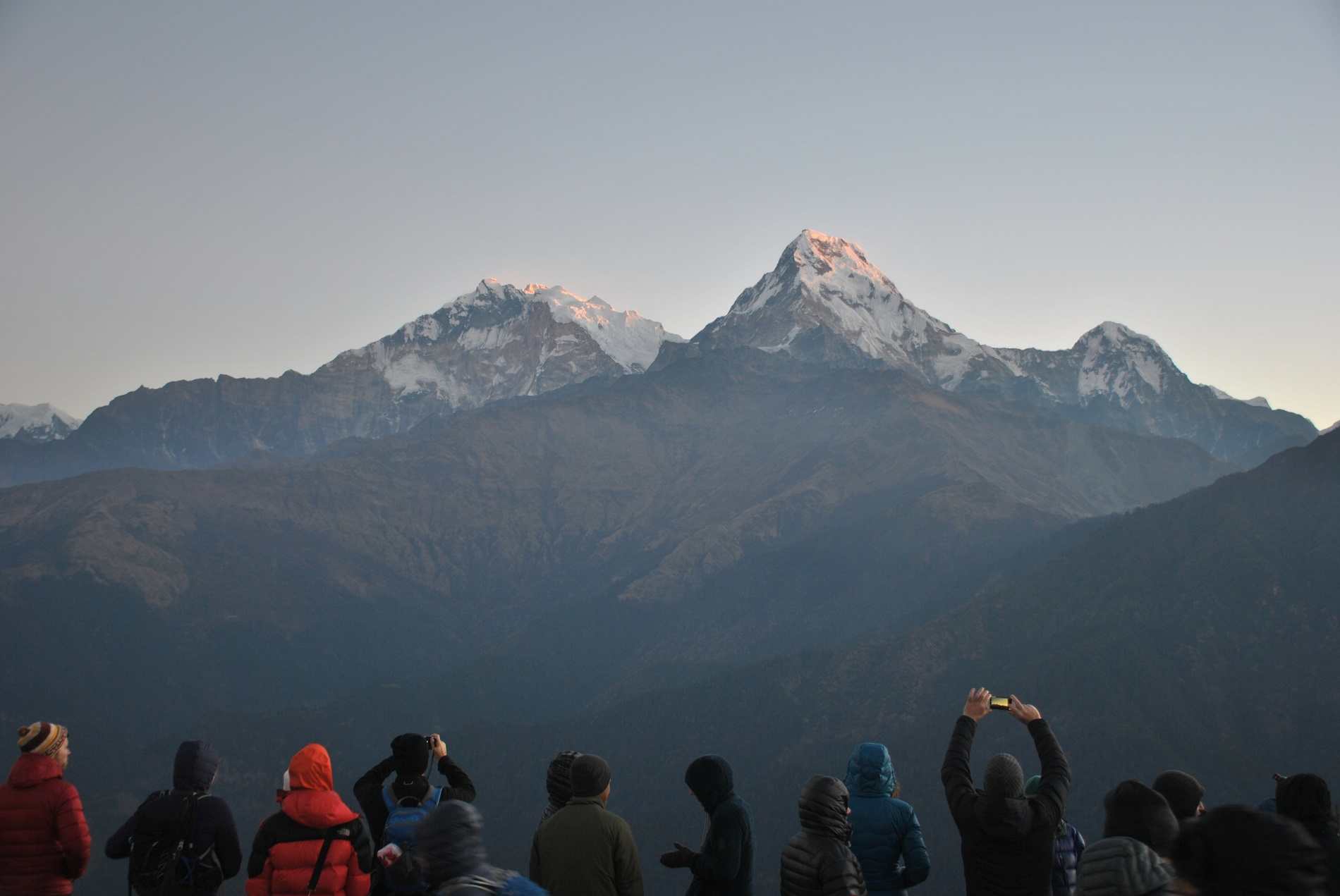
Ghorepani Poonhill Trek 3 days
$ 550.0 $ 255.0
Kailash Mansarovar Tour Yatra
$ 2700.0 $ 1455.0
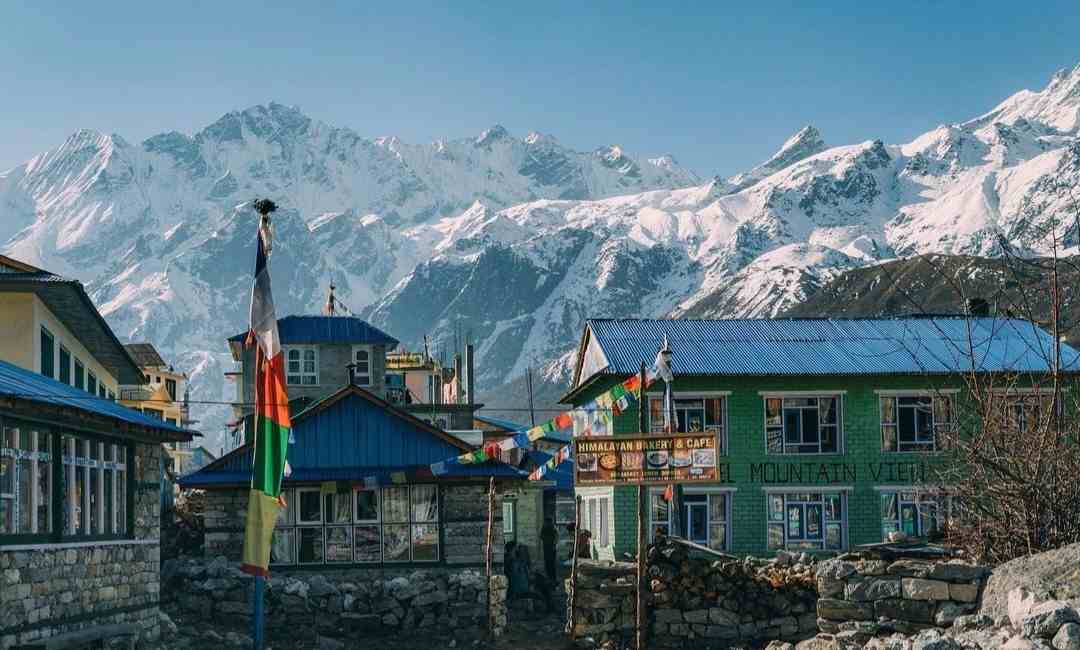
Langtang Valley Trek
$ 550.0 $ 350.0
Our Popular Travel Activities
Trekking / Hiking
Tours Sightseen
Peak Climbing
Wildlife & Nature
Biking & Cycling
Featured video.
Our Featured Expeditions
Kanchenjunga Base Camp Trek

Duration 21.0 Days
Difficulty hard
Travel Guide Yes
Altitude 5160.0 m
Explore Our Top Travel Destination
Why Choose Us
We decade of experience and success local teams
Your travel safety first, value for money & responsible adventure travel
We Treat our client not as a customers but as a friend
we present to you the trip of the month
Everest Base Camp Trek is the most popular trekking route in the world.
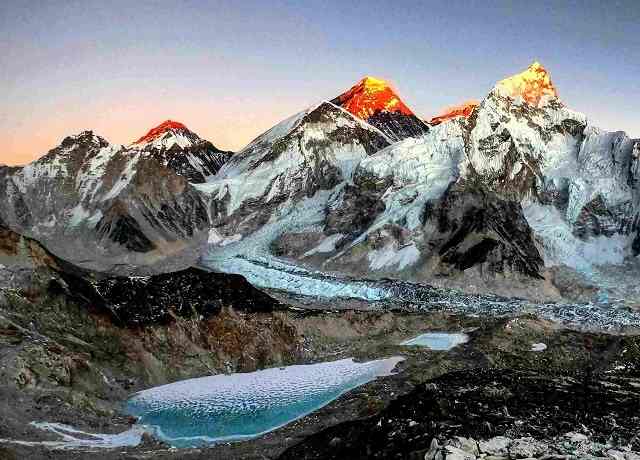
Everest Base Camp Trek 14 days | EBC Trekking
$ 1350.0 $1100.0
Duration: 14.0 days
Difficulty: 14.0
Tour Guide: Yes
Altitude: 5545.0
what our client has to say
Amazing Mardi Himal Trek
I had an incredible experience with Bold Himalaya on the Mardi Himal Base Camp Trek. The trek treated me to awe-inspiring landscapes, picturesque villages, and the heartfelt hospitality of the locals, making it an unforgettable journey.
Reaching the Mardi Himal Base Camp amidst the majestic Himalayan peaks was a surreal and unforgettable moment. I highly recommend this adventure of a lifetime to all
Travelled Date : 2023-07-27
Excellent company for Mera Peak Climbing in Nepal
Our Genuine recommendation of Mera Peak Climbing on Tripadvisor I did Mera peak climbing in Nepal with Bold Himalaya everything was a perfectly organized trip from start to end. Sobit organized the trip for us we had a really lifetime experience. The climbing guide Pasang was very skilled, and professionally committed to their job, porter was very nice and helpful If you are looking for peak climbing in Nepal book without hesitation with Bold Himalaya
Travelled Date : 2023-06-07
Rewarding trekking to Upper Mustang
Our Review of Upper Mustang Trek in Trip Advisor The upper Mustang trek was well designed by our trek planer of bold Himalaya. A rewarding adventure through the wonderful area of the world with excellent guidance and support. All the trekking members were helpful and experts. Me and my colleague really have a great time with the Bold Himalaya family. Comfort accommodation, sugar trekking guides, and porters made our trips full of joy. I really thank this agency for making my vacation a memorable scenery of my life
Travelled Date : 2023-02-27
Singaporean
Wonderful tibet experience.
Reallyamazing tour to Tibet. Our guide Norbu was very knowledgeable. We were 3 groups of friends travelling to central Tibet via Bold Himalaya treks. He handles our group and all food and accommodation were good. Nice roads and people of the Tibet were amazing. Potala Palace and Lhasa were nice to visit.
Travelled Date : 2022-11-24
Amazing Experience of Everest Base Camp Trek in Himalaya
Recommended of Everest Base Camp Trek in Tripadvisor I completed 14 days of Everest Base Camp Trek with my friends, we found excellent service from start to end. The team takes care of our everything. we chance to visit the monastery, sherpa museum, experience beautiful high Himalaya Thank you for everything Bold Himalaya Team Looking forward to Three pass trek next year
Upcoming Departures
Please choose the dates you prefer for the trips you're interested in.
Our Most Popular Trips
Here are some popular tours that thousands of travelers visit every year. pick that you are interested in & travel as you wish

Nepal Experience Tour
$ 900.0 $ 690.0
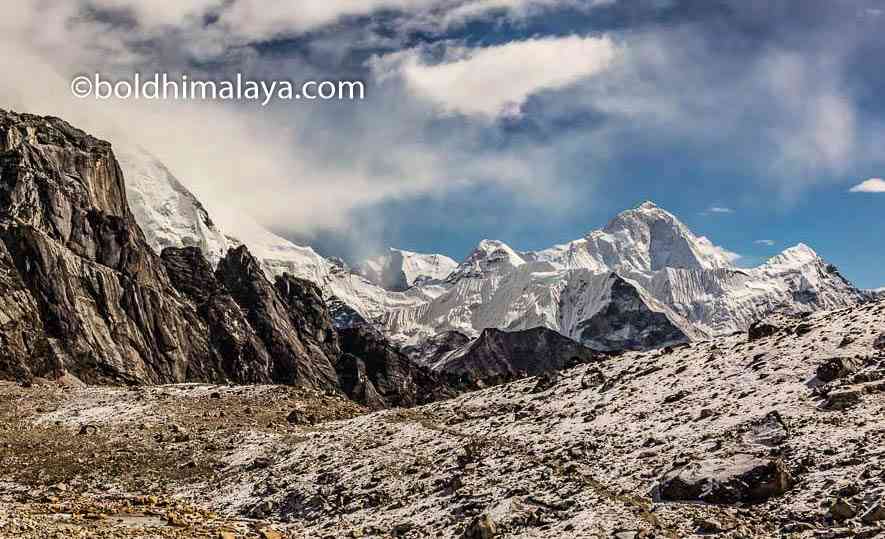
Everest Three Pass Trek
$ 2000.0 $ 1600.0
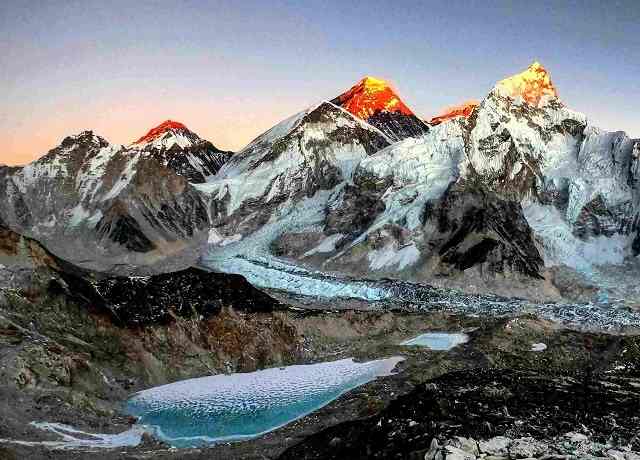
Mount Everest
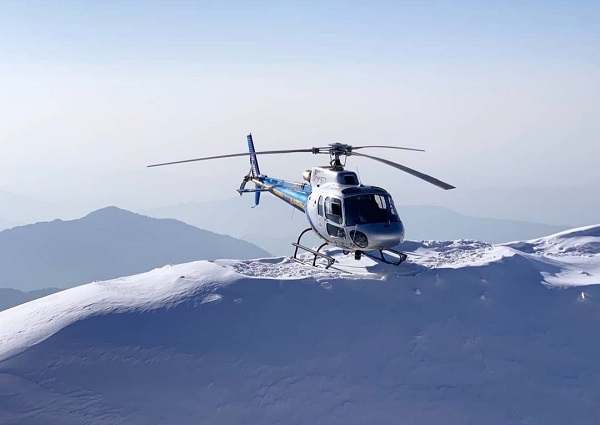
Luxurious Things to Do in Nepal

Best 5-Day Kathmandu Valley Tours

Main Things to know before you go to Everest Base Camp Trek
Ace the Himalaya
Trekking in Nepal, Peak Climbing, Mt Biking and Tours in Nepal, Bhutan and Tibet
- Everest Base Camp Trek - 14 Days
- EBC Trek with Helicopter Return - 12 Days
- Everest Base Camp Luxury Trek - 14 Days
- Everest Base Camp with Island Peak - 19 Days
- Everest Three Passes Trek - 20 Days
- Annapurna Base Camp Trek - 13 Days
- Annapurna Circuit Trek - 19 Days
- Ghorepani Poon Hill Trek - 9 Days
- Manaslu Circuit Trek - 15 Days
- Gokyo to Everest Base Camp Trek - 17 Days

Elevation Gain during Everest Base Camp Trek
Uncover daily elevation gains on the Everest Base Camp Trek, guiding your ascent through Himalayan heights with each step.
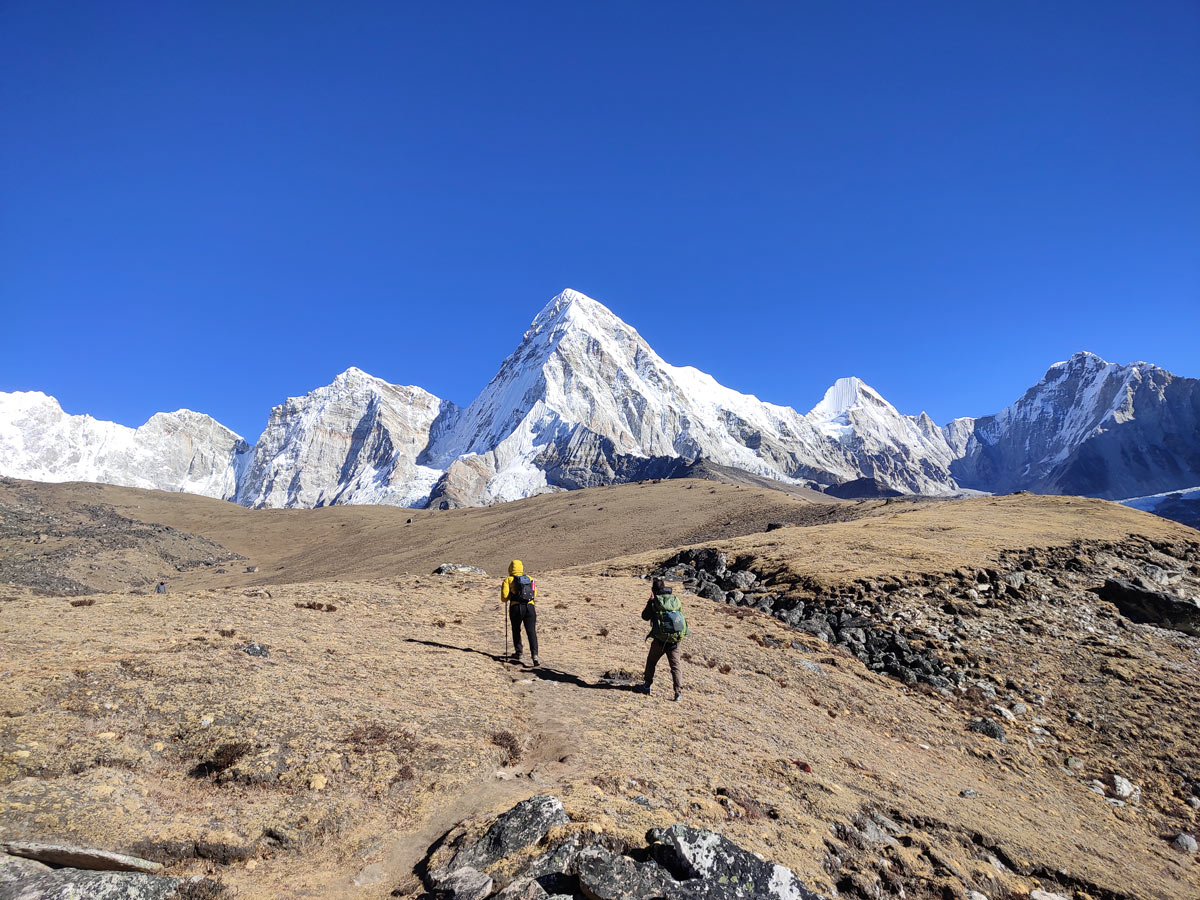
Nestled amidst the heart of the Himalayas in Nepal, the Everest Base Camp trek is among the best hikes in the world. This iconic trail has been the dream adventure of intrepid trekkers for a long time now.
While many make their Everest dream come true, many are held back by the thought of the challenges they might encounter during the trek.
And one of those challenges putting the trekkers in a dilemma is the Everest base camp trek elevation gain.
Indeed, conquering the Everest Base Camp trekking is not an easy feat given the challenging altitude range that it features.
However, it is not a factor that should be holding you back as it can be tackled with proper knowledge.
Therefore, in this blog, we have a detailed breakdown of the Everest Base Camp trek elevation gain to dispel your worries and instead prepare you for your dream adventure along with providing some insider tips.
Understanding Elevation Gain
While the numbers concerning elevation gain on the Everest Base Camp trek might look like mere statistics at a cursory glance, it is an important part of the trekker’s journey and demands thorough preparation and understanding.
Simply put, elevation gain refers to the total amount of vertical ascent that you will encounter during the trek. It is measured in feet or meters. In the case of the Everest Base Camp trek, the elevation gain is substantial.
The trekking distance from Lukla to Everest Base Camp , which spans approximately 65 kilometers (40 miles), entails covering an elevation difference of more than 2500 meters (8,202 ft).
Therefore, it is important to know the challenges and prepare accordingly.
Everest Base Camp Trek Elevation Profile
The Everest Base Camp trek is not just a journey across distances but also a rollercoaster traversing across a variety of elevations. For a successful and enjoyable experience, understanding the elevation gain is crucial.
In this section, we delve into the elevation profile of the Everest Base Camp trek along with key landmarks on each section of the trek, allowing you to understand what to expect each day during your EBC adventure and prepare accordingly.
Lukla to Phakding
The beginning of the trekking to Everest Base Camp is marked by a scenic flight to Lukla , the gateway to Everest, which also holds the reputation for being the most dangerous airport in the world.
The altitude at Lukla is high in itself, especially for people coming from low-altitude regions. Already starting at an elevation of 2,840 m (9,317 ft) in Lukla, the Everest Base Camp trek is truly a trek for adventurers.
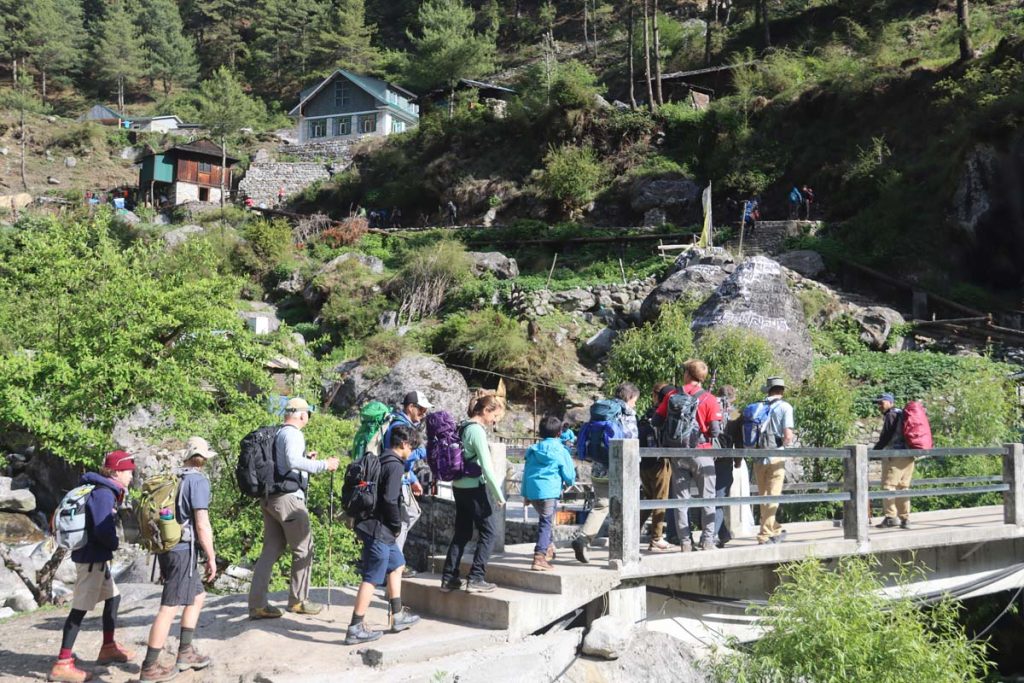
Contrary to many other treks, the initial leg of the Everest Base Camp trek begins with a gentle descent as the trekkers make their way to Phakding at 2,610 m (8,563 ft). This allows the trekkers to ease into the rhythm of trekking.
Followed by the gentle descent alongside the Dudh Koshi River, the final part of this section features a slight ascent from Ghat to Phakding giving you a scenic introduction to the diverse landscapes of Sagarmatha National Park after an elevation loss of 230 m.
Phakding to Namche Bazaar
This section of the trek introduces you to the first major ascent as you make your way towards the bustling Namche Bazaar from Phakding. Continuing along the Dudh Koshi River, you come across a series of breathtaking suspension bridges including the Hillary Bridge.
Accompanied by the distant glimpses of Everest, you continue your ascent to cross villages like Monjo and Larja to finally reach Namche Bazaar after an ascent of around 3 hours.
Starting from an elevation of 2,610 m, you conclude at 3,440 m (11,286 ft) at Namche Bazaar which means an elevation gain of more than 800 meters. Following this significant gain, you will rest and acclimatize at Namche Bazaar to prepare for the journey ahead.
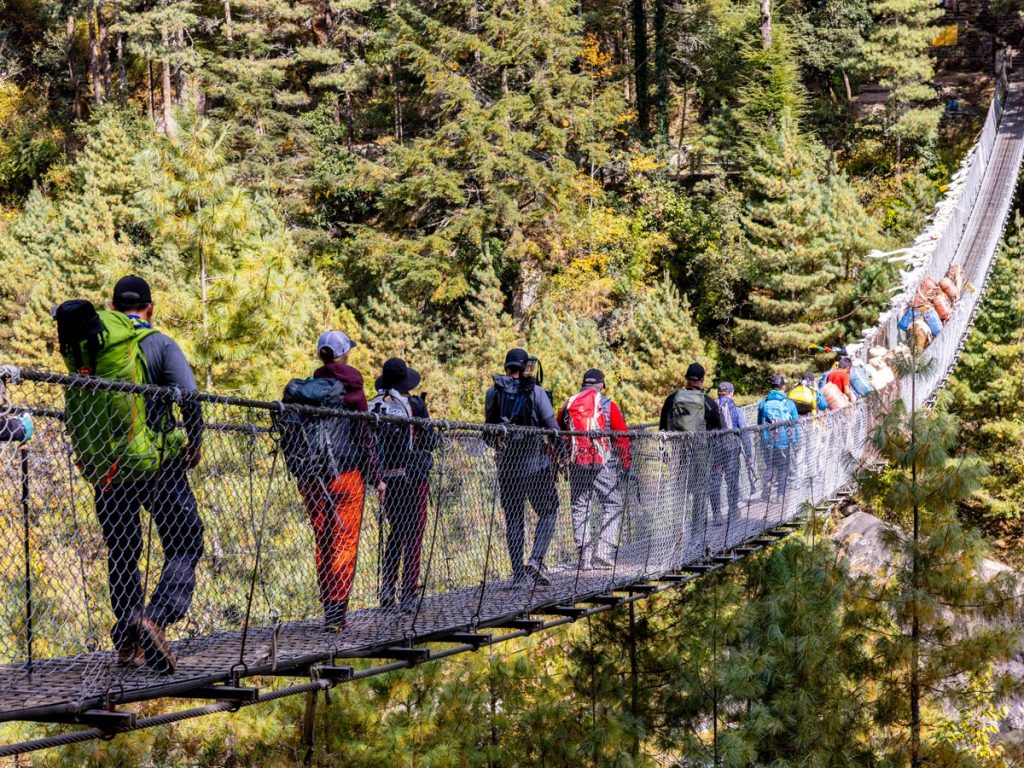
Your next day will be spent acclimatizing at this vibrant hub of Sherpa culture where you can explore the local market and museums. Besides that, an acclimatization hike to Hotel Everest View allows you for quicker acclimatization.
This hike takes you to 3,880 m (12,729 ft) and brings you back to Namche Bazaar giving your body a taste of the high altitude.
Namche Bazaar to Tengboche
Upon proper acclimatization at Namche Bazaar (3,440 m), a spiritual ascent commences featuring more substantial elevation gain as you make your way to Tengboche. This leg of the trek takes you to Kenjoma.
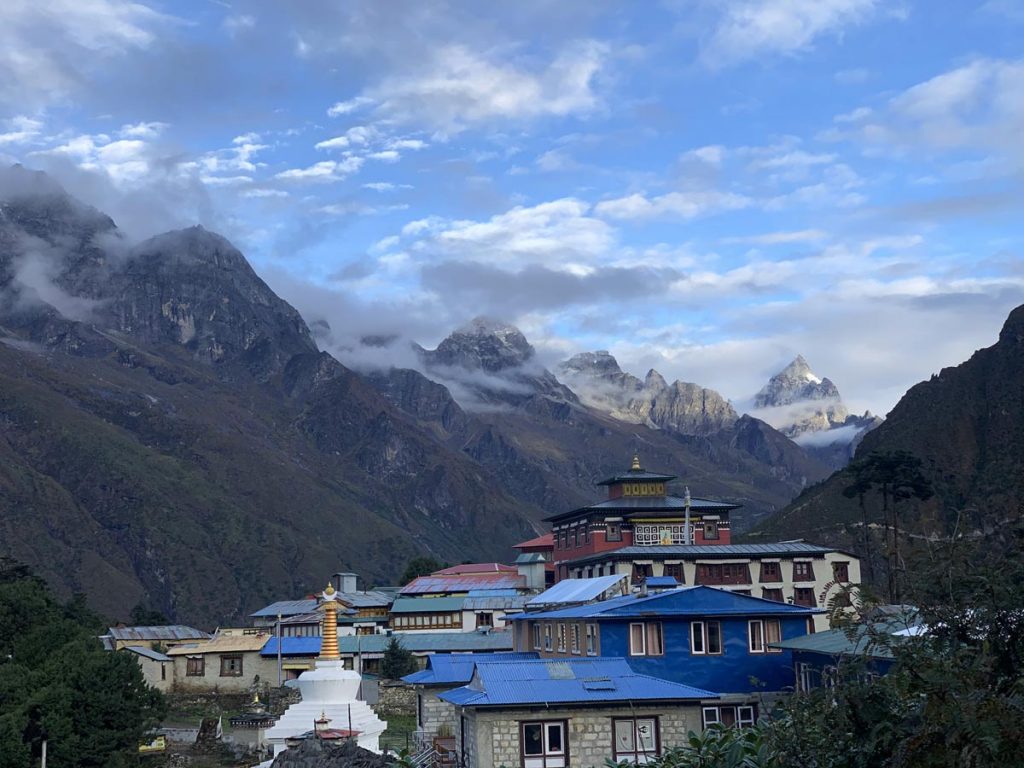
From Kenjoma, you will come across a gentle descent to reach Phunke Tenga along the dramatic yet vibrant trail adorned with rhododendron forests. After ascending around 420 meters, you will reach the picturesque village of Tengboche.
This village located at 3,860 m (12,664 ft) is home to the famous Tengboche Monastery where you get a spiritual respite amidst the adventurous journey. You will also get spectacular views of Ama Dablam, Lhotse, and Everest from Tengboche.
Tengboche to Dingboche
Continuing towards Dingboche, the trail widens and gives glimpses of the expansive valleys of the Khumbu region. This segment begins with a gentle descent towards Pangboche where you come across suspension bridges again.
A mild ascent from there takes you to Somare after crossing the tree line marking an important elevation gain in the EBC trek. From Samare to Dingboche, the landscapes transform into rugged and barren ones signifying the high altitude.
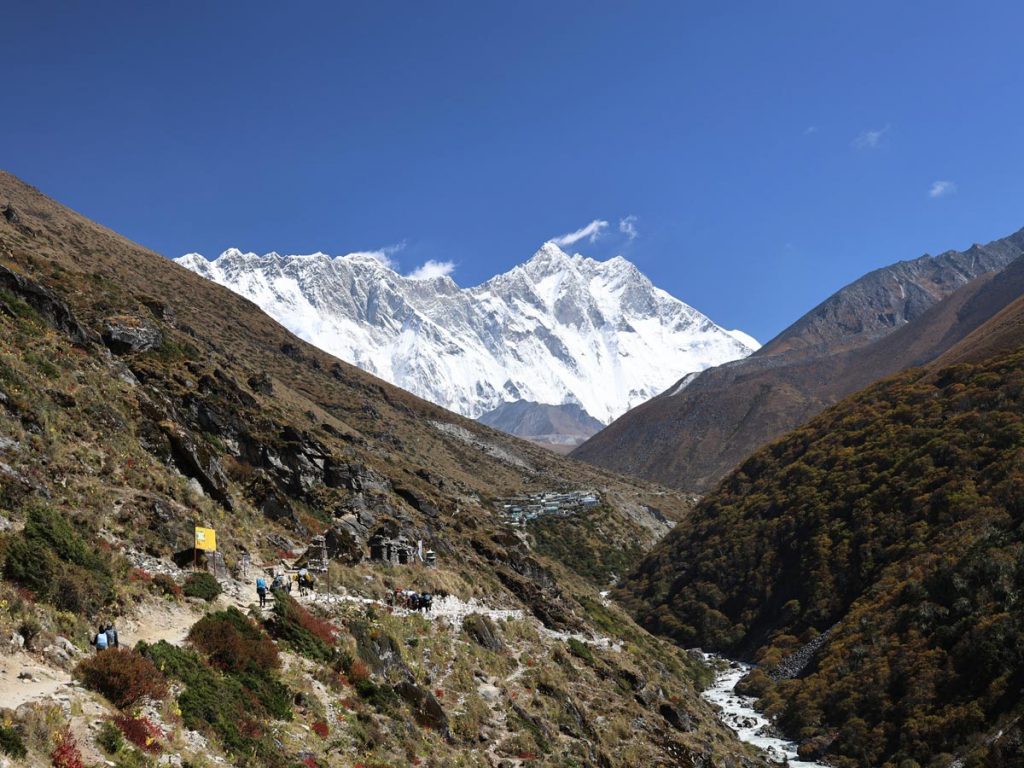
From Tengboche at 3,860 m to Dingboche at 4,410 m (14,468 ft), you will cover an elevation gap of 550 meters. Being a significant gain, Dingboche also serves as a crucial acclimatization point on the Everest Base Camp trek.
While at this serene village, you can go for a high-altitude acclimatization hike to Nangkartshang Peak at 5,083 m (16,676 ft) giving you a taste of the adventure that awaits you. However, ascend slowly as you will be going more than 600 m higher.
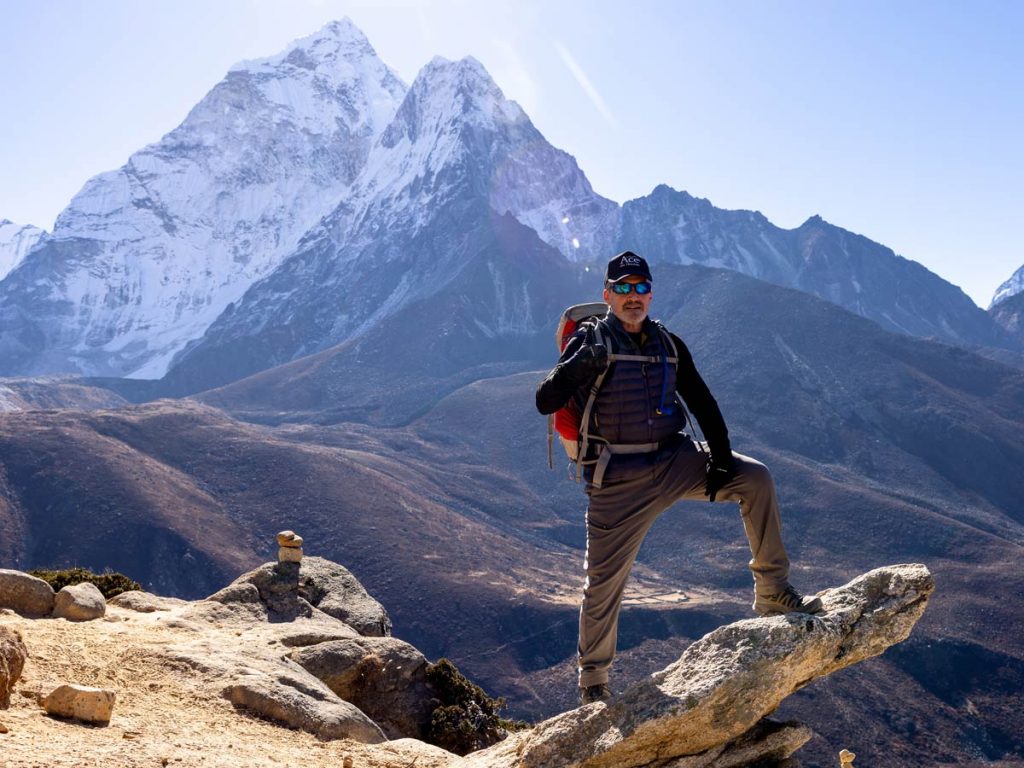
You will witness breathtaking panoramas of Lhotse (8,516m), Nuptse (7,861m), Cho Oyu (8,188m), Ama Dablam (6,812m), Peak 38 (7,590m), Makalu (8,481m), Kusum Kanguru (6,367), and Baruntse (7,163m) and make your way back to Dingboche.
Dingboche to Lobuche
Taking you closer to the jewels of the Himalayas, the segment from Dingboche to Lobuche starts with an ascent alongside the Khumbu Khola towards Thukla and finally reaches the Thukla Pass at 4,830 m (15,846 ft).
The experience here is humbling as the Thukla Pass features many memorials of those who have perished on Everest and this segment serves as a reminder of the power of nature.
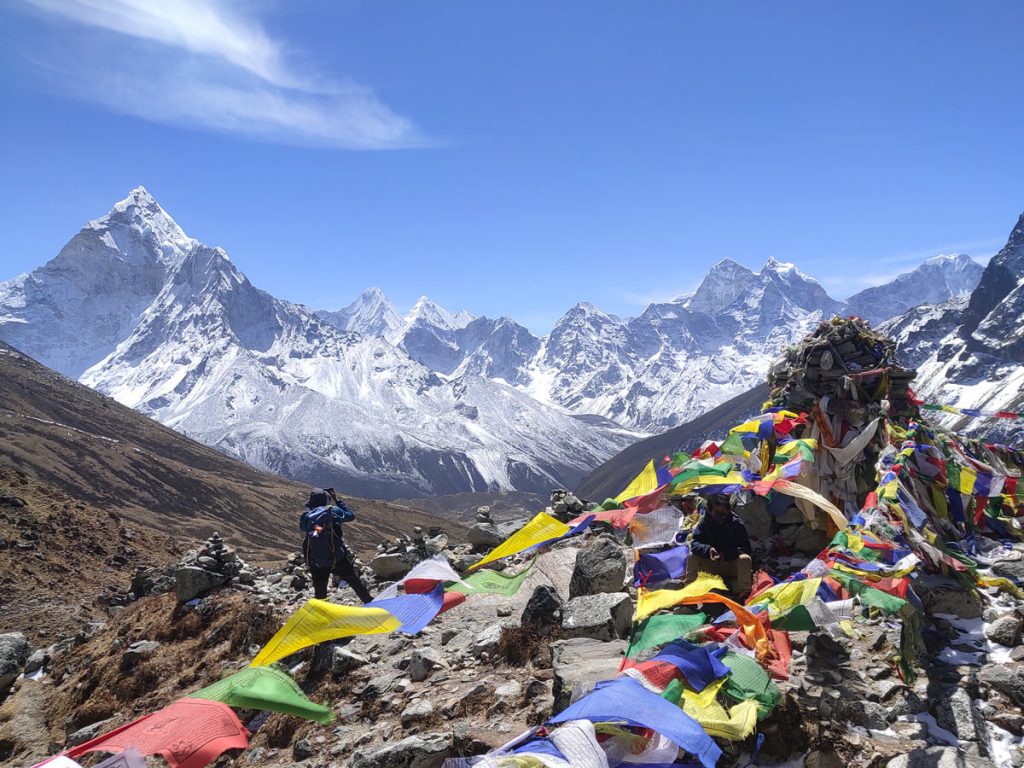
With thinned-out vegetation and thinner air, you reach Lobuche at 4,910 m (16,109 ft) where you get glimpses of the Khumbu glacier. The total elevation gain from Dingboche (4,410 m) to Lobuche is 500 meters.
While at Lobuche during your final rest before preparing to conquer the EBC, you can enjoy the majestic views of Nuptse, Changri, Pumori, Lho La, and more.
Lobuche to Gorakshep and Everest Base Camp
The final leg of your ascent on the Everest Base Camp trek is marked by the trek from Lobuche to Gorakshep followed by the trek to Everest Base Camp which is the pinnacle of this beautiful trek.
The ultimate test of endurance and stamina begins with your ascent towards Gorkshep at 5,140 m (16,863 ft) covering an elevation gap of 230 meters from Lobuche. At Gorakshep, you start seeing majestic views of the Khumbu Glacier and Khumbu Icefall.
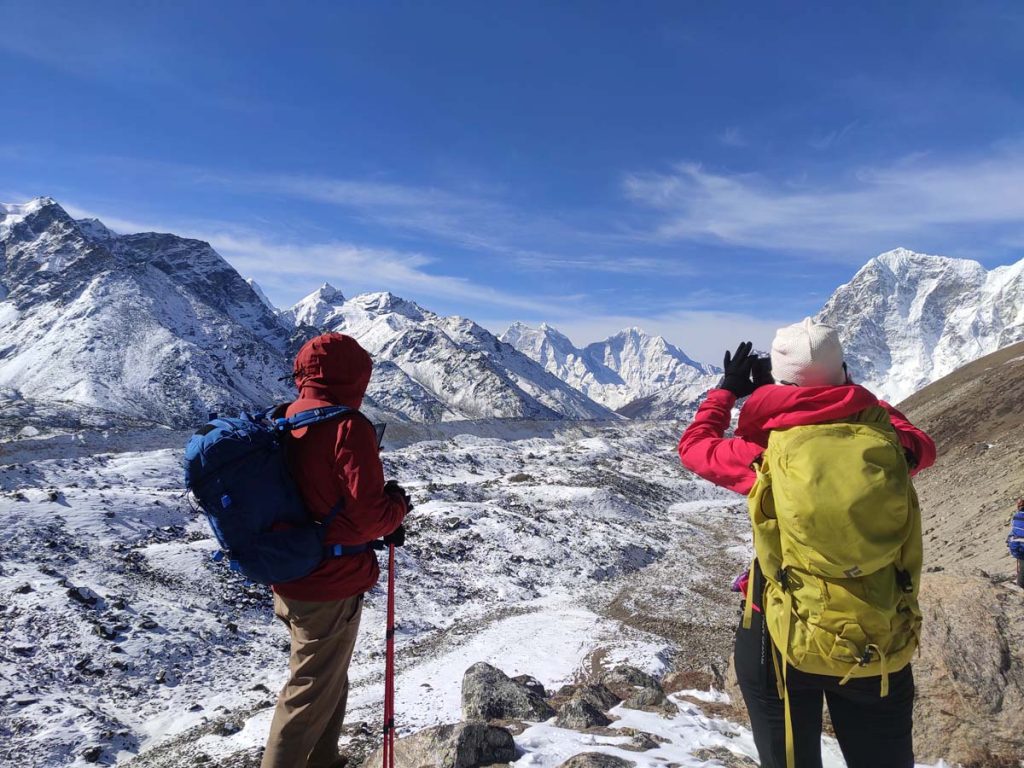
From Gorakshep, you follow an undulating, fluctuating, and rocky trail taking you all the way to the Everest Base Camp at 5,364 m (17,598 ft). The feeling of standing at the base of the highest peak in the world is truly unmatched.
Along with being humbling, the experience is truly majestic and gives you a feeling of achievement. You are treated to the spectacular panoramas from the EBC and the dramatic, yet stunning landscape blanketed in snow.
The total elevation gain for this day is 454 meters. However, you return back to Gorakshep and spend the night there, so your day is full of ascents and descents.
Gorakshep to Kalapathhar
Although optional, the journey from Gorakshep to Kalapathhar makes a usual appearance in the itinerary for Everest Base Camp. This is even more challenging as you will be going higher than the Everest Base Camp.
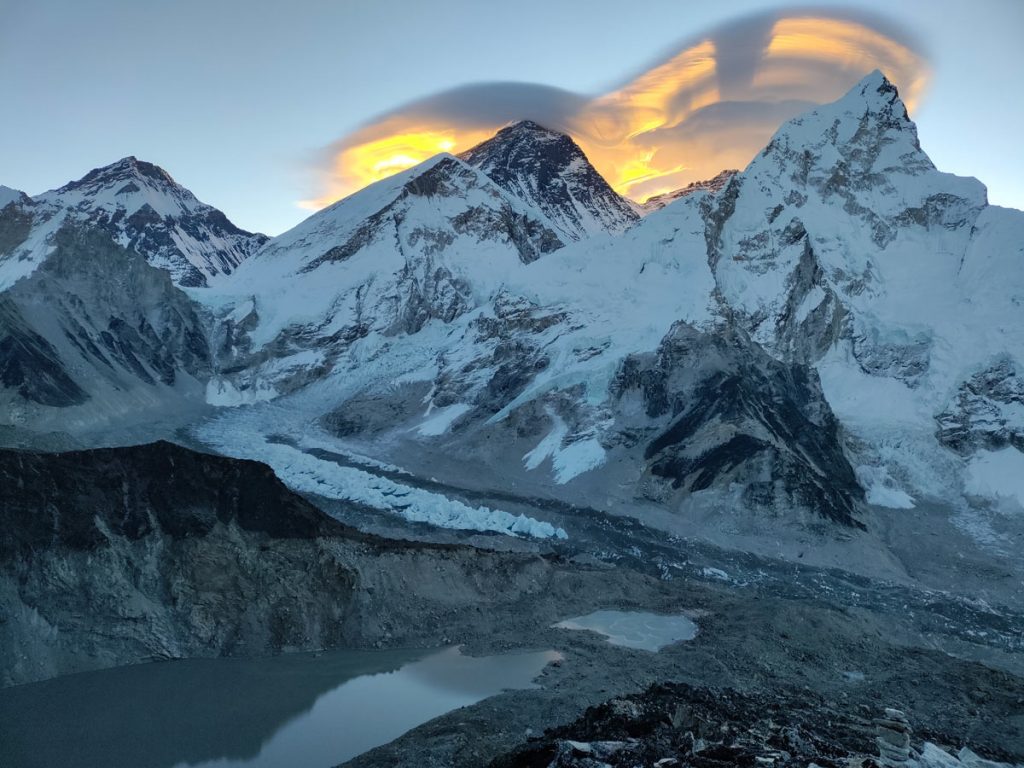
Following the steep uphill and rocky trail, you reach Kalapathhar at 5,555 m (18,225 ft) from Gorakshep. During this, you cover an elevation gain of 415 meters to get rewarded with gorgeous views from this vantage point.
On the same day, you will experience a massive elevation loss as you retrace your steps back to Pheriche at 4,240 m (13,911 ft).
Return Journey and Elevation Loss
The return journey is not as challenging because despite covering big sections of the trail, you will be descending in terms of elevation, and it poses no risk to your health.
The elevation loss is quick as you go to Pheriche (4,240 m) from Kalapathhar (5,555 m) and then to Namche Bazaar (3,440 m) followed by Lukla (2,840 m).
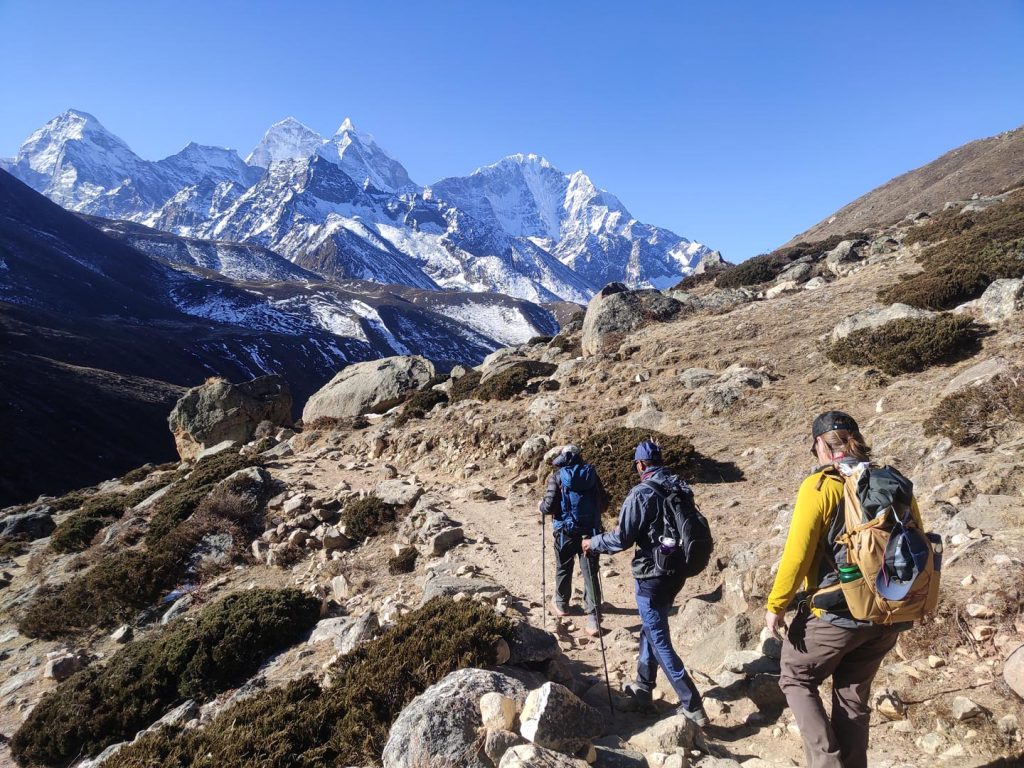
You will return through the same trail, and it allows you to reflect on your entire journey while experiencing some more of the local culture and cuisine.
The elevation profile mentioned in this blog is based on the standard itinerary of the Everest Base Camp trek. It might vary depending on your itinerary and the route chosen as there is more than one way to reach the EBC.
Effects of Altitude on Body
Ascending towards a higher altitude means entering the realm of thin air with less and less availability of oxygen as you go higher. This decrease in oxygen per breath can lead to a condition called hypoxia which further leads to altitude sickness.
Also known as acute mountain sickness, altitude sickness features a range of symptoms like shortness of breath, headache, fatigue, nausea, dizziness, loss of appetite, loss of sleep, and an increased heart rate.
Besides acute mountain sickness (AMS), it can also lead to other altitude-related conditions like High Altitude Pulmonary Edema (HAPE) , High Altitude Cerebral Edema (HACE), and more.
While these symptoms begin with a mild effect, they can worsen with elevation gain and become even life-threatening if proper measures are not taken to prevent altitude sickness.
Acclimatization Strategies for EBC
Acclimatization is the ability of your body to adjust and adapt to the decrease in oxygen as you gain more elevation. Therefore, for those embarking on the Everest Base Camp trek, the importance of acclimatization cannot be overstated.
However, acclimatization is a gradual process and not a magical switch. Below are some of the strategies that allow you to properly acclimatize during the EBC trek:
- The key to acclimatization is ascending gradually while allowing your body the time it needs to adjust to the gradual elevation gain. This is the reason why two or three days of your EBC trek itinerary are strategically dedicated to acclimatization and resting.
- On the said acclimatization days, go for short hikes at nearby places as it allows you to follow the ‘climb high sleep low’ rule which further helps with acclimatization.
- While on the EBC trek, take proper care of your nutrition and hydration. Drinking lots of water can help your body acclimatize faster. Have a properly balanced diet including high protein snacks. Avoid alcoholic drinks.
- Listen to your body and trek at a gentle pace. Don’t over-exert yourself. Instead, take more days if need be.
- Although altitude sickness can hit anyone despite the physical fitness, preparing in advance can enhance your cardiovascular health which can help you adjust to the low oxygen level.
- If your symptoms worsen, descend to a lower altitude and rest well. You can continue the trek once you are fit again.
Preparation for Everest Base Camp Elevation Gain
- Start physical preparation well in advance and stick to a regimen that focuses on your cardiovascular health, stamina, and endurance. Go for activities like swimming, cycling, and running.
- If possible, go for shorter hikes as a part of altitude training taking you to a higher altitude than where you stay. This induces conditions similar to the trek and allows your body to adjust.
- Research well about the challenges regarding altitude and study the symptoms of altitude sickness for mental preparation. Read about tips to prevent altitude sickness like acclimatization.
- Include suitable gear and accessories in your packing list for the Everest Base Camp trek to avoid any added challenges with the elevation.
Related Blogs & Articles
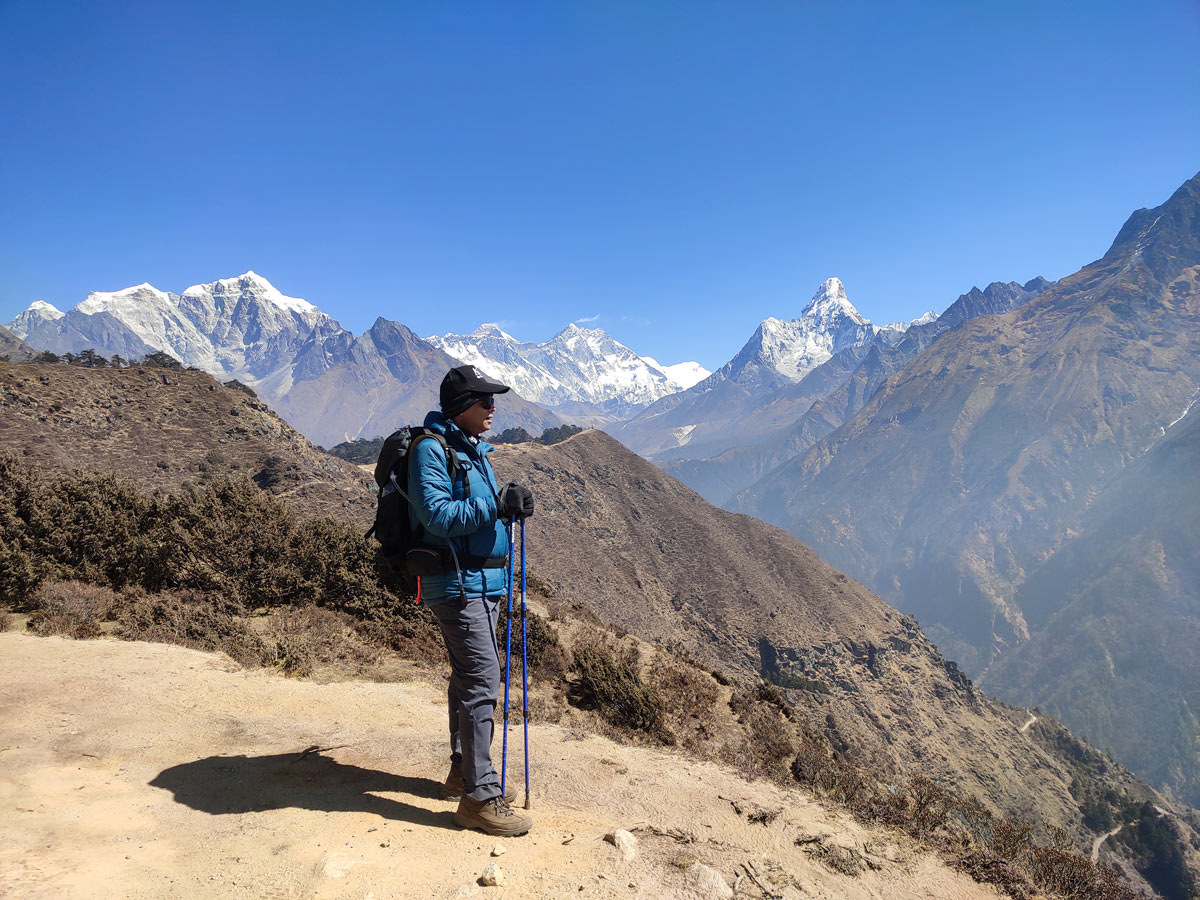
How physically fit should you be for Everest Base Camp Trek?
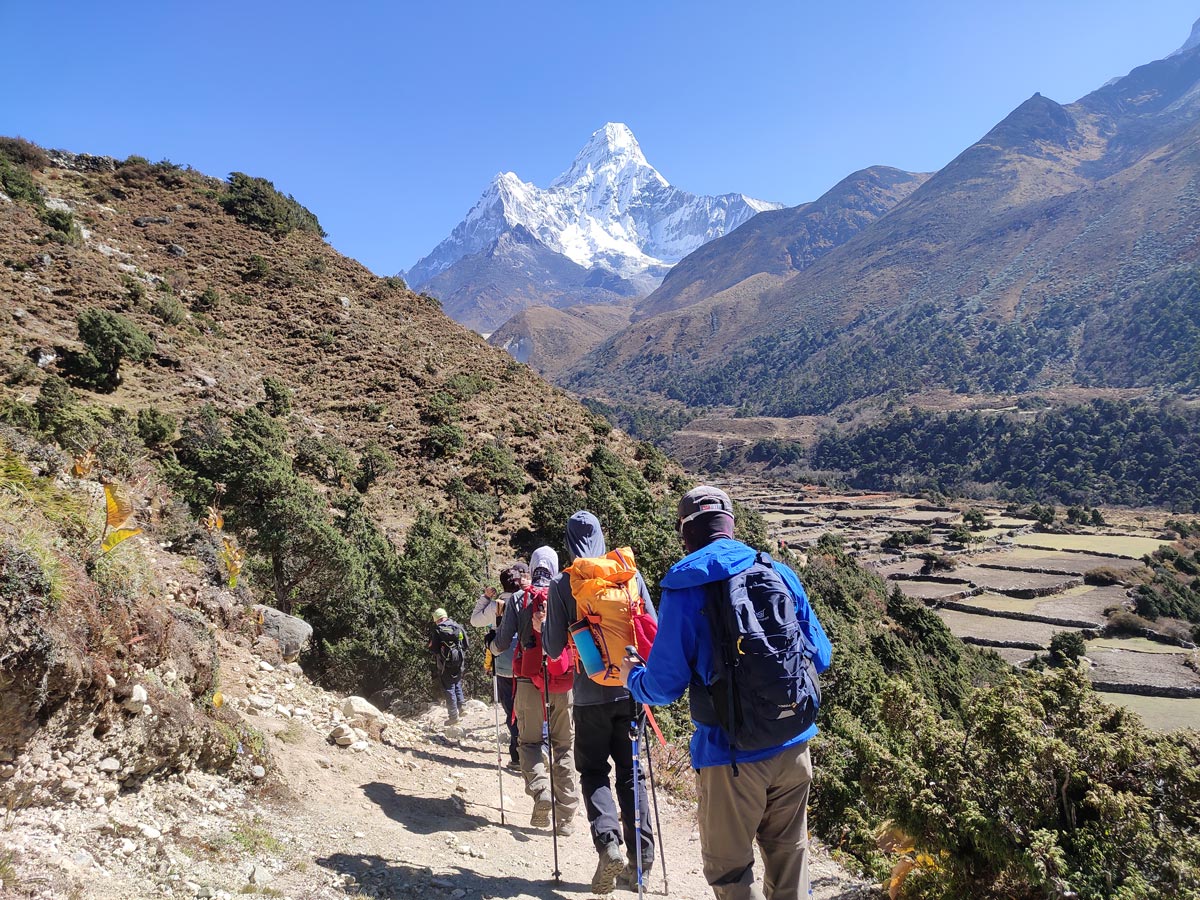
Shower and Laundry Services During Everest Base Camp Trek
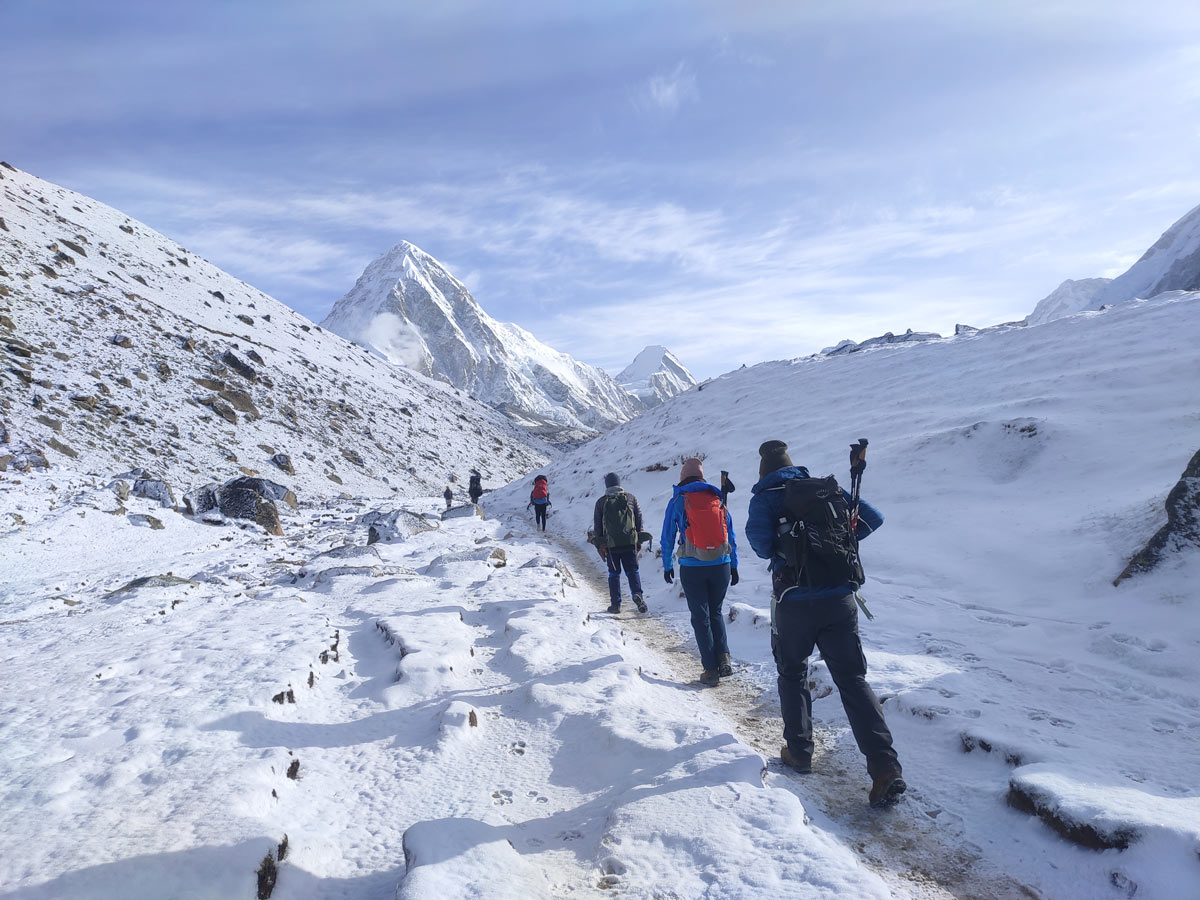
Demystifying Everest Base Camp Trek Difficulty: What You Need to Know

- Name This field is for validation purposes and should be left unchanged.
Trekking in Nepal
Climbing and expedition, cultural tour and sightseeing, cycling and mountain biking, luxury treks, luxury tours, multi country tours, voluntourism trips, extend your trip.
- Everest Panorama Trek – 9 Days
- EBC Trek with Helicopter Return – 12 Days
- Everest Base Camp Trek – 14 Days
- Gokyo Lake Trek – 13 Days
- Gokyo and Renjo La Pass Trek – 14 Days
- Everest Base Camp Trek without Lukla Flight – 17 Days
- Gokyo to Everest Base Camp Trek – 17 Days
- Everest Base Camp with Island Peak – 19 Days
- Everest Three Passes Trek – 20 Days
- Everest High Passes and Island Peak – 23 Days
- Classical Everest Base Camp Trek – 21 Days
- Langtang Valley Trek – 10 Days
- Langtang Valley Ganja La Pass Trek – 14 Days
- Langtang Helambu Trek – 17 Days
- Ghorepani Poon Hill Trek – 9 Days
- Mardi Himal Trek – 10 Days
- Annapurna Base Camp Trek – 13 Days
- Himalayan Highlights – 13 Days
- Nar Phu Valley Trek with Annapurna Circuit – 18 Days
- Annapurna Circuit Trek – 19 Days
- Tilicho Lake Trek With Thorong La Pass – 19 Days
- Khopra Danda Trek – 11 Days
- Shivapuri-Chisapani Trek – 4 Days
- Upper Mustang Trek (Drive & Trek) – 16 Days
- Tsum Valley Trek – 16 Days
- Manaslu Circuit Trek – 15 Days
- Dhaulagiri Circuit Trek – 21 Days
- Upper Dolpo Trek – 25 Days
- Kanchenjunga Base Camp Trek – 29 Days
- Yala Peak Climbing – 13 Days
- Island Peak Climbing – 15 Days
- Mera Peak Climbing – 19 Days
- Everest Base Camp and Lobuche East – 18 Days
- Tent Peak Climbing with Annapurna Base Camp – 18 Days
- Pisang Peak and Thorung La Pass – 21 Days
- Ama Dablam Expedition – 29 Days
- Kathmandu Cultural Heritage Tour – 3 Days
- Kathmandu Heritage – 3 Days
- Inheritances of Kathmandu – 4 Days
- Glimpses of Kathmandu & Nagarkot – 5 Days
- Kathmandu and Pokhara Unveiled – 5 Days
- Explore Kathmandu – 6 Days
- Glimpse of Nepal – 8 Days
- Nepal Heritage Tour – 10 Days
- Nepal Adventure Tour – 11 Days
- Nepal Multi Sports Adventure – 11 Days
- Nepal Vista – 10 Days
- Nepal Highlights – 14 Days
- Experience Nepal – 15 Days
- One Day Biking Trip – Kathmandu – 1 Day
- Annapurna Circuit Biking – 14 Days
- Upper Mustang Biking – 16 Days
- Kathmandu Valley Rim Biking – 8 Days
- Annapurna in Luxury – 9 Days
- VVIP Everest Base Camp Trek – 10 Days
- Everest View Luxury Trek – 11 Days
- Everest Base Camp Luxury Trek – 14 Days
- Everest Base Camp Deluxe Trek – 16 Days
- Mt Everest Base Camp to Gokyo Trek – 19 Days
- Kathmandu Luxury Tour – 3 Days
- Kathmandu and Pokhara Luxury Tour – 5 Days
- Nepal Multi Sport Luxury Adventure – 11 Days
- Best of Nepal – 14 Days
- Trishuli River Rafting – 1 Day
- Everest Base Camp Helicopter Tour – 1 Day
- Everest Base Camp Heli Tour with Gokyo Extension – 1 Day
- Langtang Heli Sightseeing – 1 Day
- Pokhara and Annapurna Heli Sightseeing – 1 Day
- Paragliding in Nepal (Pokhara) – 1 Day
- Scenic Mountain Flight (Everest Flight) – 1 Day
- Ultra Light Flight – 1 Day
- Jamacho Day Hike-One day hiking trip – 1 Day
- Kathmandu Uncovered with Nagarkot – 1 Day
- Day Tour to UNESCO Heritage Sites – 1 Day
- Nepal and Tibet – 15 Days
- Nepal and Bhutan – 15 Days
- India, Nepal and Bhutan – 19 Days
- Nepal, Tibet and Bhutan – 20 Days
- Arupokhari School Volunteer Program – 14 Days
- Rebuild Home Volunteer Program – 9 Days
- Bardiya Jungle Safari – 4 Days
- Chitwan Jungle Safari – 3 Days
Trekking in Bhutan
Festival tours, motorcycling.
- Druk Path Trek – 8 Days
- Chomalhari Trek – 12 Days
- Laya Ghasa Trek – 18 Days
- Bhutan Vistas Tour – 5 Days
- Cultural Heartland Tour – 10 Days
- Hidden Valley – 11 Days
- Bhutan Multi Sports Tour – 11 Days
- Paro Tshechu Festival – 8 Days
- Punakha Tsechu – 9 Days
- Trongsa Lhuntse Tshechu – 9 Days
- Bumthang Tangbi – 11 Days
- Bhutan Ura Yakchoe – 12 Days
- Tamshingphala Choepa – 12 Days
- Mongar and Trashigang – 16 Days
- Bhutan Biking – 8 Days
- Bhutan Motorcycle Tour – 12 Days
Trekking in Tibet
- Tibet Advance Everest Base Camp – 21 Days
- Cho Oyu Expedition – 45 Days
- Shishapangma Expedition – 47 Days
- Everest Expedition via North Side – 63 Days
- Kathmandu and Lhasa Tour – 7 Days
- Tibet Heritage Tour – 8 Days
- Overland Tour to Everest Base Camp – 10 Days
- Mount Kailash Mansarovar Lake Tour – 15 Days
- Everest Base Camp Biking Tour – 21 Days
Moskva-Class Cruisers
Separate design teams often attempt to meet a set of ship specifications with completely different, although equally valid, strategies. To fulfill the requirements issued in April 2169 for the successor (NX-223) to the Daedalus class, which was introduced at the end of the Romulan War, Prosser & Ankopitch proposed a ship with an extremely large, spherical command hull attached to a nearly vestigial engineering hull. The proposal from the Mikoyan-Tupolev-Dassault Bureau used a long narrow command hull with a minimal frontal silhouette counterbalanced by an equally long engineering hull.
The engineers at Tezuka-Republic decided that the division of ship's functions between a command/crew hull and an engineering hull was arbitrary and unnecessarily restricted design options. Therefore, rather than gathering all the specified facilities in a single hull, their design TR-223A spread them across two hulls, as in Daedalus , and segregated the SSWR-IV-C warp core to a "bustle" at the extreme aft end of the secondary hull. This bustle could be separated easily and quickly from the rest of the engineering hull in the event of a warp core breach. The now-unpowered warp nacelles would then be shed. In this way, the demands of safety would be met without warp dynamics being degraded either by an excessively large frontal silhouette or by longitudinal warp field imbalance.
Although the Ship Specifications Review Board praised Tezuka-Republic for its creative solution to the problem of admittedly contradictory requirements for extreme safety and improved warp performance, they were forced to disqualify design TR-223A for not precisely meeting contract specifications. Therefore, in October 2171, construction contract NX-223 for Starfleet's new cruiser was awarded to Prosser & Ankopitch for what would become the Wasp class .
However, almost no one was happy with the new Wasp ships. Even before the contract was awarded, voices within Starfleet and within industry had strongly criticized the specifications of April 2169. These critics charged that they would lead to a mediocre, albeit safe, fighting ship. Two separate classes were needed, not a single class that was neither a proper explorer nor a proper warship. When Wasp was finally launched in 2173, her performance during precommisioning trials clearly showed that the critics had been correct. Although the performance problems were related in part to the continuing unavailability of the more powerful Tezuka-Republic Hiryu ("Flying Dragon") mark III warp nacelles, Wasp was obviously not the ship Starfleet had hoped for.
In a second attempt to obtain a reliable and capable warship, new specifications (NX-374) were issued in September 2175, little more than a year after USS Wasp had entered service. Adding to this sense of urgency were intelligence reports suggesting that the Romulans had either developed or otherwise acquired matter/antimatter (M/AM) reactors. This time the specifications put less emphasis upon safety. The original requirement for completely separate command and engineering hulls was eliminated; instead, any hull configuration was allowed as long as the warp core could be quickly separated from the rest of the ship. Furthermore, requirements for speed, acceleration, and maneuverability both under impulse power and under warp power were increased, as were performance levels for target acquisition, tracking, and servicing.
These new specifications were a clear, albeit belated, admission that the critics had been correct all along: one class could not be expected to serve as both an explorer and a main battleship. In fact, starship technology was not considered sufficiently mature for a single ship to adequately fulfill both mission profiles until 2245, when the Constitution -class heavy cruiser was launched. (The controversy continues even today in the wake of the problems of the Galaxy -class explorer.)
Luckily, the designers and engineers at Tezuka-Republic had not been idle since their disappointing loss of the Wasp contract in 2171. Instead, they had spent their time refining design TR-223A so that their new entry (TR-374A) was markedly superior to what had been submitted 5 years earlier. In particular, the new SSWR-V warp reactor allowed the bustle to be made smaller, lighter, and even more easily separable. Therefore, it was hardly surprising when in November 2176 Tezuka-Republic was awarded the production contract over designs from Shimata-Dominquez, Prosser & Ankopitch, Mikoyan-Tupolev Dassault, Monarch R&U, and Thornycroft/Ebisu for what was to become the Moskva class.
However, engineering prowess may not have been the only factor in Tezuka-Republic's winning of the contract. There were accusations that the delay in delivery of the Hiryu warp engines was an attempt by Tezuka-Republic to prevent Wasp from reaching her designed performance levels. While no conclusive incriminating evidence has come to light, the delivery of the long-awaited engines shortly before the scheduled launch of Moskva in December 2177 is certainly suspicious. Tezuka-Republic maintains that if their submission of 2169 had been selected, its performance would also have not have met design specifications without the Hiryu engines. However, critics charge that TR-223A was not as reliant as Wasp on the type of engine used. Furthermore, once the Wasp contract was awarded, and even after Wasp was launched, Tezuka-Republic certainly made no efforts to accelerate delivery of Hiryu.
These controversies were soon rendered moot as the new Moskva class was recognized as a significant advance in starship design. The most important new feature was Moskva's discoid primary hull. Earlier designs had chosen a spherical primary hull for reasons of economy. Simple geometric relationships dictate that a spherical hull has the smallest surface area for a given volume. Therefore, construction costs are lower and shields are more efficient. Furthermore, institutional inertia had led nearly all exploratory cruisers originating until that time from the National Aeronautics and Space Administration, the United States Astronautics Agency, the United Earth Space Probe Agency, and its successor organizations to have spherical hulls.

The designers of USS Moskva employed a biconvex disc for several reasons. Their initial motive was to increase hull volume while minimizing both frontal and lateral silhouettes. A warship with large frontal and lateral silhouettes would be at a greater disadvantage in most tactical situations than would be a ship with an increased superior silhouette. However, the discoid hull allowed the traditional radial layout of command hulls to be retained.
More important than these tactical advantages were functional advantages. As was shown with the Wasp class, warp field geometry would have been awkward if a spherical hull with its relatively large frontal area had been used. The discoid hull was also found to channel warp field flow across its upper surface towards the bussard ram scoops of the warp nacelles. This channeling effect improved field efficiency at all power levels and speeds. As the understanding of warp field mechanics was refined, the trend towards saucer-shaped primary hulls would be intensified in later Starfleet vessels.
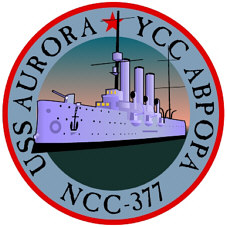
In most respects, the Moskva class continued design and engineering trends established in the Comet and Daedalus classes introduced at the end of the Romulan War. As in these classes, ship functions were clearly divided between a command/crew hull and an engineering/propulsion hull. The bridge was returned to its customary position atop the command hull and the shuttlecraft bay was again placed in the secondary hull. The fusion reactor was centered along the longitudinal axis of the ship, and impulse thrust ports exited immediately in front of the warp bustle detachment seam.
Weaponry was the then-standard mix of fusion-warhead missiles and lasers. New to this class was an early type of ultraphased pulse laser cannon, two of which were mounted in the chin of the primary hull. Although the on-target energy output of this new weapon approached that of early phasers, its power requirement was higher and its range was substantially less. However, subsequent refinements lead to steady improvement and, ultimately, to the development of true phasers in 2202. Although Moskva -class ships were the first to be fitted with phasers in 2204, lasers were still carried by the Moskva class and later classes until the 2220s. Finally, warp capability was supplied by the long-awaited Hiryu mark III drive units.
The first ship of the new class, USS Moskva (NCC-374), entered service with Starfleet in April 2179. An additional 30 ships (NCC-375 to NCC-404) joined the fleet through 2183. Moskva -class ships gained immediate popularity with officers and crews. First, total laser firepower was increased some 75% over that in the preceding Wasp class. Second, because the ship's mass was more equally distributed along the longitudinal axis than in the Wasp class, Moskva was significantly more maneuverable at both sublight and warp speeds. Finally, the more warp-dynamic design allowed greater cruising and maximum speeds.
The Moskva class had an outstanding safety record. No ships were lost because of mechanical failures. However, an incident occurred aboard USS Johannesburg in 2186 when a faulty nacelle flow monitor falsely indicated a runaway positive feedback power loop within the plasma flow governor. Believing that a catastrophic warp core explosion was imminent, Chief Engineer Roberta Bocharnikov ordered the warp nacelles and warp bustle to be separated. Although unnecessary, these maneuvers were successful in causing the separated warp core to initiate its automatic shut-down routine. The warp core, nacelles, and the rest of the ship were towed to Starbase 13, where they were successfully re-mated. Despite her supreme embarrassment, Bocharnikov oversaw the reassembly and relaunching of Johannesburg and retained her position as chief engineer.
Although most ships of the Moskva class had left front-line service by 2215, some continued to serve as auxiliaries and training vessels until the 2240s. After retirement from active duty, Moskva -class ships were used as testbeds for many emerging technologies owing to the similarities of their layouts to those of succeeding classes. USS Moskva was the site of the first successful ship-to-surface transport of a Human being in 2206, and USS Gato was the first ship to fire photon torpedoes in 2214. In addition, Taurus -class tugs, which entered service in 2182, and Sanford -class repair tenders, which entered service in 2185, were derived from the Moskva class and used the same primary hull and warp drive assembly.
The Moskva -class cruiser USS Aurora (NCC-377), a participant of the Battle of Eohippus IV, is on display at the Starfleet Museum.
Standard displacement: 67,750 t
Crew complement: 160 (27 officers + 133 crew) Weapons: 8 Type VI laser turrets (8 × 1 mounts), 2 Type VII laser cannons (fixed mounts), 2 missile launchers with 36 Spartak missiles Embarked craft: 4 medium cargo/personnel shuttlecraft, 2 light personnel shuttlecraft, 5 fighter/scouts Warp drive: SSWR-V-A spherical cavity M/AM reactor with 2 Hiryu III nacelles Velocity: wf 4.0, cruise; wf 5.0, supercruise; wf 5.2, maximum Units commissioned: 31

Rosatom Starts Production of Rare-Earth Magnets for Wind Power Generation
TVEL Fuel Company of Rosatom has started gradual localization of rare-earth magnets manufacturing for wind power plants generators. The first sets of magnets have been manufactured and shipped to the customer.
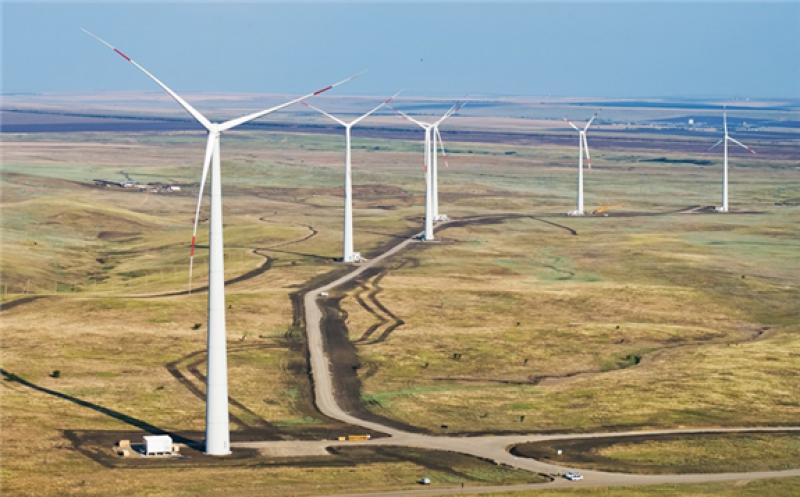
In total, the contract between Elemash Magnit LLC (an enterprise of TVEL Fuel Company of Rosatom in Elektrostal, Moscow region) and Red Wind B.V. (a joint venture of NovaWind JSC and the Dutch company Lagerwey) foresees manufacturing and supply over 200 sets of magnets. One set is designed to produce one power generator.
“The project includes gradual localization of magnets manufacturing in Russia, decreasing dependence on imports. We consider production of magnets as a promising sector for TVEL’s metallurgical business development. In this regard, our company does have the relevant research and technological expertise for creation of Russia’s first large-scale full cycle production of permanent rare-earth magnets,” commented Natalia Nikipelova, President of TVEL JSC.
“NovaWind, as the nuclear industry integrator for wind power projects, not only made-up an efficient supply chain, but also contributed to the development of inter-divisional cooperation and new expertise of Rosatom enterprises. TVEL has mastered a unique technology for the production of magnets for wind turbine generators. These technologies will be undoubtedly in demand in other areas as well,” noted Alexander Korchagin, Director General of NovaWind JSC.
For reference:
TVEL Fuel Company of Rosatom incorporates enterprises for the fabrication of nuclear fuel, conversion and enrichment of uranium, production of gas centrifuges, as well as research and design organizations. It is the only supplier of nuclear fuel for Russian nuclear power plants. TVEL Fuel Company of Rosatom provides nuclear fuel for 73 power reactors in 13 countries worldwide, research reactors in eight countries, as well as transport reactors of the Russian nuclear fleet. Every sixth power reactor in the world operates on fuel manufactured by TVEL. www.tvel.ru
NovaWind JSC is a division of Rosatom; its primary objective is to consolidate the State Corporation's efforts in advanced segments and technological platforms of the electric power sector. The company was founded in 2017. NovaWind consolidates all of the Rosatom’s wind energy assets – from design and construction to power engineering and operation of wind farms.
Overall, by 2023, enterprises operating under the management of NovaWind JSC, will install 1 GW of wind farms. http://novawind.ru
Elemash Magnit LLC is a subsidiary of Kovrov Mechanical Plant (an enterprise of the TVEL Fuel Company of Rosatom) and its main supplier of magnets for production of gas centrifuges. The company also produces magnets for other industries, in particular, for the automotive
industry. The production facilities of Elemash Magnit LLC are located in the city of Elektrostal, Moscow Region, at the site of Elemash Machine-Building Plant (a nuclear fuel fabrication facility of TVEL Fuel Company).
Rosatom is a global actor on the world’s nuclear technology market. Its leading edge stems from a number of competitive strengths, one of which is assets and competences at hand in all nuclear segments. Rosatom incorporates companies from all stages of the technological chain, such as uranium mining and enrichment, nuclear fuel fabrication, equipment manufacture and engineering, operation of nuclear power plants, and management of spent nuclear fuel and nuclear waste. Nowadays, Rosatom brings together about 350 enterprises and organizations with the workforce above 250 K. https://rosatom.ru/en/
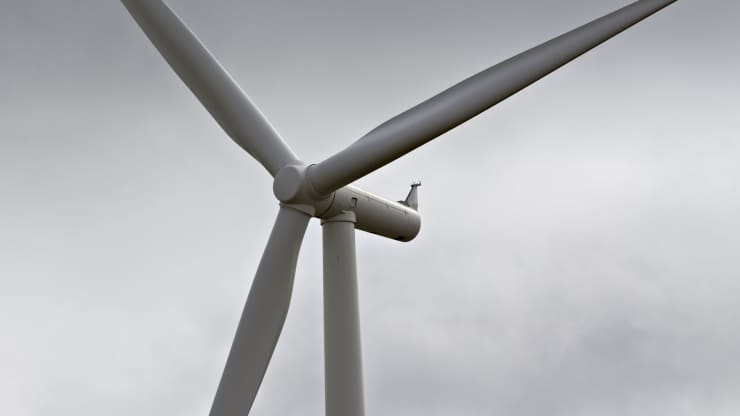
U.S. Added Less New Wind Power in 2021 Than the Previous Year — Here’s Why
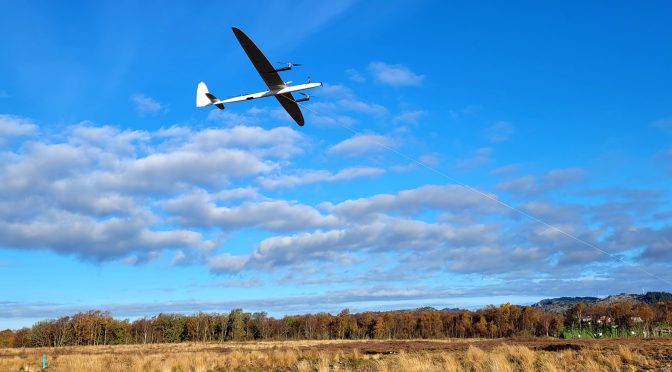
Airborne Wind Energy Developer Kitemill Prepares for 24HOUR Operation and Multi-Device Demonstrations
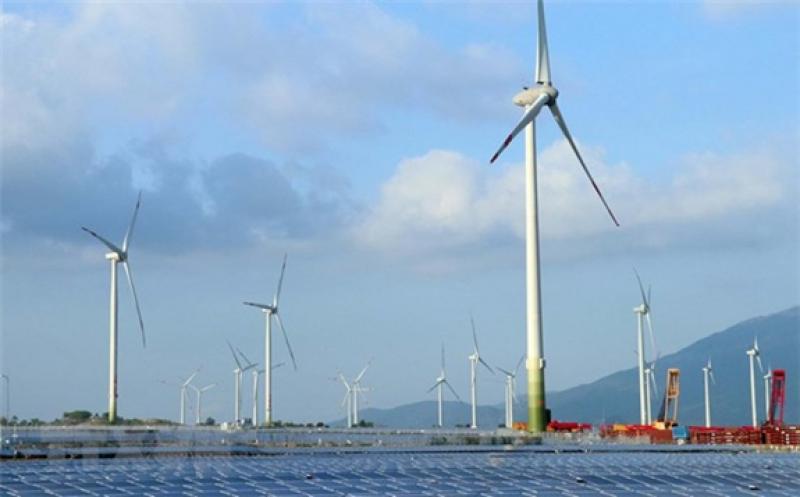
Vietnam's Largest Wind Power Plant Starts Operational
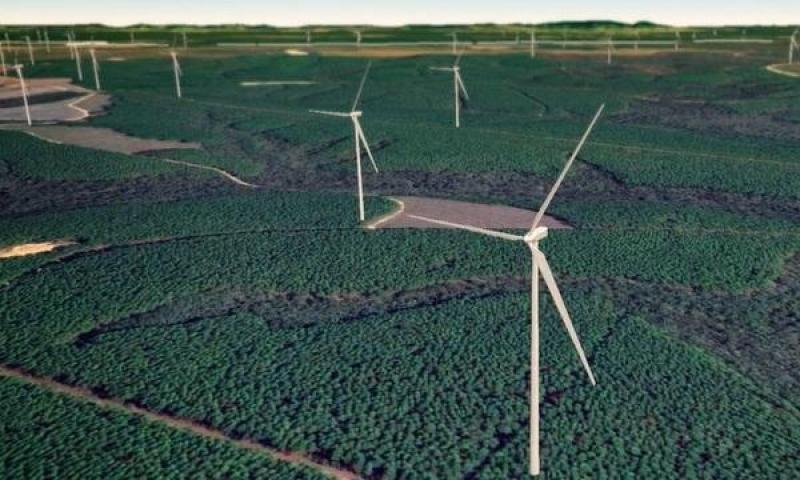
Australia Adopts Policy for Development of 1.2GW Wind Project
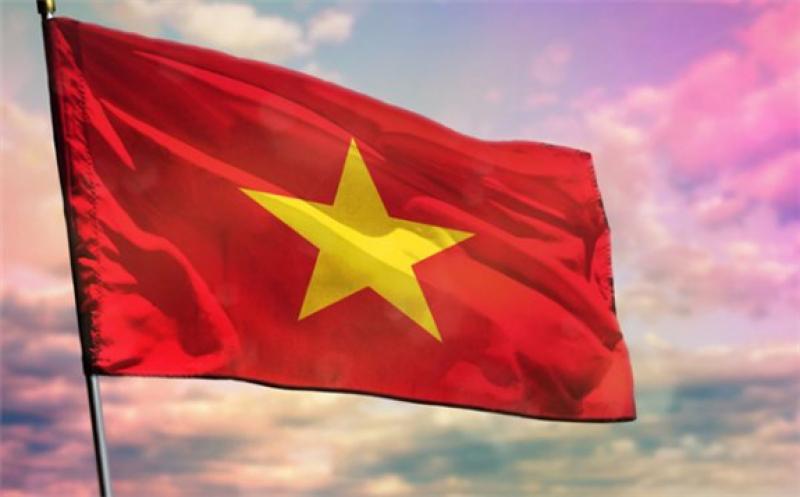
Vietnam Plans to Double Wind Power Generation by 2030
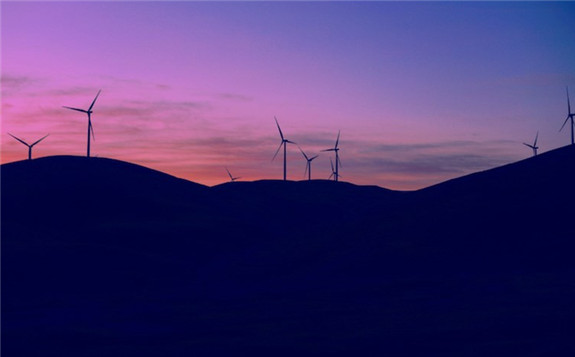
Developer Lines up Support for Vietnam Wind Build

IMAGES
VIDEO
COMMENTS
This classic trek takes place in the Bagmati Zone of Nepal and allows you to experience the immense beauty of the surroundings. Along your trek, you will get to witness 4 of the 6 highest mountain peaks in the world — Cho Oyu (8,201 m), Mt. Makalu (8,470 m), Mt. Lhotse (8,516 m), and Mt. Everest (8,848 m). Everest Base Camp is a teahouse trek ...
The Everest Base Camp trek combines the convenience of well-maintained paths with the raw beauty of the Himalayas. The Everest region, located in the lap of the mighty Himalayas, is recognized for its beautiful scenery and welcoming Sherpa people. This trek introduces you to the world's highest peak as well as the culture and traditions of Nepal.
Intrepid has 15-day guided treks to Everest Base Camp in Nepal from £1,043 per person. Flights to Kathmandu not included. The Adventure People has 12-day treks along the Jhomolhari trek from £ ...
The ultimate Himalayan trek and adventure of a lifetime. Stand face to face with Mount Everest and trek along side 4 of the world's tallest peaks. Enjoy the welcoming culture of the Sherpa. HimalayanWonders.com brings you the best tours in the Himalayas. With respect and trust earned over the years, our tours give you value for money and local ...
The journey to Everest Base Camp Trek in Nepal tops the dream list for countless trekkers worldwide, and for good reason! It is a trail that showcases the greatness of the Khumbu Valley, offering breathtaking views of some of the world's highest peaks. The journey begins with an exciting flight to Lukla, at an elevation of about 2850 meters.
Top of many people's travel bucket lists, the trek to Everest Base Camp is often the first thing people think about when they start dreaming of a trip to Nepal.. The walk takes trekkers past Sherpa villages and Tibetan-style monasteries, right up into the heart of the high Himalaya, into a breathtaking world (literally) of iconic glaciers, lakes and the tallest peaks on earth.
Discover the beauty of Nepal on a trek to Everest Base Camp. Join us for an expert-planned itinerary, unforgettable adventure to the base of the tallest mountain. 1.820.3345.33 Login. ... Embark on an unforgettable adventure with the Everest Base Camp Trek, a 16-day Himalayan journey that offers breathtaking mountain views and insights into ...
USD 820. Ghorepani Poon Hill Trek - 9 Days. Ghorepani Poonhill Trek is the most popular short trek in Nepal for its magnificent Annapurna Panorama and sunrise view from Poonhill. USD 2,850. Everest Base Camp with Island Peak - 19 Days. Trek to the world's famous Everest Base Camp and climb to the summit of Island peak.
DAY 10. Rest day in Louche, morning hike. DAY 11. Trek to Everest Base Camp, overnight at AC Everest Base Camp 5,300m/17,400ft. DAY 12. Base Camp to Gorak Shep Camp in the afternoon 5,165m/16,950ft. DAY 13. Gorak Shep Camp to Kala Patar 5,550m/18,209ft, descend to Pheriche or Dingboche. DAY 14.
Everest Base Camp is a world-renowned trekking destination located in the Khumbu region of Nepal. Situated at an altitude of 5,364 meters (17,598 feet), the base camp provides stunning views of the world's highest peak, Mount Everest (8,848 meters / 29,029 feet). The journey to Everest Base Camp Trek typically takes around 12-14 days, and the ...
Overview. Everest Base Camp Trek is the exciting exploration to the highest peak in the world, Mt. Everest [8,848 meters/ 29,032 feet], is one of the most renowned trekking adventures in the world.. This enriching Everest base camp trekking experience outshines other high-altitude adventures thanks to its unparalleled natural beauty, iconic landmarks, rich Himalayan bio-diversity, culturally ...
As the name suggests, the ultimate destination of this trek is the Base of Everest. Mt.Everest, the tallest peak in the world is located in the Solukhumbu district of Nepal. When it comes to the location of the Himalayan region, Mount Everest and 20 other mountains are all located in the Mahalangur Himalayan Range.
Nepal EBC trek cost. The fetch of the Mount Everest base camp journey shifts based on one's inclinations and the term of the journey. A Google look will show the costs extending from $800 to $4,500. Our standard schedule at Expert the Himalaya offers the journey at $1,550.
Everest Himalaya Treks is a legally established and recognized business entity in Nepal operating Trekking, Climbing, Expeditions and different other activities RegNo: 169025/073/074 Vat No : 605945351
The Everest Base Camp trek is not only a physical journey but also a social one. Along the way, you'll encounter fellow trekkers from all over the world, united by a shared passion for adventure and the great outdoors.
Located in the Himalayas between Nepal and Tibet, Mount Everest stands as the highest Himalayan Mountain at 8,849 meters (29,032 feet) above sea level. Considered the highest point on Earth, nearly 800 climbers attempt to trek to its peak every year. University of Maryland School of Medicine's (UMSOM) ...
Everest Three Passes Trek Overview. Everest Three Passes Trek presents an exceptional chance to witness gigantic Himalayas over 8,000 m. This includes the highest Mt. Everest, Cho Oyu, Lhotse, Makalu, and the Ngozumpa Glacier- the largest glacier in the Nepal Himalayas.
A British woman was gored by a Himalayan yak while on FaceTime to her family as she trekked up Mount Everest. Emma Keen, 42, was hiking to the Everest base camp with a group to raise funds for a ...
Mount Everest Base Camp Trek is an epic journey world highest mountain, takes through the landmarks of the Khumbu region, Majestically soaring mountains, colourful monasteries, friendly Sherpa and many more. ... The upper Mustang trek was well designed by our trek planer of bold Himalaya. A rewarding adventure through the wonderful area of the ...
In the case of the Everest Base Camp trek, the elevation gain is substantial. The trekking distance from Lukla to Everest Base Camp, which spans approximately 65 kilometers (40 miles), entails covering an elevation difference of more than 2500 meters (8,202 ft). Therefore, it is important to know the challenges and prepare accordingly.
In 1938, it was granted town status. [citation needed]Administrative and municipal status. Within the framework of administrative divisions, it is incorporated as Elektrostal City Under Oblast Jurisdiction—an administrative unit with the status equal to that of the districts. As a municipal division, Elektrostal City Under Oblast Jurisdiction is incorporated as Elektrostal Urban Okrug.
The first ship of the new class, USS Moskva (NCC-374), entered service with Starfleet in April 2179. An additional 30 ships (NCC-375 to NCC-404) joined the fleet through 2183. Moskva -class ships gained immediate popularity with officers and crews. First, total laser firepower was increased some 75% over that in the preceding Wasp class.
06 Nov 2020 by Rosatom. TVEL Fuel Company of Rosatom has started gradual localization of rare-earth magnets manufacturing for wind power plants generators. The first sets of magnets have been manufactured and shipped to the customer. In total, the contract between Elemash Magnit LLC (an enterprise of TVEL Fuel Company of Rosatom in Elektrostal ...
The 9th radio centre of Moscow was a high power shortwave and medium wave broadcasting facility at Elektrostal near Moscow.Its broadcasting frequency was 873 kHz with a transmission power of up to 1200 kilowatts. It was also used as radio jammer of "unwanted" stations.